Muhammad Ali—boxer, activist and provocateur—dead at 74

If Muhammad Ali was in his time the most famous person in the world, it was as much a tribute to his talent for provocation as to his boxing. He was a glorious athlete, of course, his white-tasseled feet a blur to match his whizzing fists. But his legacy as a global personality owes more to that glint in his eye, to his capacity for tomfoolery, to his playfulness. He was a born prankster, giddy in his eagerness to surprise, and the world won’t soon forget his insistence upon fun.
Fighting in the far corners of the earth, when that was still done, he was our most popular ambassador for a quarter of a century, advancing the American doctrine of self-satisfaction. His practiced malarkey—the doggerel of doom, the ritual belittlement—didn’t so much enliven his sport as it created a whole new form of entertainment. Really, there was boxing, and there was Ali—who died late Friday at the age of 74—and everybody knew the difference. In time his artful application of nonsense would be revealed as a facade, covering a deeper mission of empowerment. But watching him emerge in Zaire, Manila or even Cleveland was to witness a one-man comic relief effort. He was a traveling circus unto himself, the highest embodiment of self-confidence.
It must be said, first of all, that Ali was, just as he used to boast, the Greatest of All Time (which in later years became the typically playful acronym—GOAT—that branded his projects). He won the heavyweight title three times, in an era of ungodly competition. Neither Joe Louis nor Rocky Marciano faced so many dangerous fighters still in their primes. Ali’s trilogy with Joe Frazier provided enough drama in the first bout alone to be deemed mythic. Then there was the fight with George Foreman, when Ali, many thought, was being sent to his doom but instead invented an almost comical escape, the rope-a-dope. Not to mention bouts with Sonny Liston, Ken Norton, Earnie Shavers, killers all. In his heyday, at least, Ali fought not for survival but for his own entertainment. He presented his ring art as a kind of jazz, fully improvisational, performed to the whimsical score in his head.
Gallery: SI's 100 Greatest Ali Photos
SI's 100 Greatest Photos of Muhammad Ali
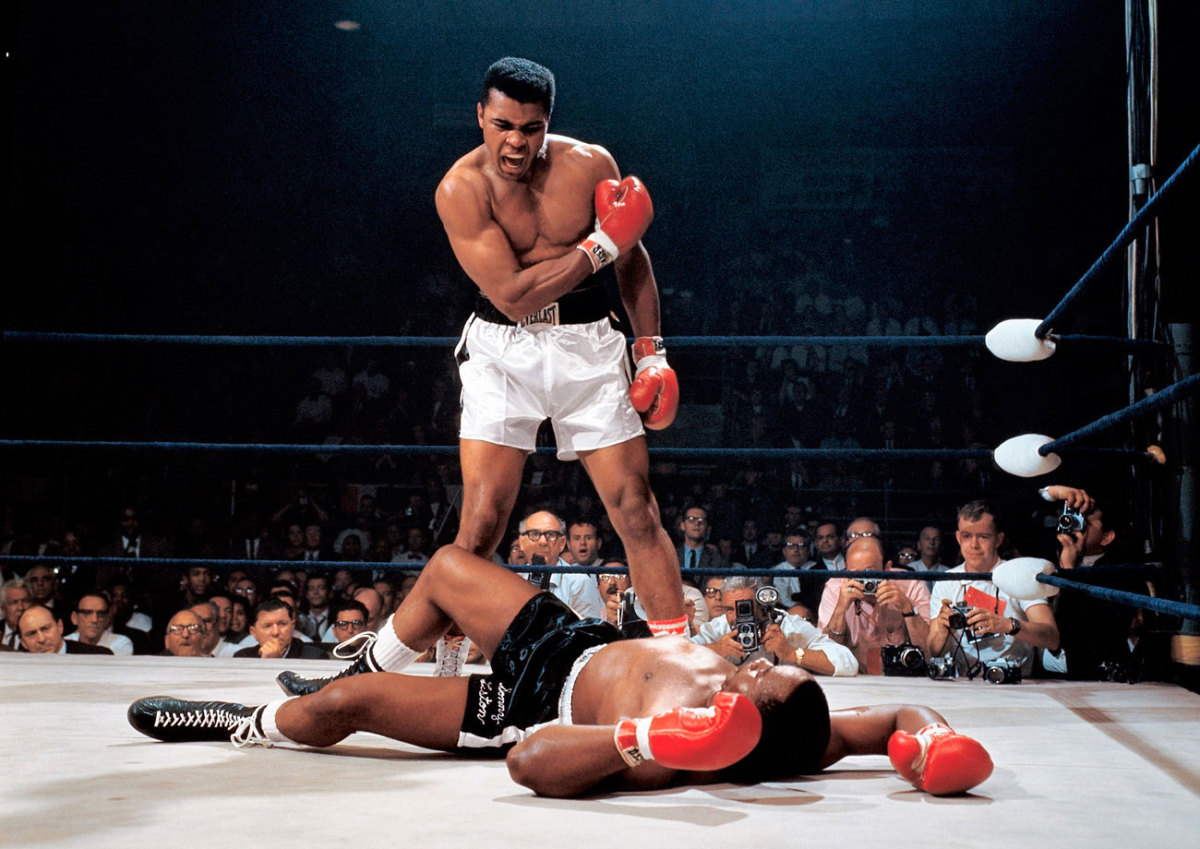
In one of the most iconic and controversial moments of his career, Ali stands over Sonny Liston and yells at him after knocking the former champ down in the first round of their 1965 rematch. Skeptics dubbed it "the Phantom Punch," but films show Ali's flashing right caught Liston flush, knocking him to the canvas. Refusing to go to a neutral corner, Ali stood over Liston and told him to "get up and fight, sucker."
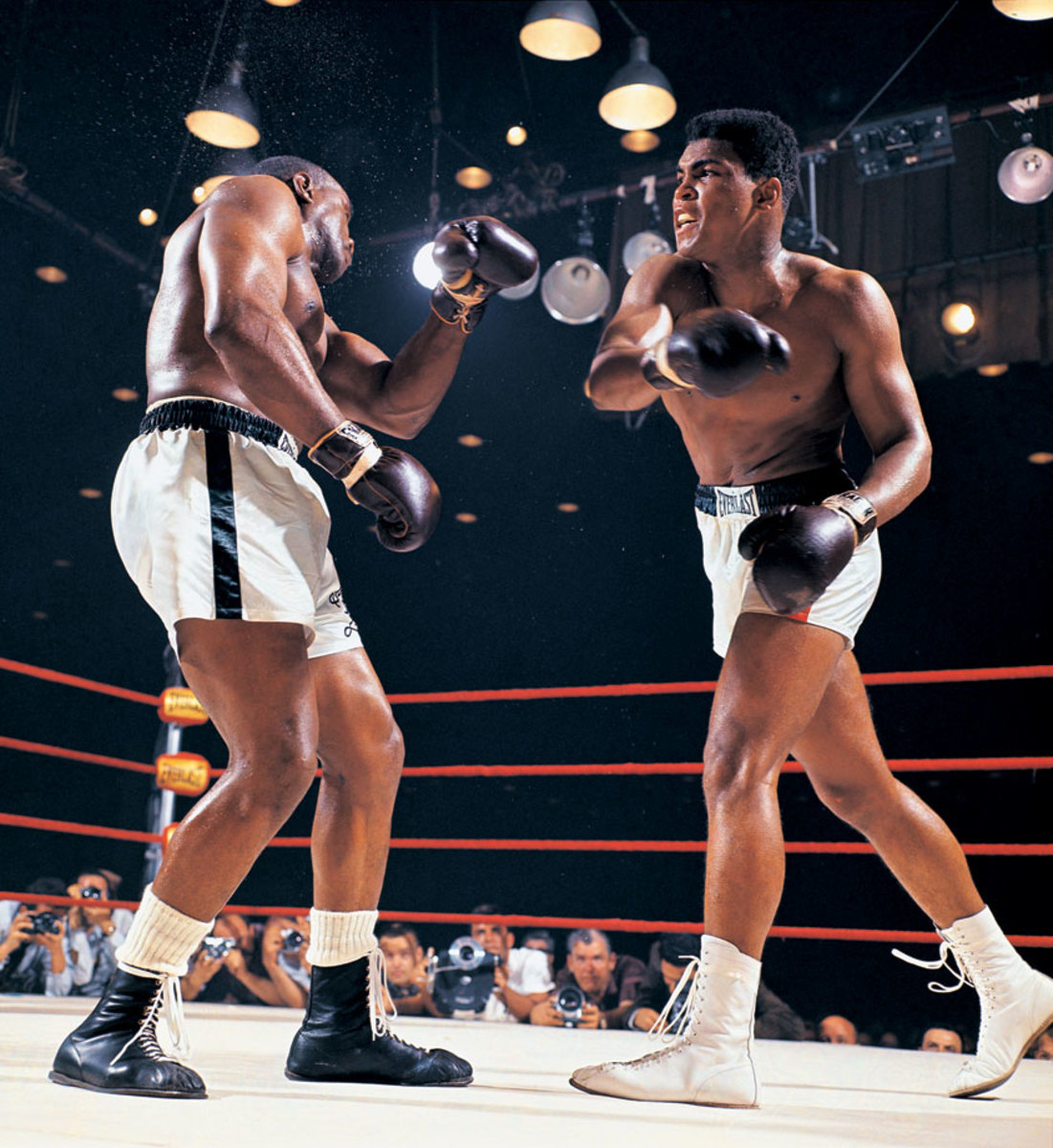
At 22-years-old, Cassius Clay (Muhammad Ali) battered the heavily favored Sonny Liston in a bout that shook the boxing world. The fight ignited the career of one of sports' most charismatic and controversial figures, whose bouts often became social and political events rather than simply sports contests. At the peak of his fame, Muhammad Ali was the best known athlete in the world. Liston, one of the most feared heavyweight champions in history, was a 1-8 favorite over the young challenger known as the Louisville Lip. But Clay, here stinging the champ with a right, used his dazzling speed and constant movement to dominate the action and pile up points.
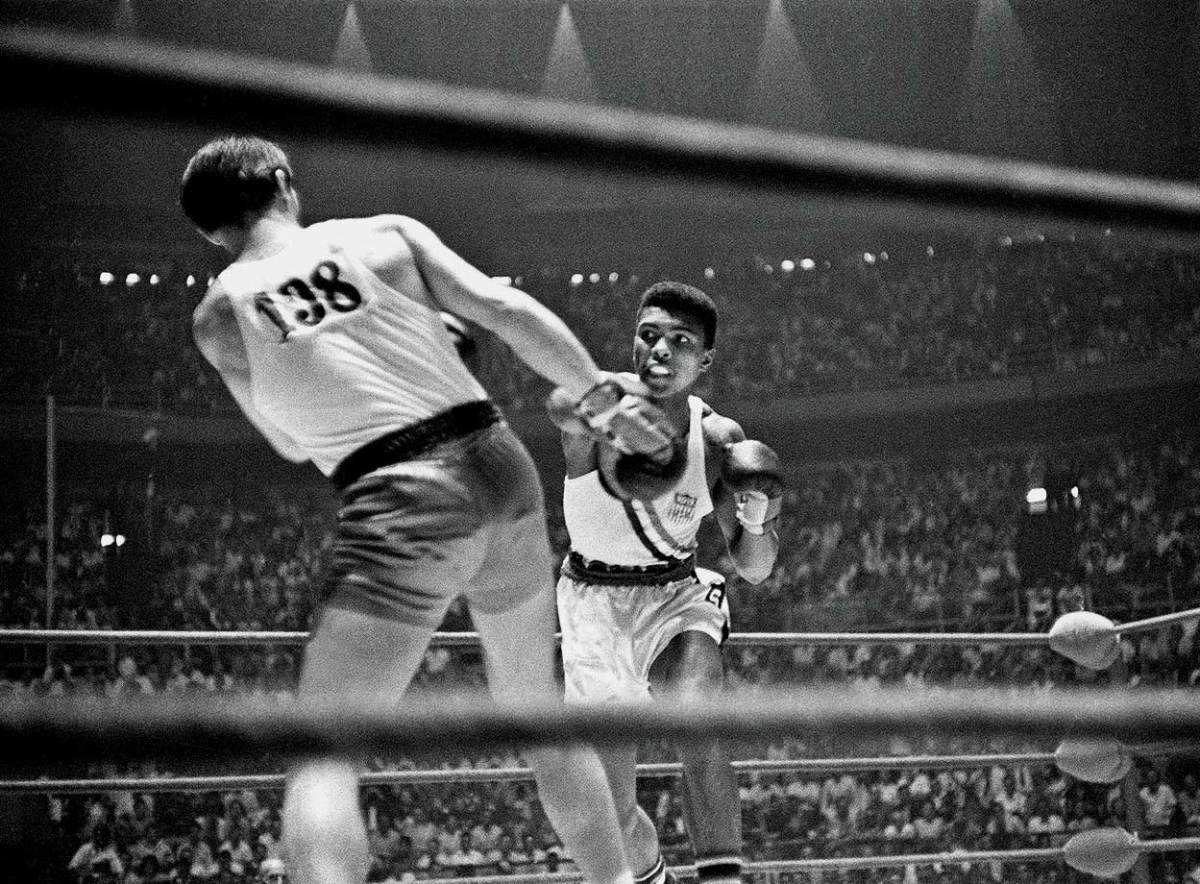
Cassius Clay punches Zbigniew Pietrzykowski of Poland during their gold medal bout at the 1960 Rome Olympics. Clay defeated Pietrzykowski 5-0 for the light heavyweight gold medal.
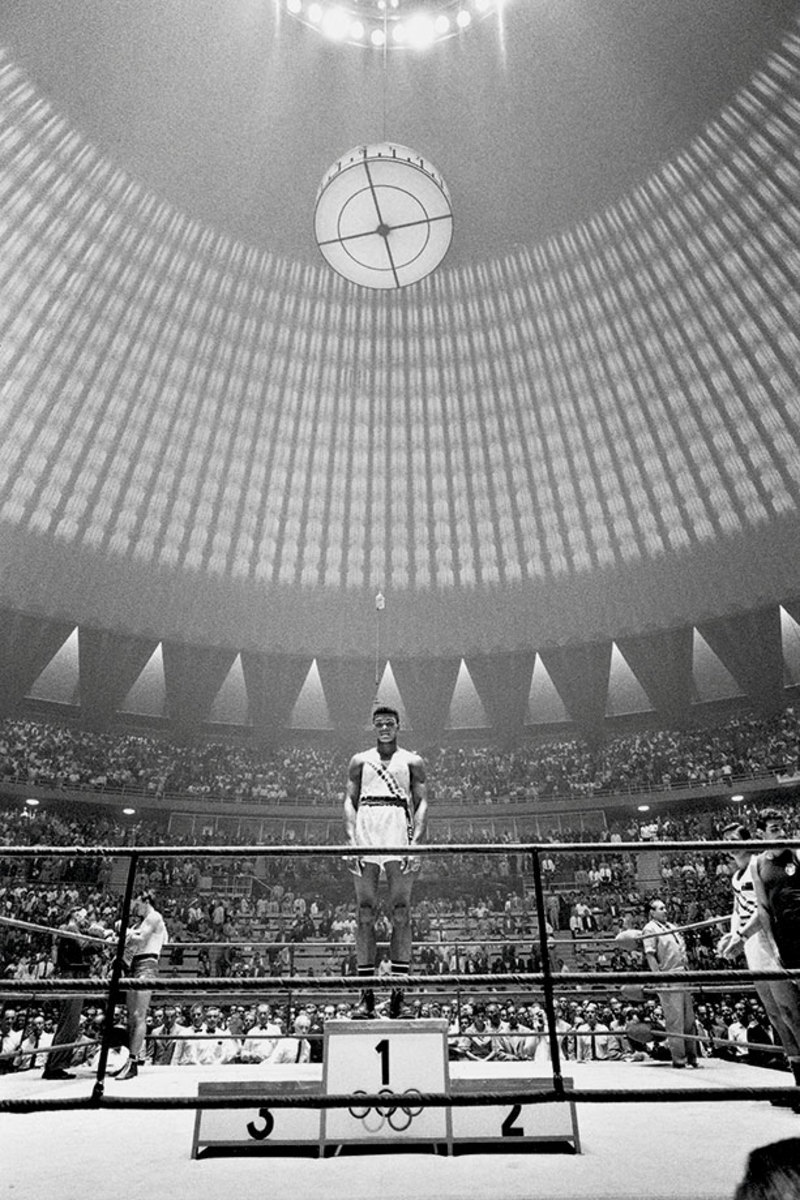
For the 18-year-old from Louisville, here atop the medal stand after his Olympic victory, all roads led from Rome. Clay finished his amateur career with a record of 100-5 and made his professional debut two months after the Games.
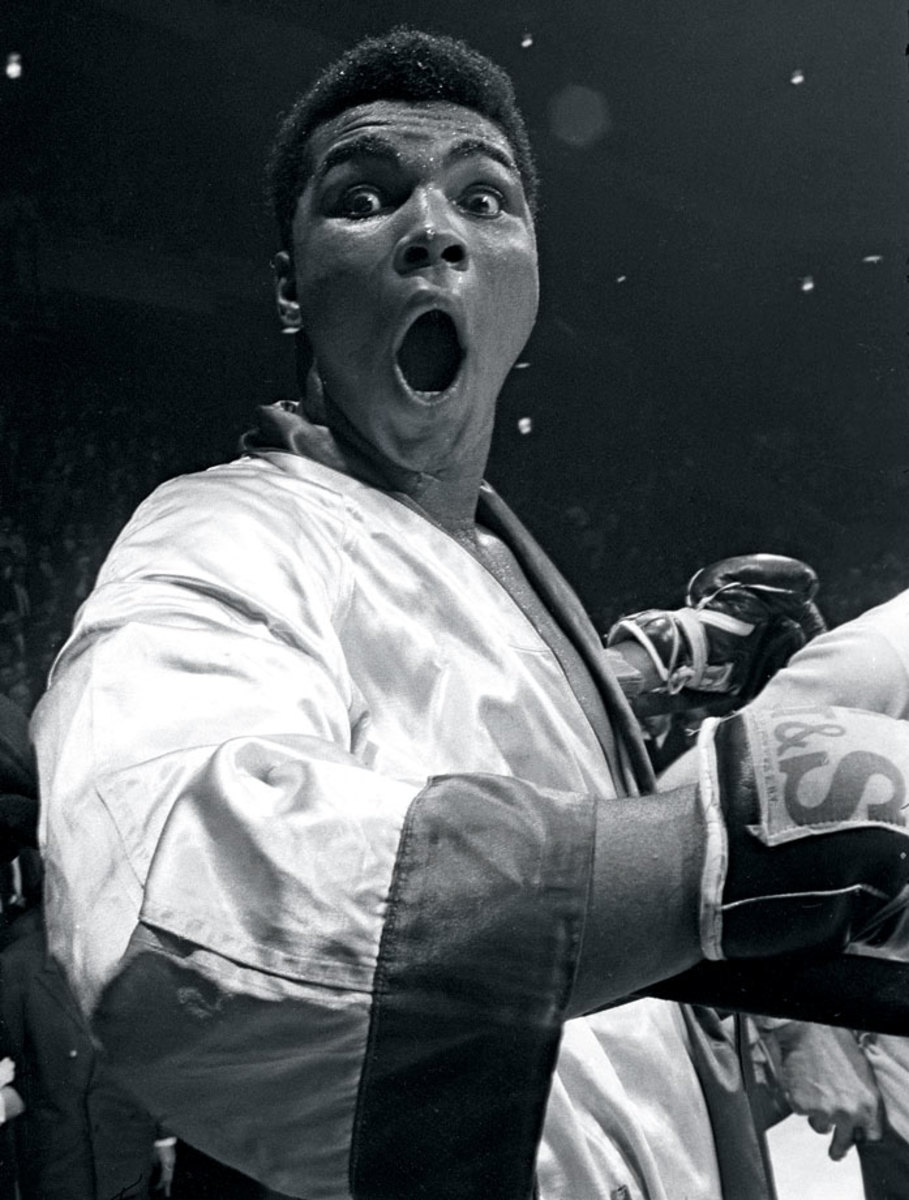
Undefeated in his first 17 pro fights, Clay mugged for the camera before the start of his 1963 bout against Doug Jones in Madison Square Garden.
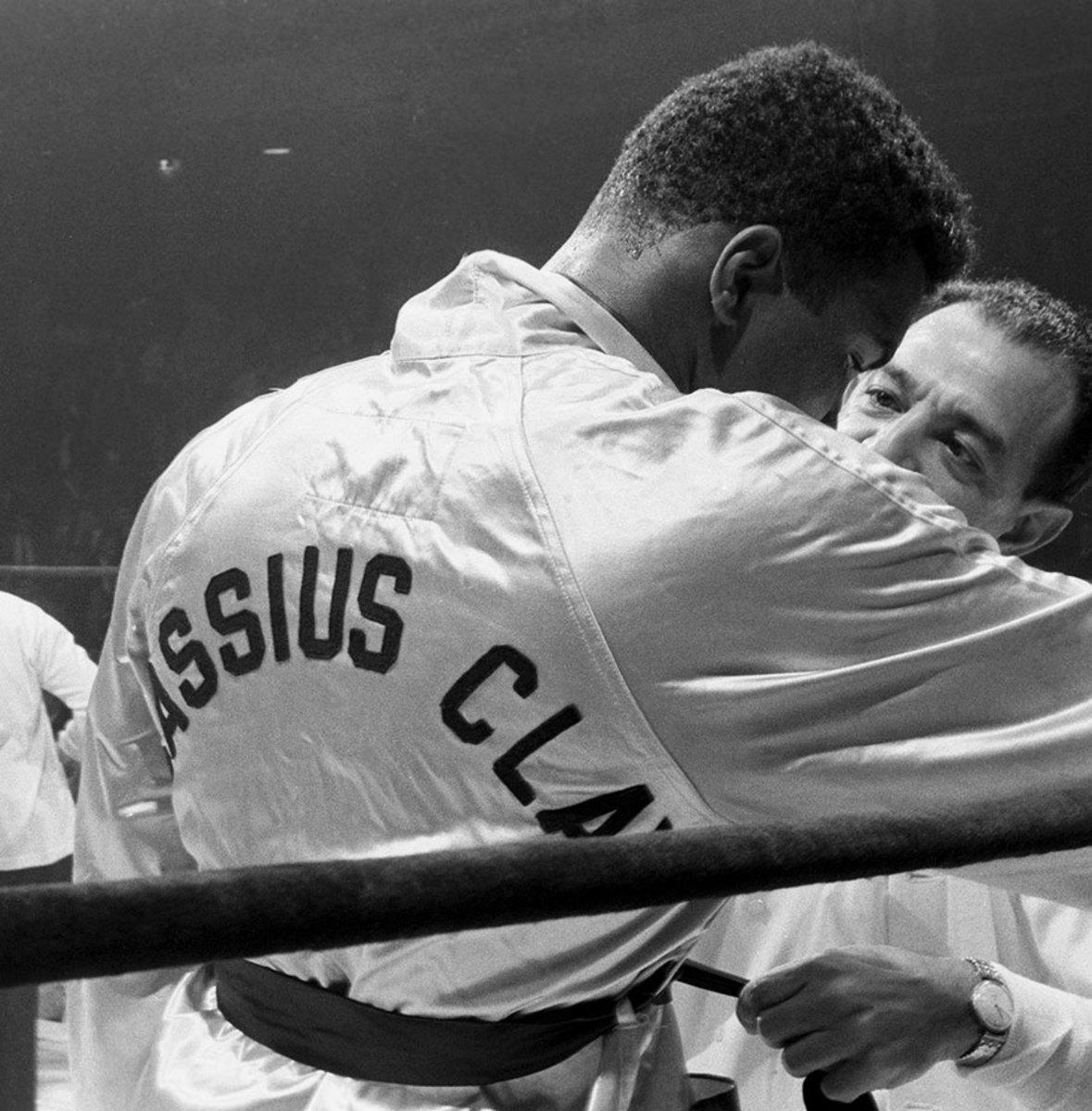
Trainer Angelo Dundee urged his young charge to get serious before the opening bell against Jones. Clay followed instructions and emerged from a tough fight with a unanimous decision victory. Three months later he would stop Henry Cooper and close out 1963 at 19-0.
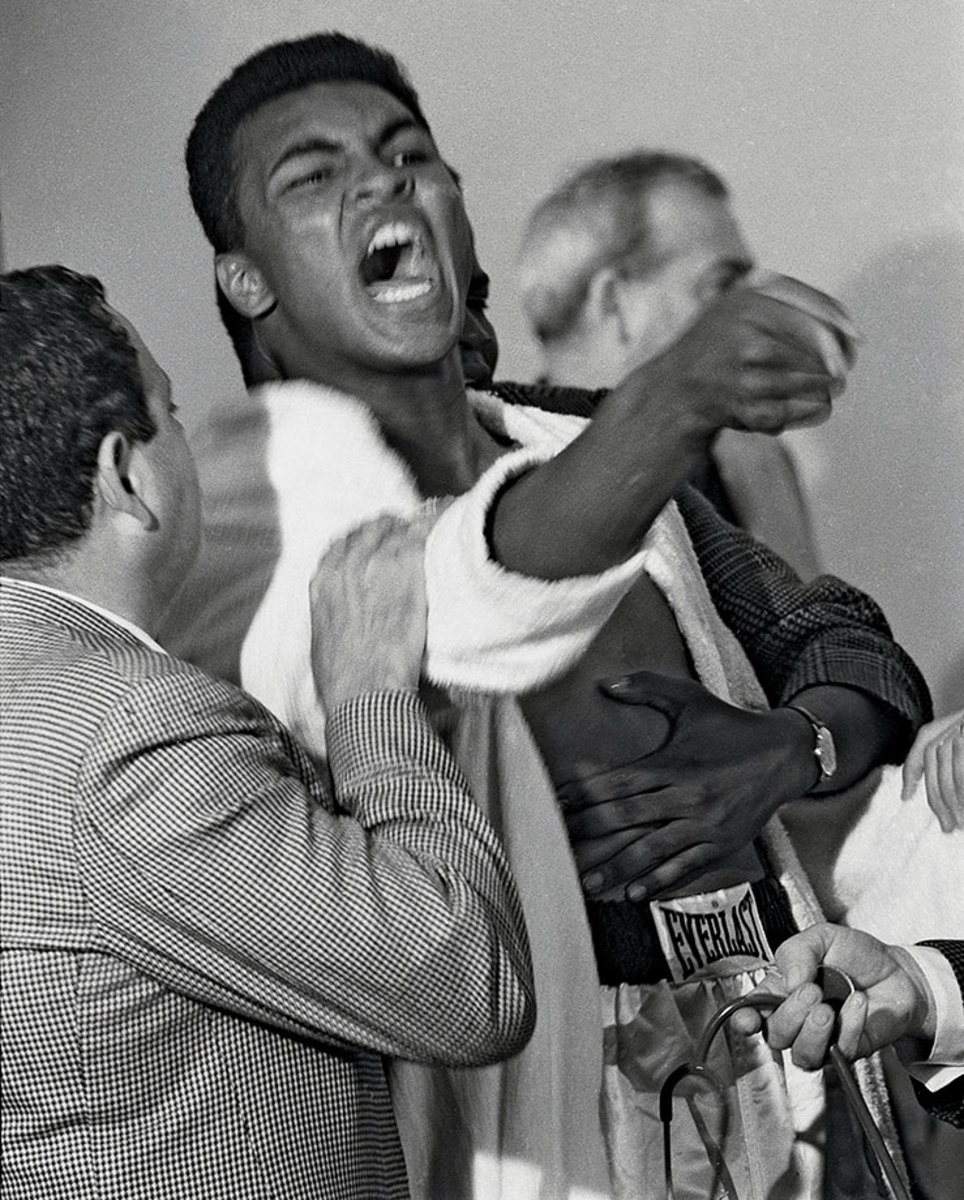
A seemingly hysterical Clay taunted Sonny Liston during the pre-fight physical for their 1964 bout. He had consistently baited the Big Bear during the lead-up to the fight, saying he was going to "use him as a bearskin rug ... after I whup him." The Miami Boxing Commission would fine Clay $2,500 for his outburst at the physical.
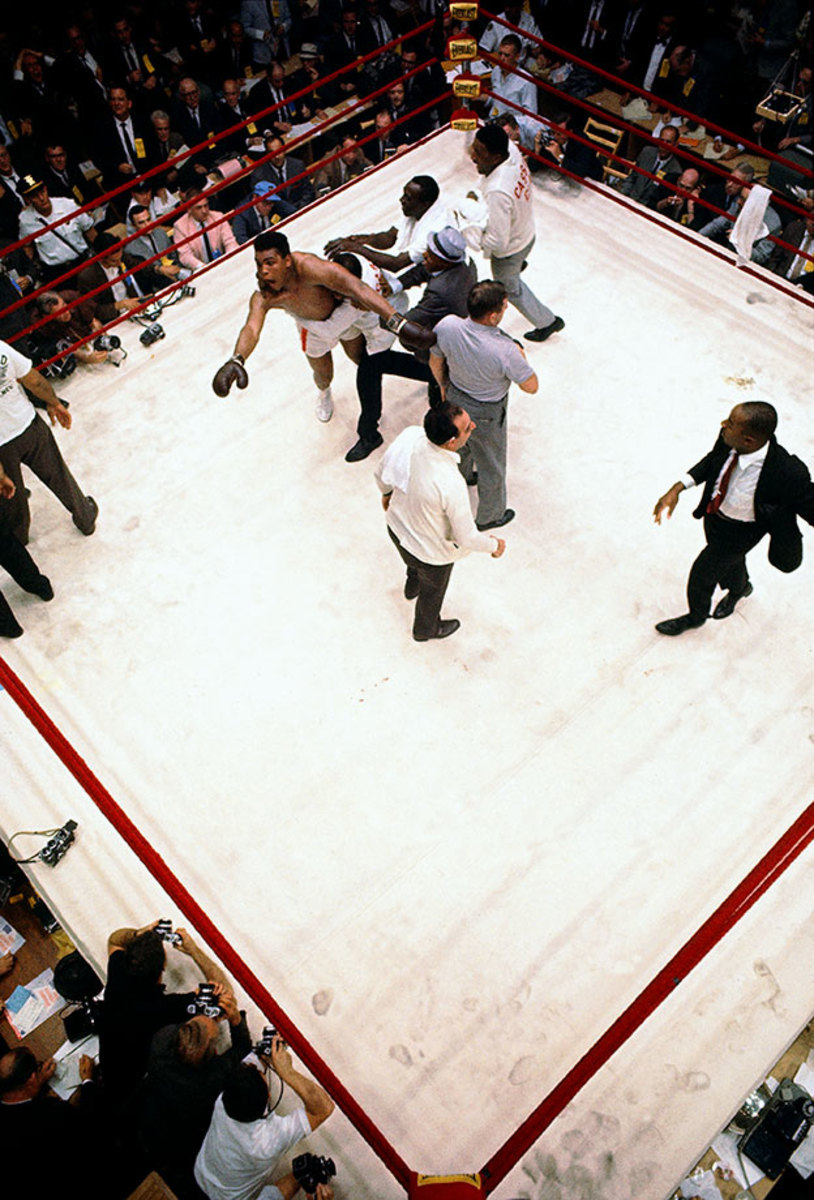
"I shook up the world!" an emotional Clay hollered to ringside reporters after his shocking defeat of Liston. And he did just that, claiming the heavyweight title at age 21 after a clearly beaten Liston, complaining of a shoulder injury, failed to answer the bell for the seventh round.
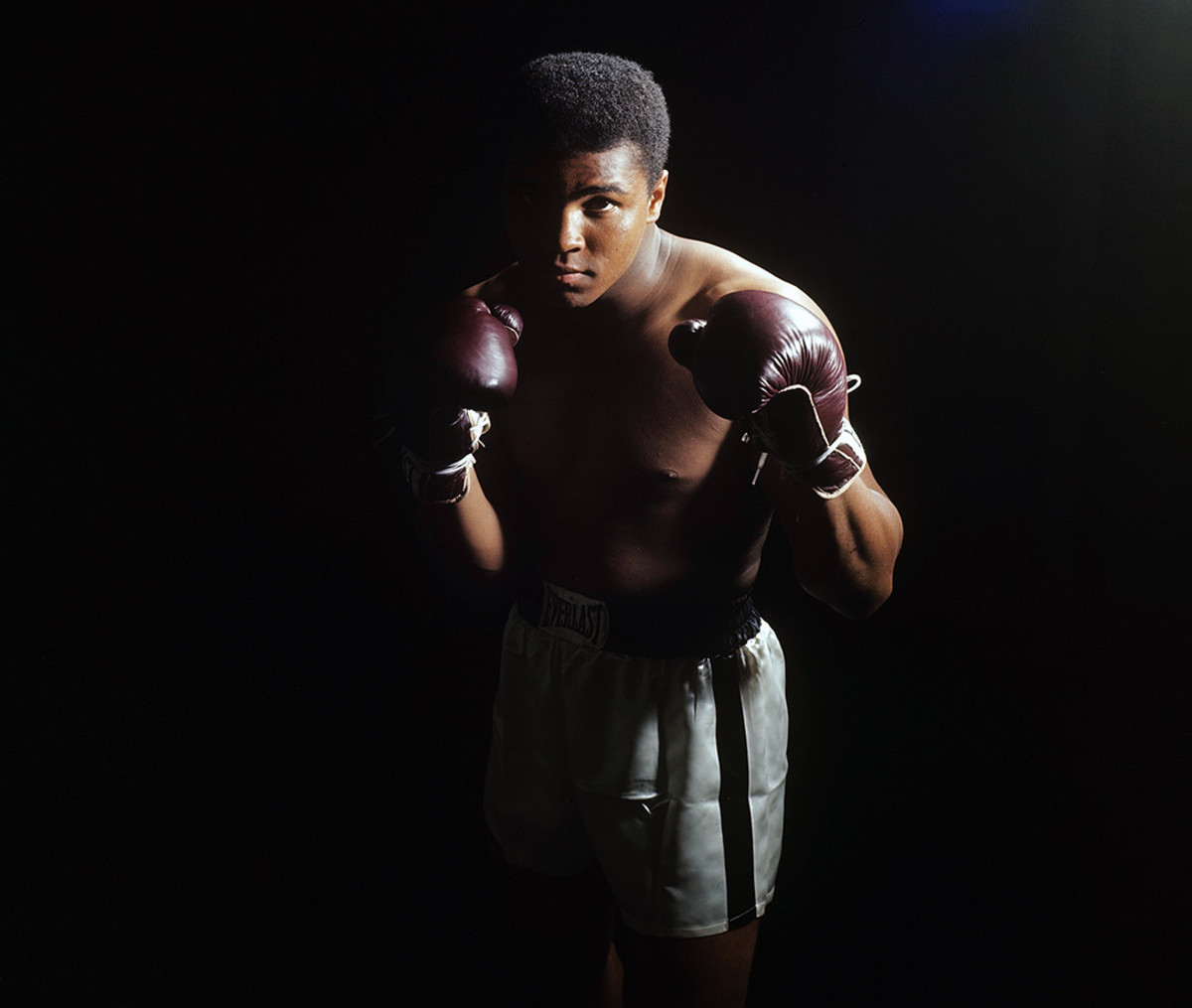
Draped in shadow, the young king — now known as Muhammad Ali — stared down the camera during a photo shoot in April 1965, one month before his rematch against Sonny Liston.
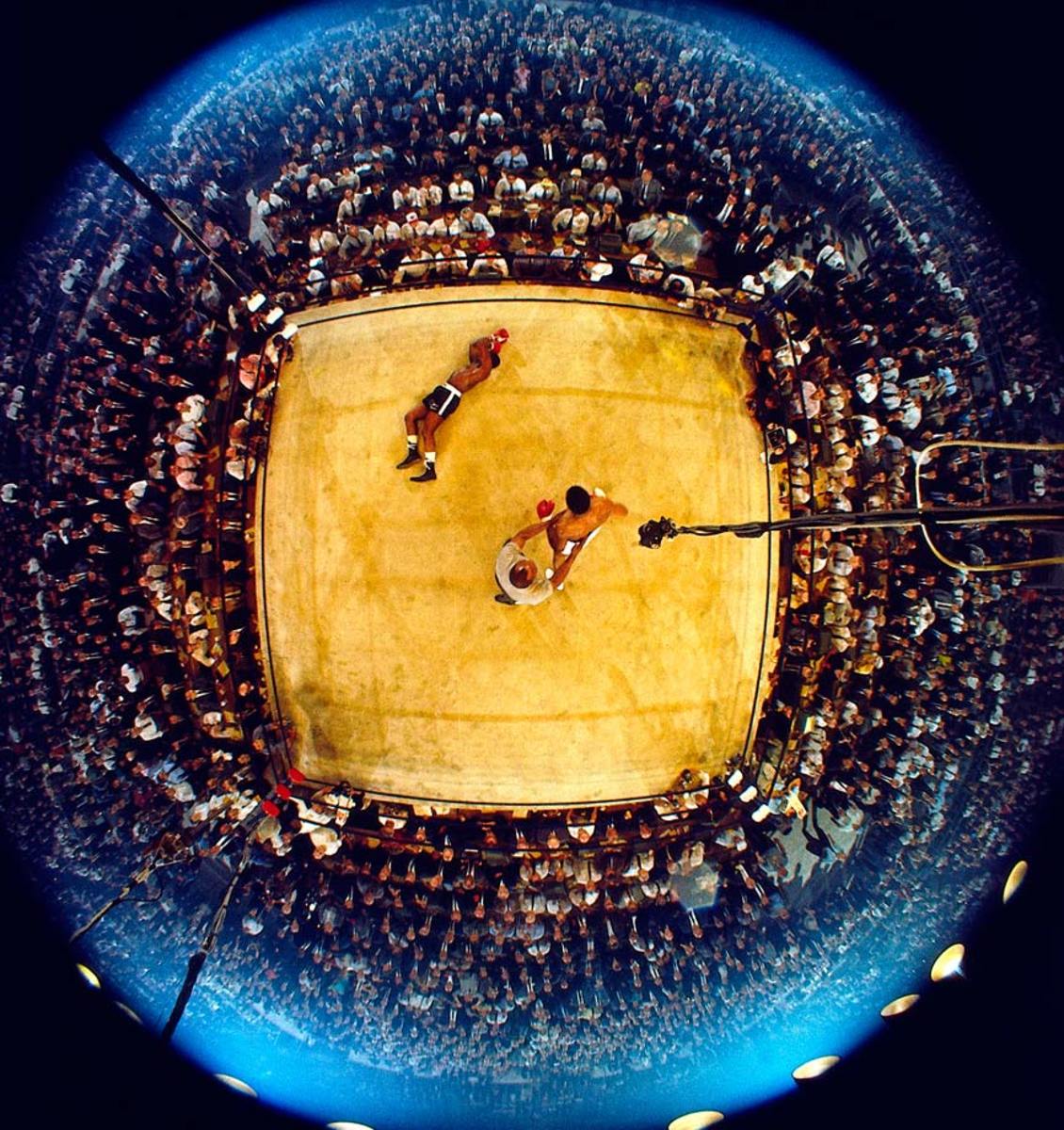
As Liston lingered on the canvas and the referee, former heavyweight champ Jersey Joe Walcott, tried to control Ali, the 2,434 spectators on hand in the Lewiston, Me., hockey arena — a record low for a heavyweight championship fight — tried to make sense of what all that had happened in less than two minutes after the opening bell.
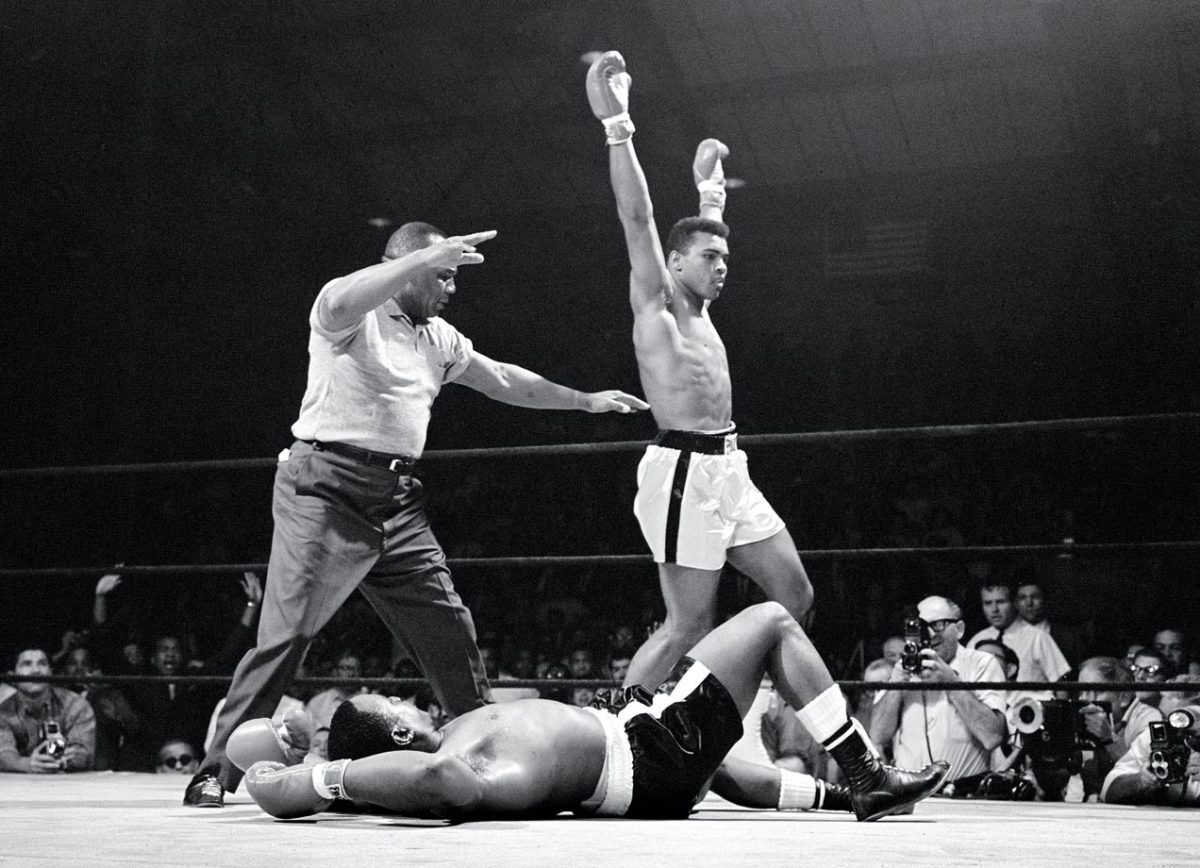
The celebration over Liston continued. In a chaotic ending, Ali was awarded a knockout when Nat Fleischer, publisher of The Ring, informed referee Jersey Joe Walcott from ringside that Liston had been on the canvas for longer than 10 seconds after Ali knocked him down. The bout remains one of the most controversial in boxing history, with many observers insisting that Liston took a dive.
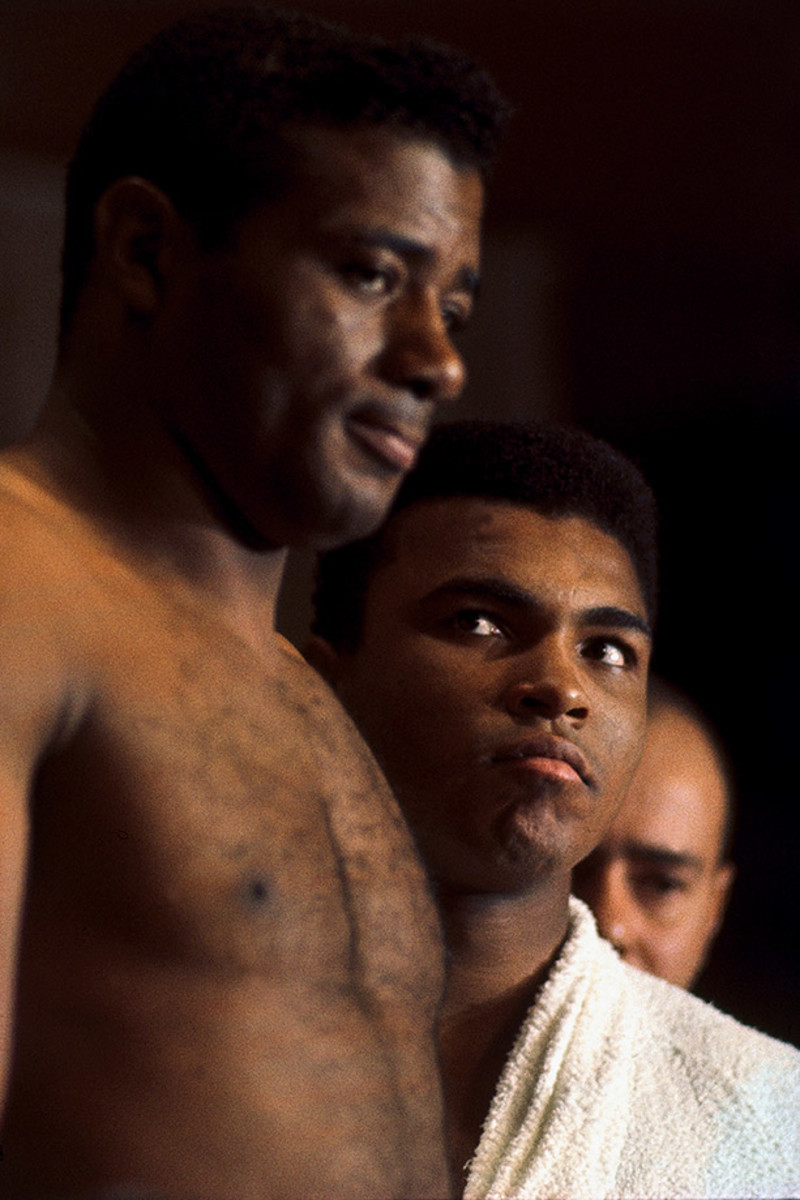
Ali's second title defense came in November 1965, against former two-time heavyweight champion Floyd Patterson. During the build-up to the bout, the normally soft-spoken Patterson earned the new champ's wrath by refusing to call Ali by his Muslim name. At the weigh-in, Ali's glare made it clear that he intended Patterson to pay for the disrespect.
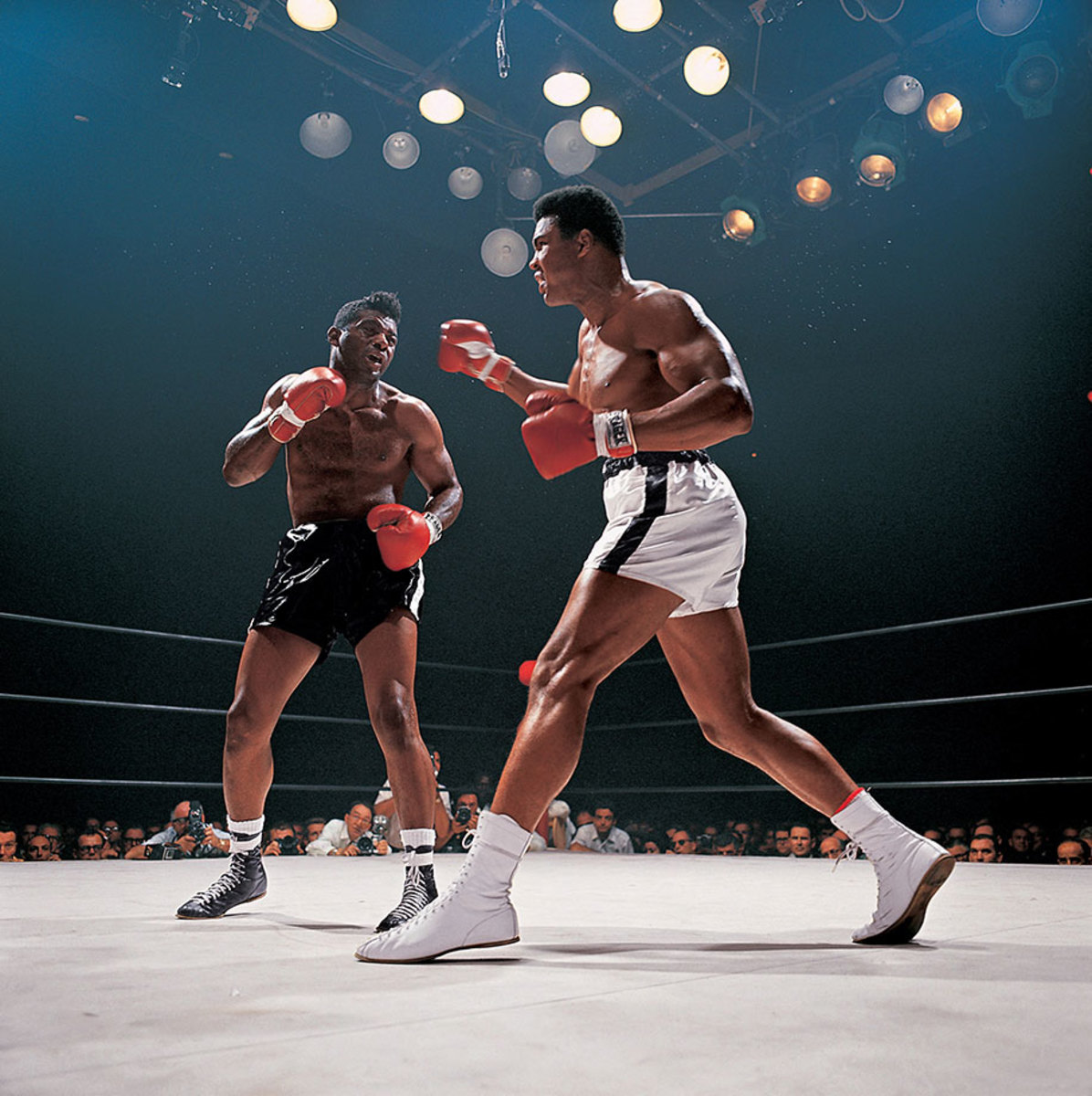
In cruelly efficient performance, Ali punished Patterson — who was hobbled by a painful back injury — seemingly toying with the former champ throughout the bout, hitting him at will and calling, "What's my name?" before finally winning on a 12th-round TKO.
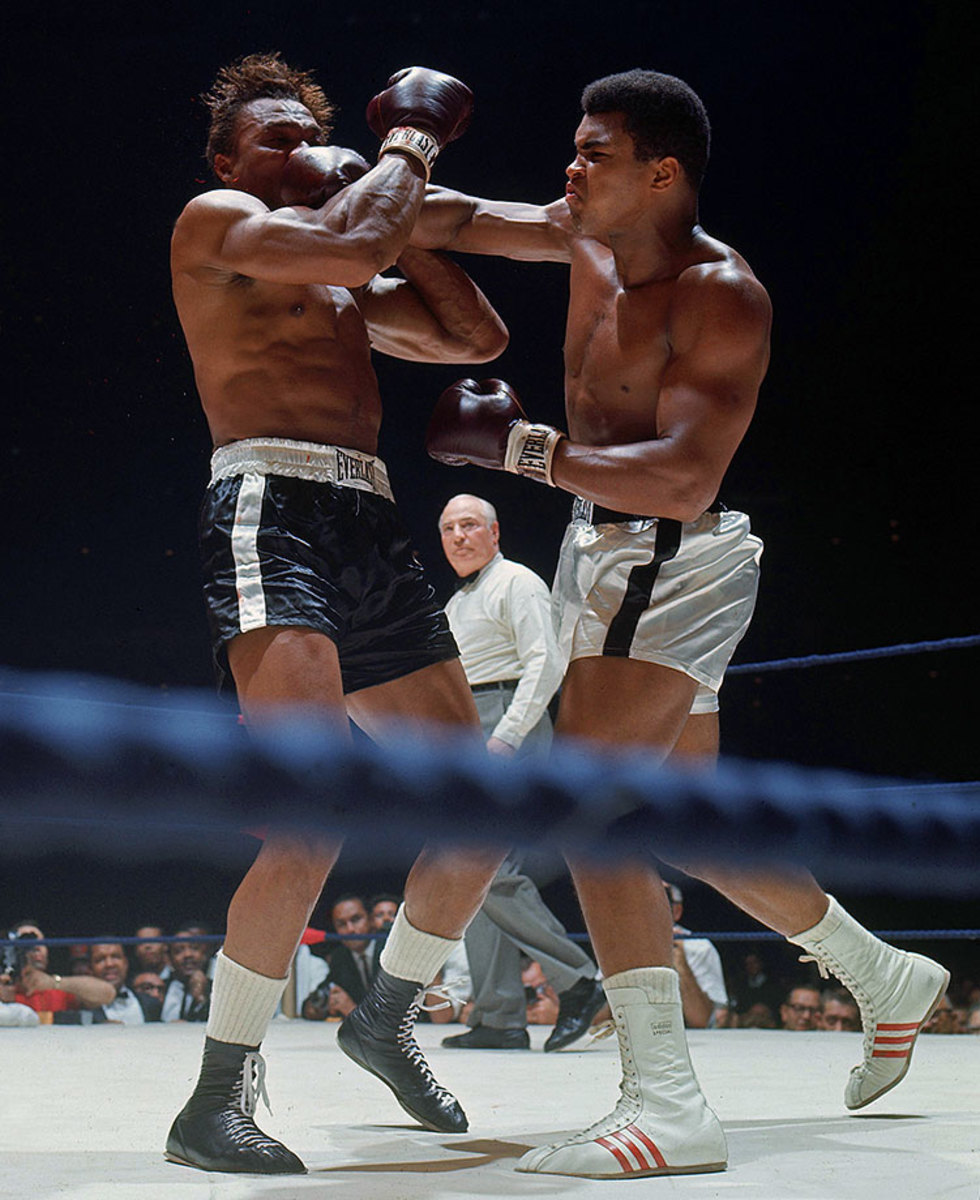
Capping off a five-fight campaign in 1966, Ali faced Cleveland Williams in the Houston Astrodome on Nov. 14. Known as the Big Cat, the heavily-muscled Williams was a power puncher who had racked up 51 knockouts in 71 fights. But he was also 33, barely recovered from a gunshot wound sustained the year before, and up against a young champion very much in his prime. Ali wasted little time in unleashing a withering attack.
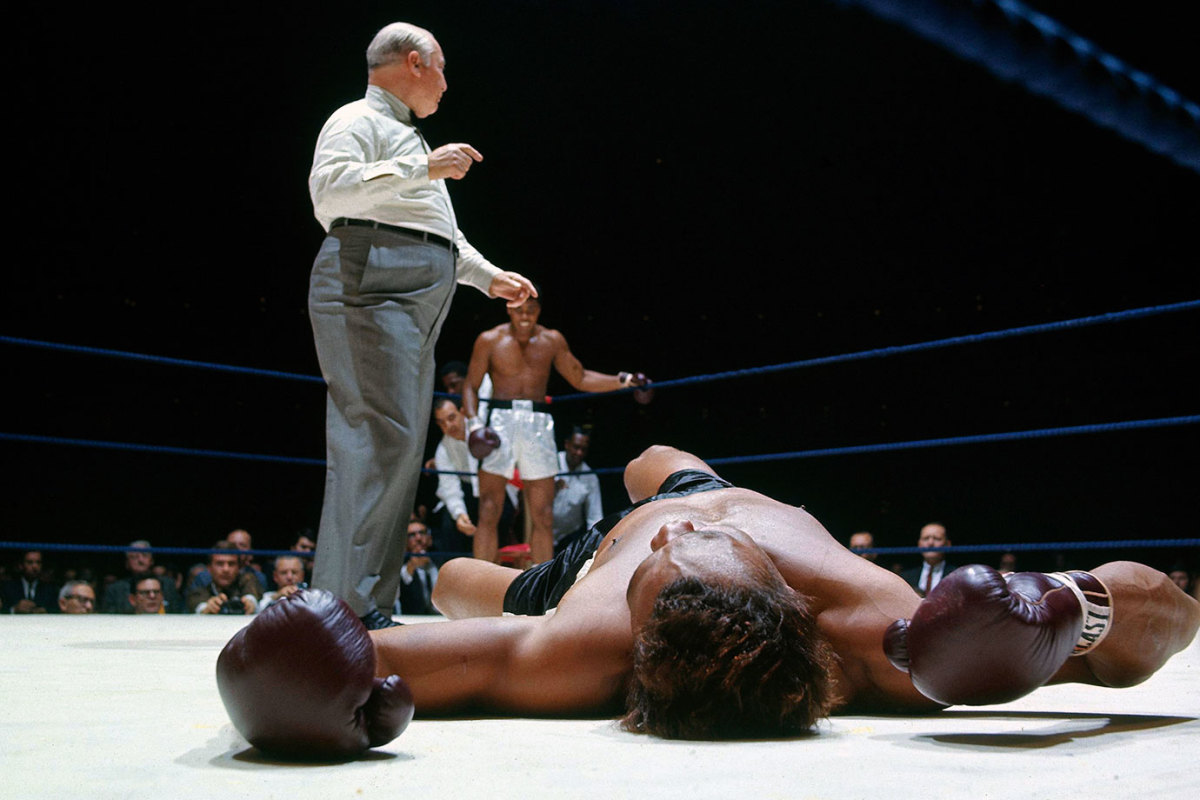
Float and sting: In a display of speed and combination punching unmatched in heavyweight history, Ali overwhelmed Williams from the start. The challenger, here down for the third time in round 2, would be saved by the bell before referee Harry Kessler could count him out, but it would only postpone the inevitable.
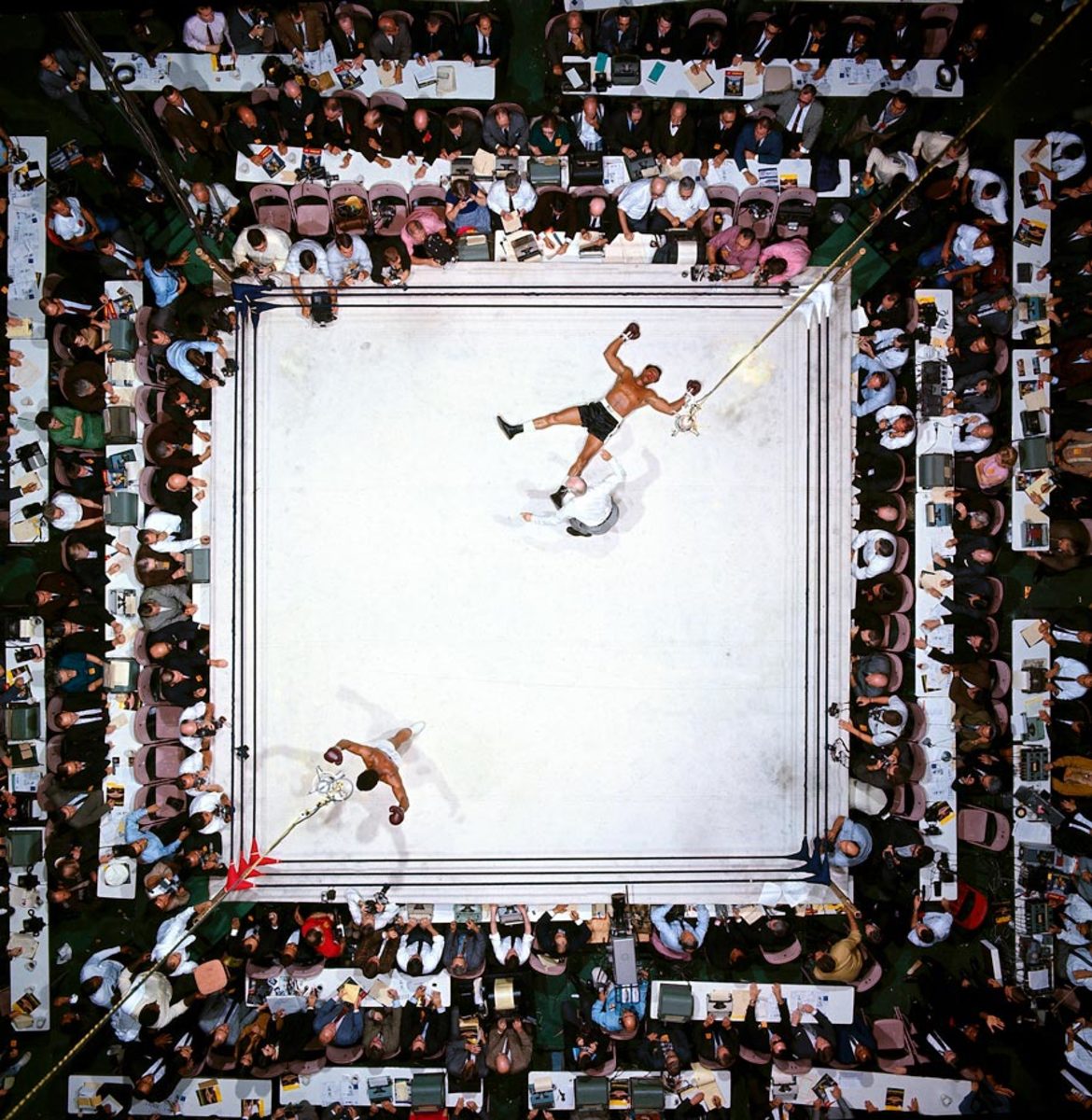
Ali dropped Williams again early in the third round, and Kessler waved the mismatch over at 1:08 of the third.
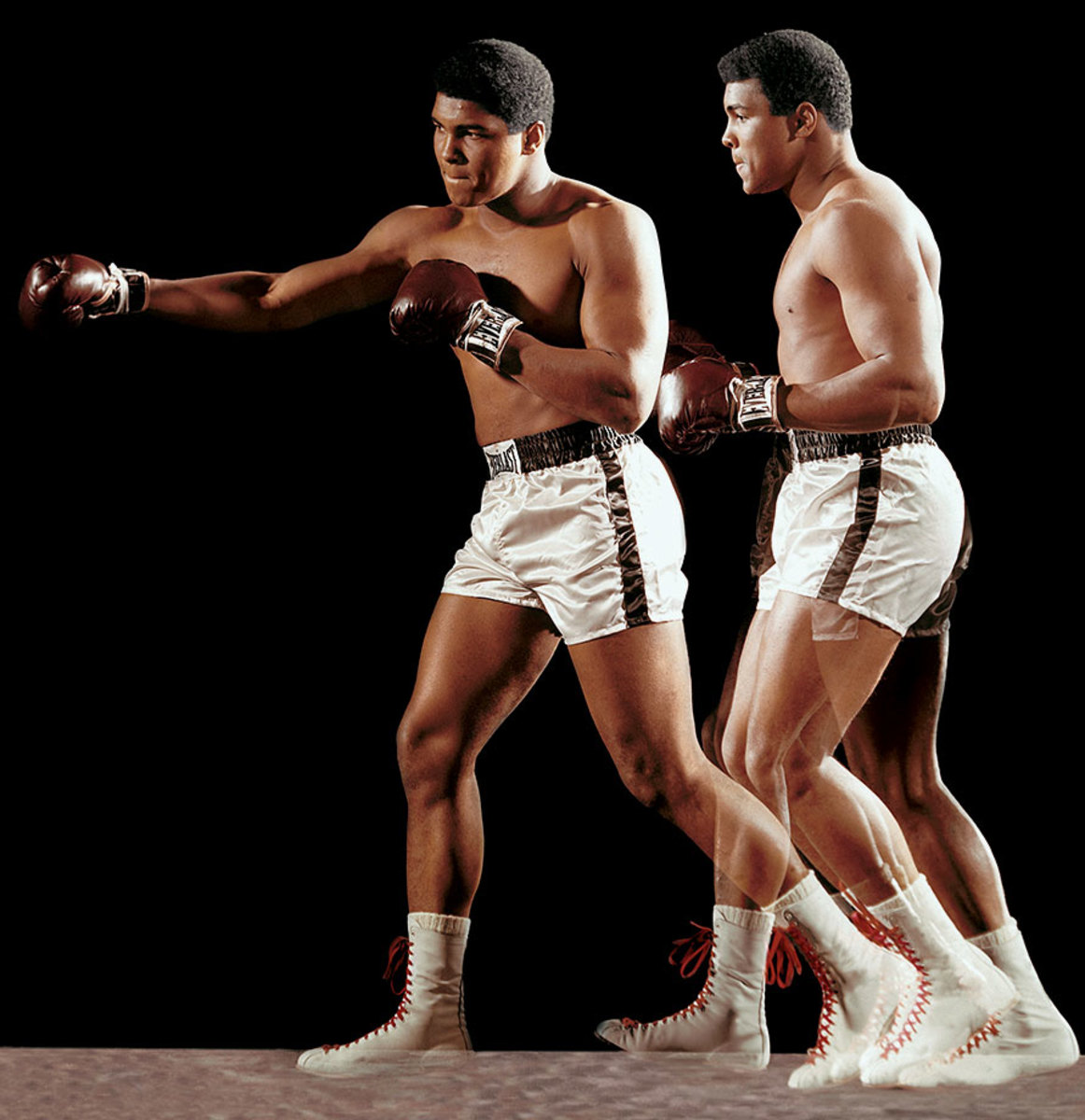
In a multiple-exposure portrait, Ali demonstrates his signature double-clutch shuffle during a photo shoot in December 1966.
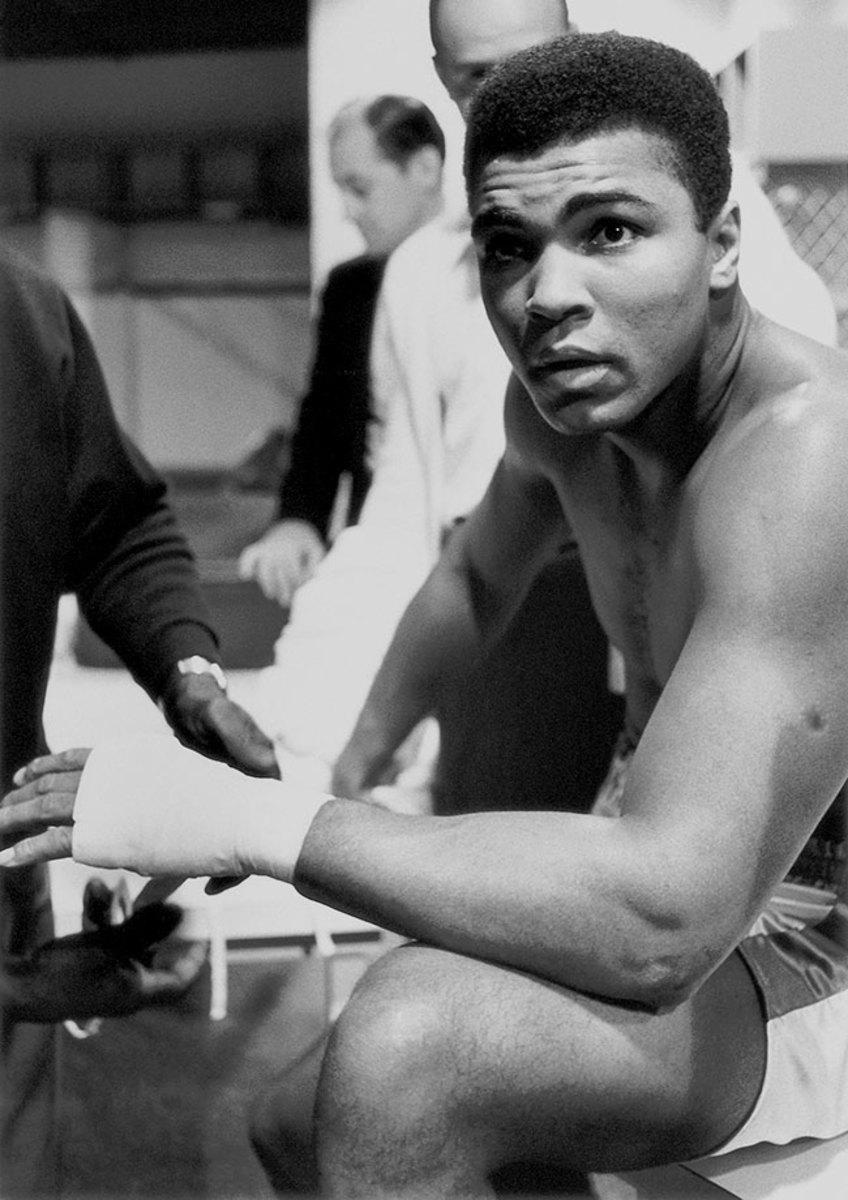
Ali sits in the locker room before his February 1967 fight against Ernie Terrell. Like Patterson before him, Terrell refused to call the champion by his Muslim name. Also like Patterson, he paid a stiff price, as Ali punished Terrell for 15 ugly rounds before winning by unanimous decision.
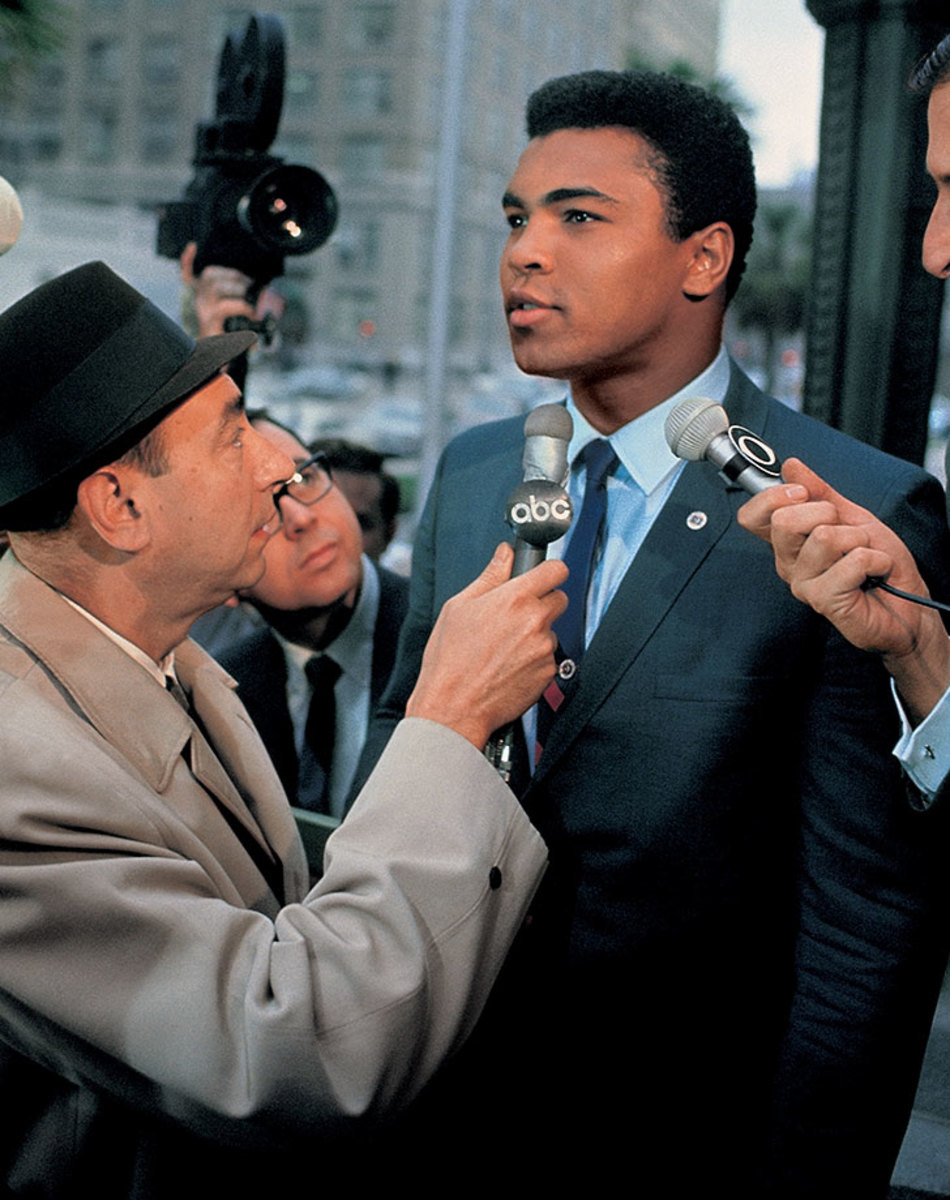
Outside the Armed Forces Examining and Entrance Station in Houston in April 1967, Ali spoke to the press about his refusal to be inducted into military service. Among those on hand was ABC's Howard Cosell, who would be a staunch supporter of the fighter's stance. The decision cost Ali his boxing license and his heavyweight title, and he was sentenced to five years in prison but remained free pending an appeal.
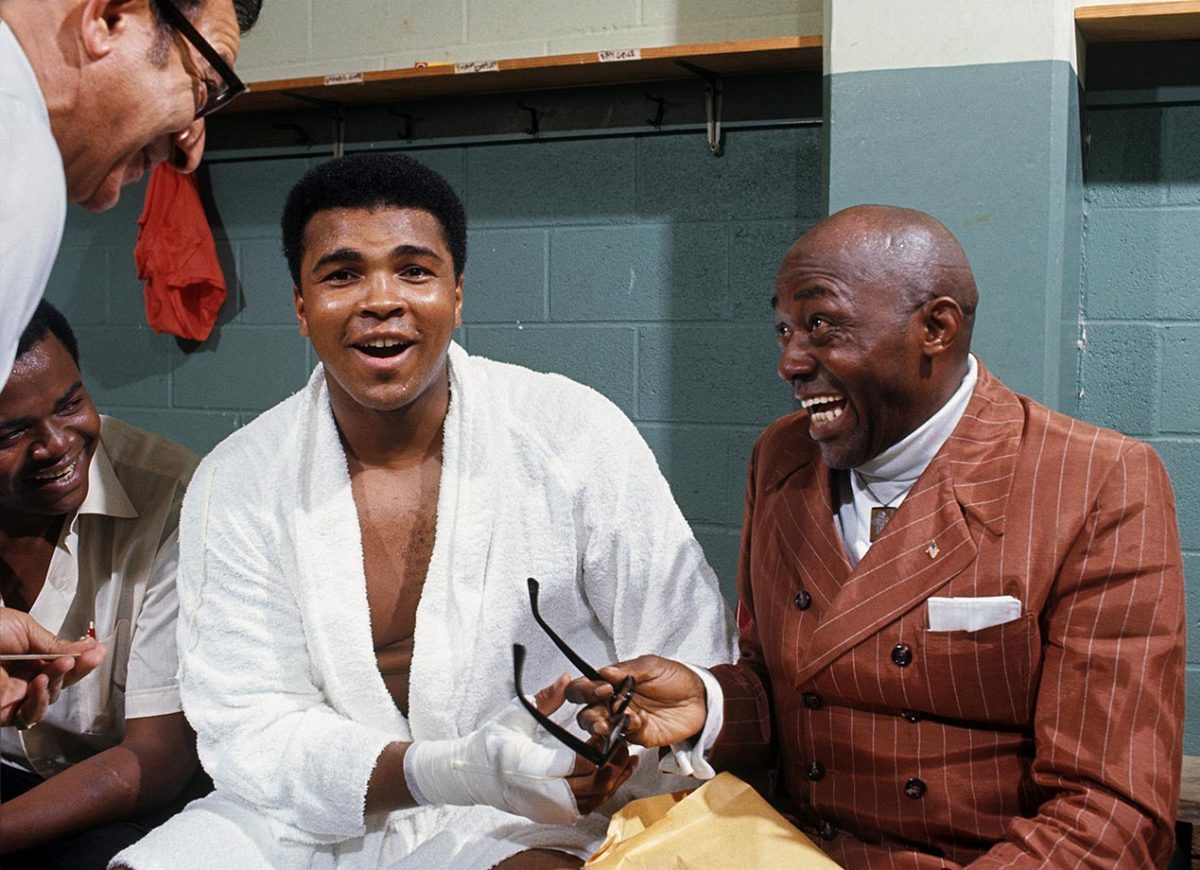
In professional exile for three and a half years because of his draft case, Ali sought to return to boxing in 1970. He began with a night of exhibition bouts at Morehouse College in Atlanta, where before going into the ring, he shared a locker room laugh with actor and comedian Lincoln Perry (right), better known by his stage name of Stepin Fetchit. The friendship between the two black icons would later be examined in an acclaimed play by Will Power, Fetch Clay, Make Man.
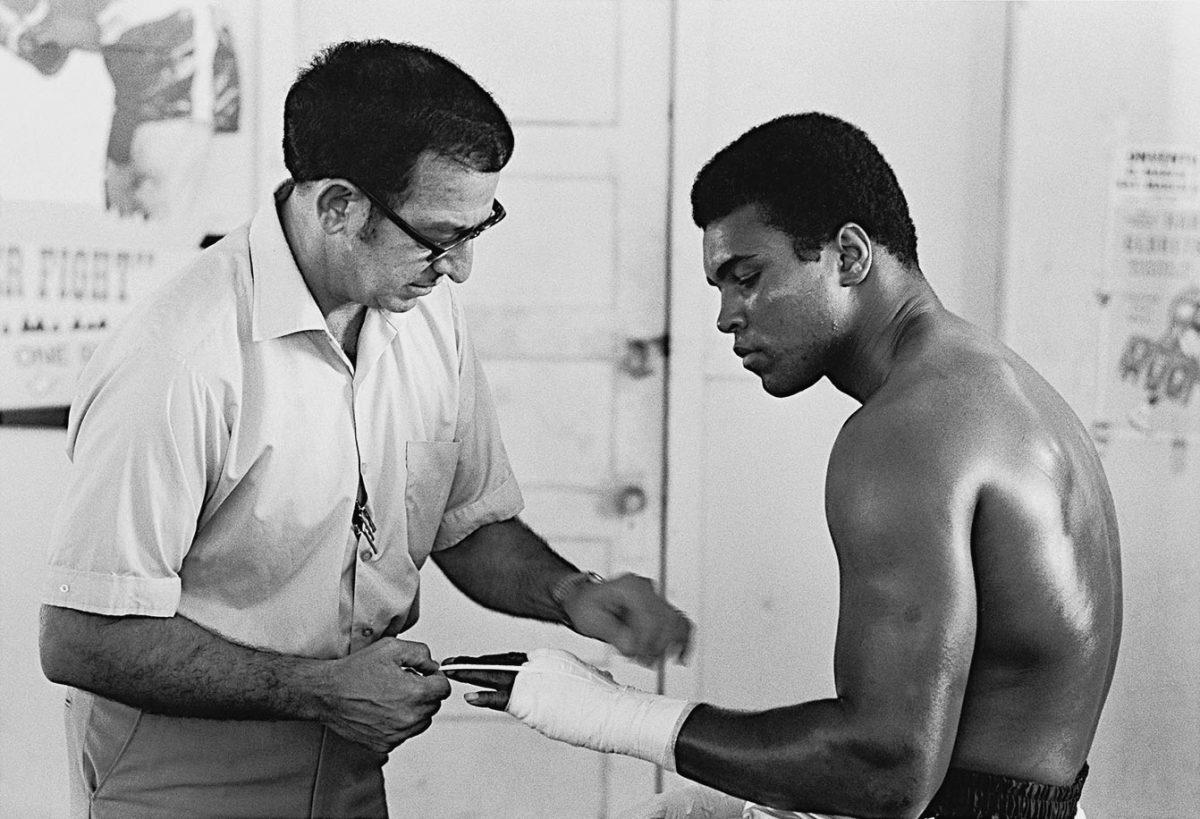
After the Atlanta Athletic Commission at last granted Ali a license, the deposed champion went back into serious training. He was, as ever, in the capable hands of trainer Angelo Dundee, here wrapping boxing's most famous fists at the 5th Street Gym in Miami in October 1970.
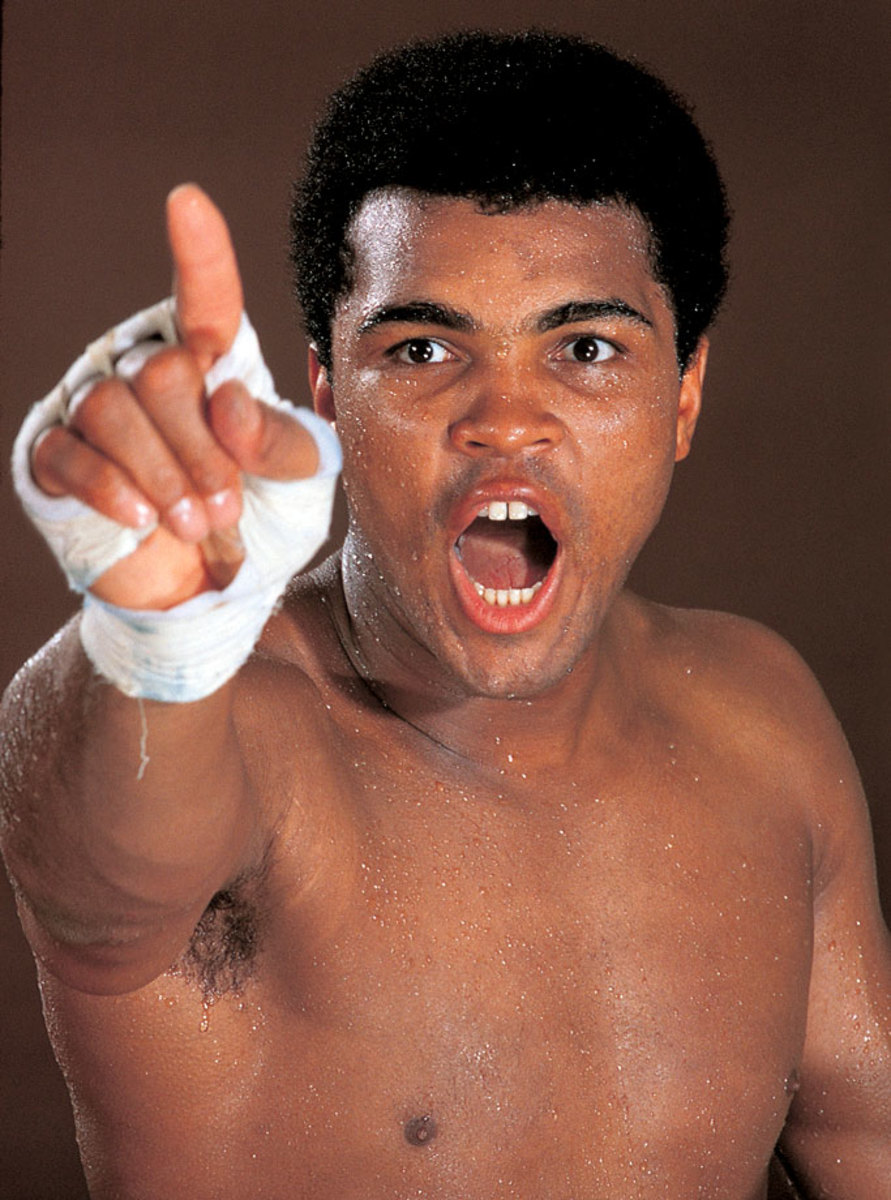
With his return to the ring scheduled for Oct. 26, 1970 in Atlanta, against dangerous contender Jerry Quarry, Ali made it clear to all who would listen that he was on a mission to reclaim the title that had been stripped of him.
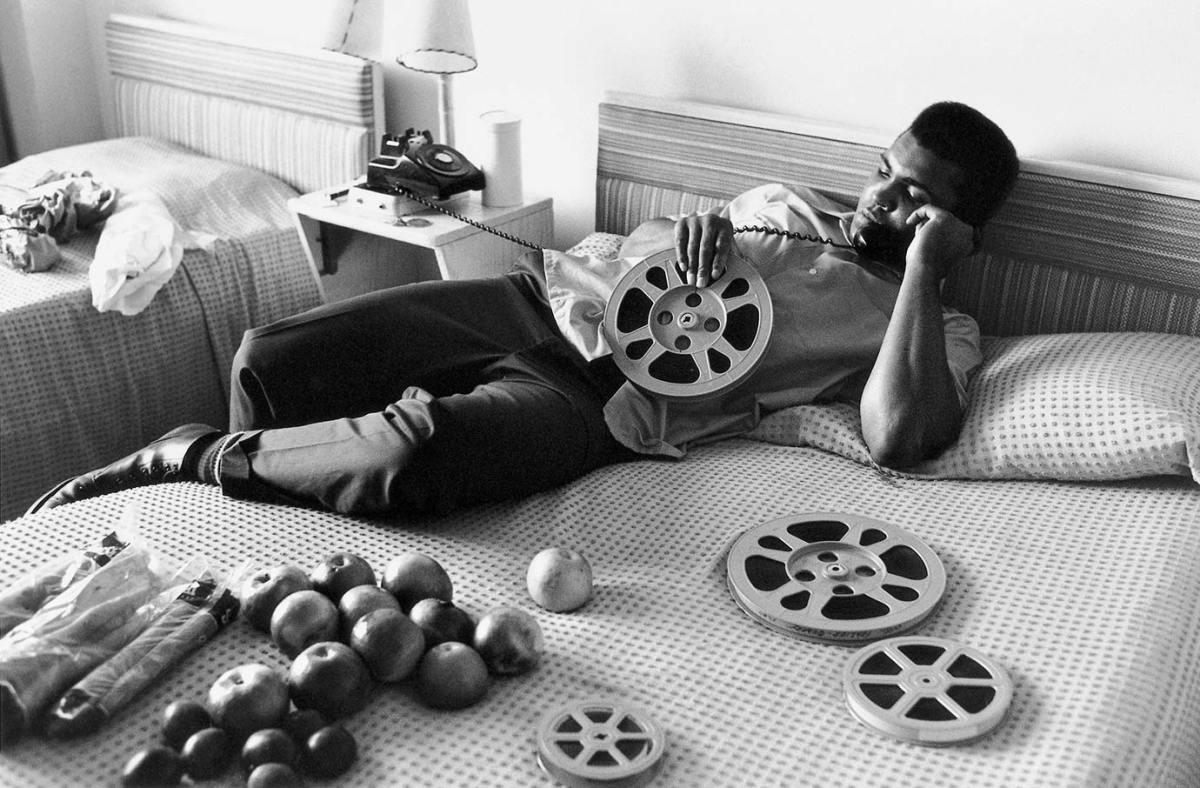
Reel to spiel: For the ever-loquacious Ali, even a rare moment of down time — like this afternoon in 1970 in a Miami hotel room — was a chance to do some talking.
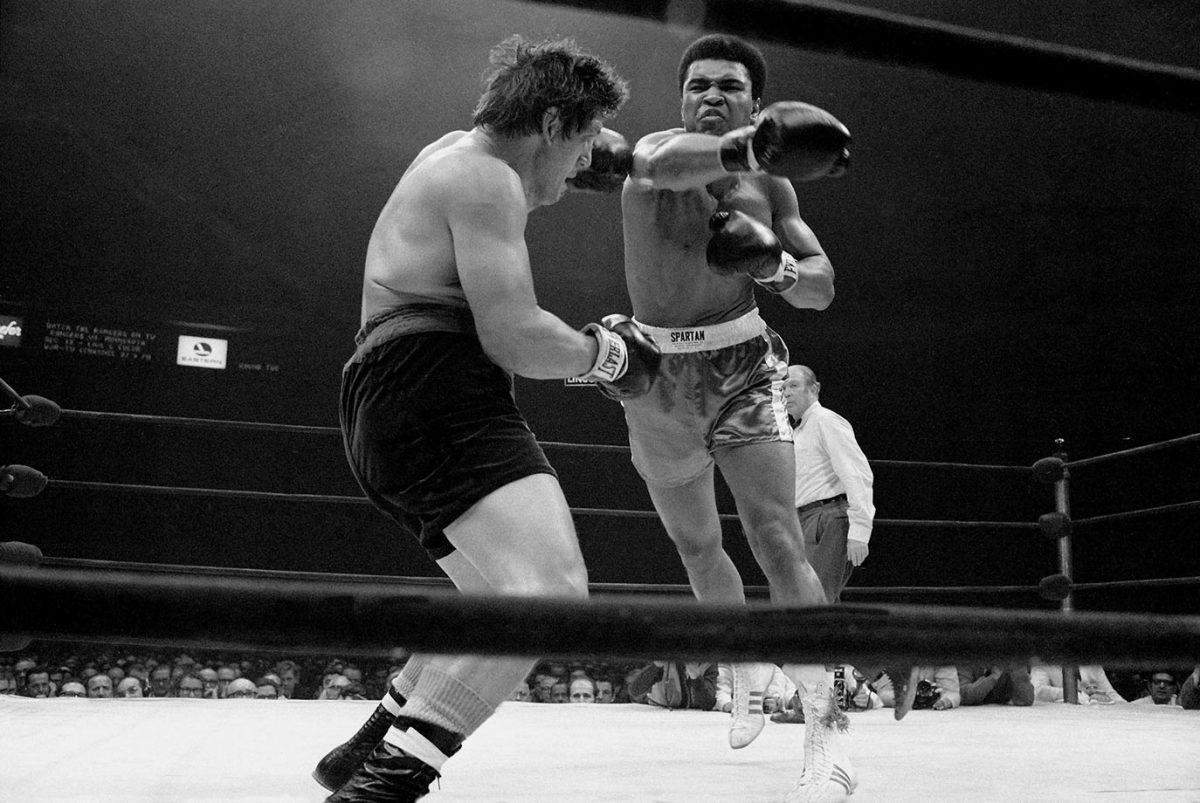
Despite Ali's long layoff, his comeback campaign would include no easy tune-up bouts. He stopped Quarry in three rounds on Oct. 26, 1970, then, just six weeks later — an unthinkably short interlude by today's standards — took on Argentine contender Oscar Bonavena in Madison Square Garden. Here, Ali fires a right at the rugged and awkward Bonavena, who took the fight to the former champion all night.
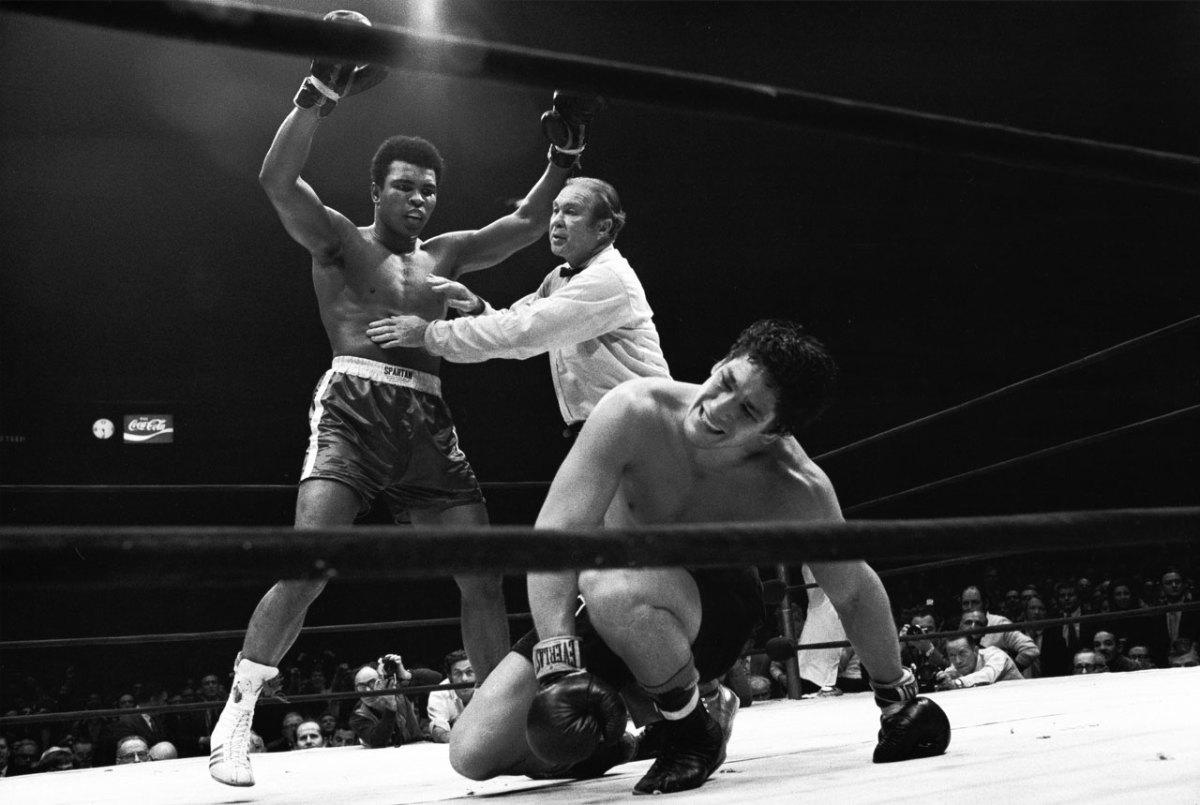
After a long, often sloppy bout, Ali — here being held back by referee Mark Conn — produced one of the most dramatic finishes of his career, dropping Bonavena three times in the 15th and final round to automatically end the fight. The win cleared the way for a showdown with Joe Frazier, the man who had taken the heavyweight title in Ali's absence.
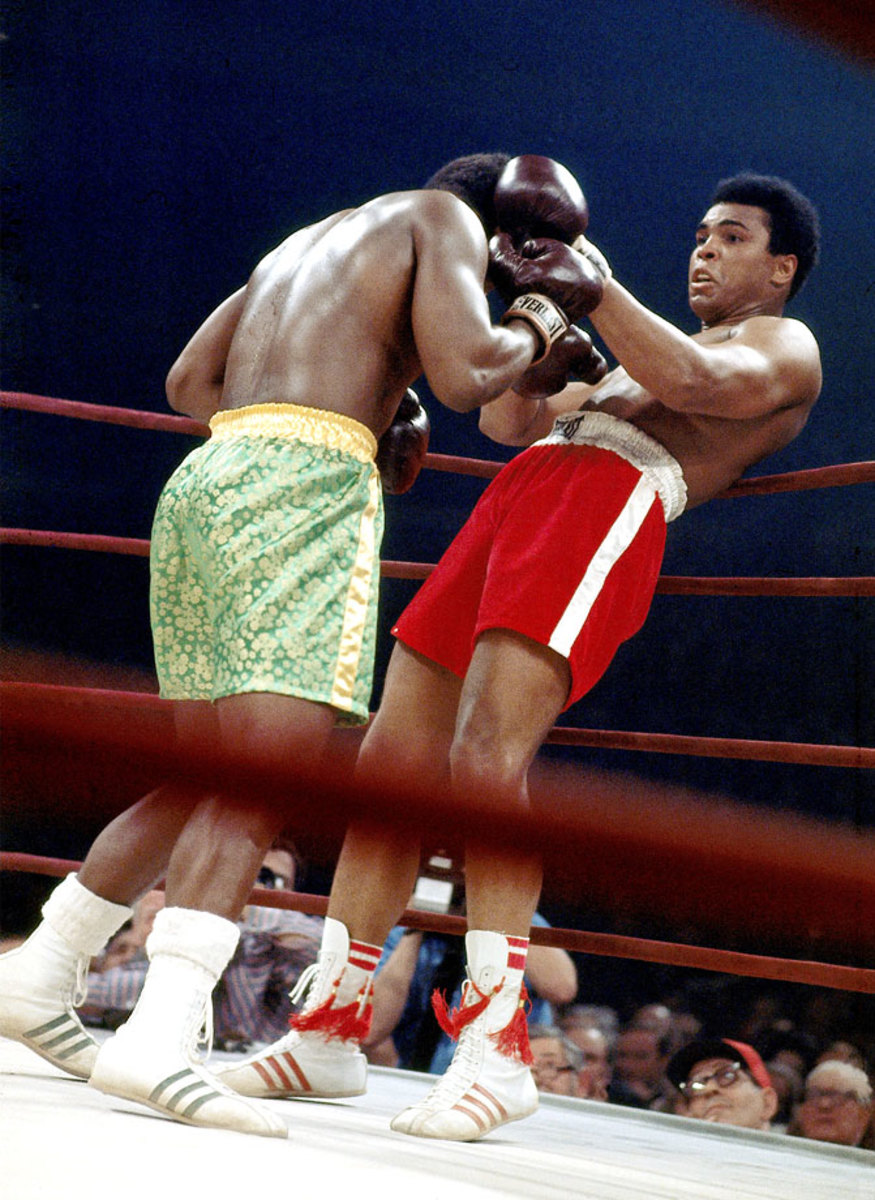
On the night of March 8, 1971, the eyes of the world were on a square patch of white canvas in the center of Madison Square Garden. There, Ali and Joe Frazier met in what was billed at the time simply as The Fight, but has come to be known, justifiably, as the Fight of the Century. For 15 rounds the two undefeated heavyweights battled at a furious pace, with each man sustaining tremendous punishment. In the end Frazier prevailed, dropping Ali in the final round with a tremendous left hook to seal a unanimous decision and hand The Greatest his first loss in 32 professional fights.
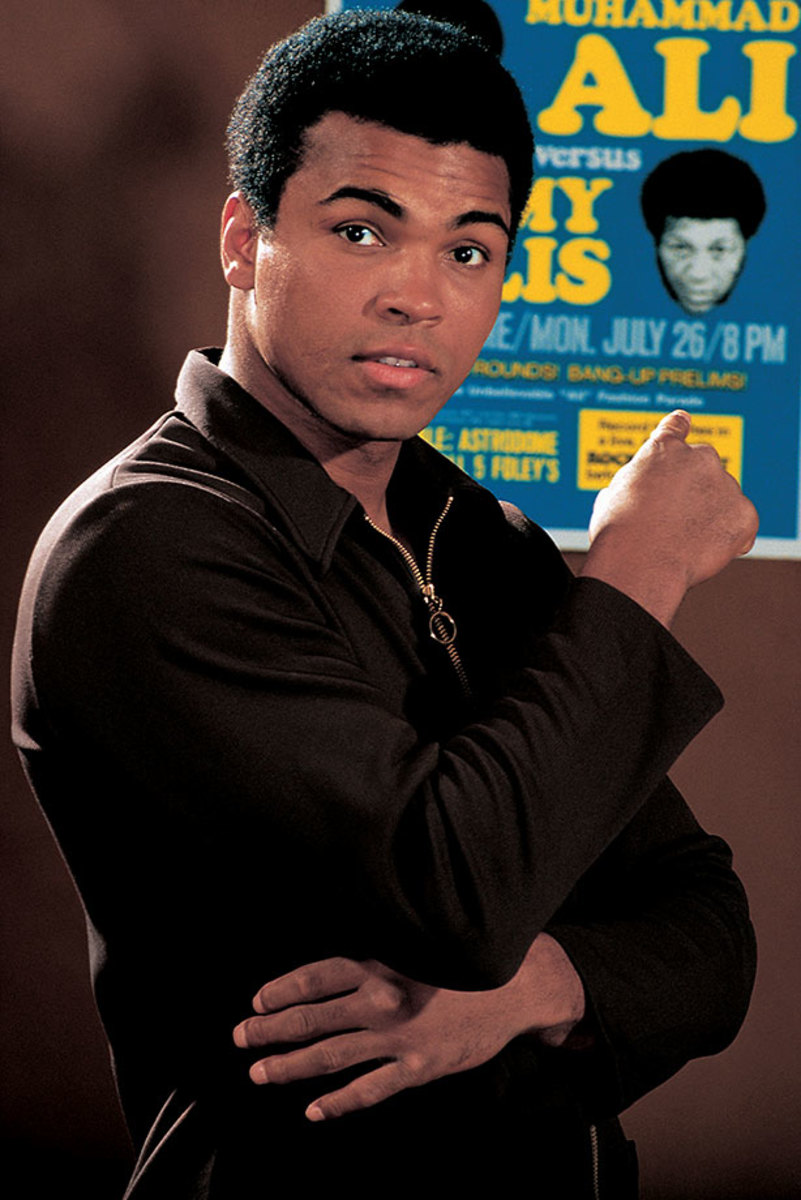
Ali poses with the fight poster for his upcoming fight against Jimmy Ellis during a photo shoot in July 1971. Ellis was an old friend of Ali's — both were trained by Angelo Dundee — and knew his fighting style well from many rounds of sparring.
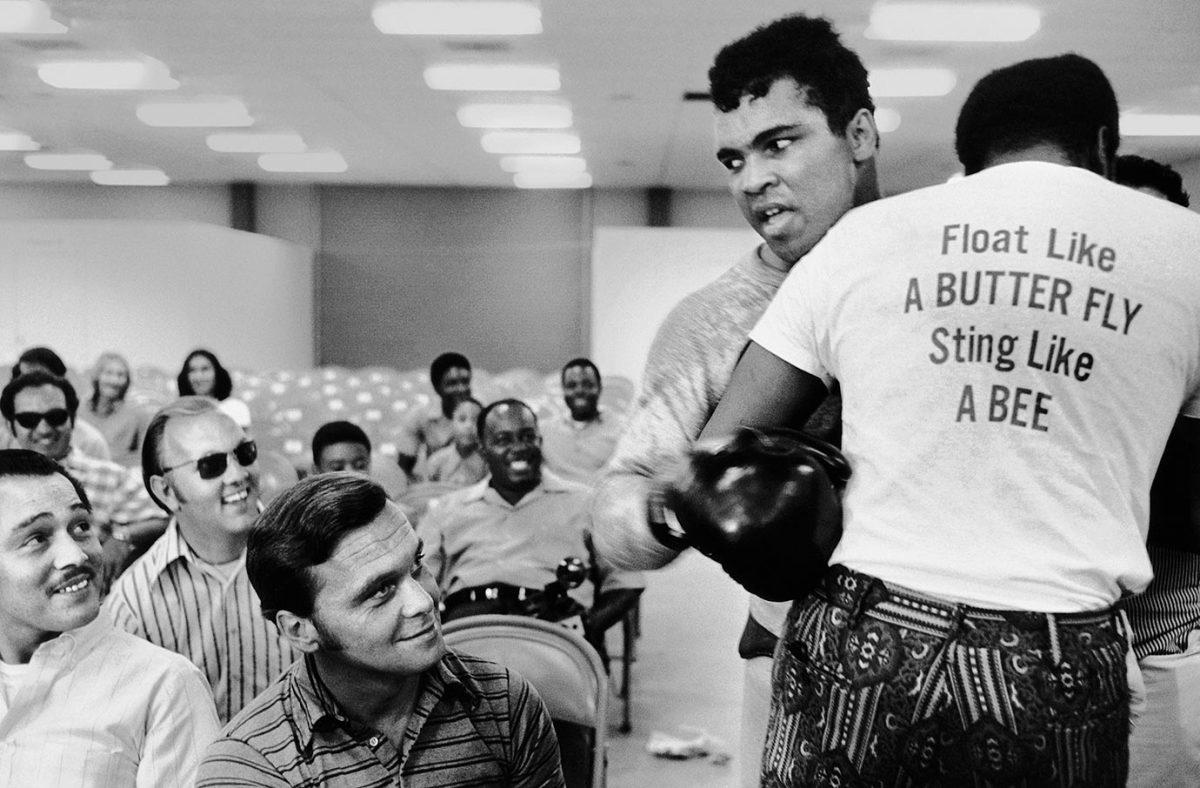
For those sportswriters lucky enough to cover Ali on a regular basis, each day brought surprises and, more often than not, plenty of laughs. of Trainer Drew Bundini Brown helps Ali train for his fight against Ellis. Ali won the bout by technical knockout in the 12th round to claim the vacant NABF heavyweight title.
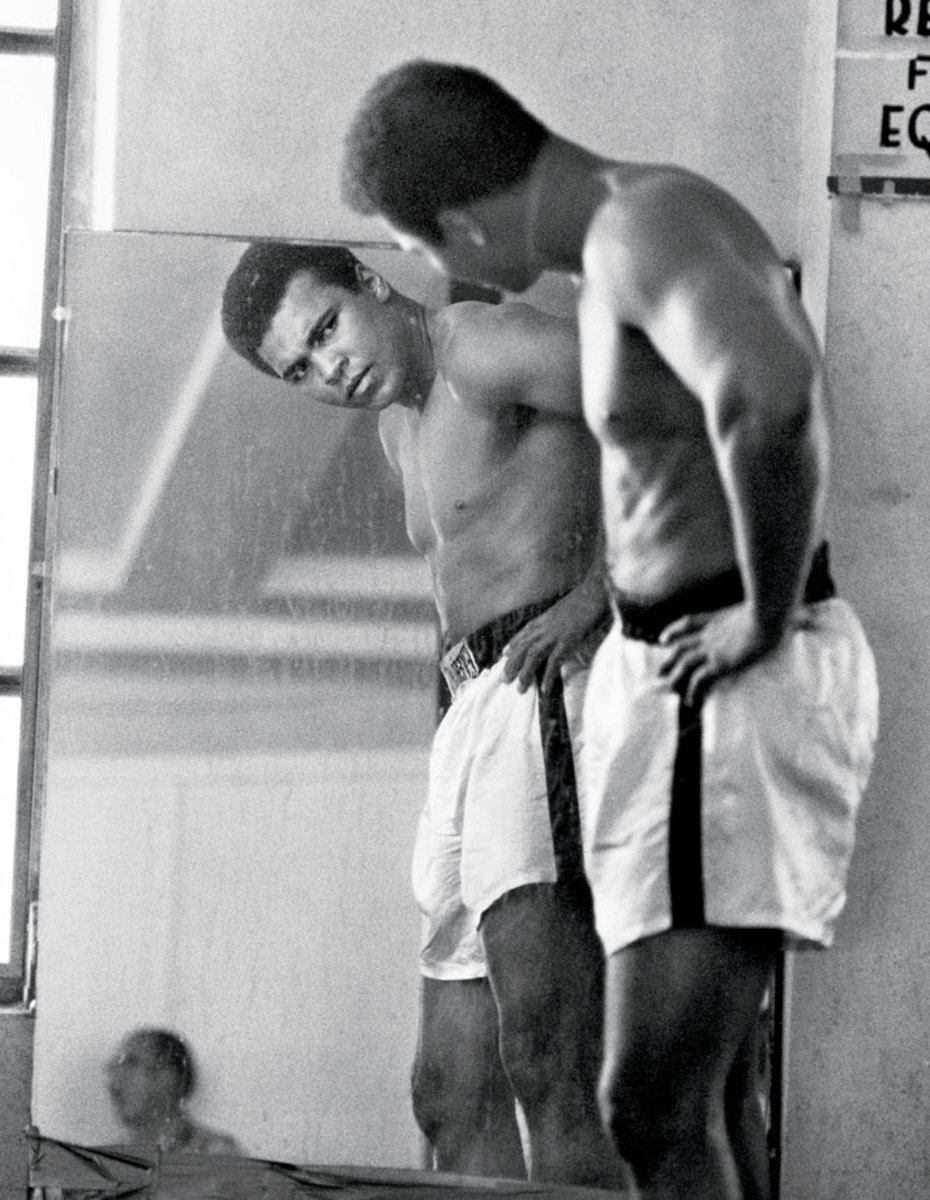
The man in the mirror stares back as Ali examines himself while training for a fight in 1972. He won all six of his fights that year.

The Louisville Lip stands next to George Foreman before Ali's fight versus Jerry Quarry in June 1972. Ali won by technical knockout in the seventh round. Foreman at the time was 36-0. Ali would not get his shot against Foreman for more than two years.
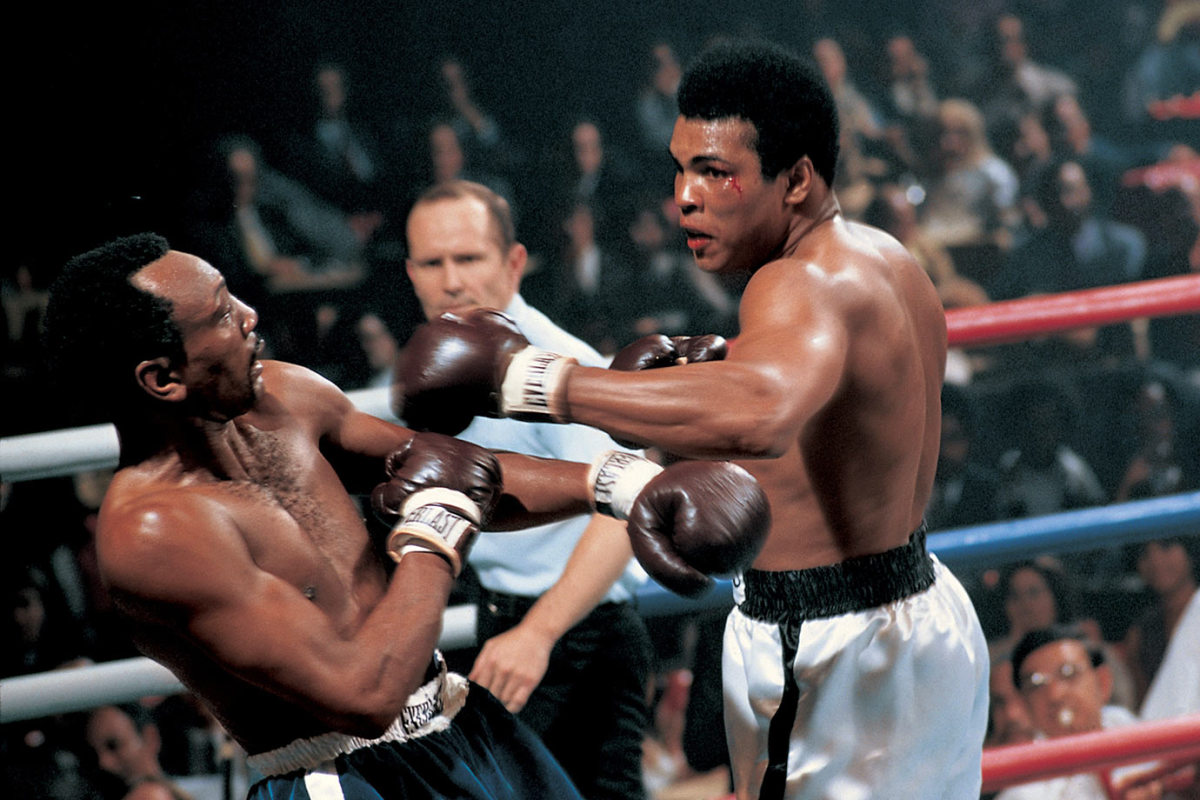
Ali throws a left hook at Bob Foster in their 1972 fight at Stateline, Nev. Although Ali knocked Foster out, Foster did leave his mark: a cut above Ali's left eye, his first as a professional.
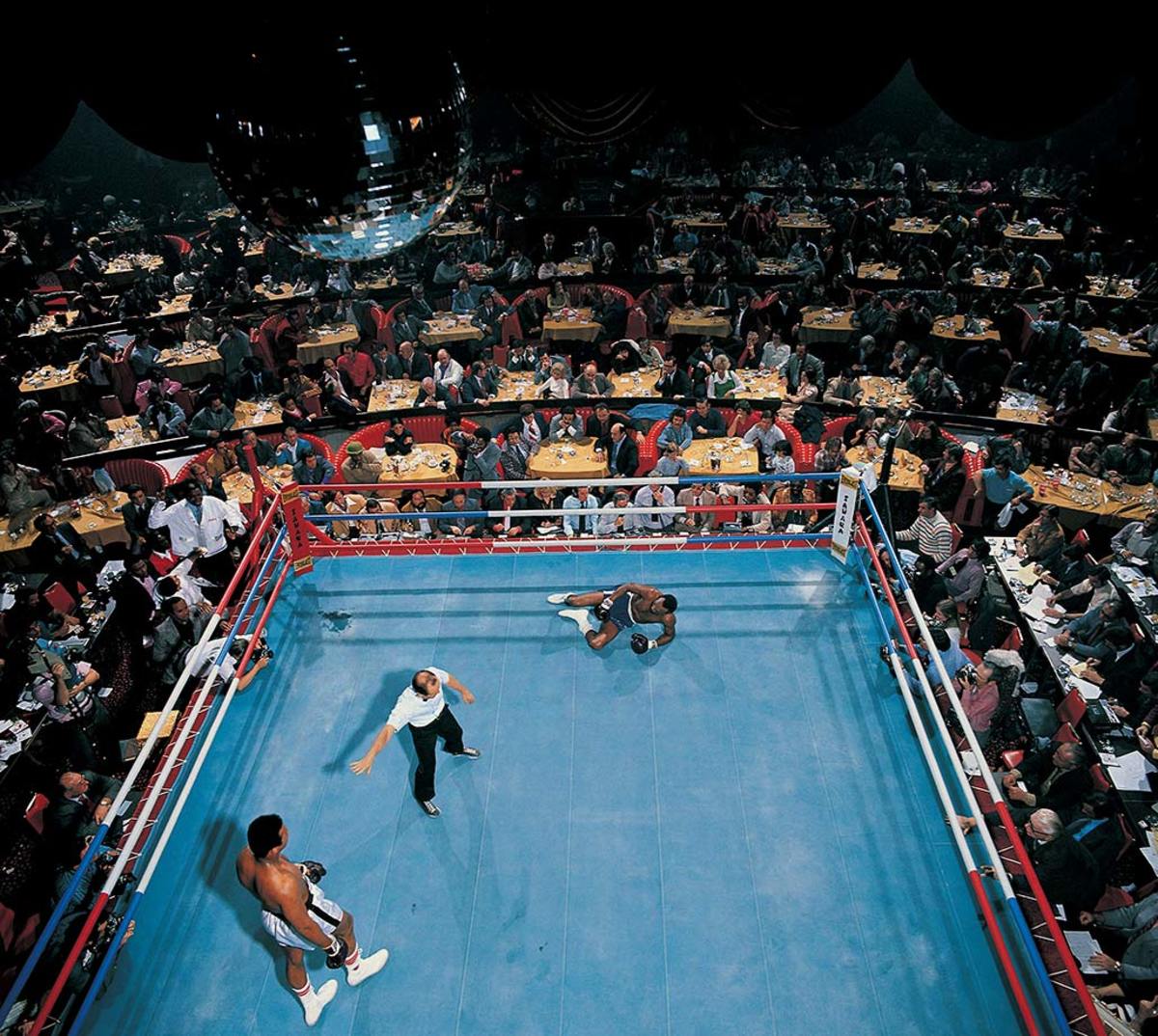
Foster lies on the canvas after getting knocked down by Ali. Ali knocked Foster down four times in the fifth round and twice more in the seventh round before he was finally counted out after Ali knocked him down again in the eighth round.
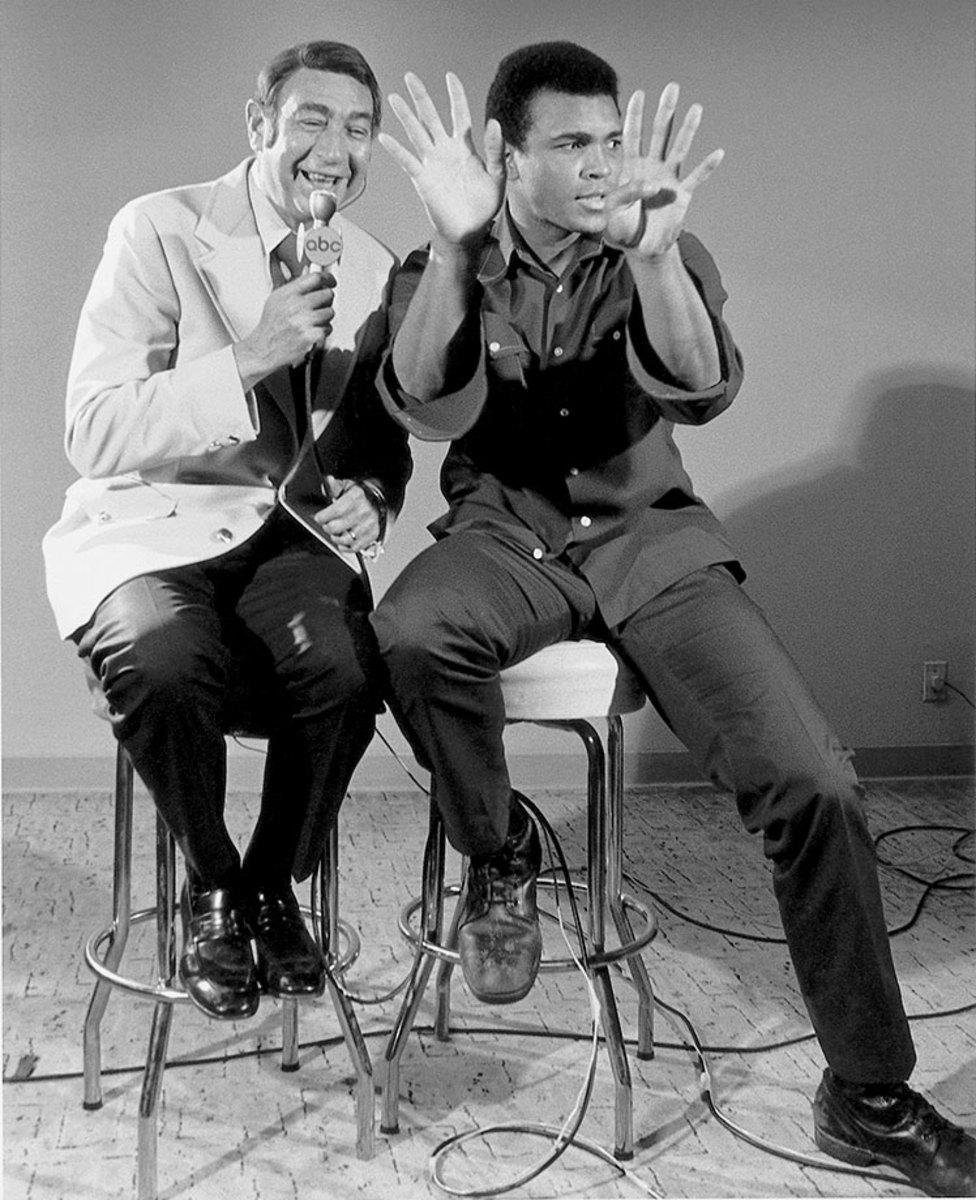
Ali sits with sportscaster Howard Cosell before his fight with Joe Bugner in February 1973. Although unable to knock Bugner out, Ali won comfortably by unanimous decision.
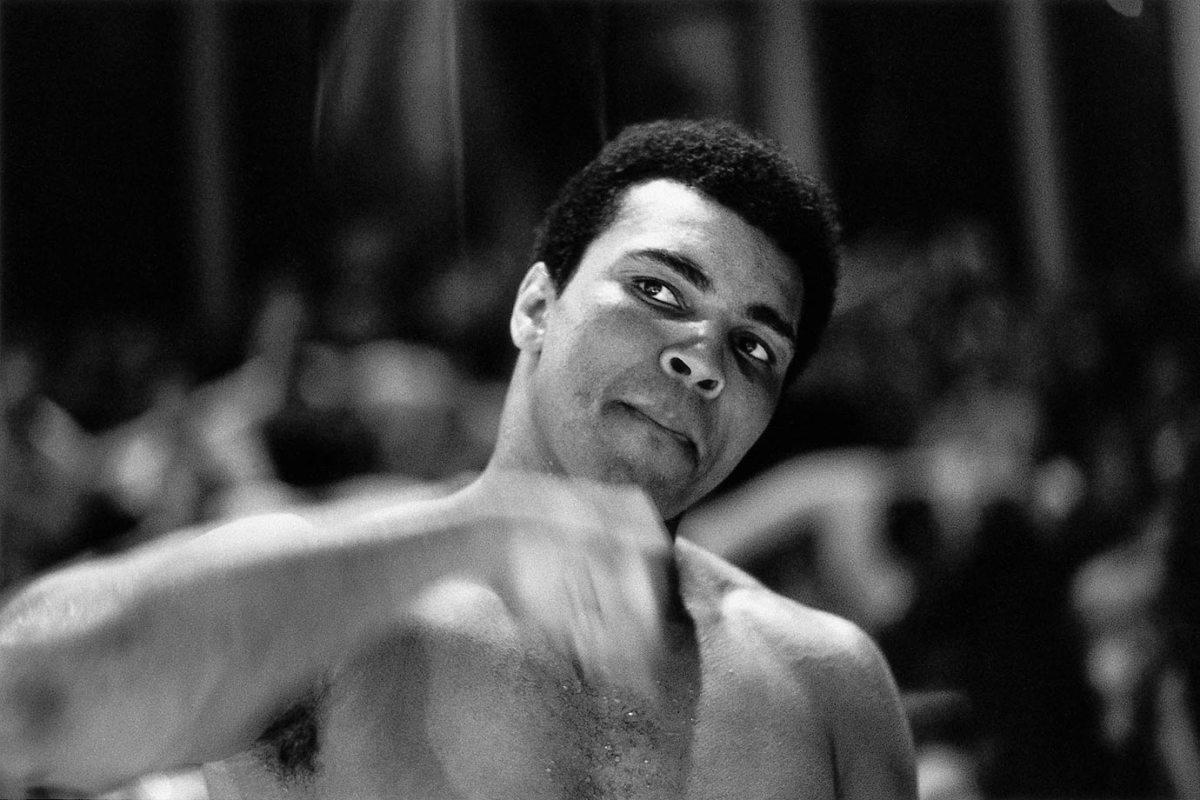
Ali hits a speed bag while warming up for his bout with Bugner in Las Vegas. Ali prepared ferociously for the fight, training 67 rounds the week leading up to the fight, including six rounds the day before the fight.
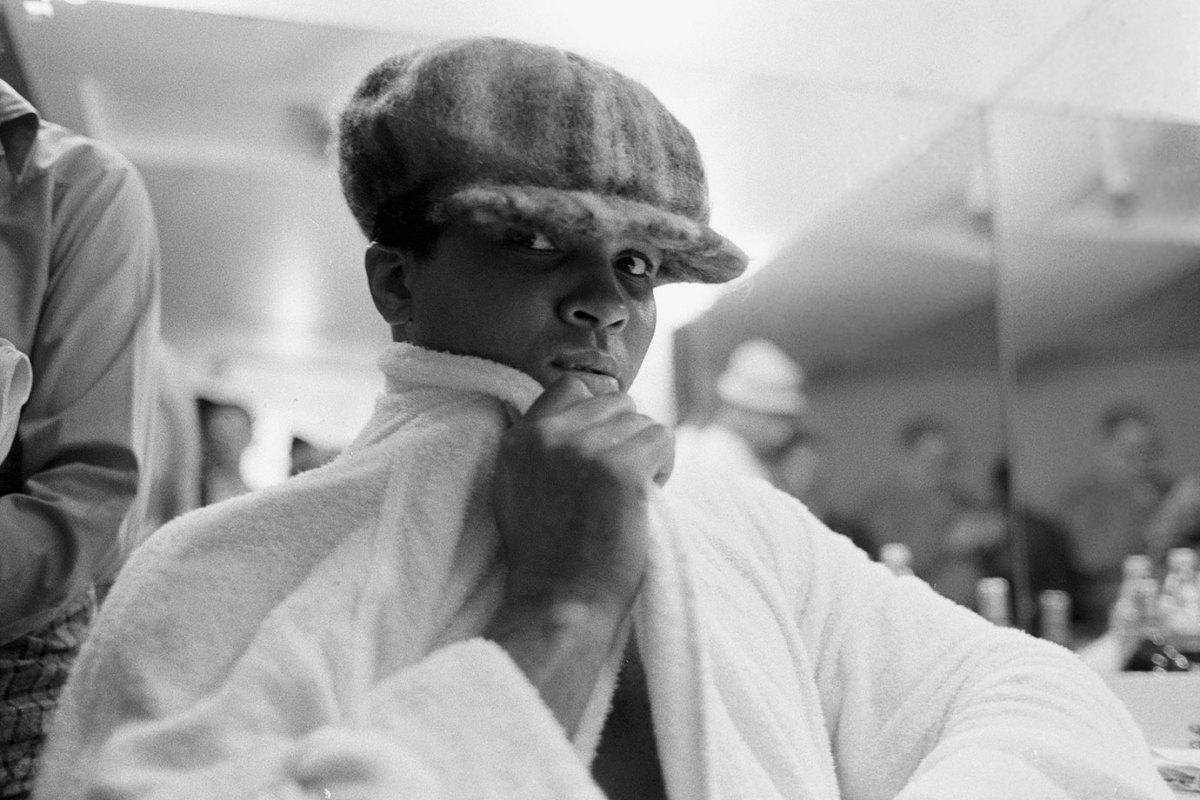
In a lighter pre-fight moment, Ali poses for a portrait wearing a hat in his dressing room before the match with Bugner.
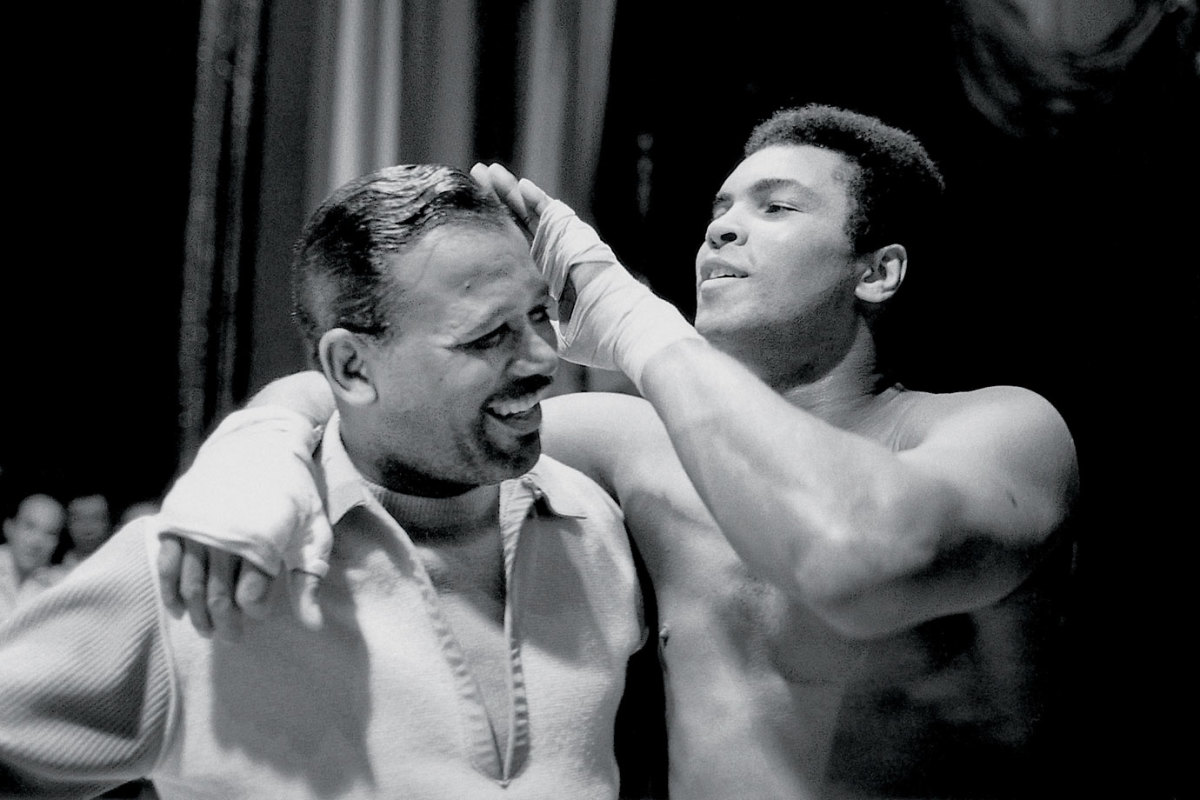
Ali plays with Sugar Ray Robinson's hair in the locker room before his bout with Bugner. The former welterweight and middleweight champion was Ali's childhood idol.
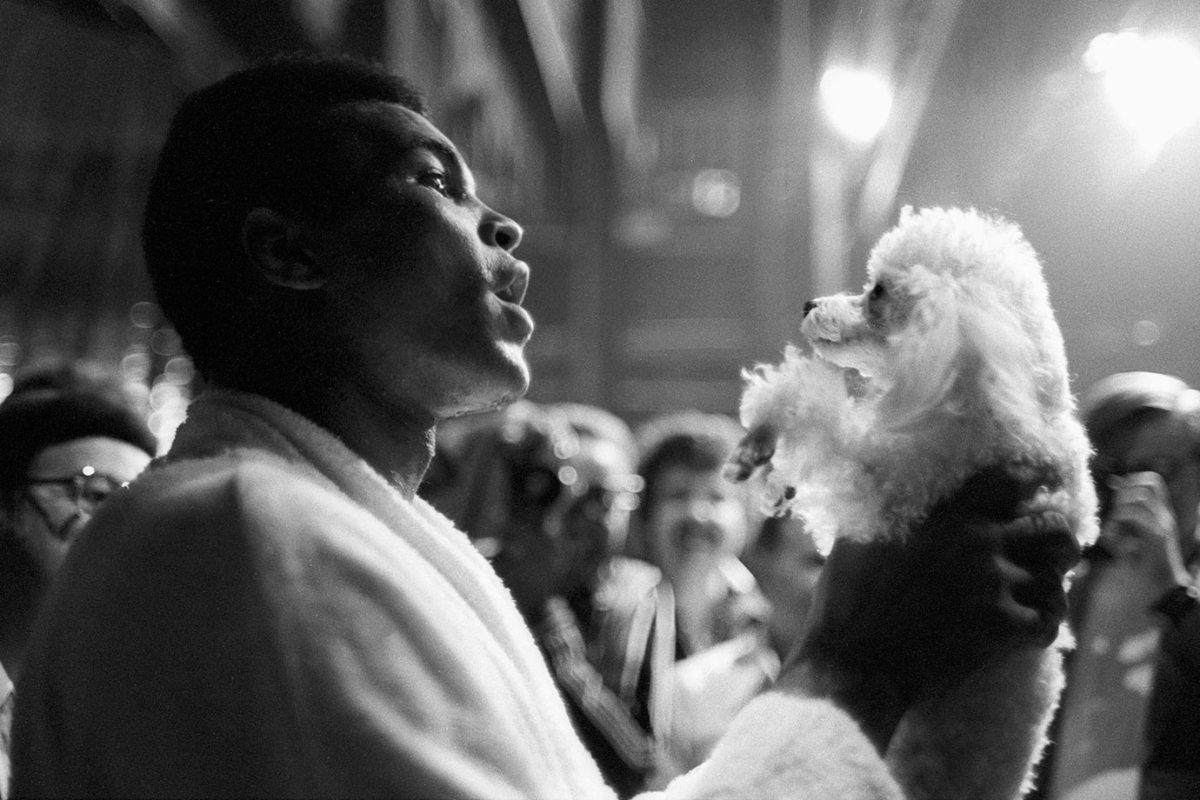
Before the fight with Bugner, Muhammad Ali enjoys a relaxed moment with a poodle at Caesars Palace Hotel. He won the fight with Bugner by unanimous decision.
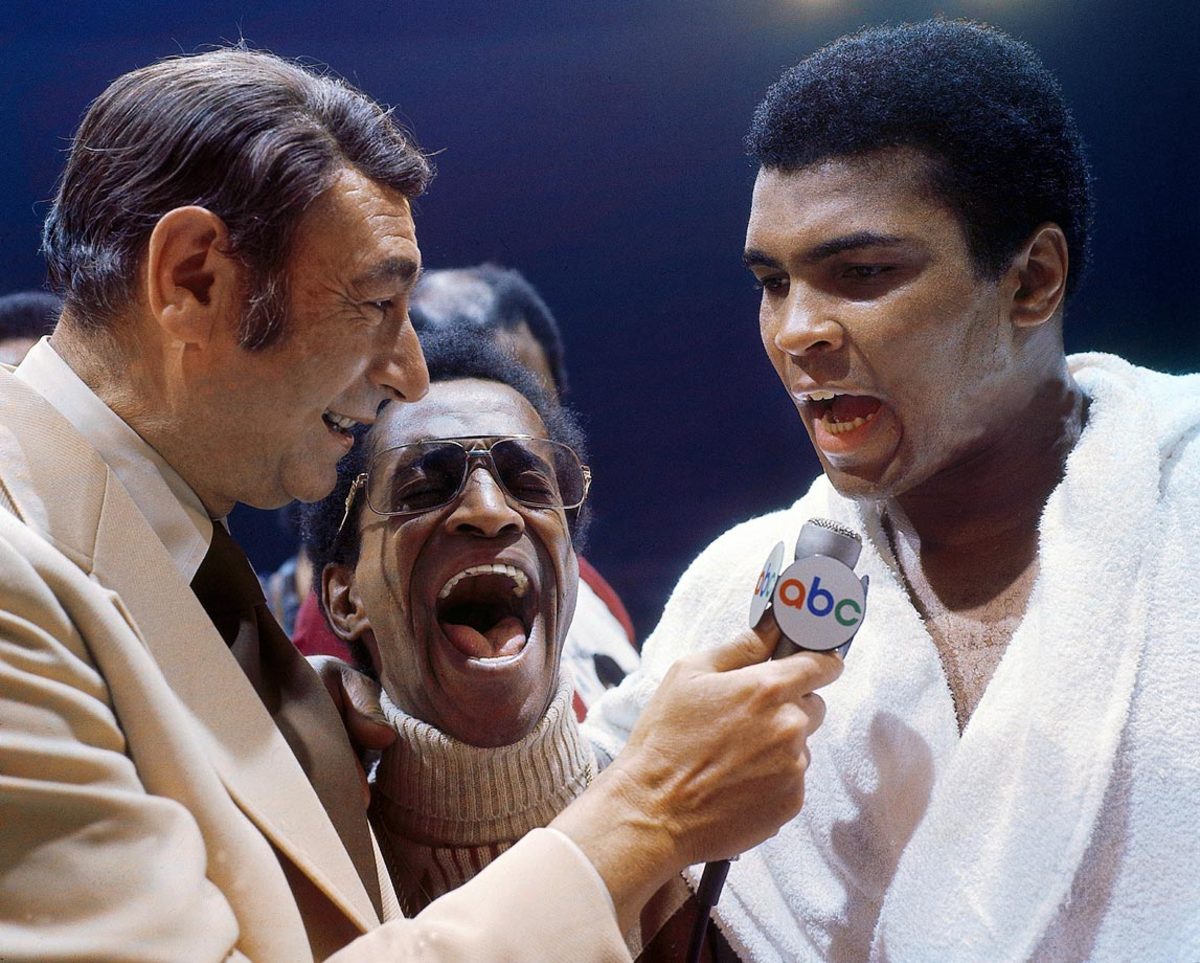
Howard Cosell interviews Ali, with entertainer Sammy Davis Jr. in the middle, after his victory over Joe Bugner by unanimous decision in. Although the fight was never in jeopardy of getting away from him, Ali praised Bugner's legs and said he could be a champion in a few years.
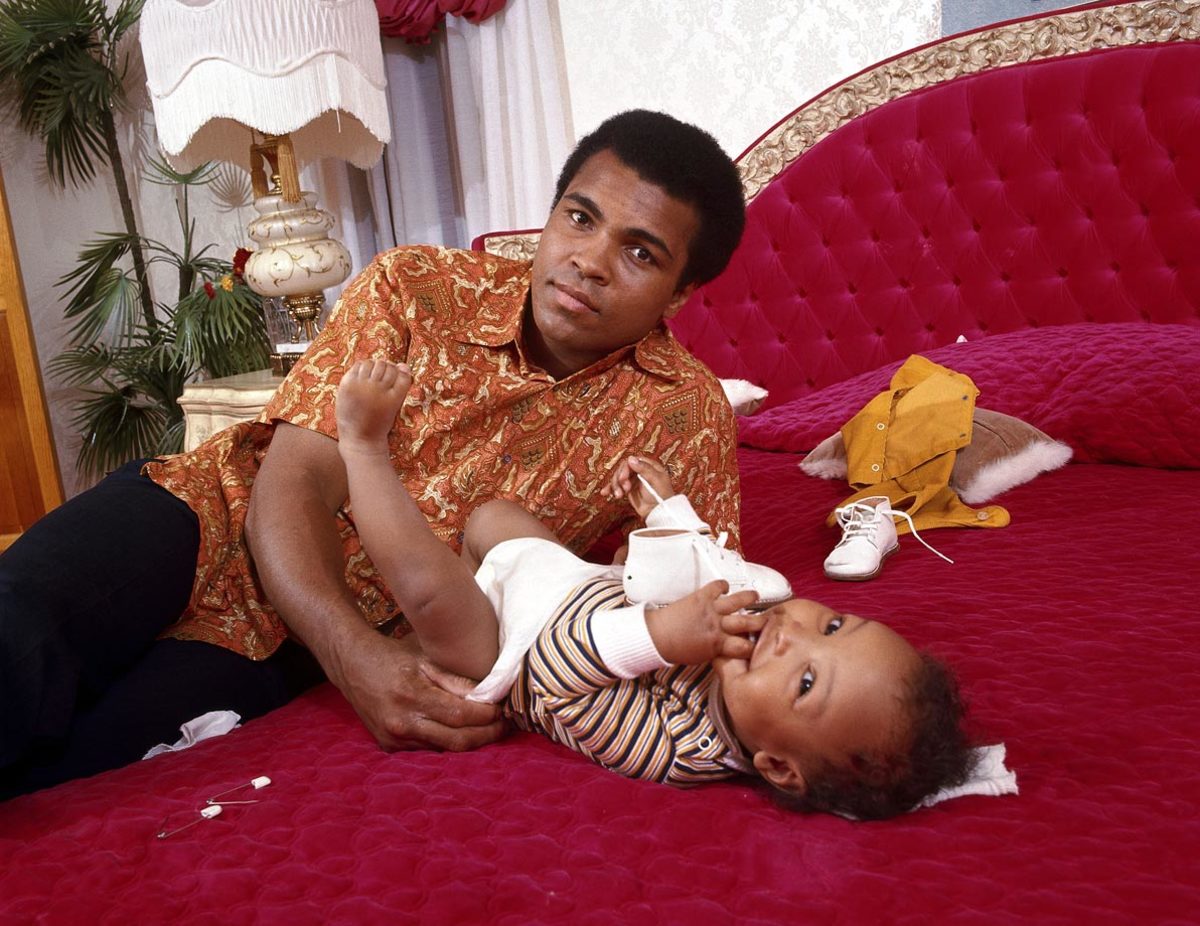
Ali changes the diaper of his son in his bedroom during a photo shoot at the family's home in April 1973. Ali had suffered a broken jaw less than a month earlier in his fight against Ken Norton.
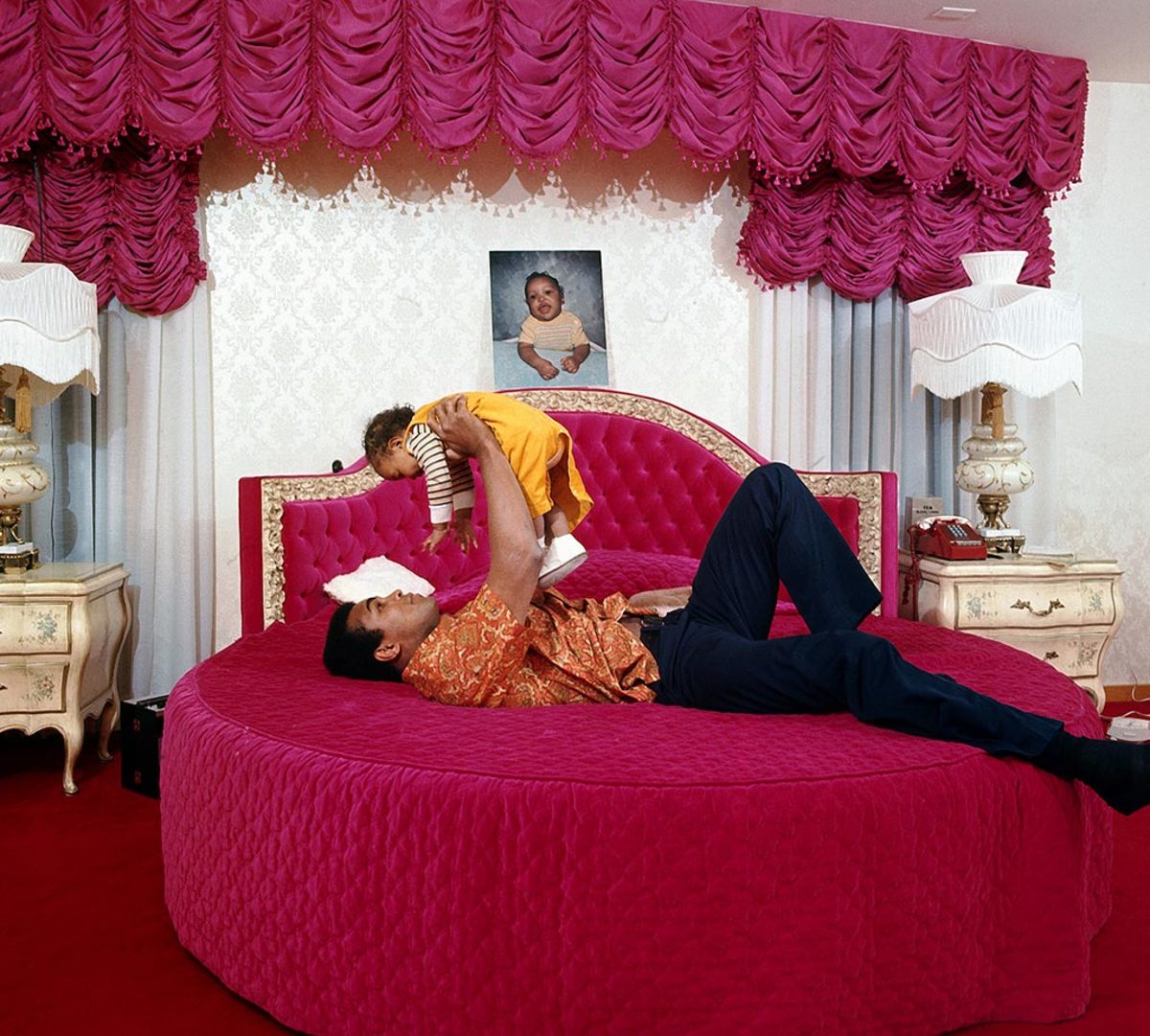
In the wake of his split decision loss to Norton, Ali plays with his son in his bedroom at home in Cherry Hill, N.J.
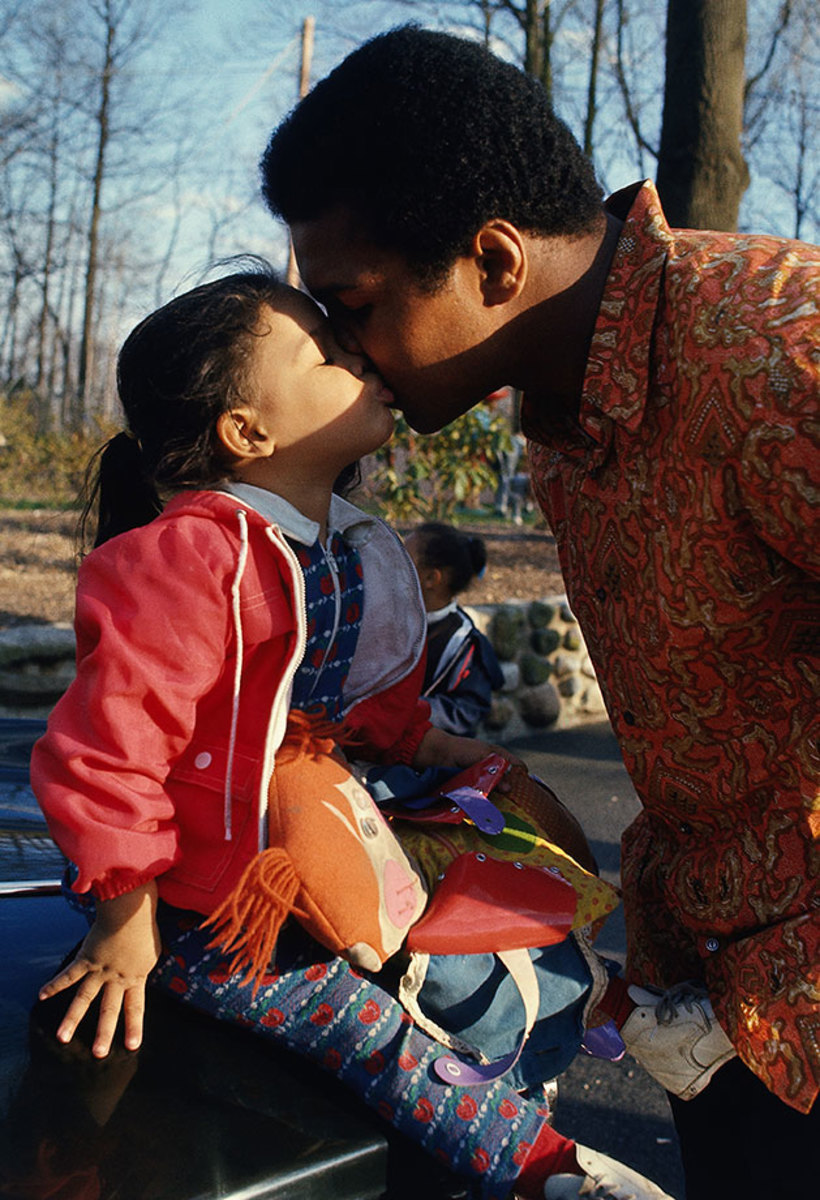
Ali kisses his daughter Jamillah outside of their home following the loss to Norton, just the second defeat of his career.
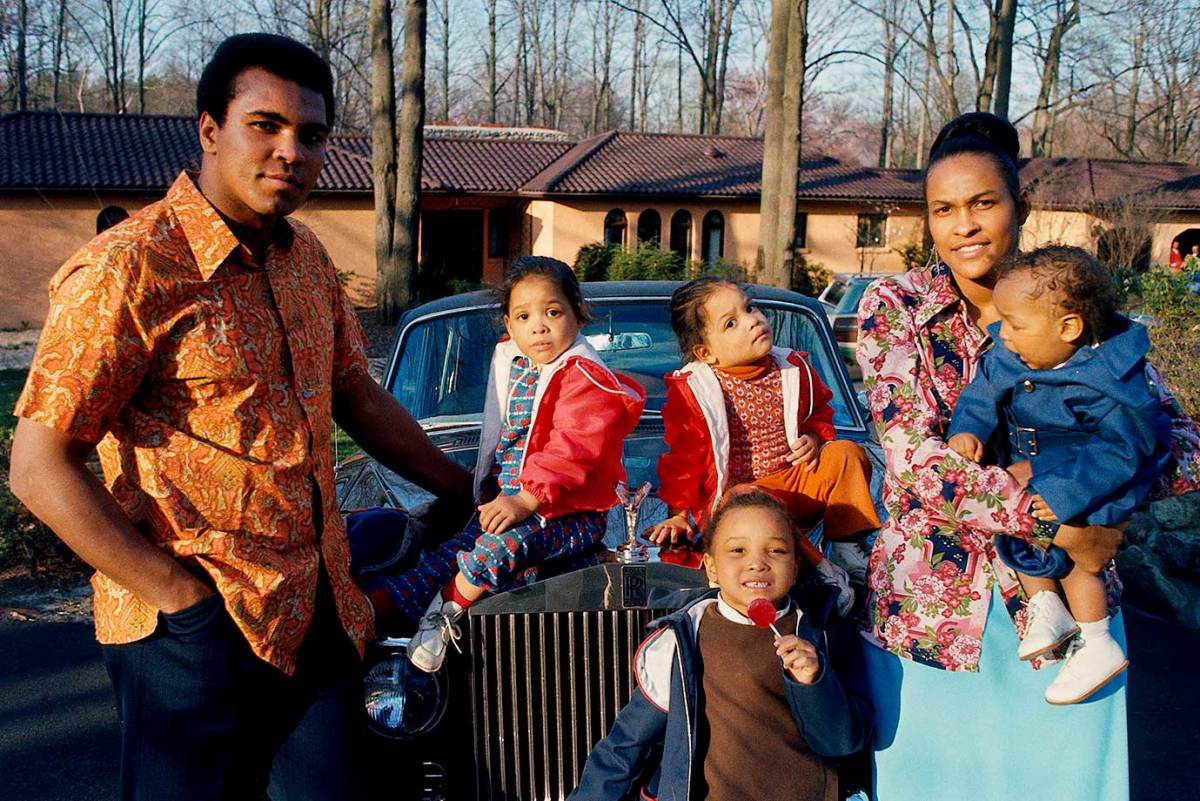
The Ali family standing outside their New Jersey home. To the right of Muhammad Ali are his twin daughters, Jamilllah and Rasheda, daughter Maryum and his wife, Khalilah, holding their son Ibn Muhammad Ali Jr.
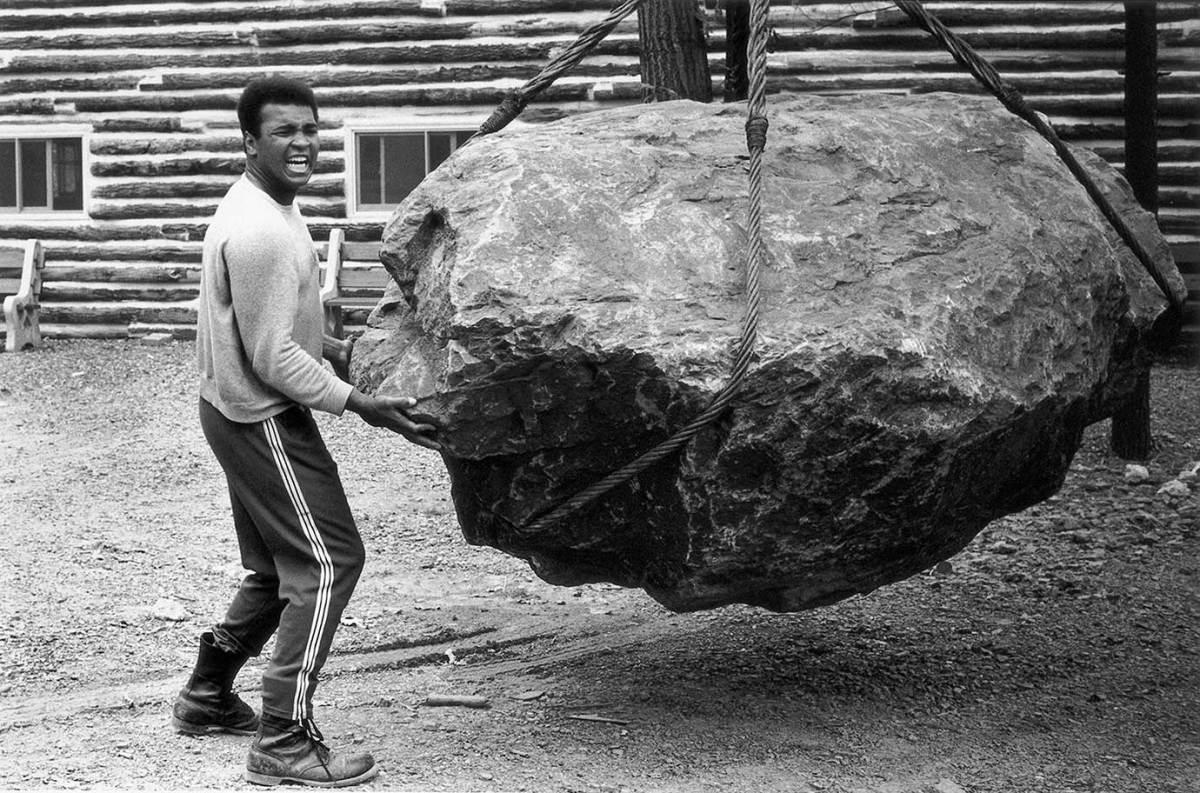
At his training camp cabin, Ali pushes a boulder during a photo shoot in Deer Lake, Penn., in August 1973. Ali was training for his rematch against Ken Norton, who broke his jaw five months earlier.
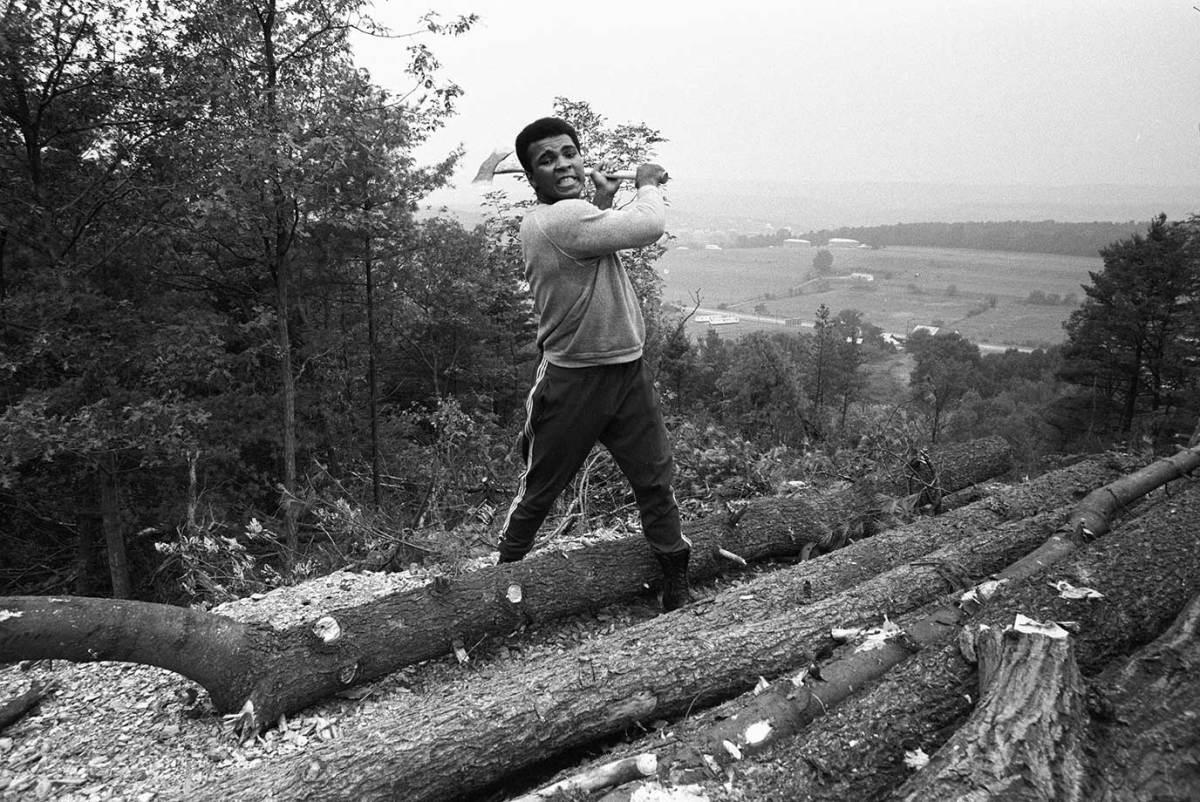
Ali chops wood at his cabin in Deer Lake. He referred to the training camp as "fighter's heaven" and used it to prepare for fights away from the spotlight.
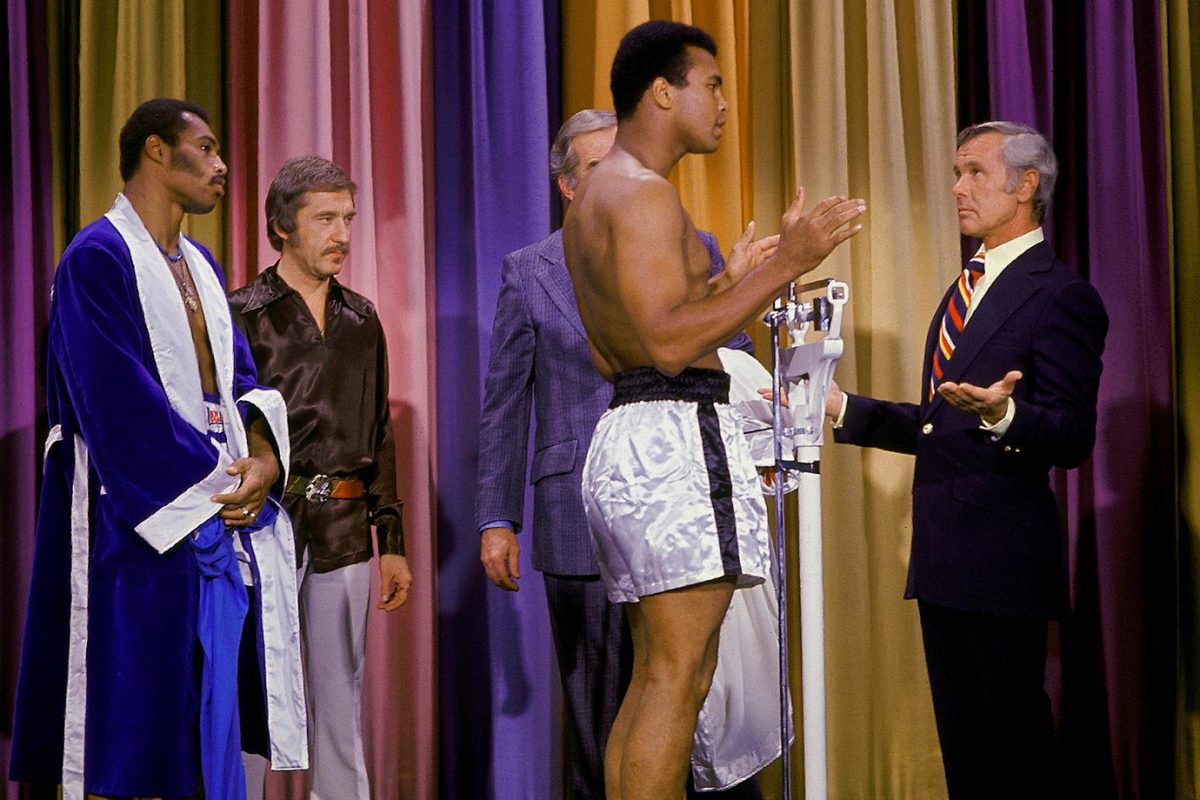
The fighters weigh in on the Tonight Show with Johnny Carson ahead of Ali and Ken Norton's September 1973 fight.
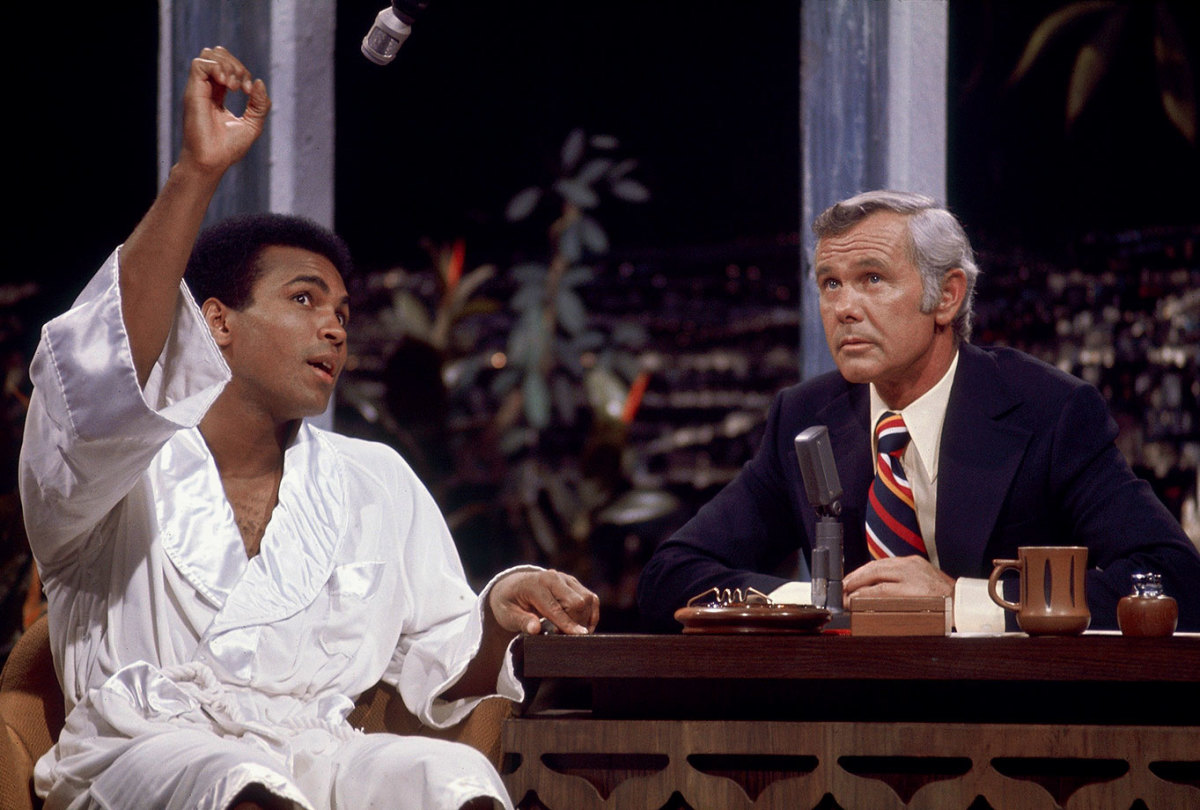
Johnny Carson listens to Ali on the Tonight Show three days before his rematch with Norton. Ali would avenge his earlier loss to Norton, winning a narrow split decision.
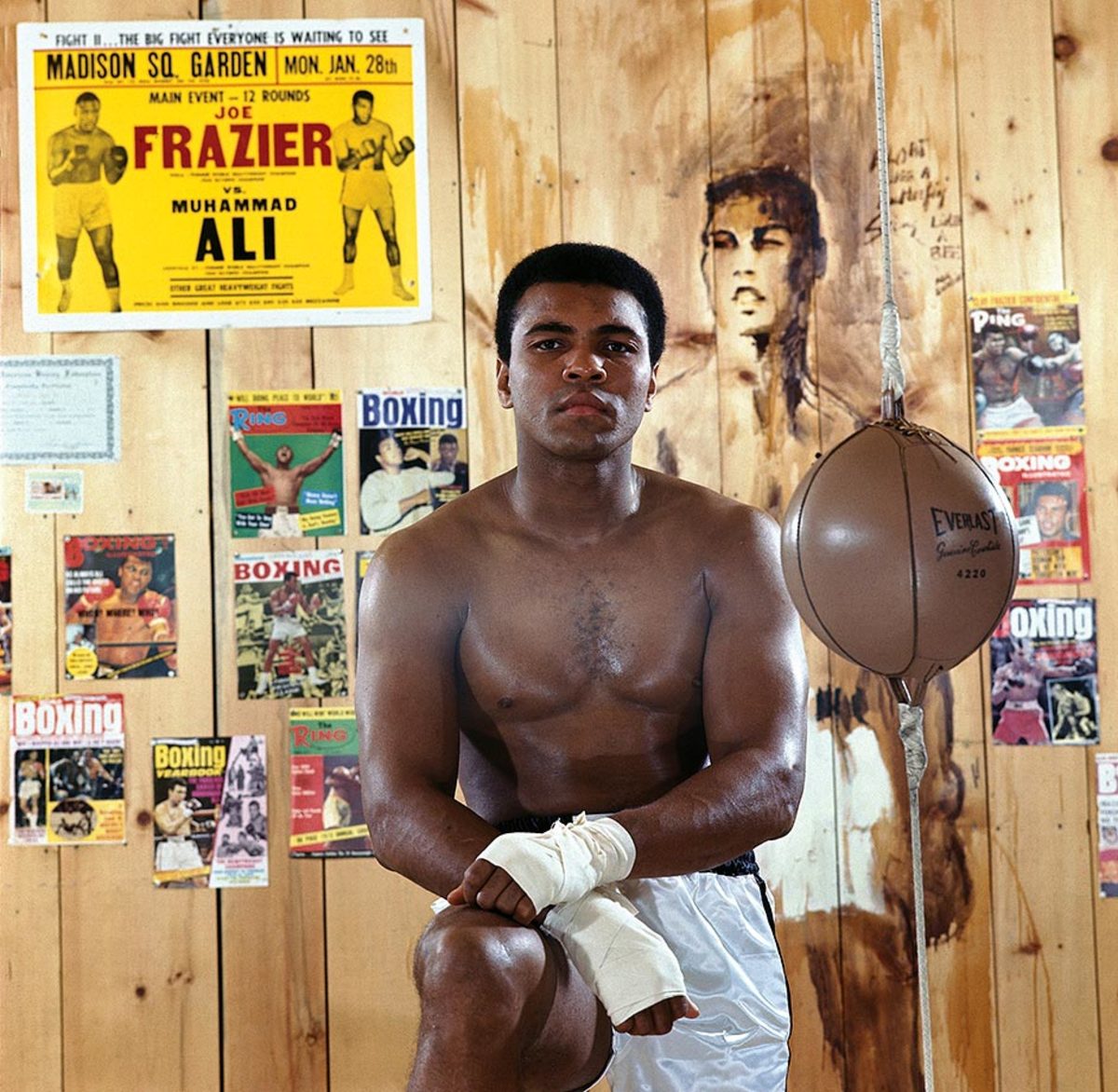
Ali poses in front of posters and magazine covers from throughout his career at his training camp cabin in Deer Lake in 1974.
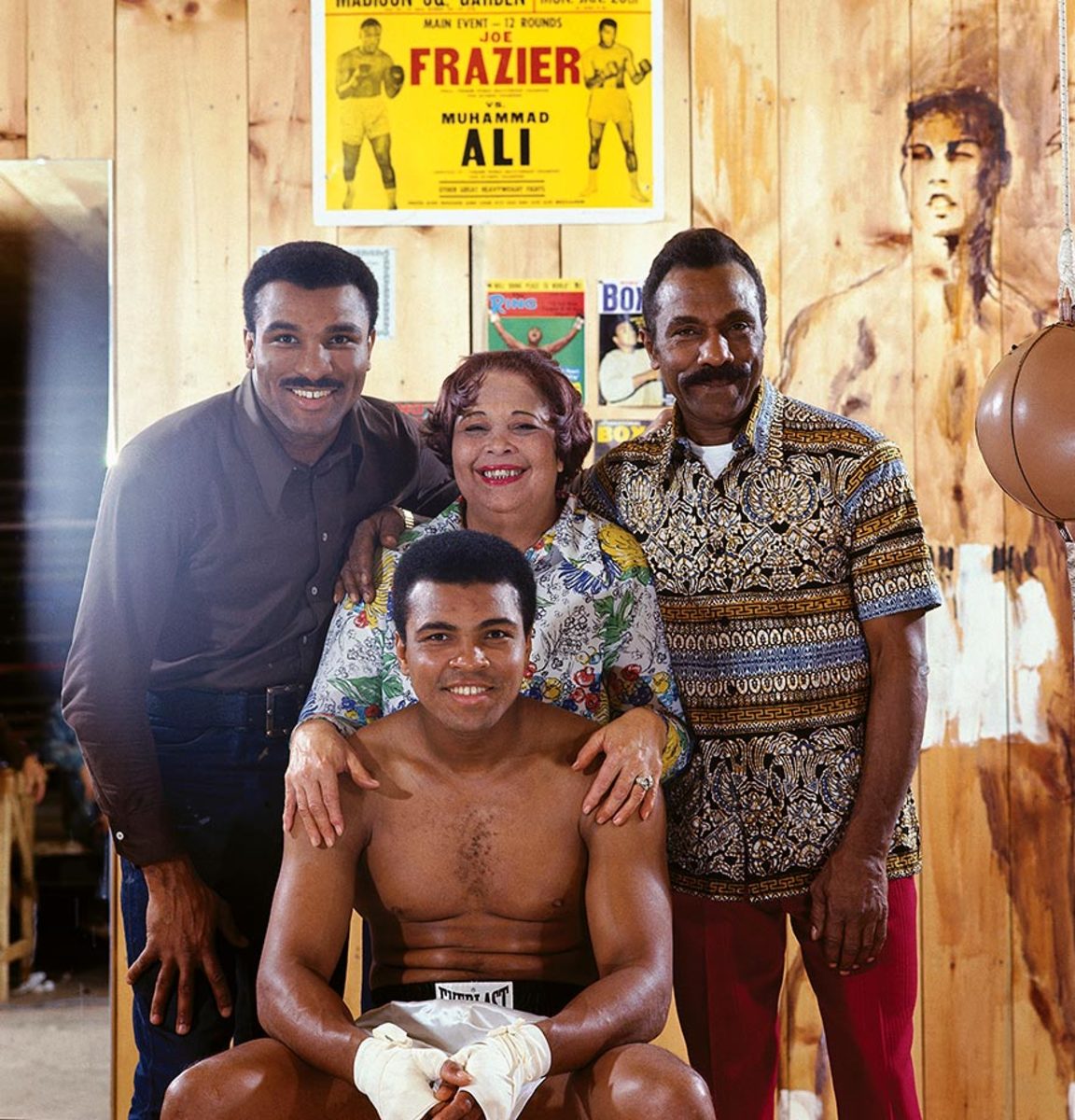
Ali poses with members of his family in front of a poster from his first fight with Joe Frazier. Ali's brother, Rahman Ali; mother, Odessa Clay; and father, Cassius Clay Sr. stand behind the boxer.
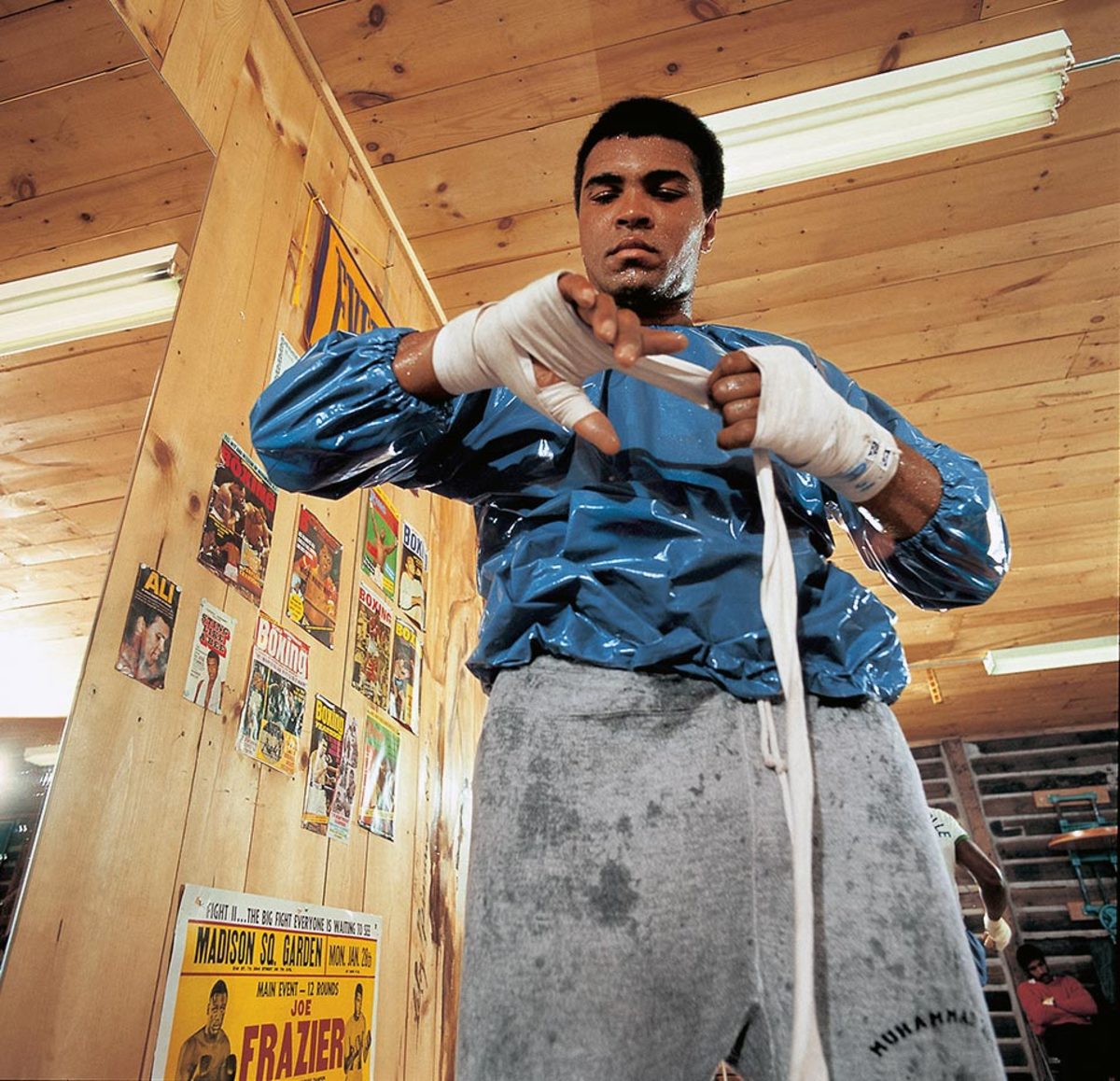
Less than three weeks before his rematch with Joe Frazier on Jan. 28, 1974, Ali wraps his hands while wearing a sauna suit at his training camp cabin.
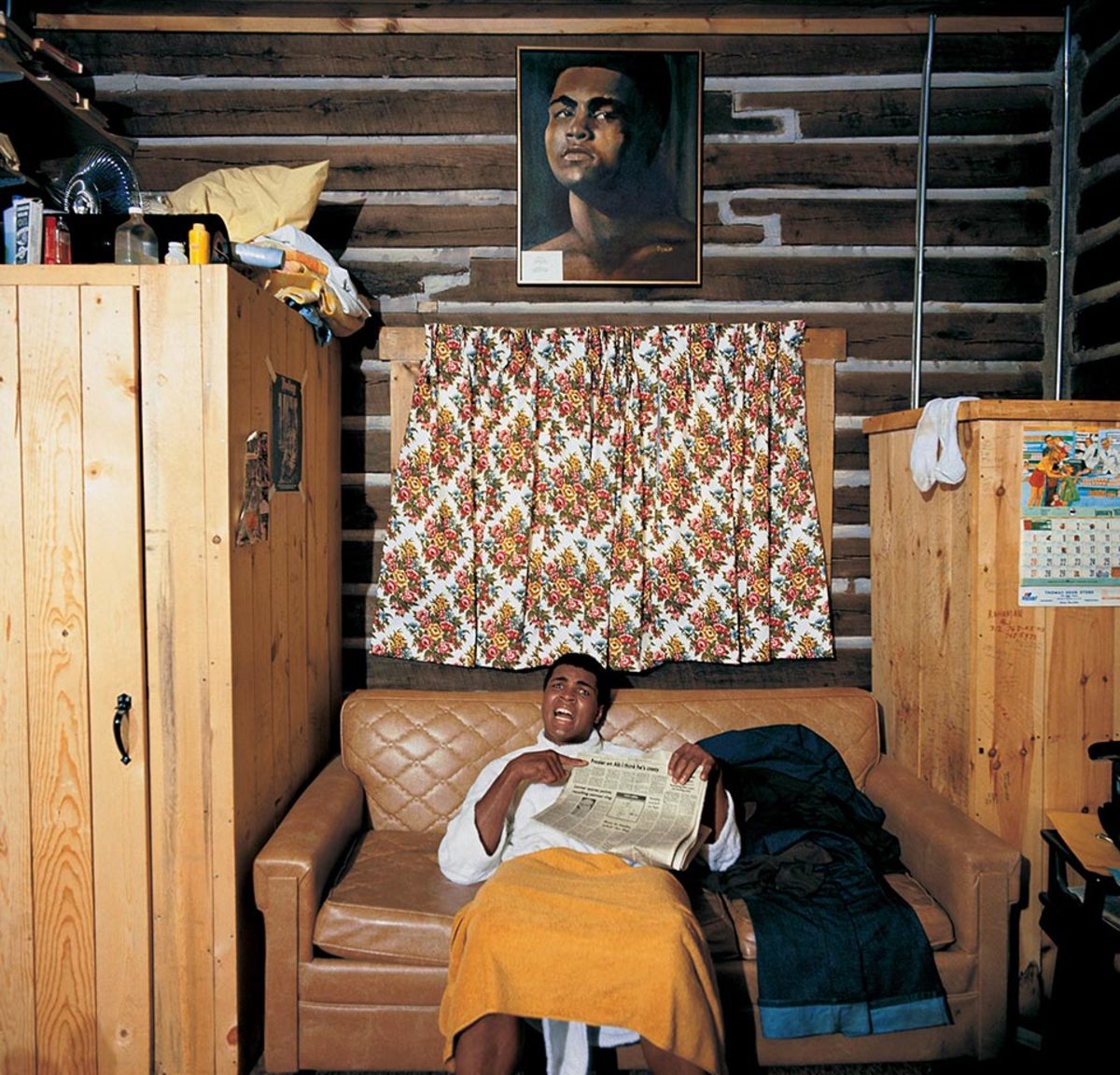
Ali holds a newspaper at his cabin in January 1974. He is pointing to a headline that reads, "Frazier On Ali, I Think He's Crazy." Ali and Frazier fought for the second time later that month with Ali winning by a unanimous decision.
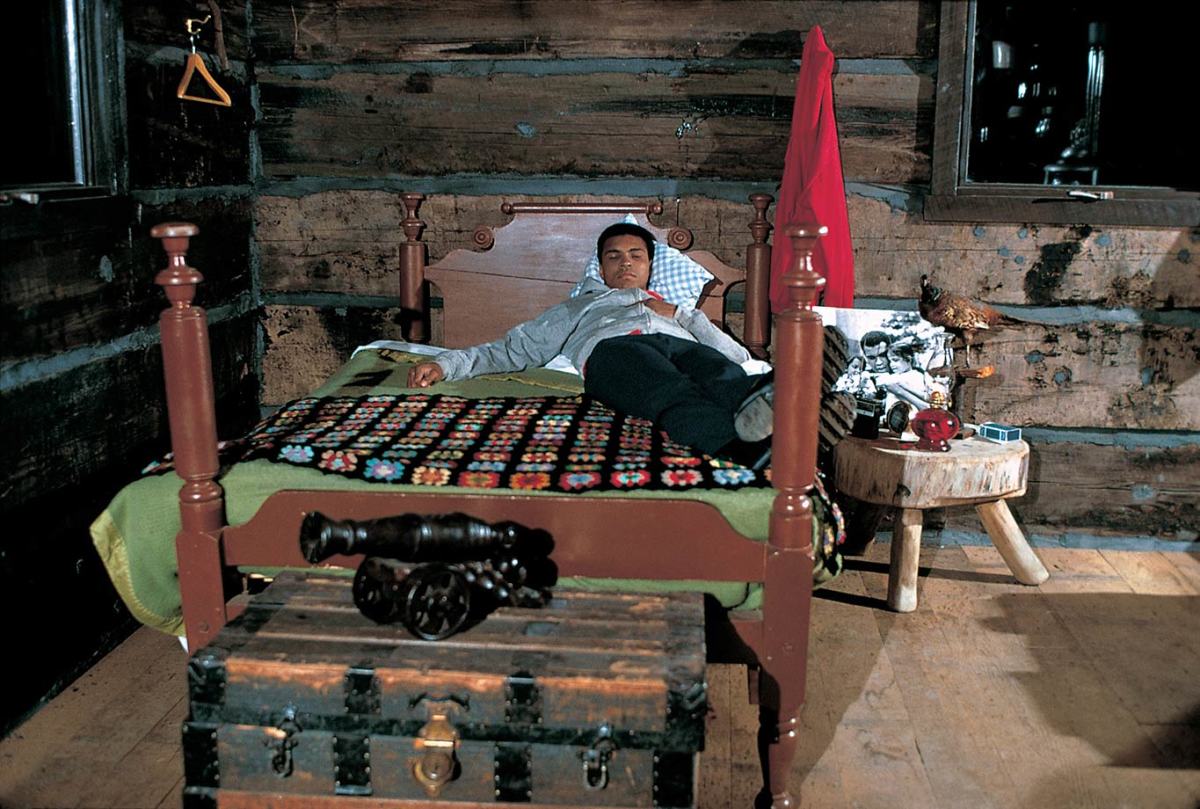
Ali lies on his bed at his cabin during the January 1974 photo shoot.
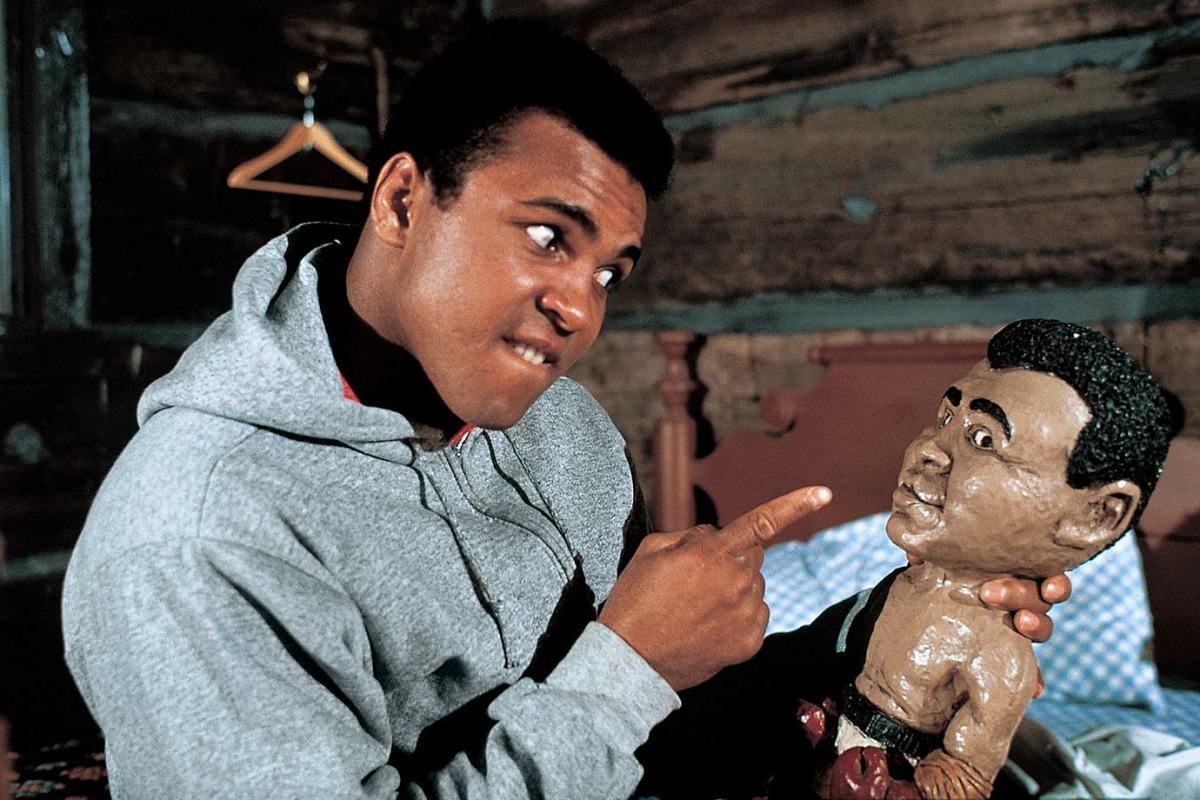
His smaller incarnation stares straight back as Ali plays with a doll of himself during the same 1974 shoot at his training camp cabin.
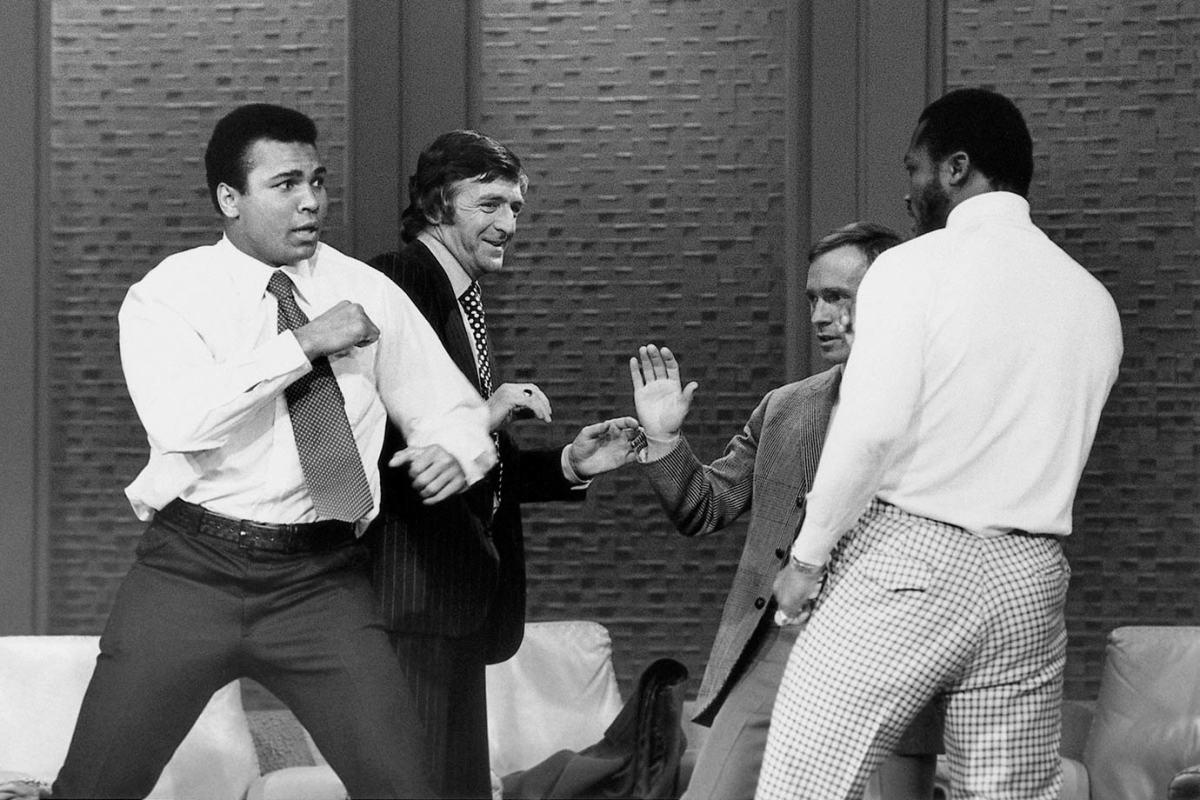
Ali and Joe Frazier fight on the set of The Dick Cavett Show while reviewing their 1971 bout in advance of their 1974 rematch. Ali called Frazier ignorant, to which Frazier took exception. As the studio crew tried to calm Frazier down, Ali held Frazier by the neck, forcing him to sit down and sparking a fight. The television set fight amped up anticipation of their January 1974 bout.
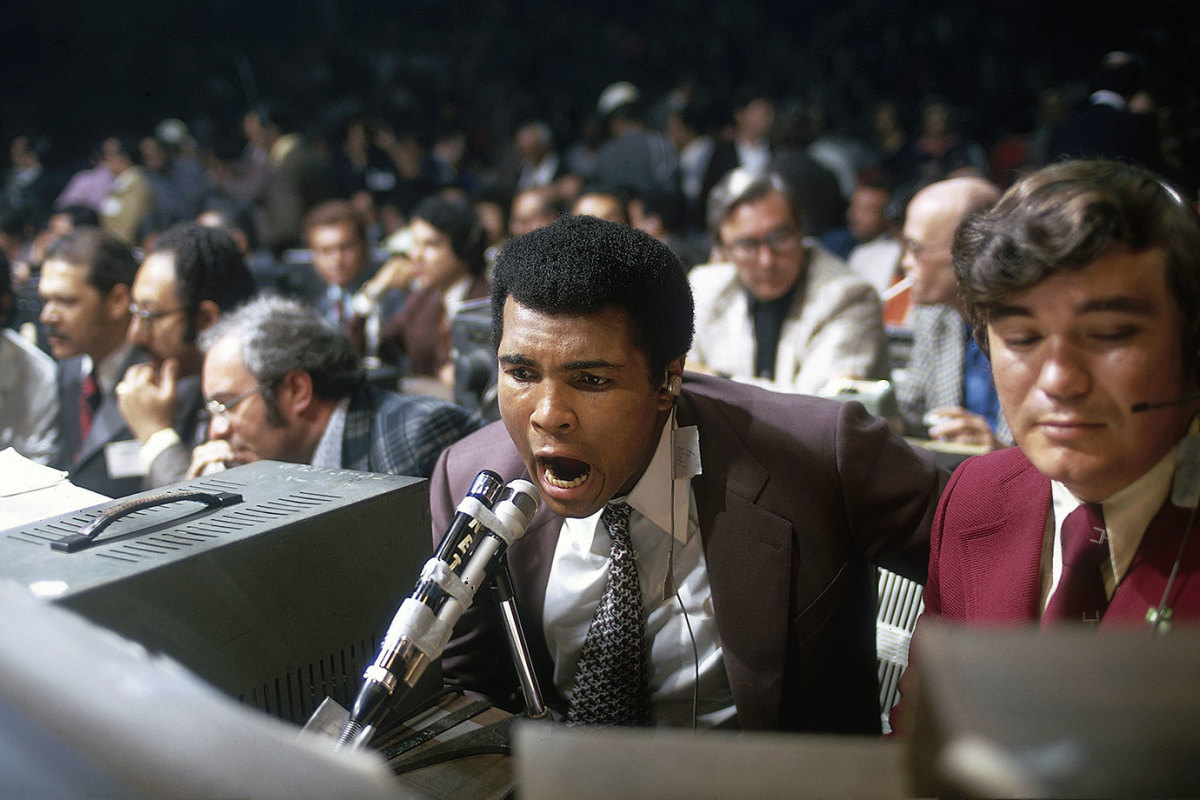
Exploring a different side of the sport, Ali broadcasts the fight between George Foreman and Ken Norton in March 1974. Foreman won the fight by technical knockout in the second round, setting up the showdown with Ali in Zaire.
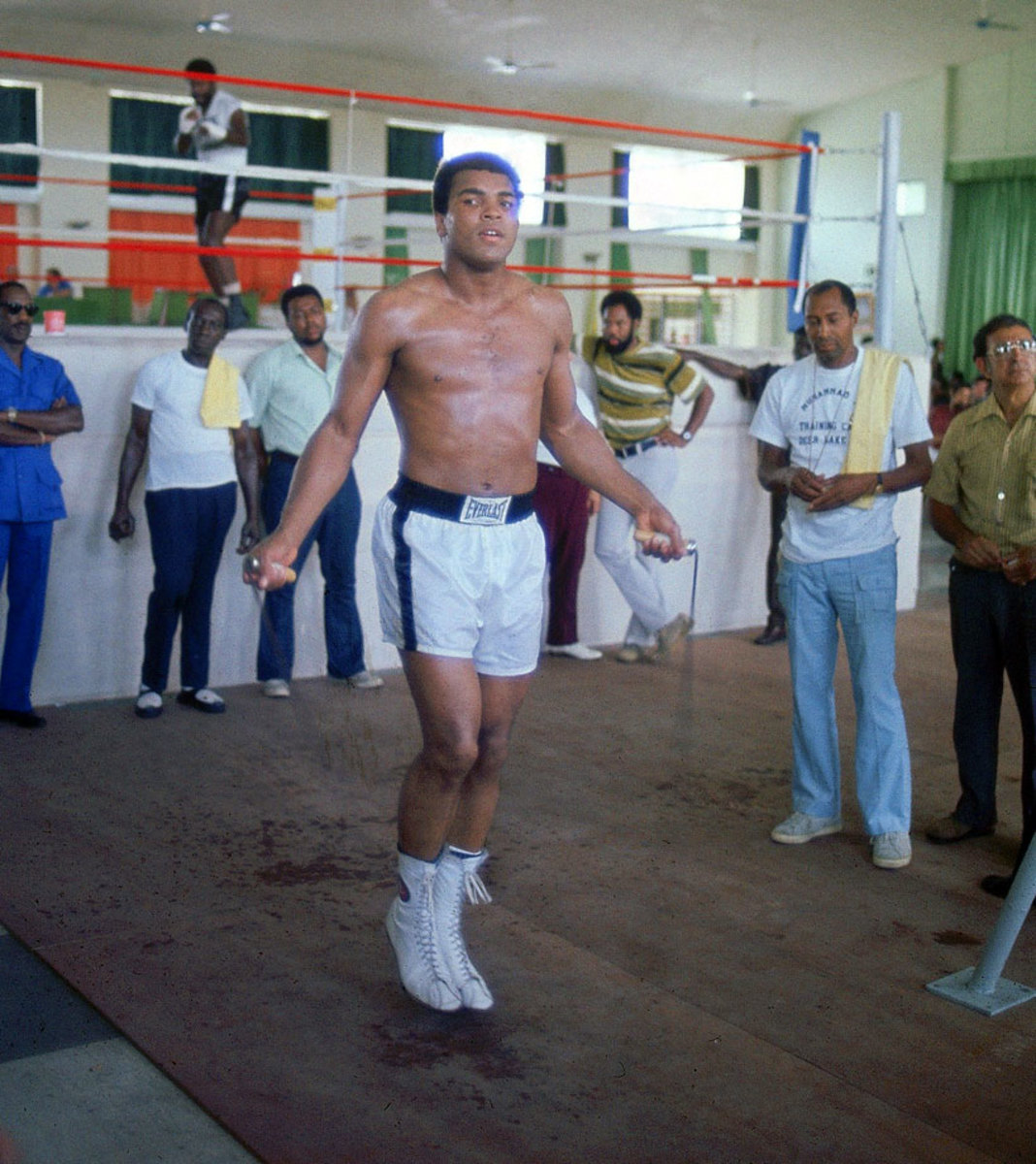
Ali jumps rope at the Salle de Congres in Kinshasa, Zaire, while training for his heavyweight title fight against George Foreman. Both Ali and Foreman spent most of the summer of 1974 training in Zaire to adjust to the climate.
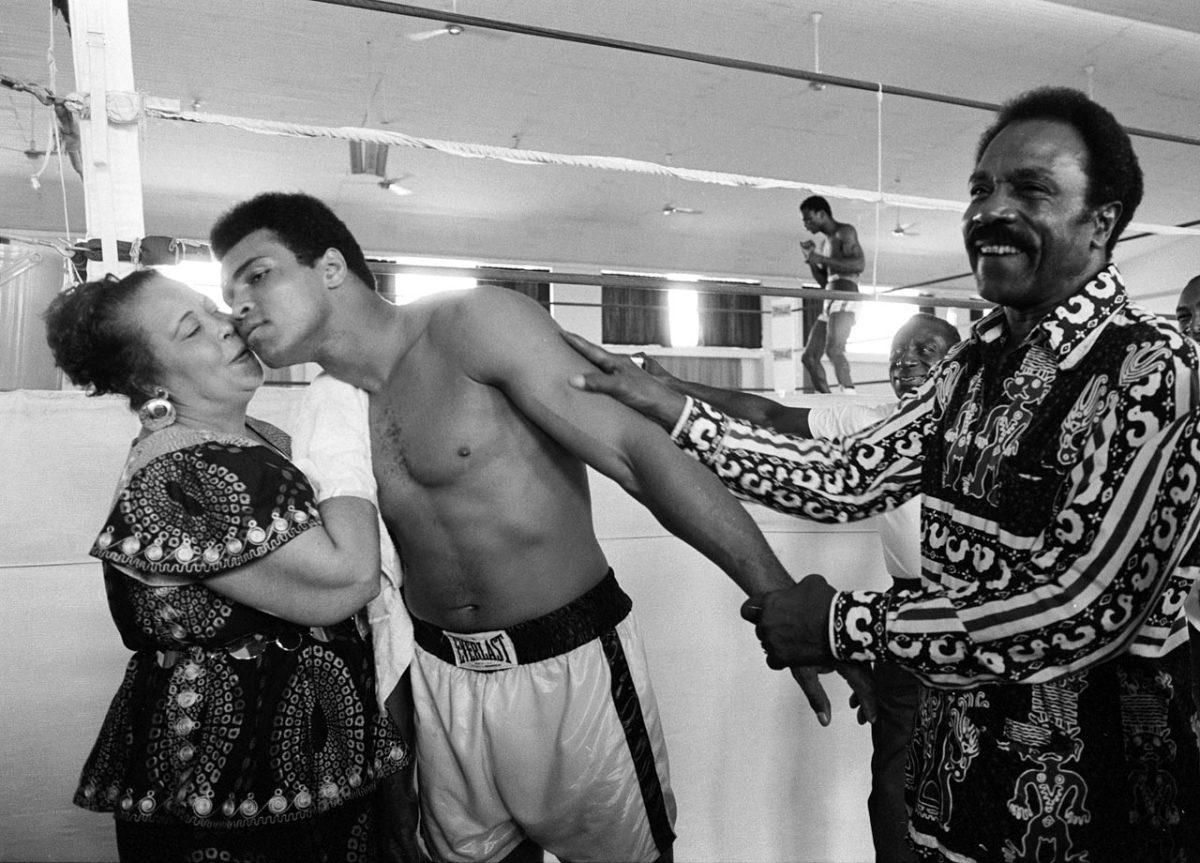
While training before his fight with George Foreman, Ali kisses his mother, Odessa Clay, while his father, Cassius Clay Sr., looks on. Ali's superior strategy and ability to take a punch led him to his upset victory as he absorbed body blows from Foreman before he responded with powerful combinations to Foreman's head.
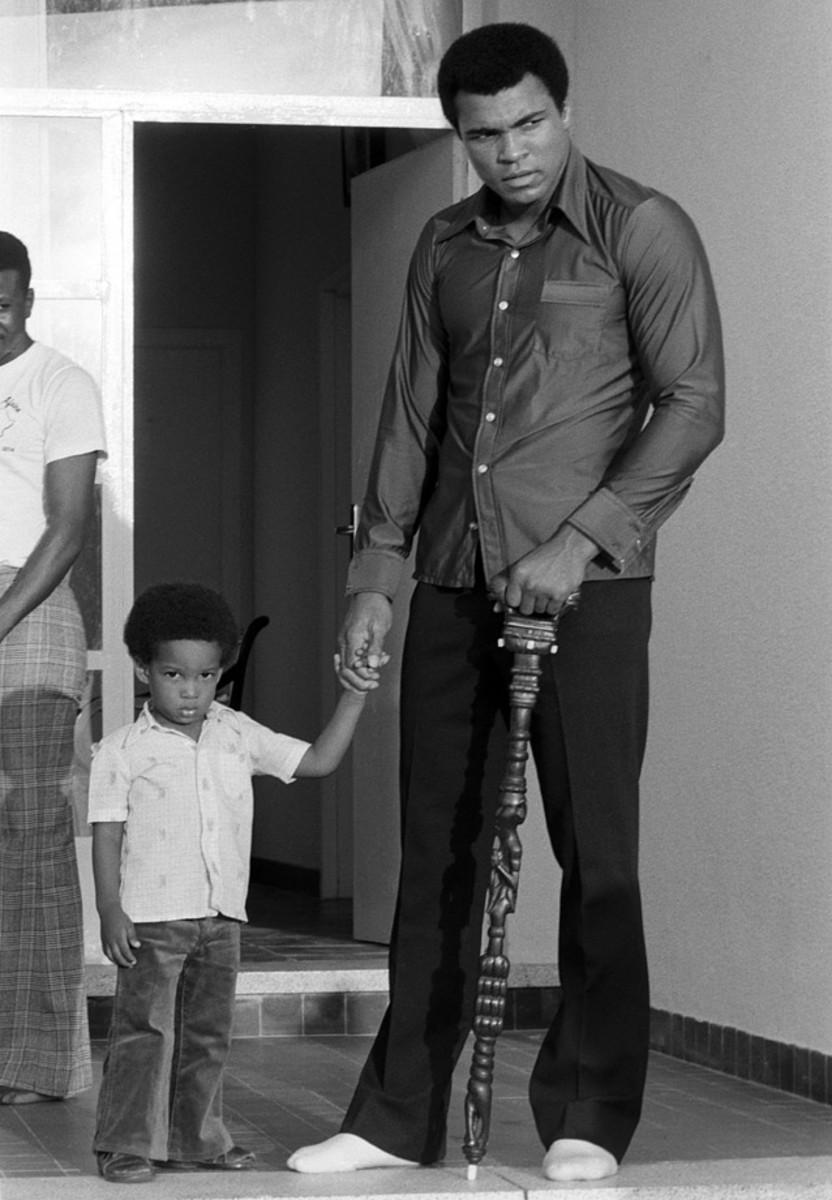
Four days before the fight, Ali holds the hand of his son Ibn in Zaire. Ali successfully courted the favor of the Zaire crowd, prompting chants of "Ali bomaye!" — translated as "Ali, kill him!"
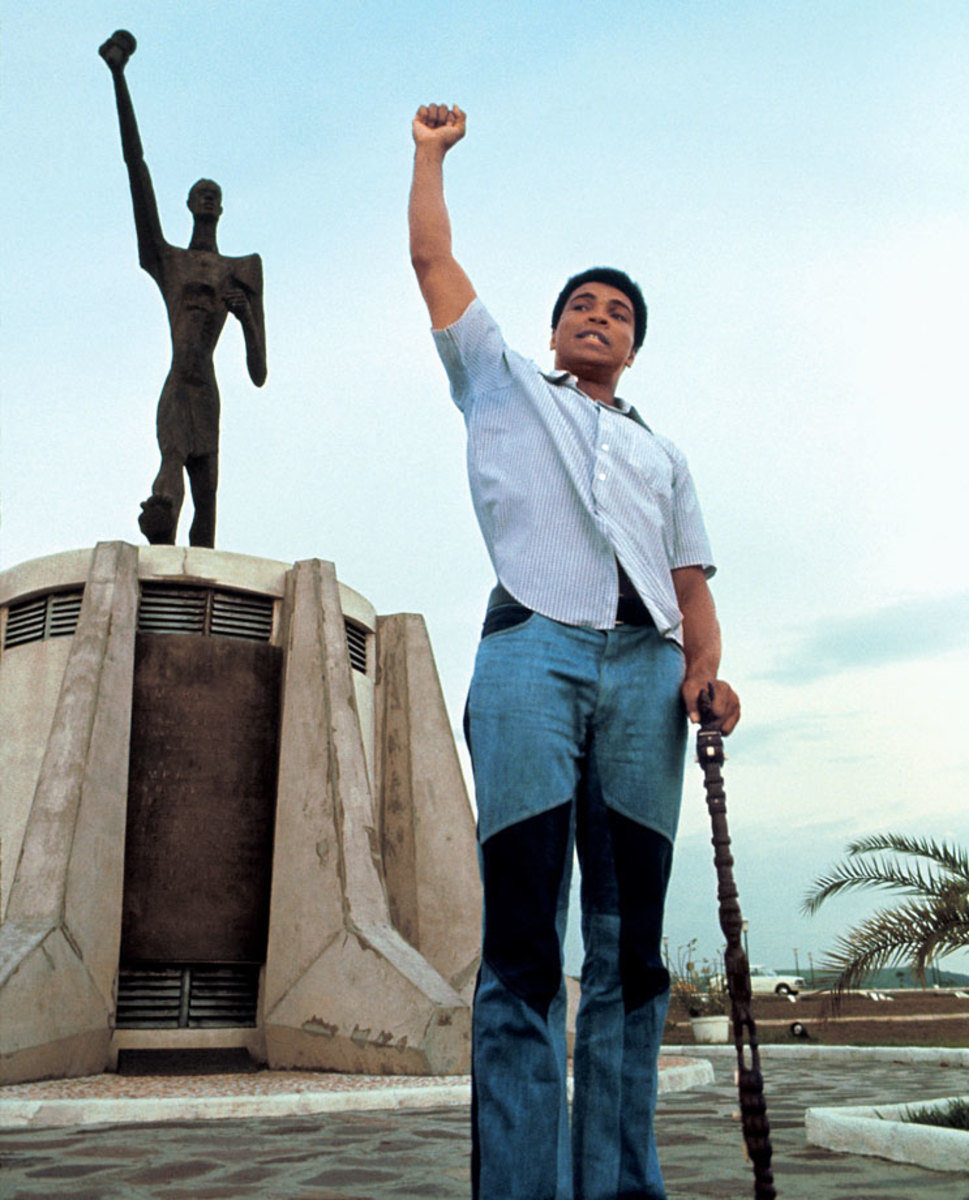
Ali poses in front of the Le Militant statue at the presidential complex that was the site of Ali's January heavyweight title bout with Foreman. The fight was originally set for a month earlier, but Foreman suffered a cut near his eye during training, forcing a delay.
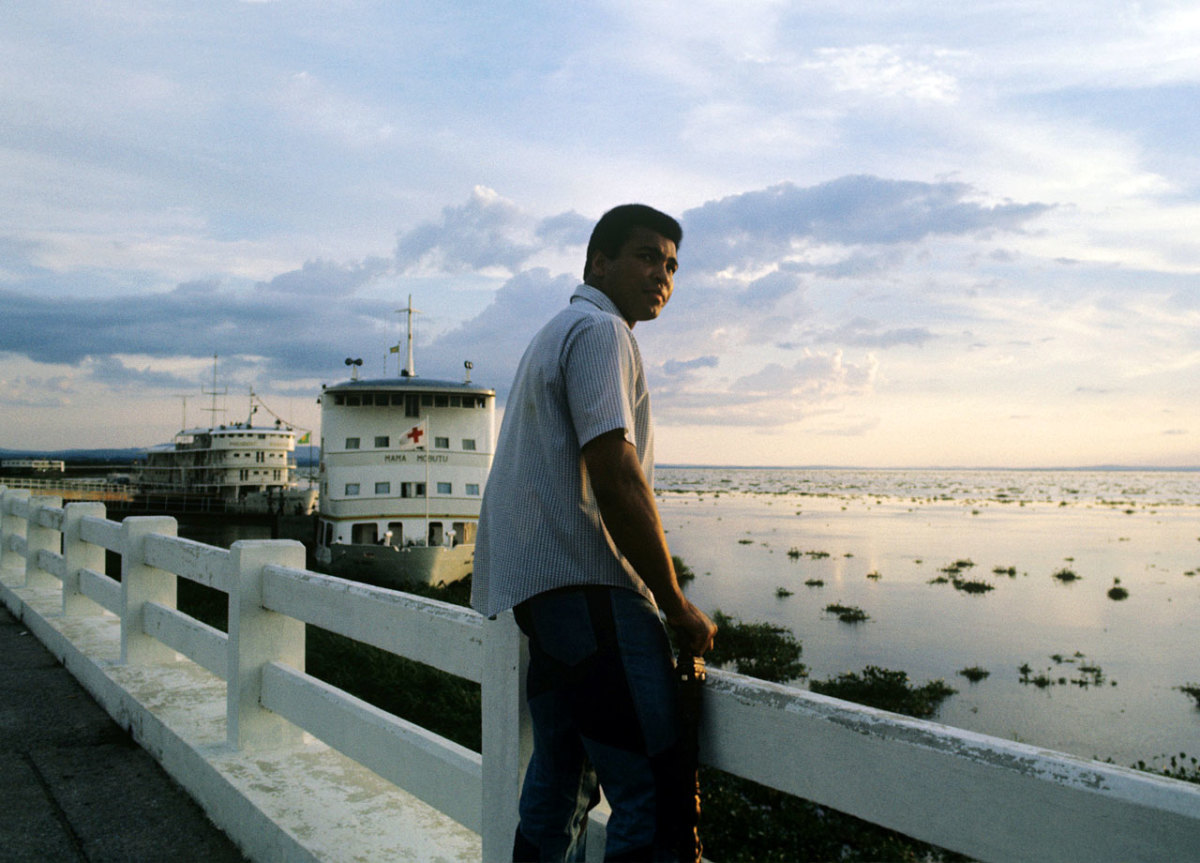
Ali stands against the railing on the River Zaire watching the sunset four days before the Rumble in the Jungle. The fight was sponsored by Zaire to achieve the $5 million purse promoter Don King had promised both Ali and Foreman.
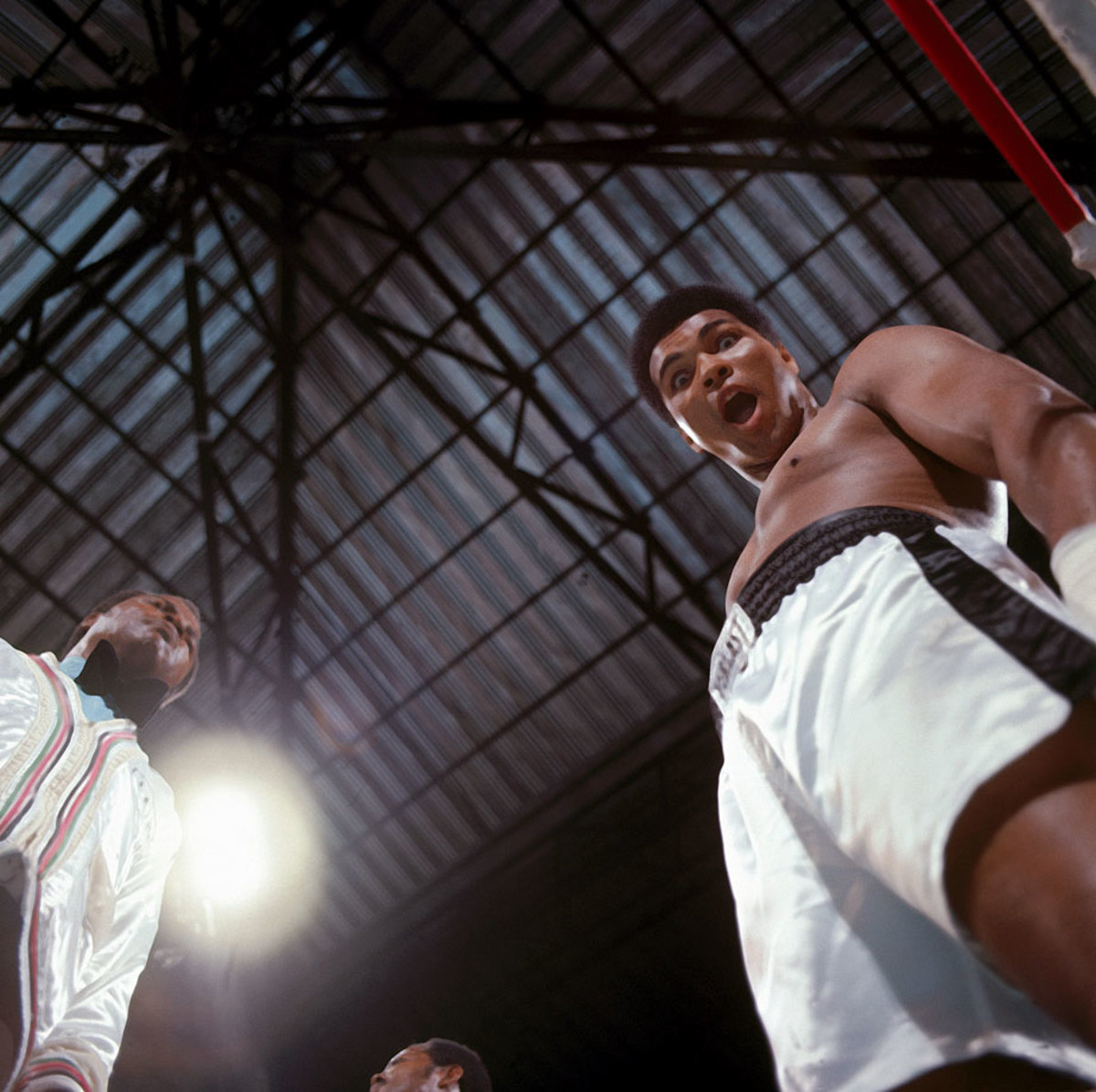
Before employing his famous rope-a-dope strategy against Foreman, Ali makes a face at the camera. Ali allowed Foreman to throw many punches but only into his arms and body, and when Foreman tired himself out from the mostly ineffective punches, Ali took control of the fight.
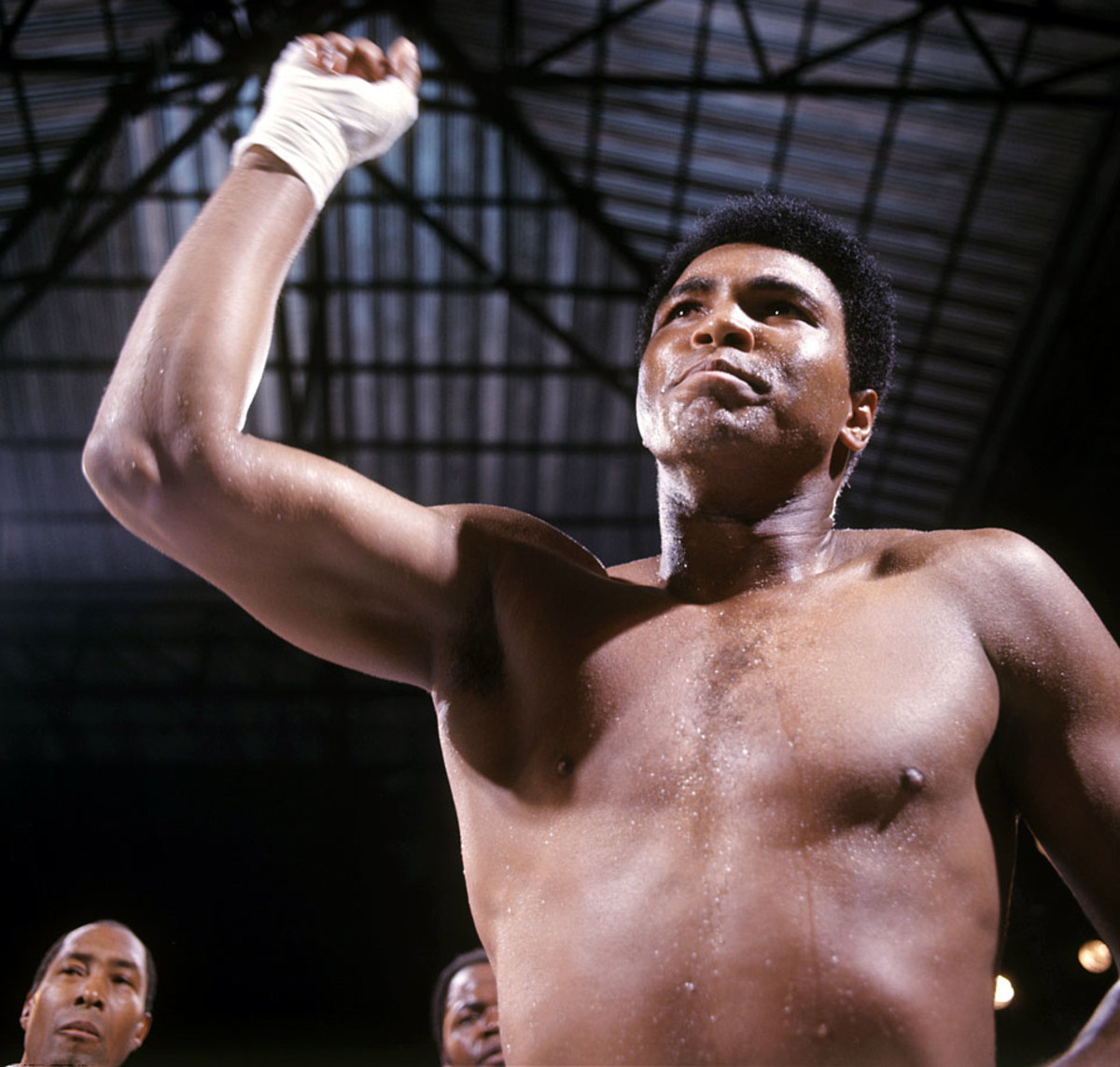
Ali points before his bout with Foreman. The victory over his favored opponent made him the heavyweight champion of the world for the first time since he was stripped of his titles in 1967.
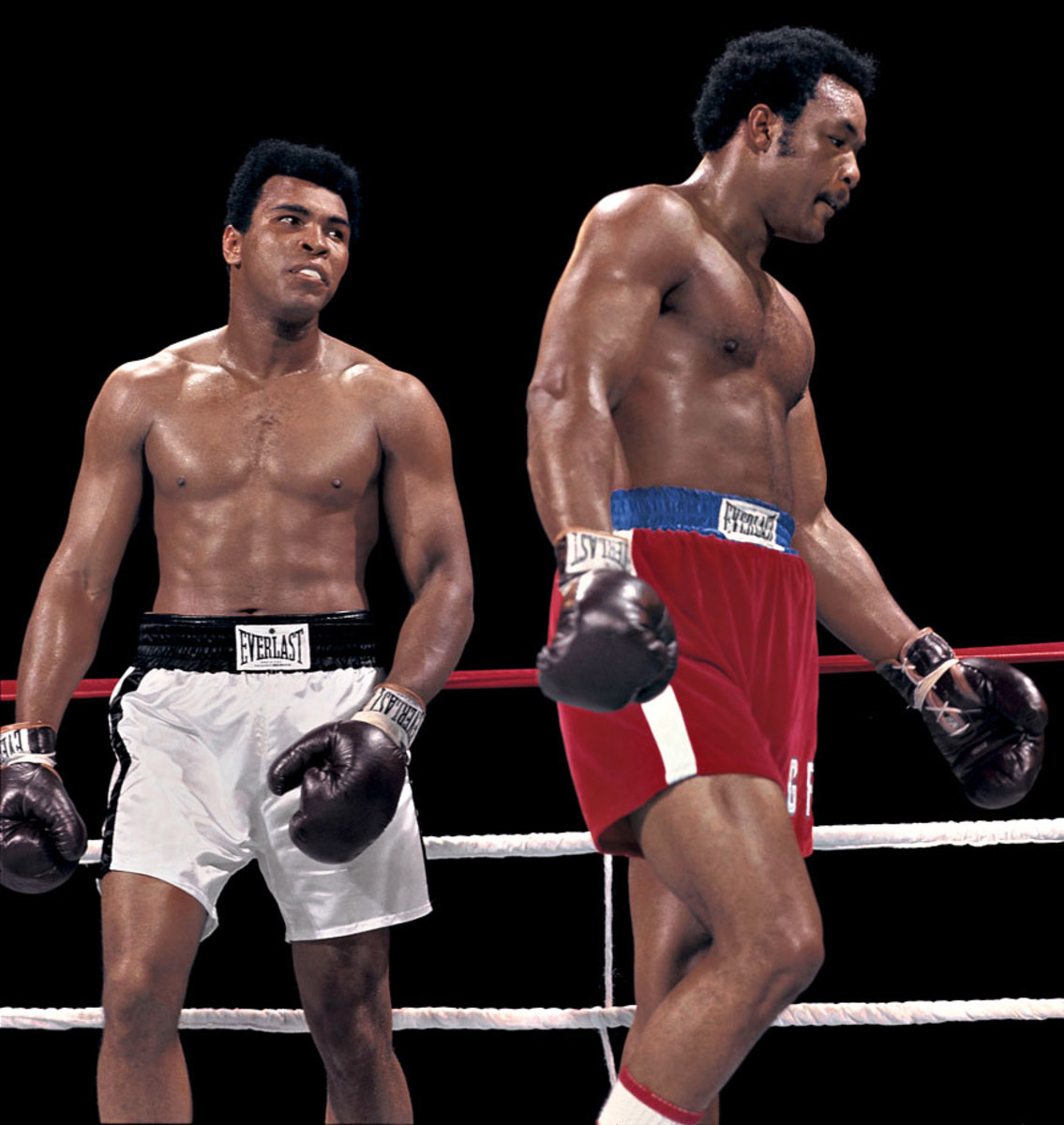
Ali stares at George Foreman during the Rumble in the Jungle. Ali earned his shot at the heavyweight title by defeating Joe Frazier in January 1974, avenging a loss three years earlier.
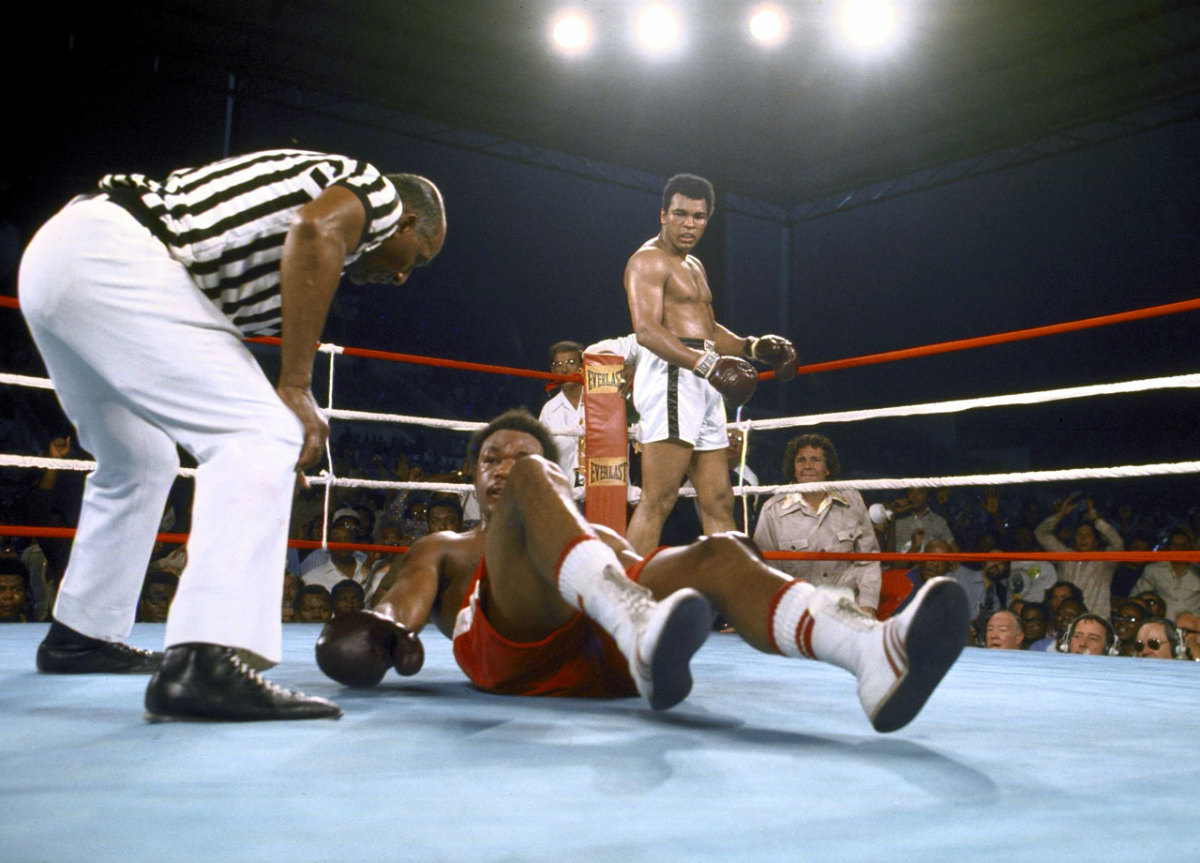
Foreman lies down on the canvas as Ali stands in the background during the Rumble in the Jungle. Ali knocked Foreman down with a five-punch combination in the eighth round, and referee Zack Clayton counted him out.
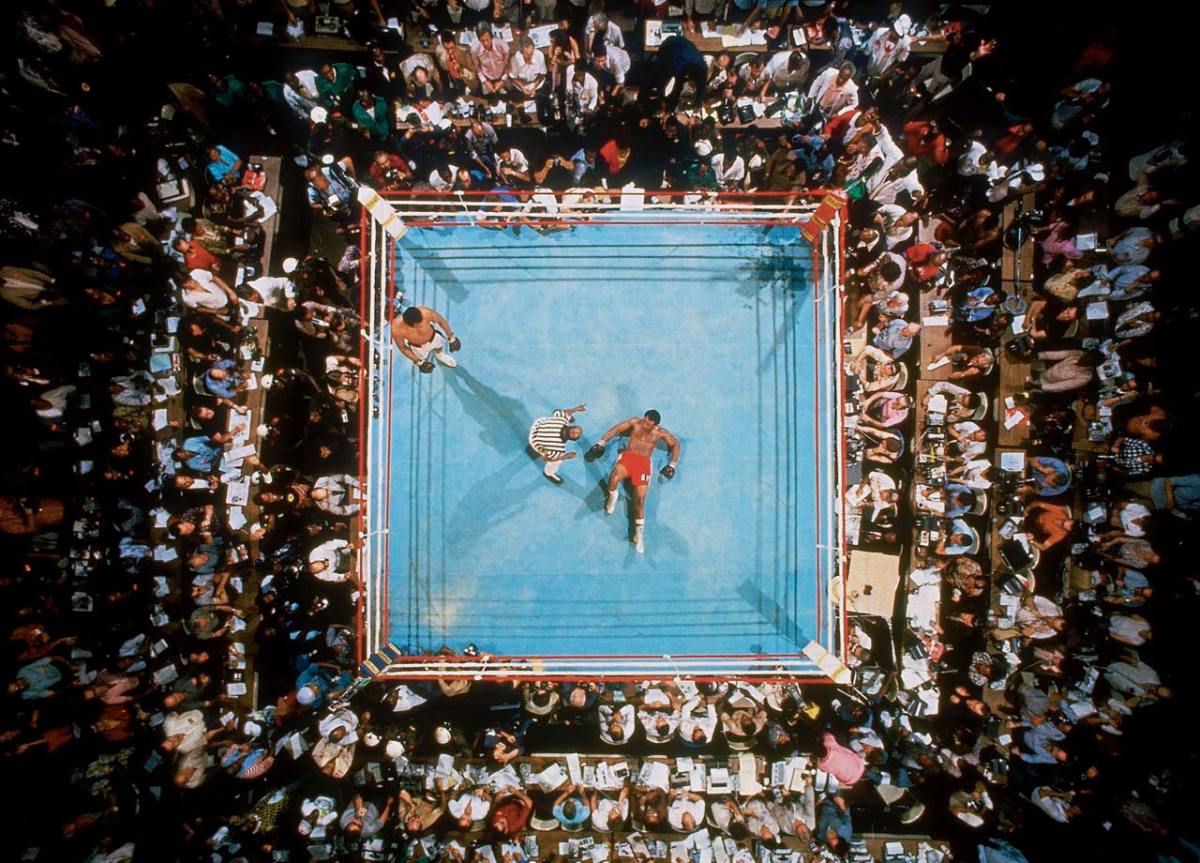
Big George stares at the ceiling as referee Zack Clayton counts him out in the eighth round. The victory made Ali, once again, the heavyweight champion of the world.
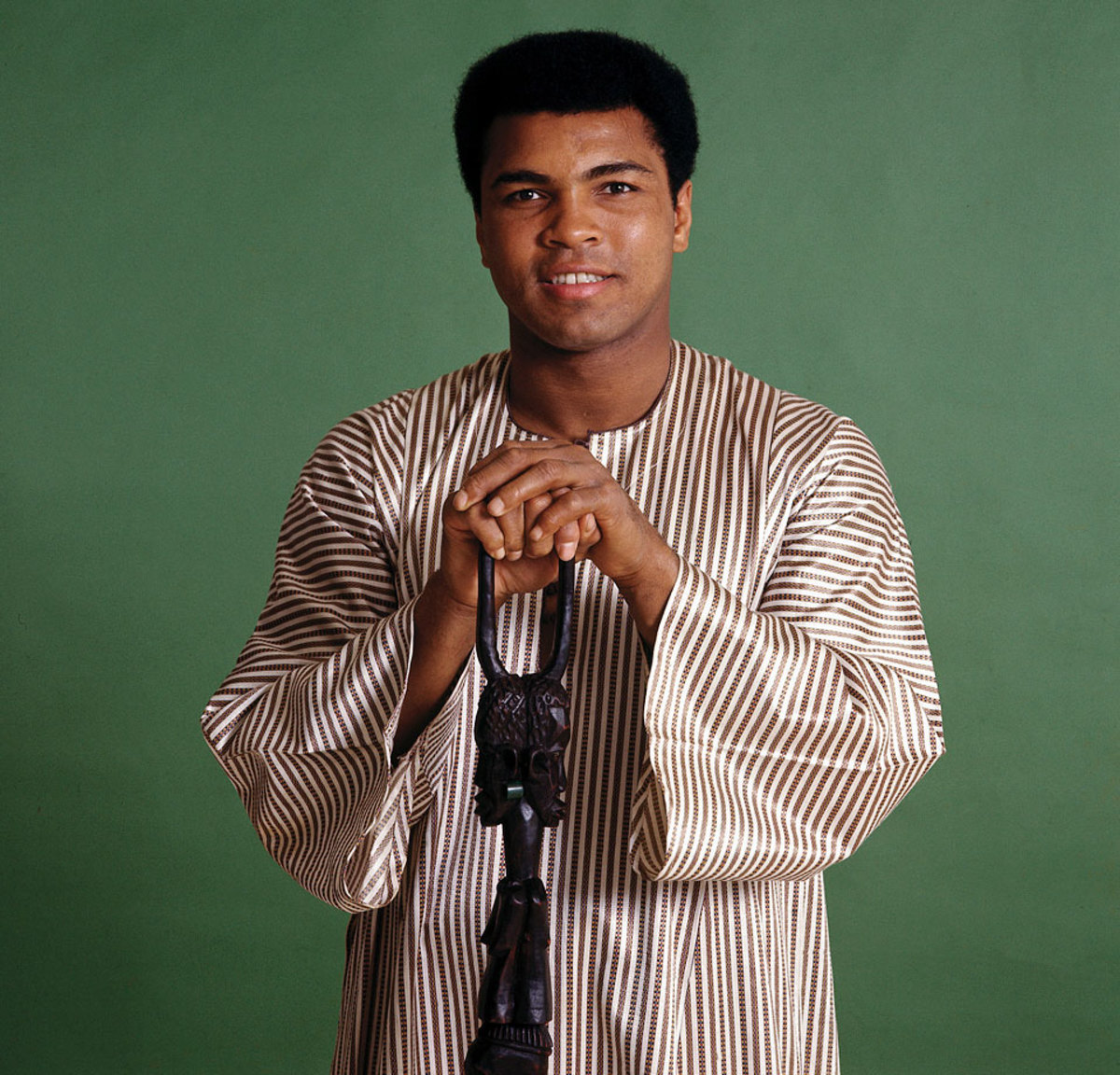
Ali poses for a portrait after being selected as the Sports Illustrated Sportsman of the Year in 1974. Ali wore a dashiki, a men's garment widely worn in West Africa. He also brought the walking stick given to him by Zaire's president.
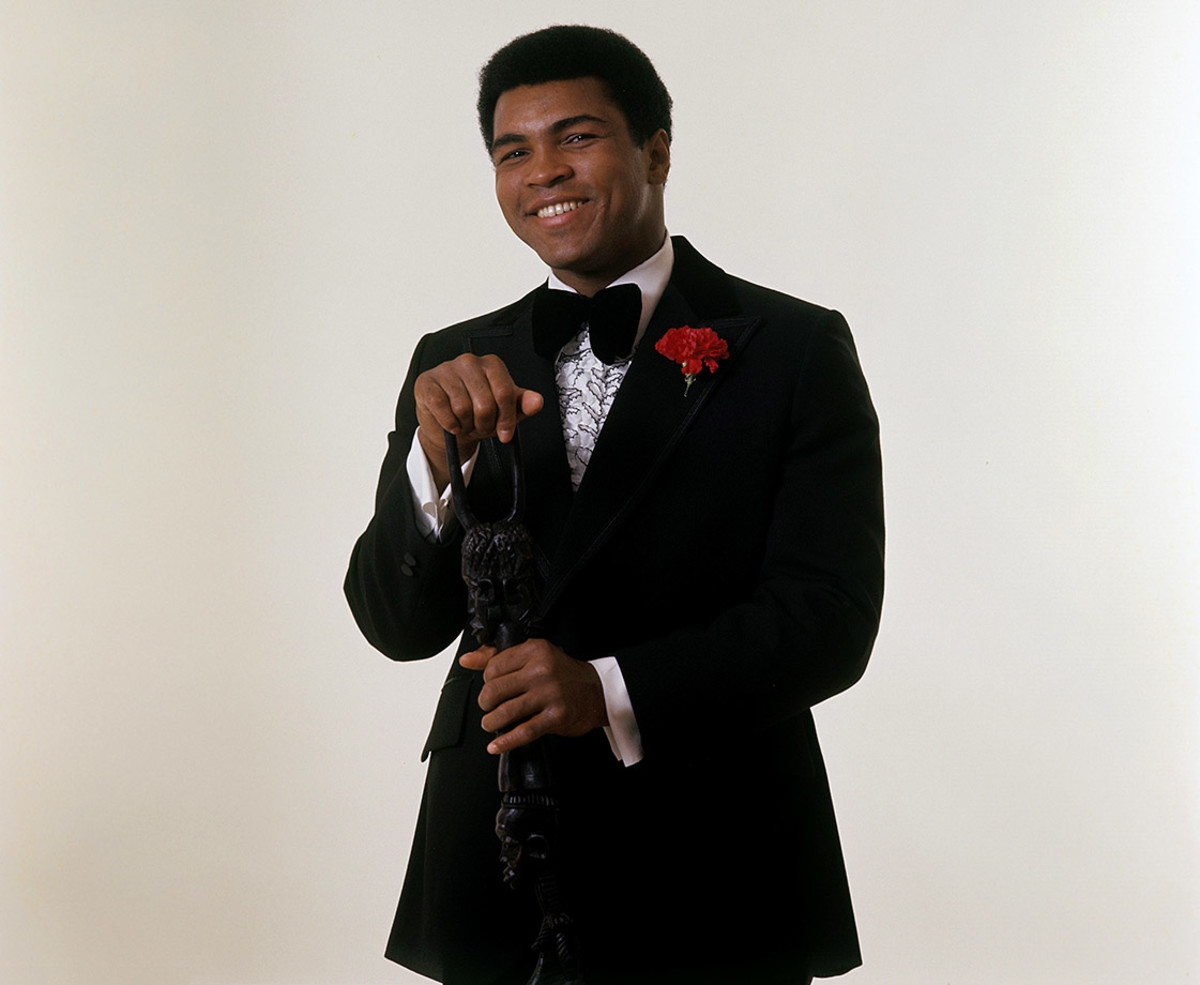
This time Ali wears a tuxedo, but keeps the walking stick, during the November photo shoot for Sports Illustrated's Sportsman of the Year.
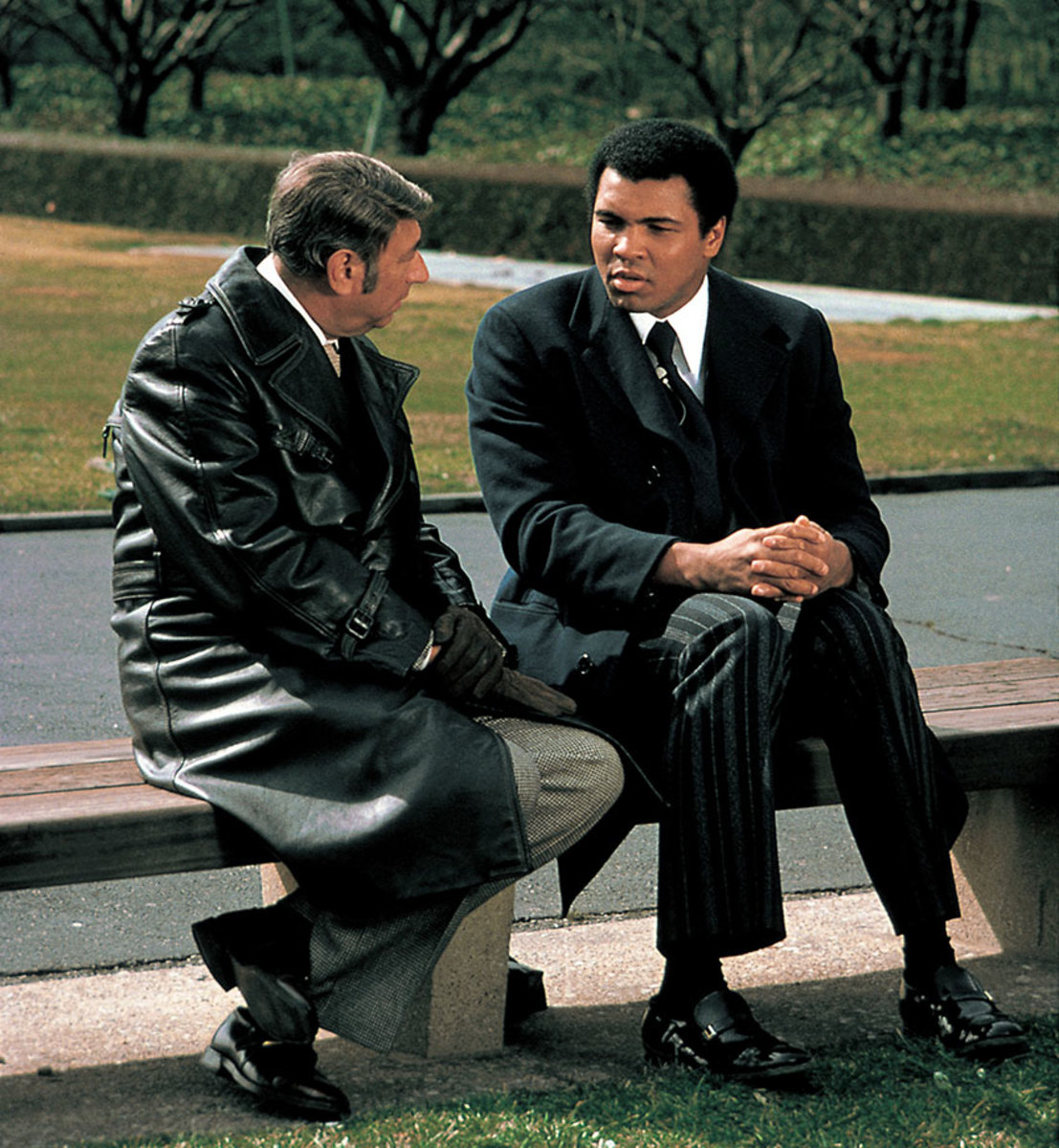
Ali talks with Howard Cosell outside of the United Nations Headquarters for a segment on the Wide World of Sports. Later that day, Ali held a press conference to announce that he would donate part of the proceeds from his fight against Chuck Wepner to help Africans in the Sahel drought.
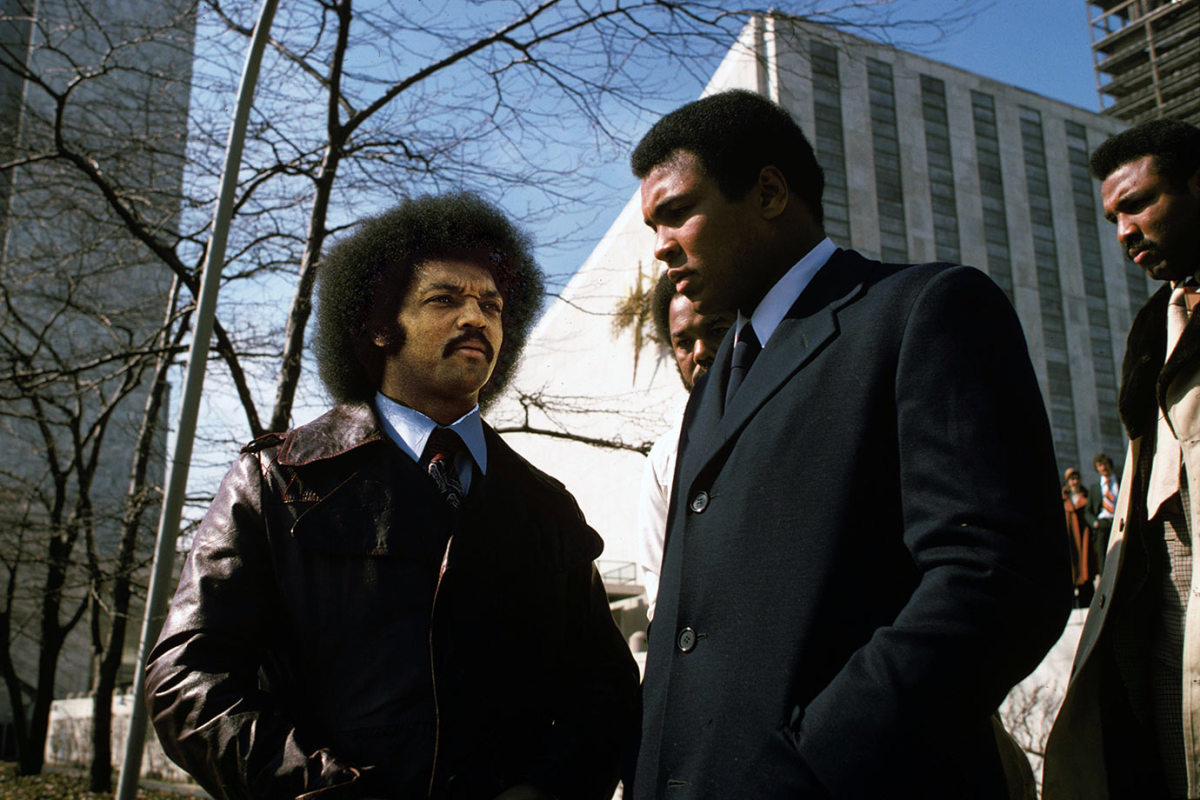
Ali talks with Reverend Jesse Jackson outside of the United Nations Headquarters before a press conference to announce that he would donate part of the proceeds from his fight against Chuck Wepner to help Africans in the Sahel drought.
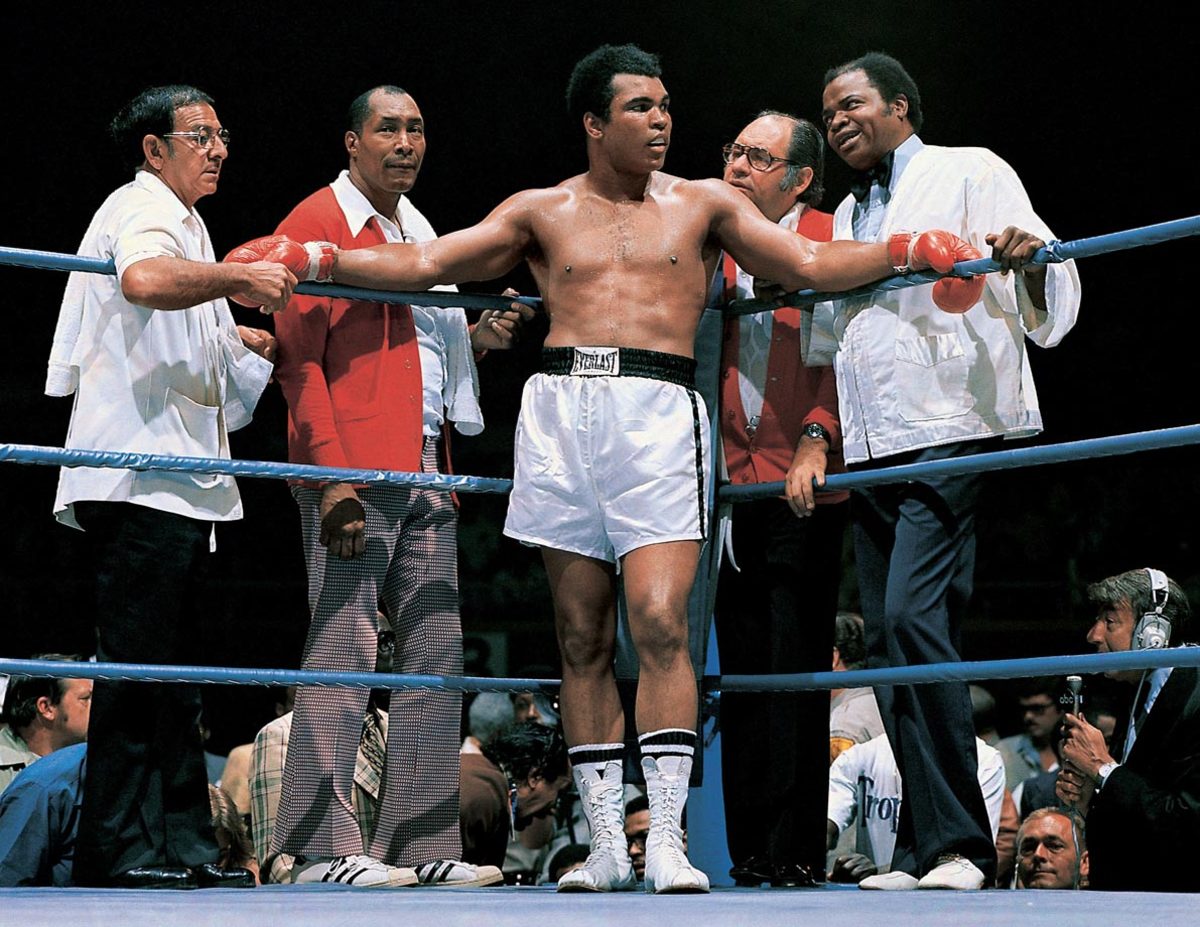
Ali stands with trainer Angelo Dundee, assistant trainer Wali Muhammad, physician Dr. Ferdie Pacheco and assistant trainer Drew Bundini Brown before his bout with Ron Lyle in May 1975. Ali won the fight by technical knockout in the 11th round.
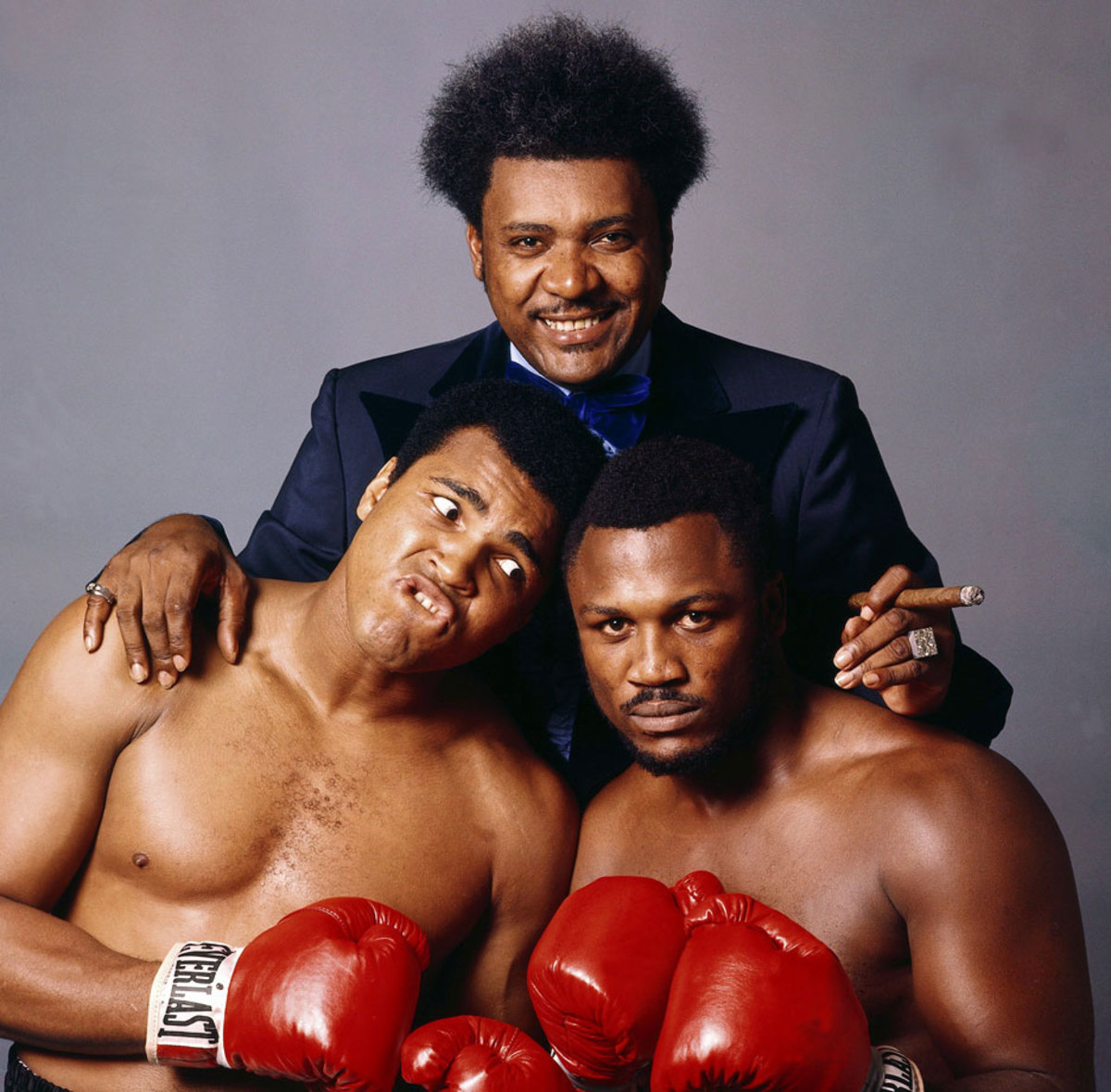
Along with Don King and Joe Frazier, Ali sat for a portrait leading up to the Thrilla in Manila. Ali verbally abused Frazier during the buildup to the fight, telling the media that "it will be a killa and a thrilla and a chilla when I get the gorilla in Manila."
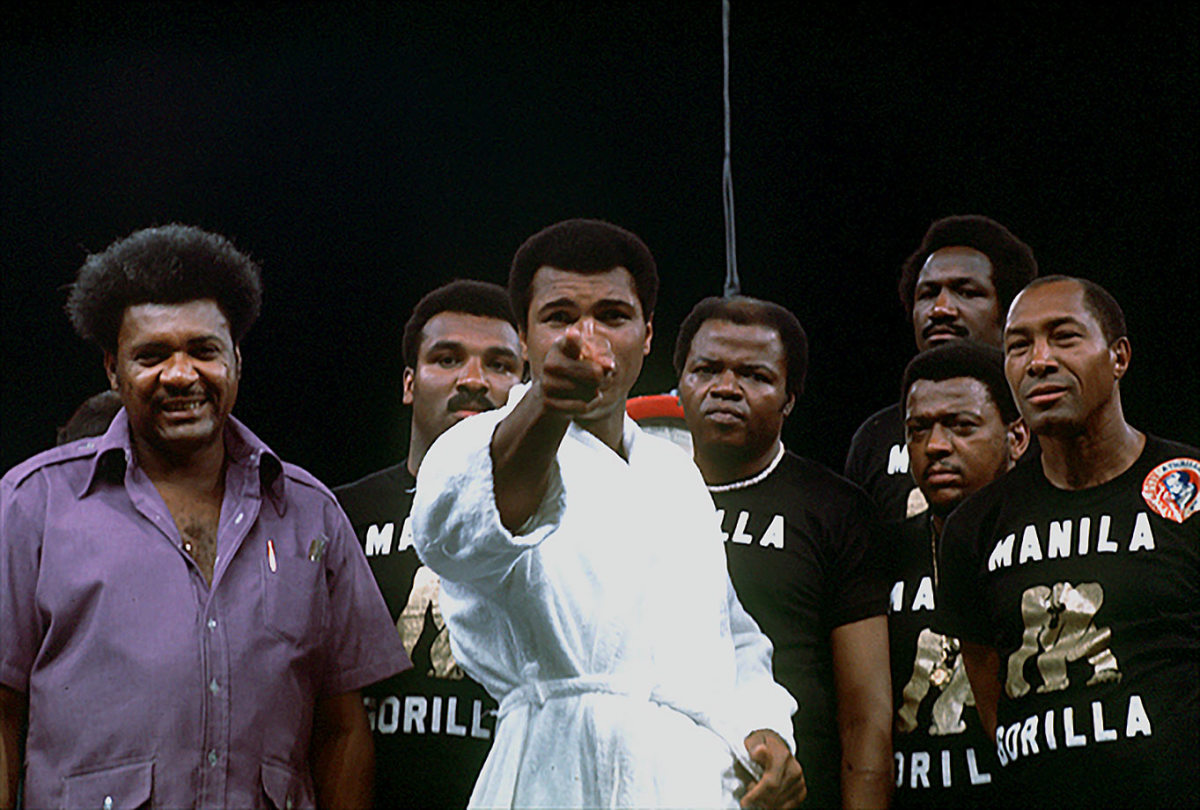
Ali points at the camera with Don King and his training staff behind him before the weigh-in for the Thrilla in Manila in October 1975. Philippine president Ferdinand Marcos offered to sponsor the bout and hold it in Metro Manila to divert attention from the turmoil in the country that had forced the imposition of martial law in 1972.
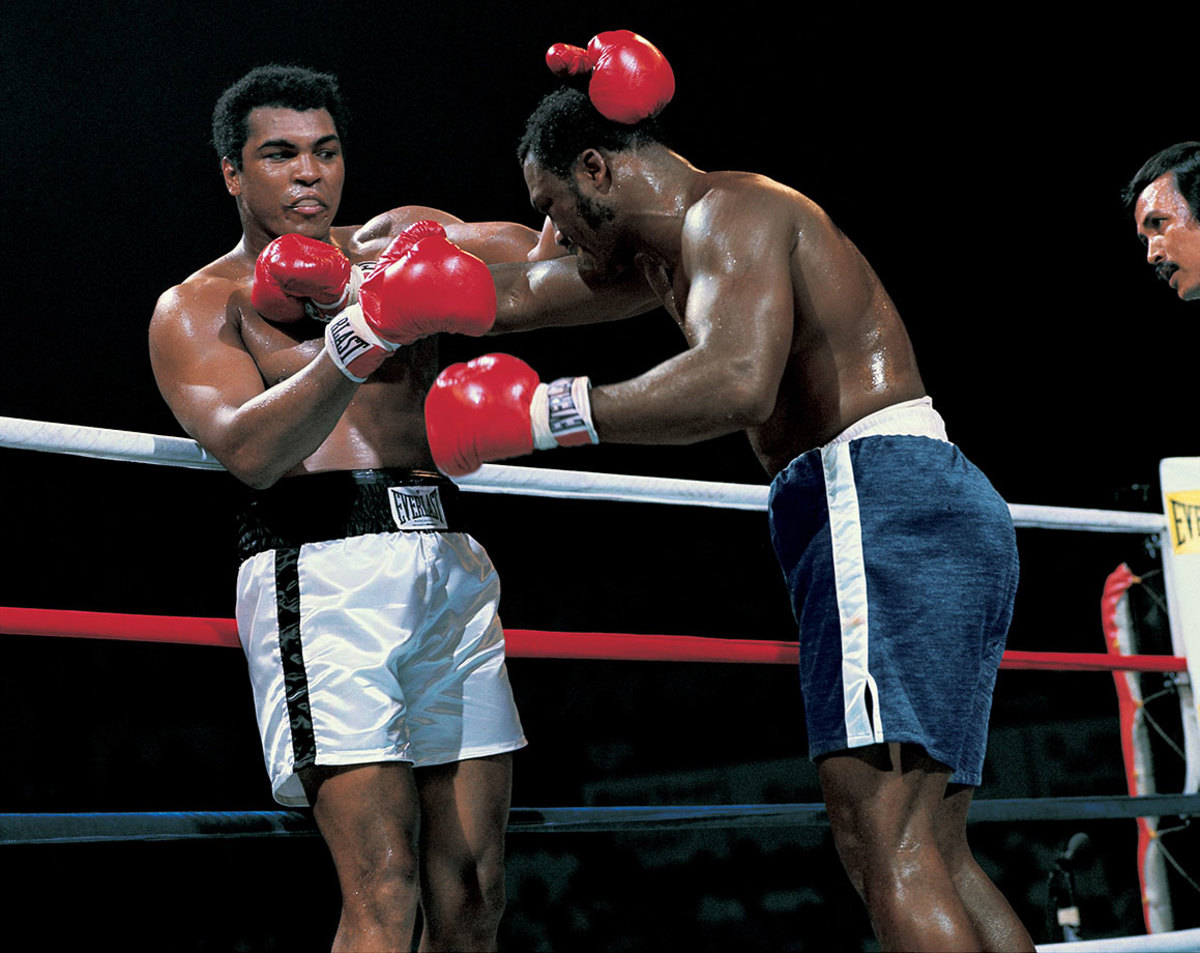
Wrapping up Joe Frazier proved more difficult than Ali expected, having thought Frazier would represent an easy payday and be unable to live up to his billing. The fight turned out to be a brutal affair.
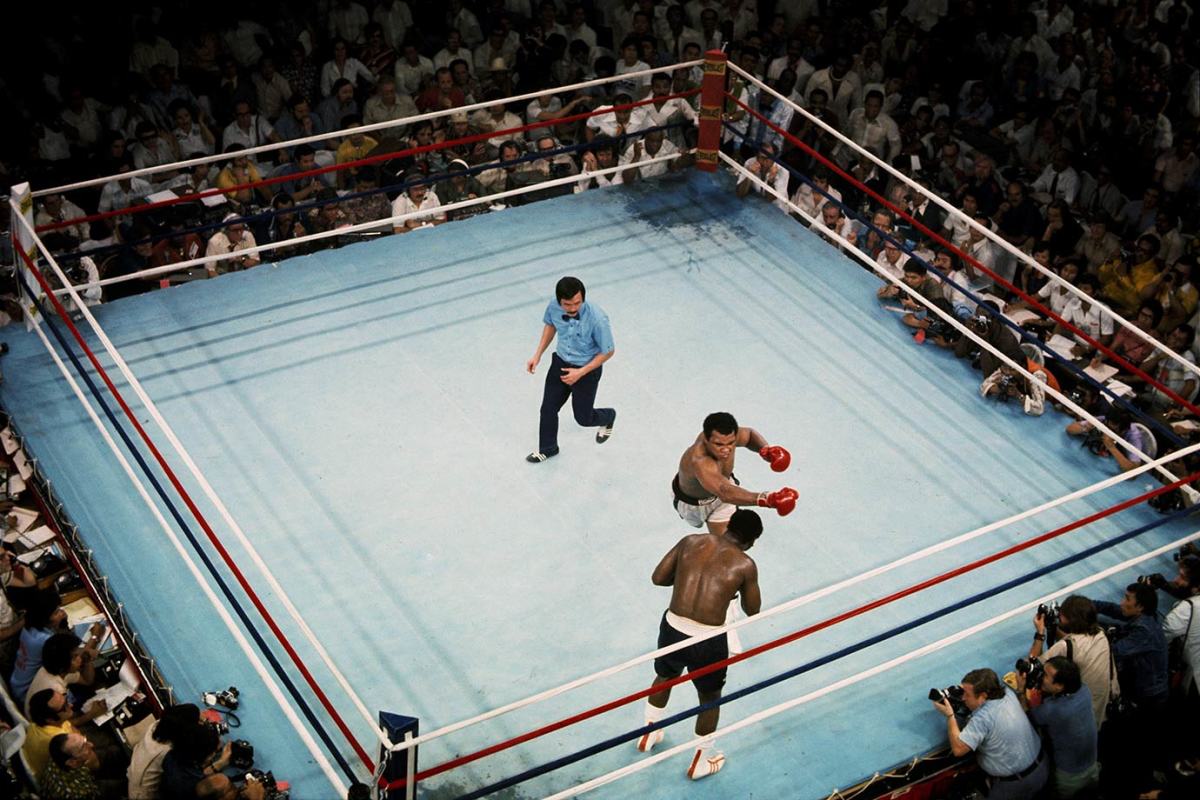
Frazier faces an Ali right hook in their fight in Quezon City, Philippines. The two fighters traded vicious blows during their 14 rounds. "Man, I hit him with punches that'd bring down the walls of a city," Frazier said. Ali withstood the blows to win by TKO in the 15th round.
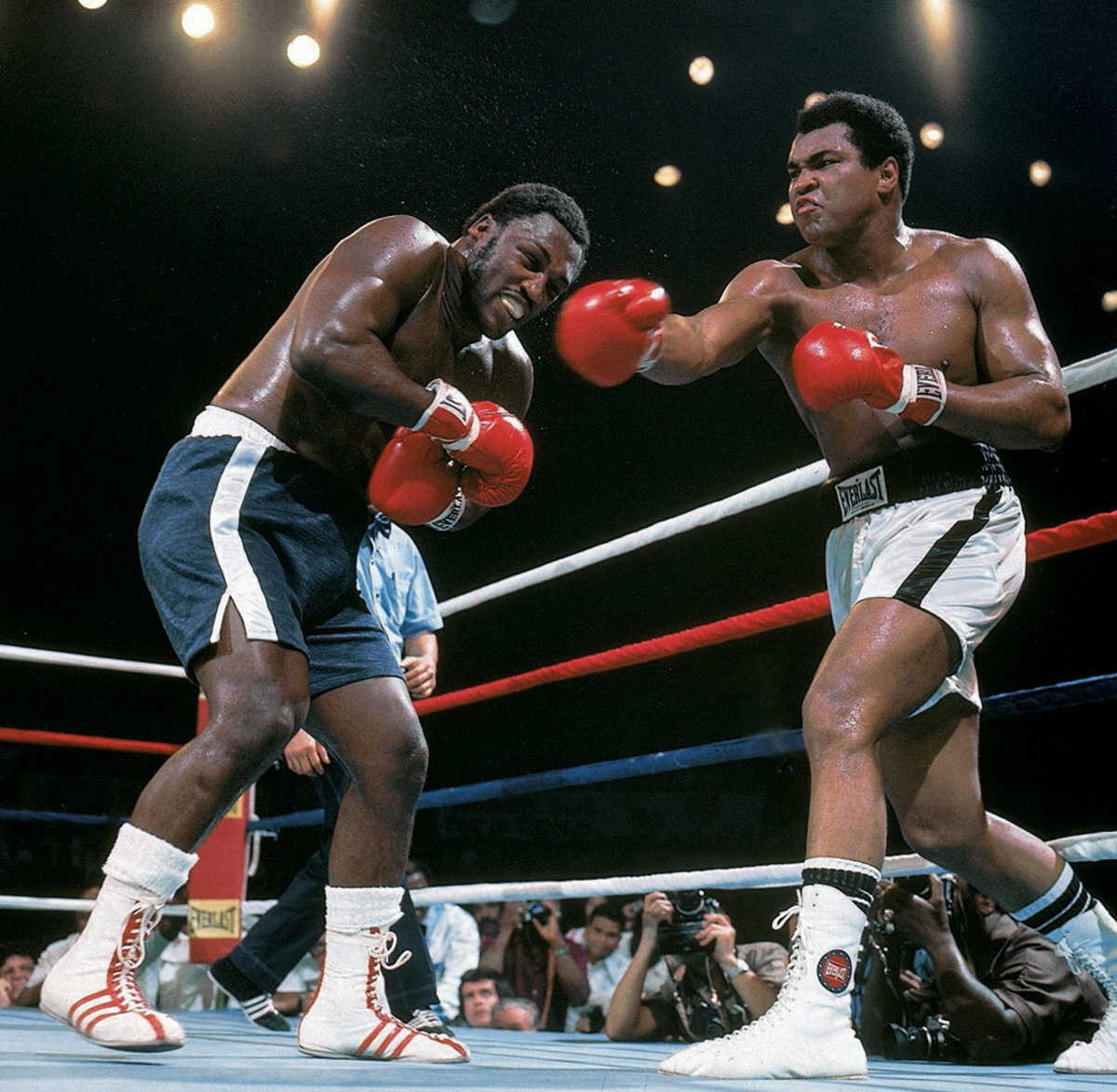
The third fight between Ali and Frazier, Ali won the bruising battle between the two powerful punching heavyweights when Frazier's trainer, Eddie Futch, stopped the fight before the 15th round.
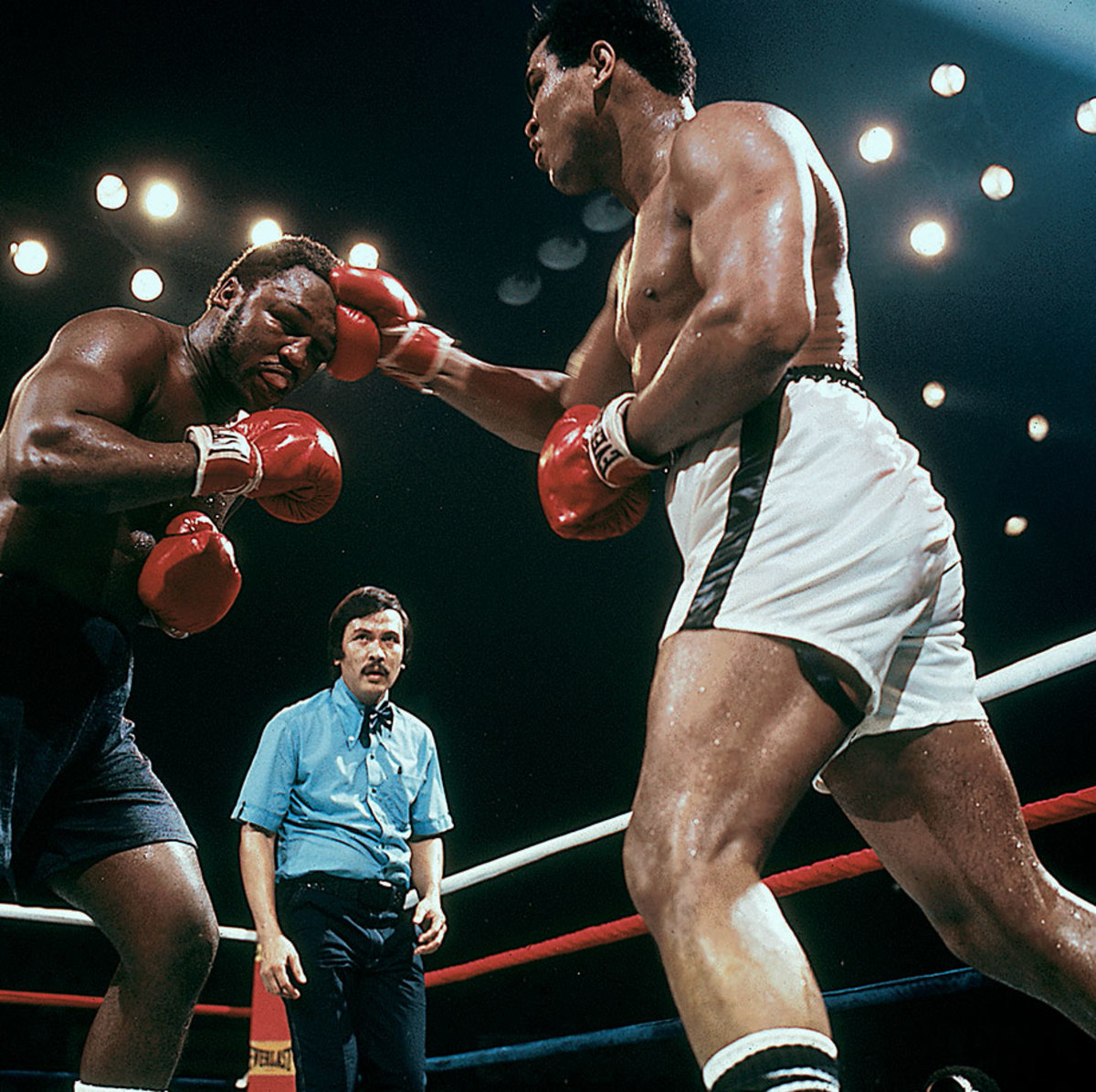
A back and forth exchange, Ali controlled the early rounds of the Thrilla in Manila before Frazier fought back with powerful hooks. Ali finished strong, regaining momentum in the later rounds.
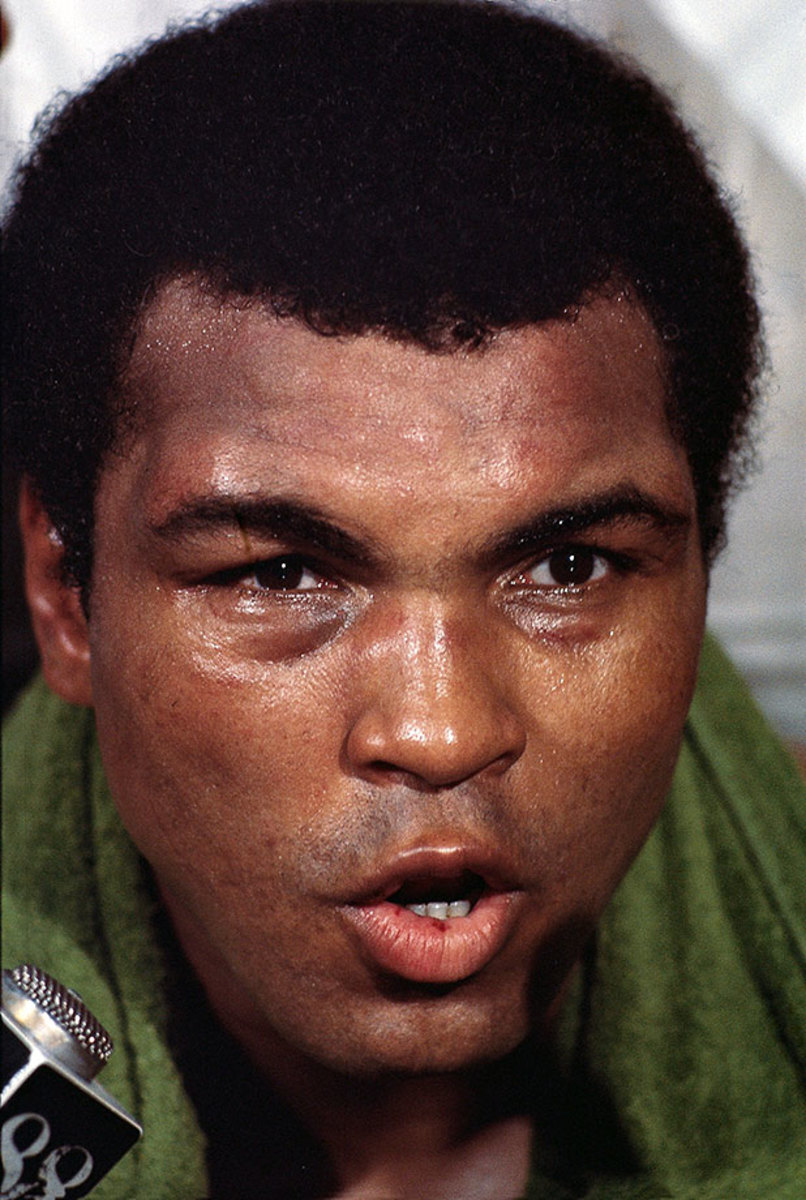
Ali speaks to the press after winning the Thrilla in Manila bout with Frazier.
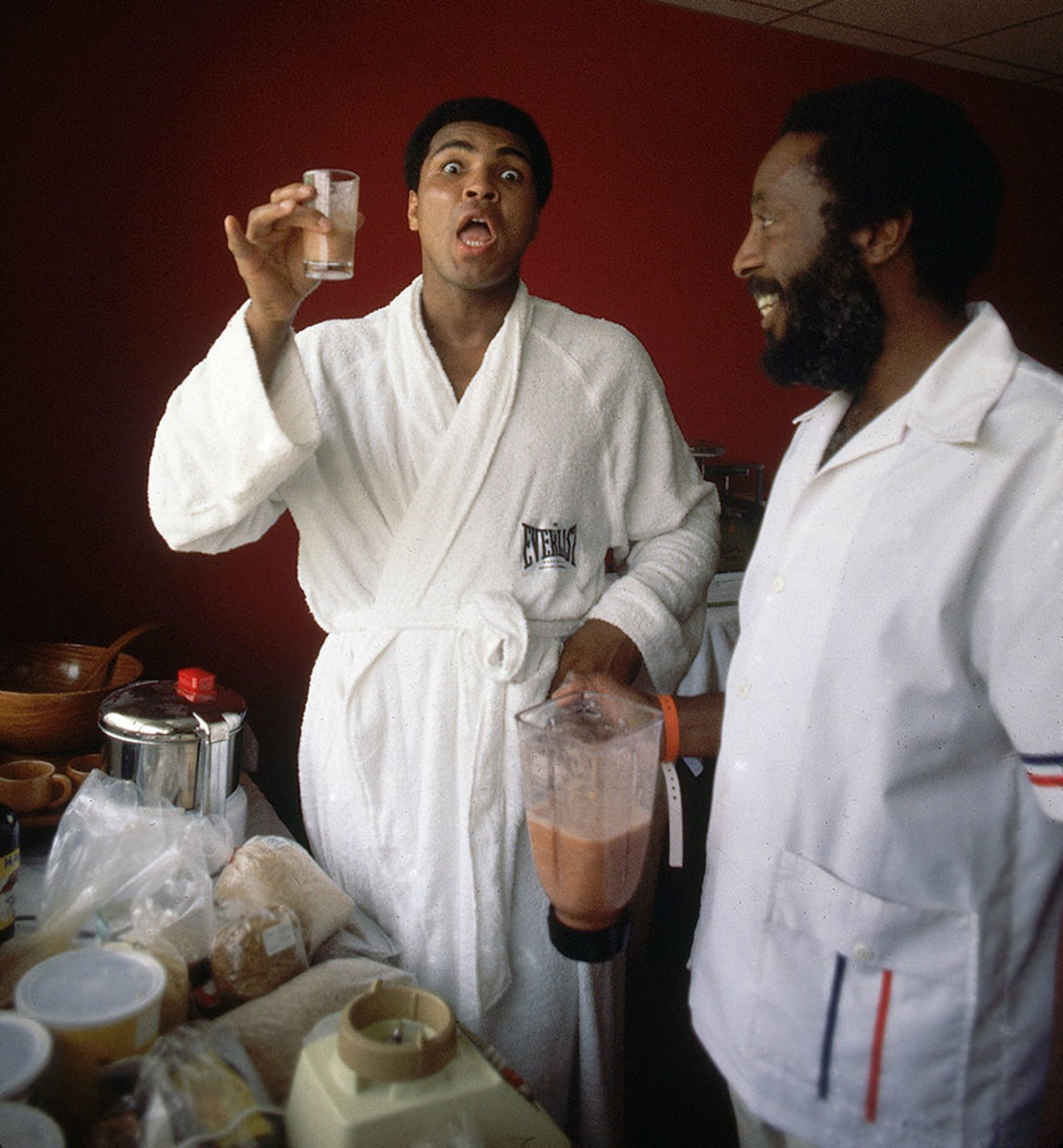
Ali holds a drinking concoction given to him by Dick Gregory, an advocate of a raw fruit and vegetable diet, in 1976.
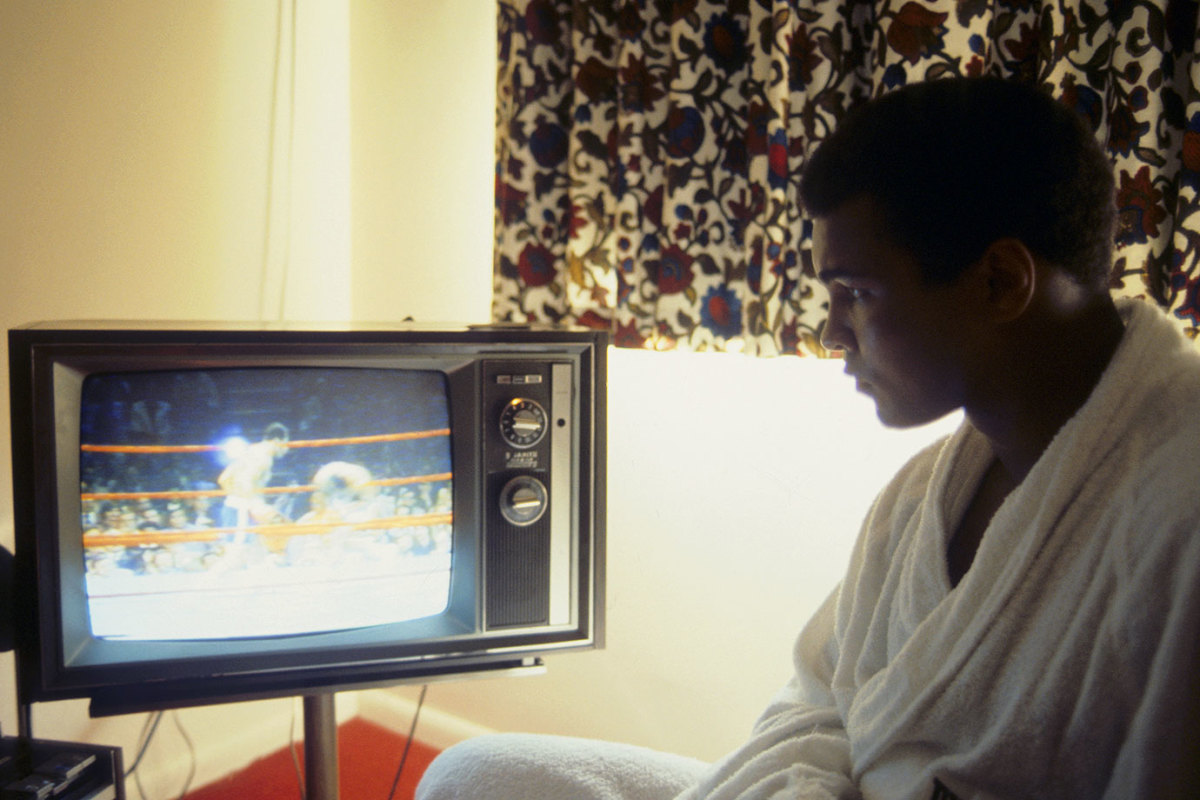
Before his 1976 fight against Ken Norton at Yankee Stadium, Ali watches a fight on television from his hotel room. A police strike at the time of the fight created a dangerous environment outside the stadium that all but eliminated walk-up sales.
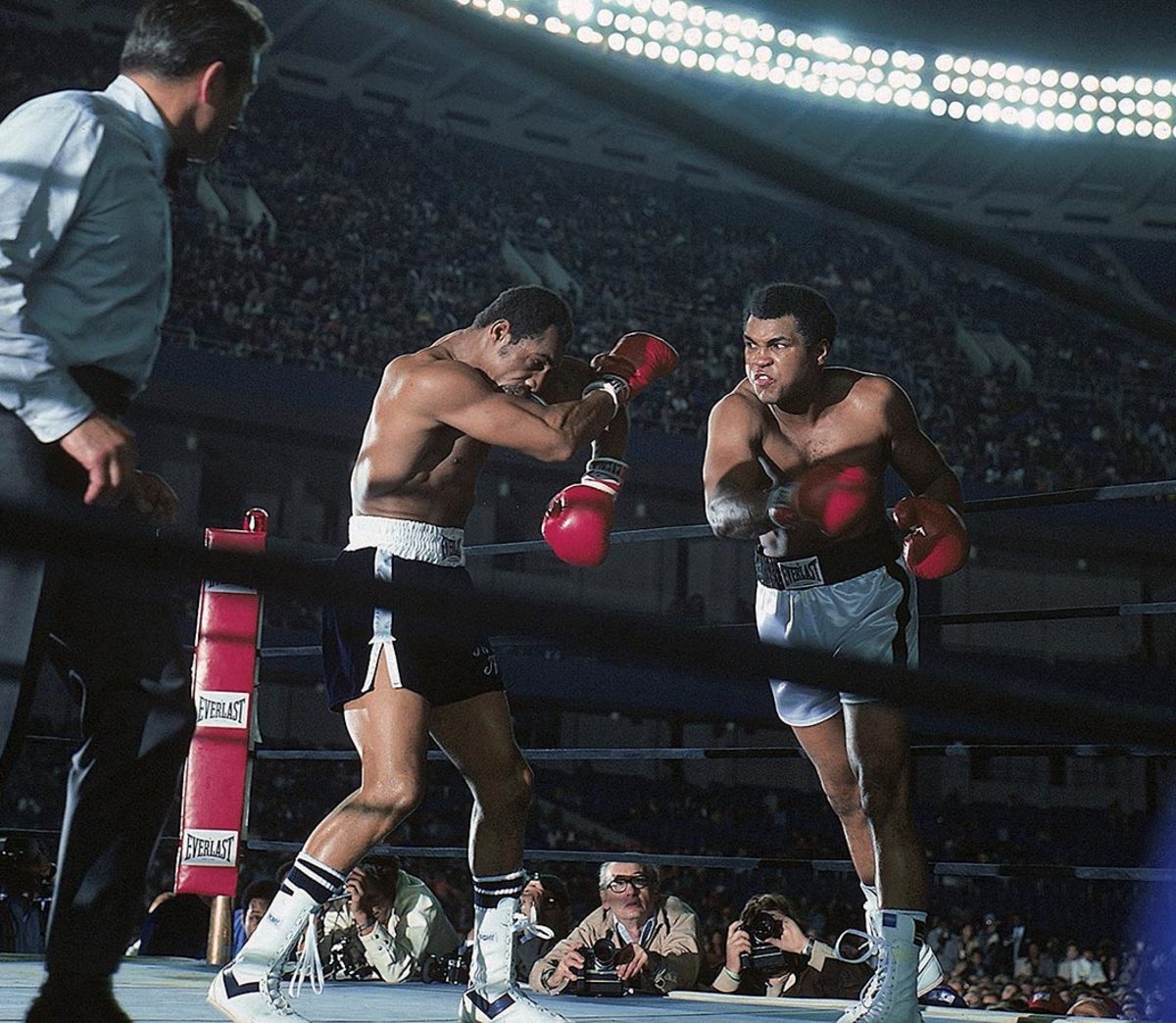
Norton takes a right hook during the heavyweight title fight against Ali. The bout, which Ali won by a unanimous, but controversial, decision, was the last boxing match at Yankee Stadium until 2010.
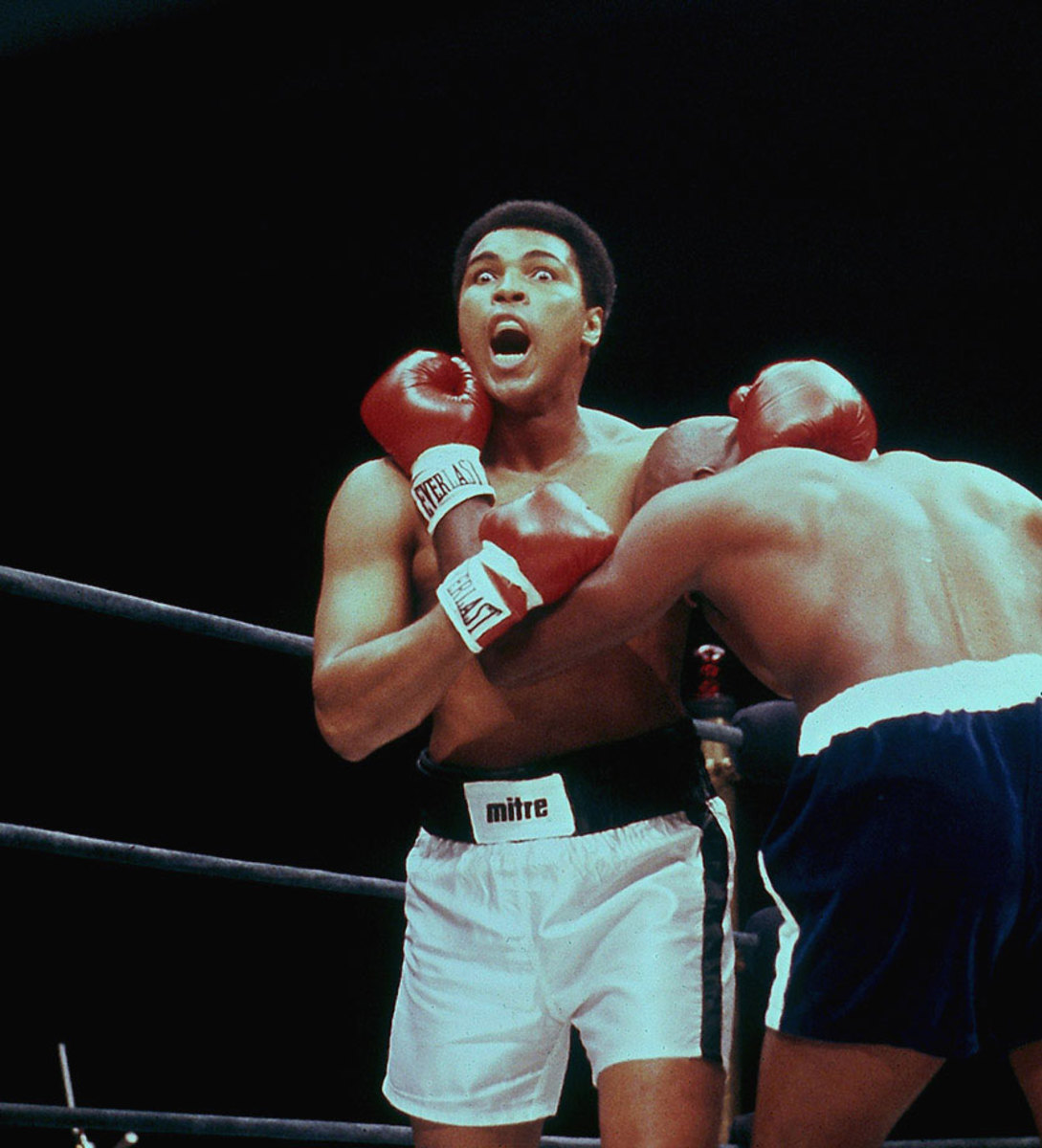
Ali makes a face during his fight with Earnie Shavers in 1977 at Madison Square Garden. Hurt badly by Shavers in the second round, Ali rebounded and outboxed Shavers throughout to build a lead on points before Shavers came on again in the later rounds. Seemingly exhausted going into the 15th and final round, Ali remained victorious by producing a closing flurry that left Shavers wobbling at the bell and the Garden crowd once again in delirium over his Ali magic.
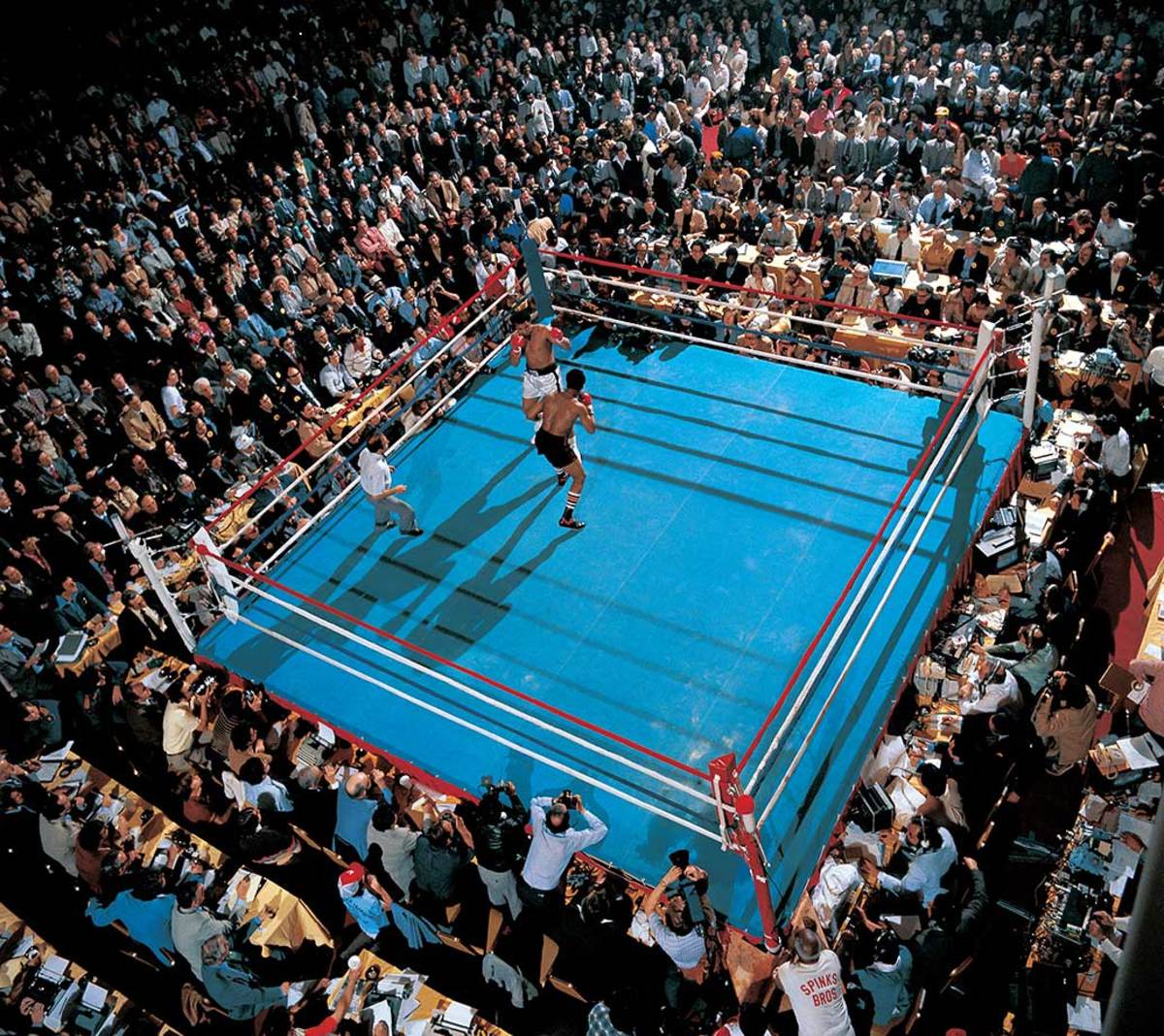
Ali squares off with Leon Spinks at the Las Vegas Hilton Hotel in February 1978. Spinks won the fight in a split decision, ending Ali's 3.5-year reign as the heavyweight champion. It was the only time in Ali's career that he lost his championship title in the ring.
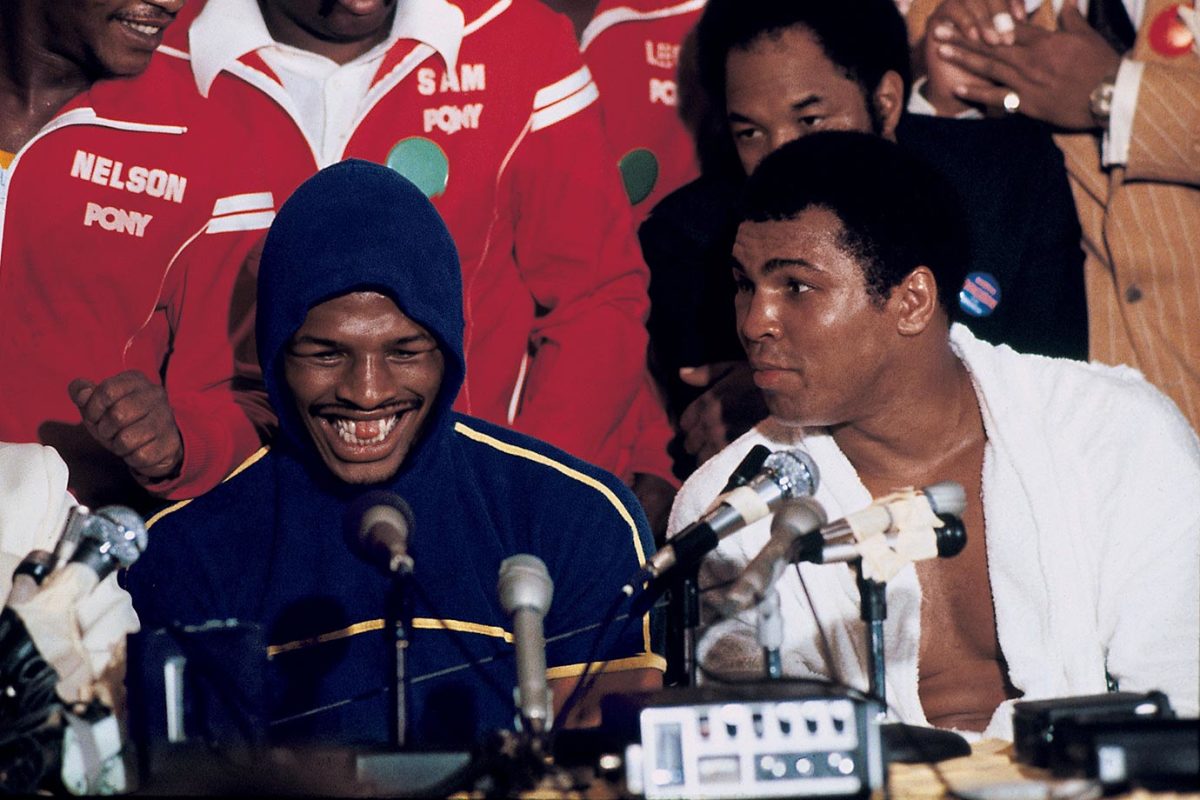
Leon Spinks took center stage over Ali at the press conference after their fight. The victorious Spinks and his gap-toothed grin were featured on the Feb. 19, 1978 cover of Sports Illustrated.
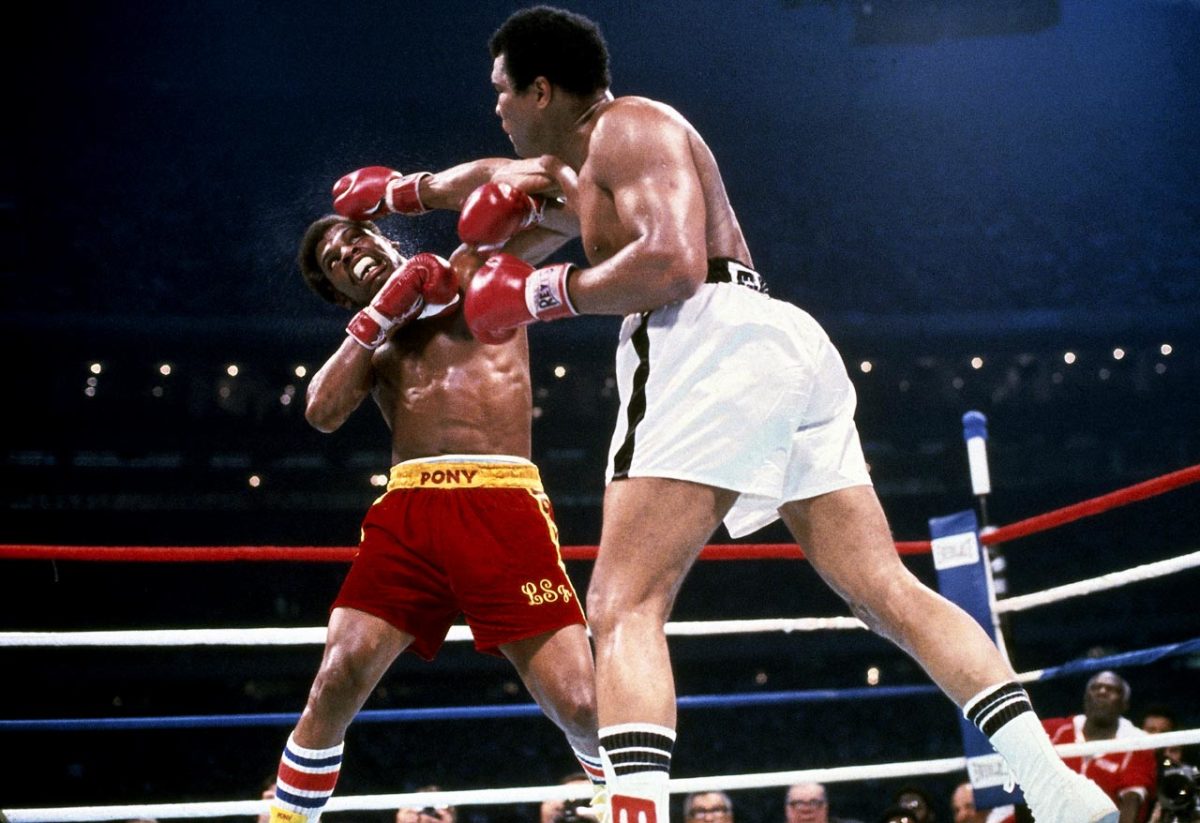
Ali lands a straight right hand to the head of Spinks in the rematch of their title bout in 1978. Ali won on a 15 round decision.
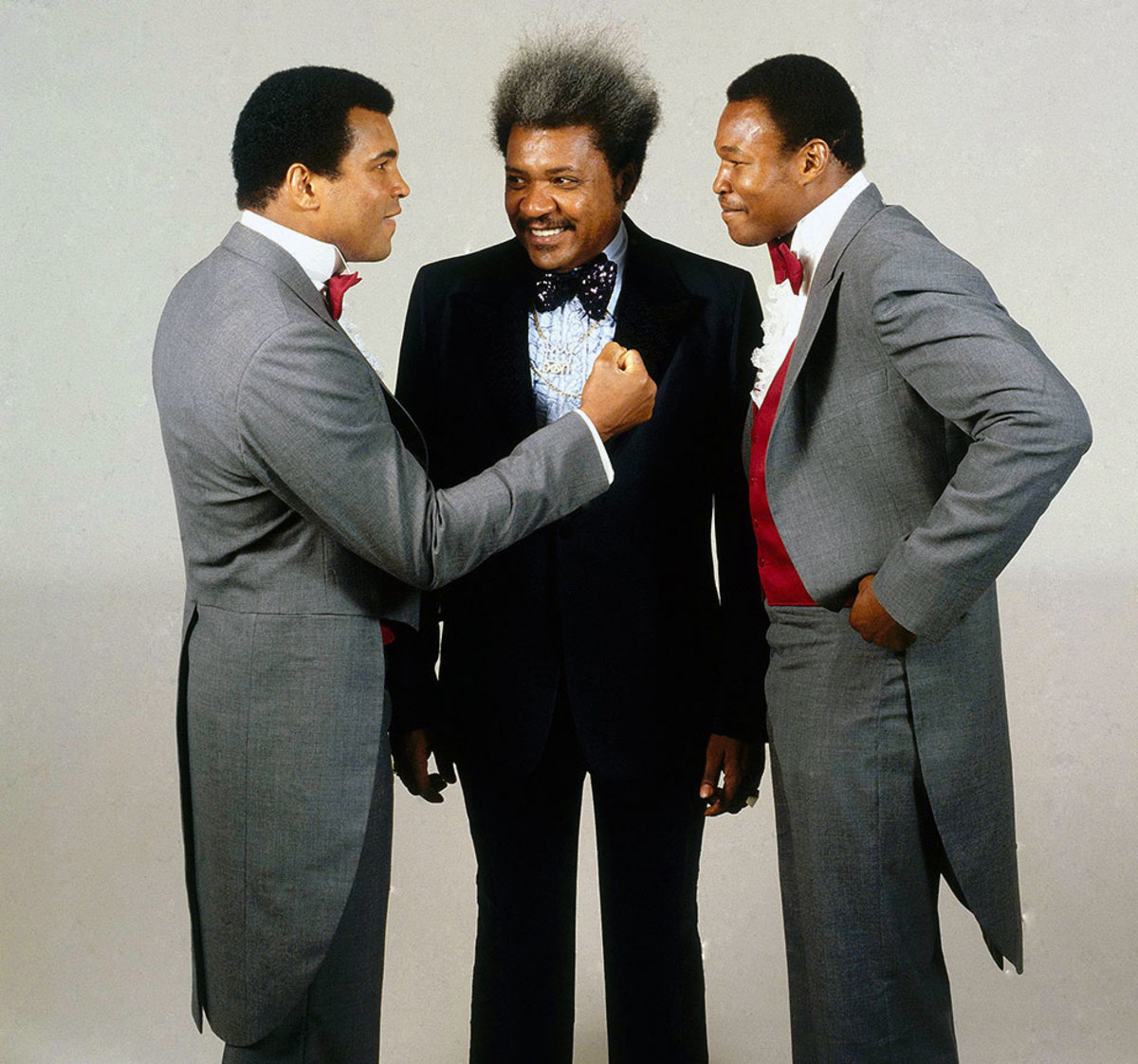
Don King pulled the strings again when Ali faced Larry Holmes before their November 1980 fight. King became a key figure in Ali's career, promoting his biggest fights, the Thrilla in Manila and the Rumble in the Jungle.
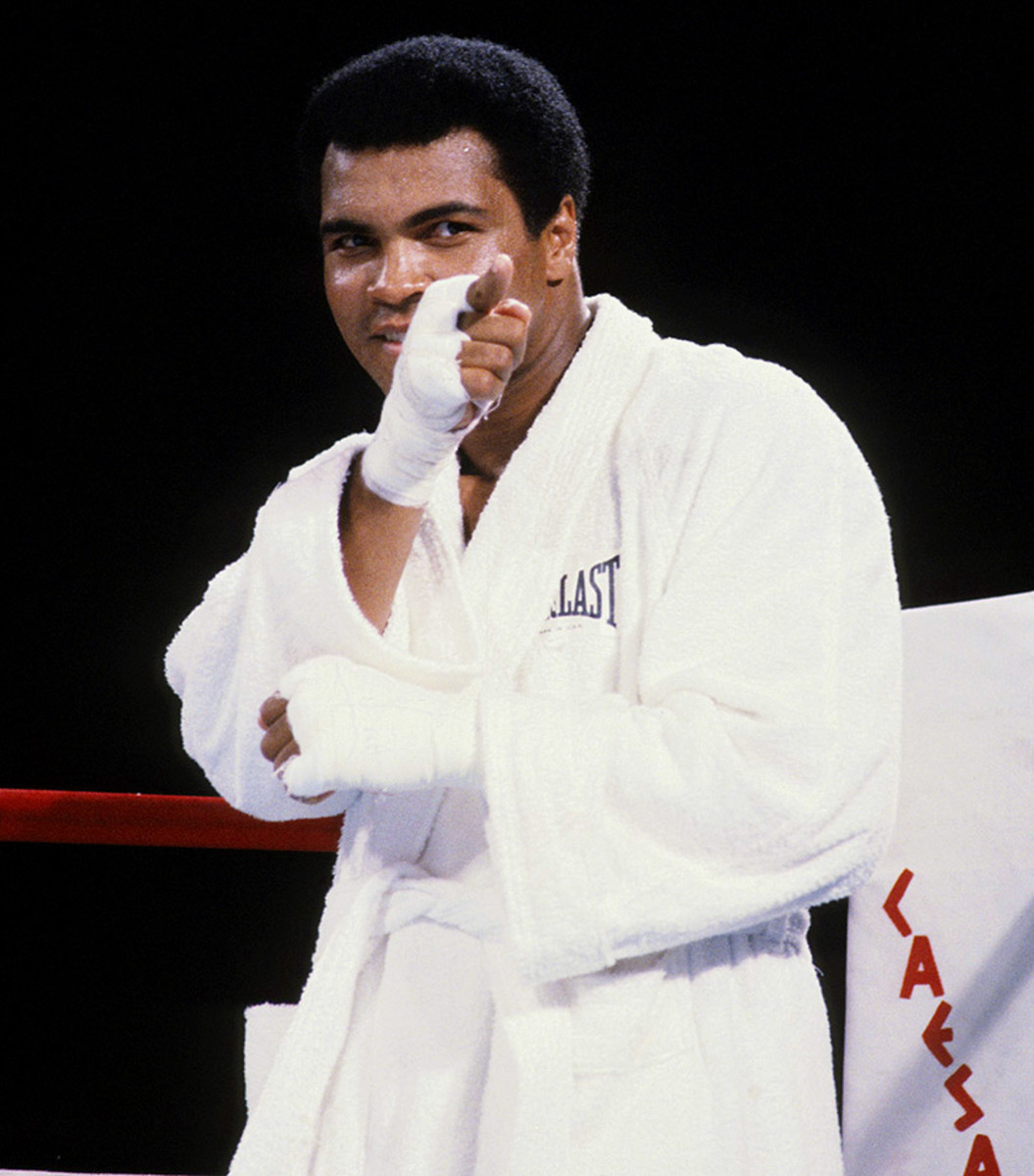
Ali points at Larry Holmes before their bout at Caesars Palace in 1980.
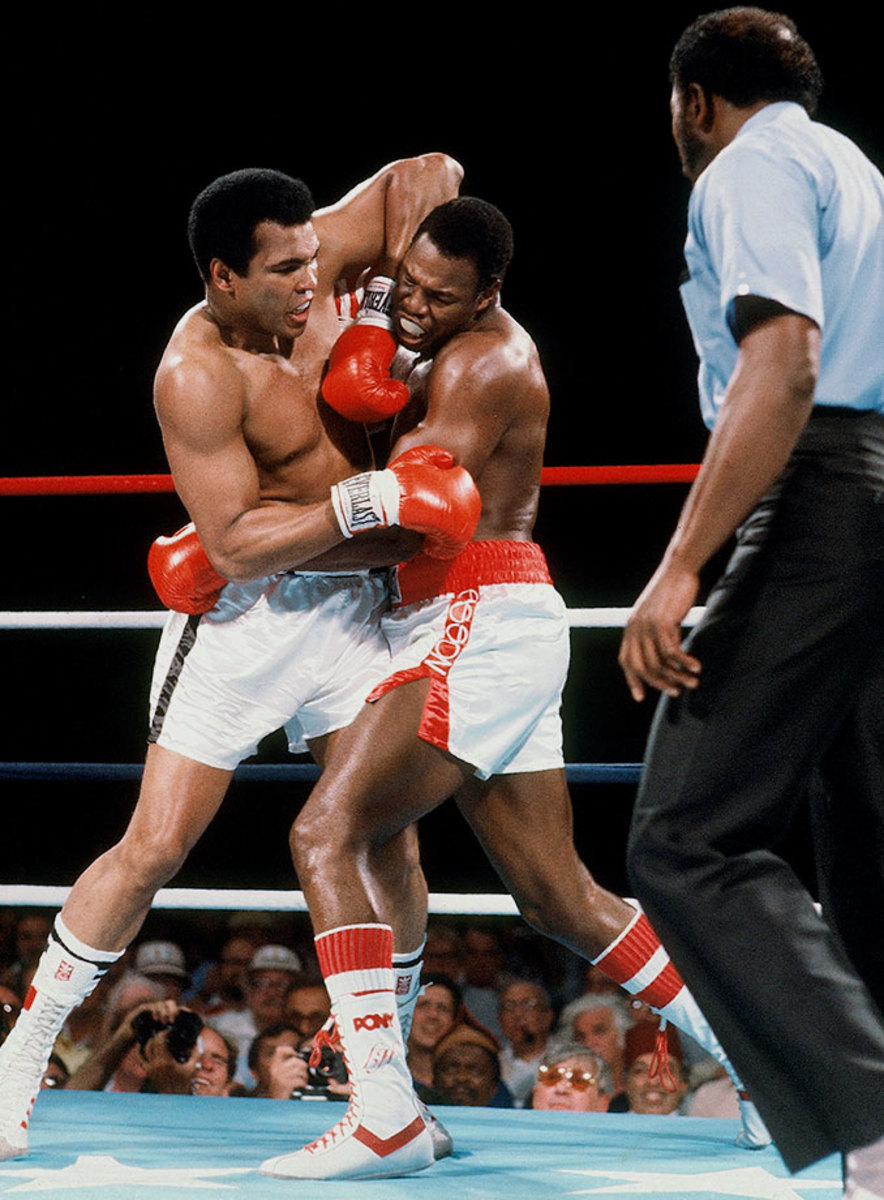
Ali grapples with Holmes during their bout in 1980. Trainer Angelo Dundee stopped the fight in the 11th round, marking the fight as Ali's only career loss by knockout.
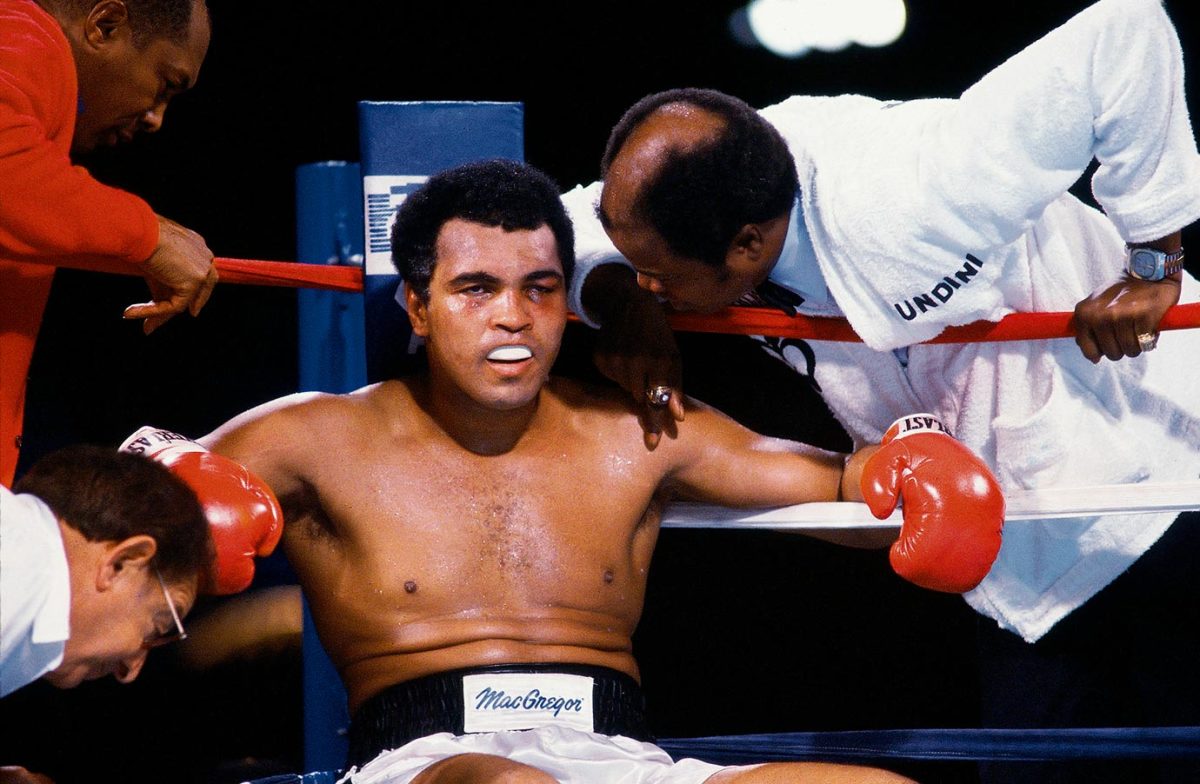
Drew Bundini Brown leans in to speak to Ali, who returned to fight Holmes after a brief retirement. By this time, Ali had already begun developing a vocal stutter and trembling hands and taken thyroid medication to lose weight that left him tired and short of breath.
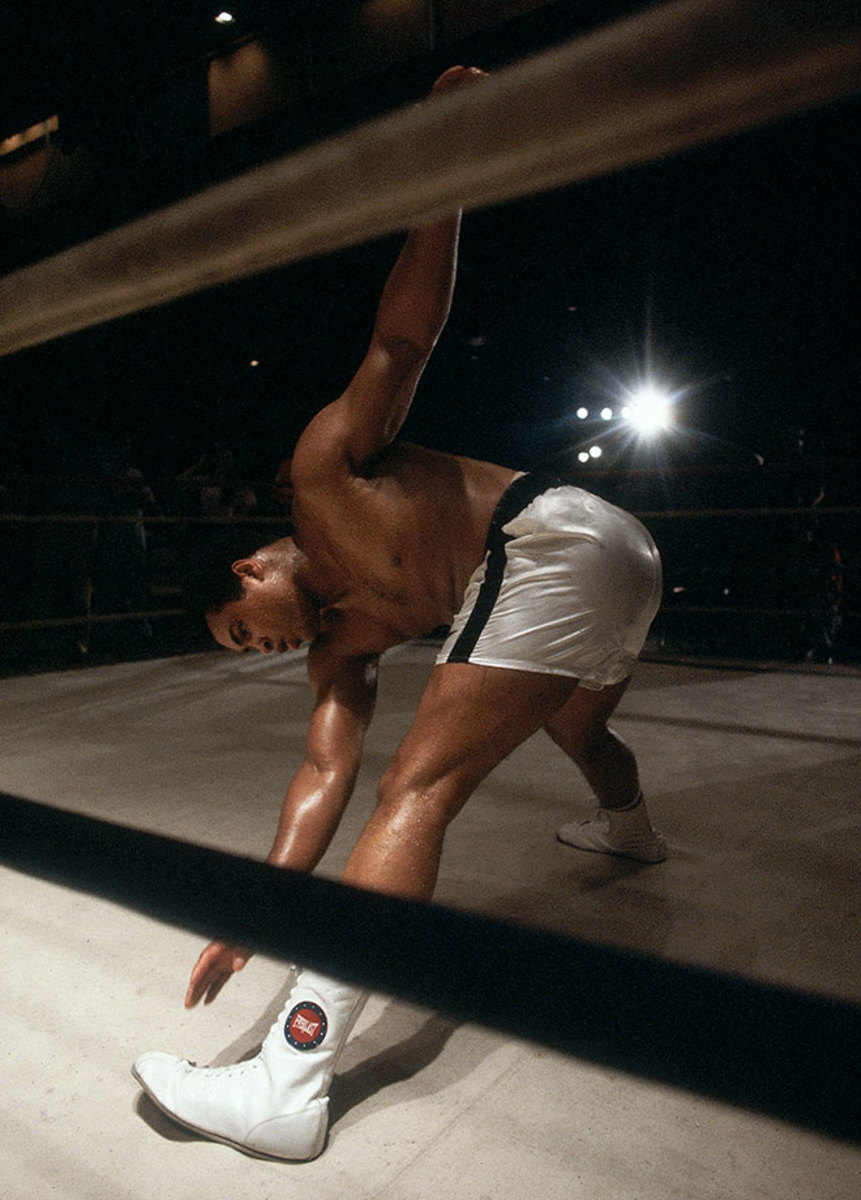
Ignoring pleas for his retirement, Ali stretches before a fight against Trevor Berbick in Nassau, Bahamas. Ali lost to Berbick in a unanimous decision and retired after the bout, the 61st of his career.
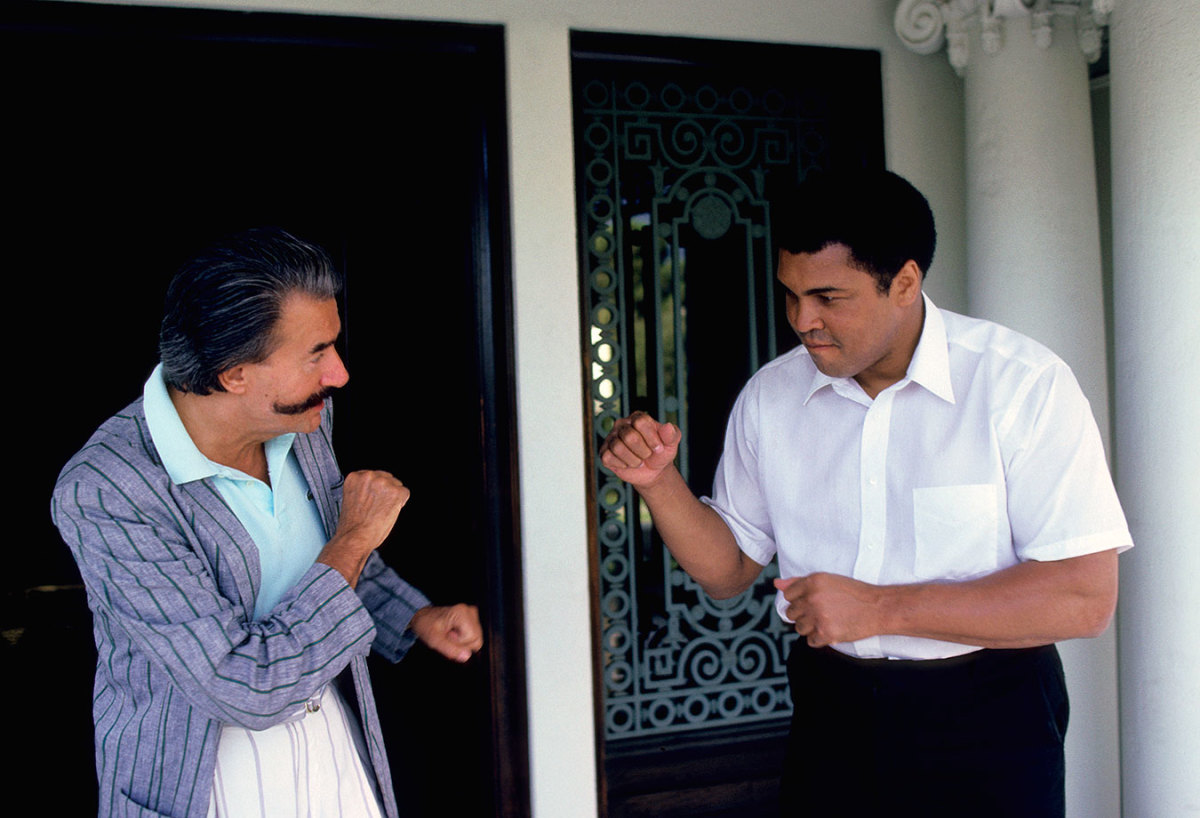
Ali pretends to spar with artist LeRoy Neiman at his home in Los Angeles. Neiman met Ali in 1962 and made many paintings and sketches from throughout Ali's life.
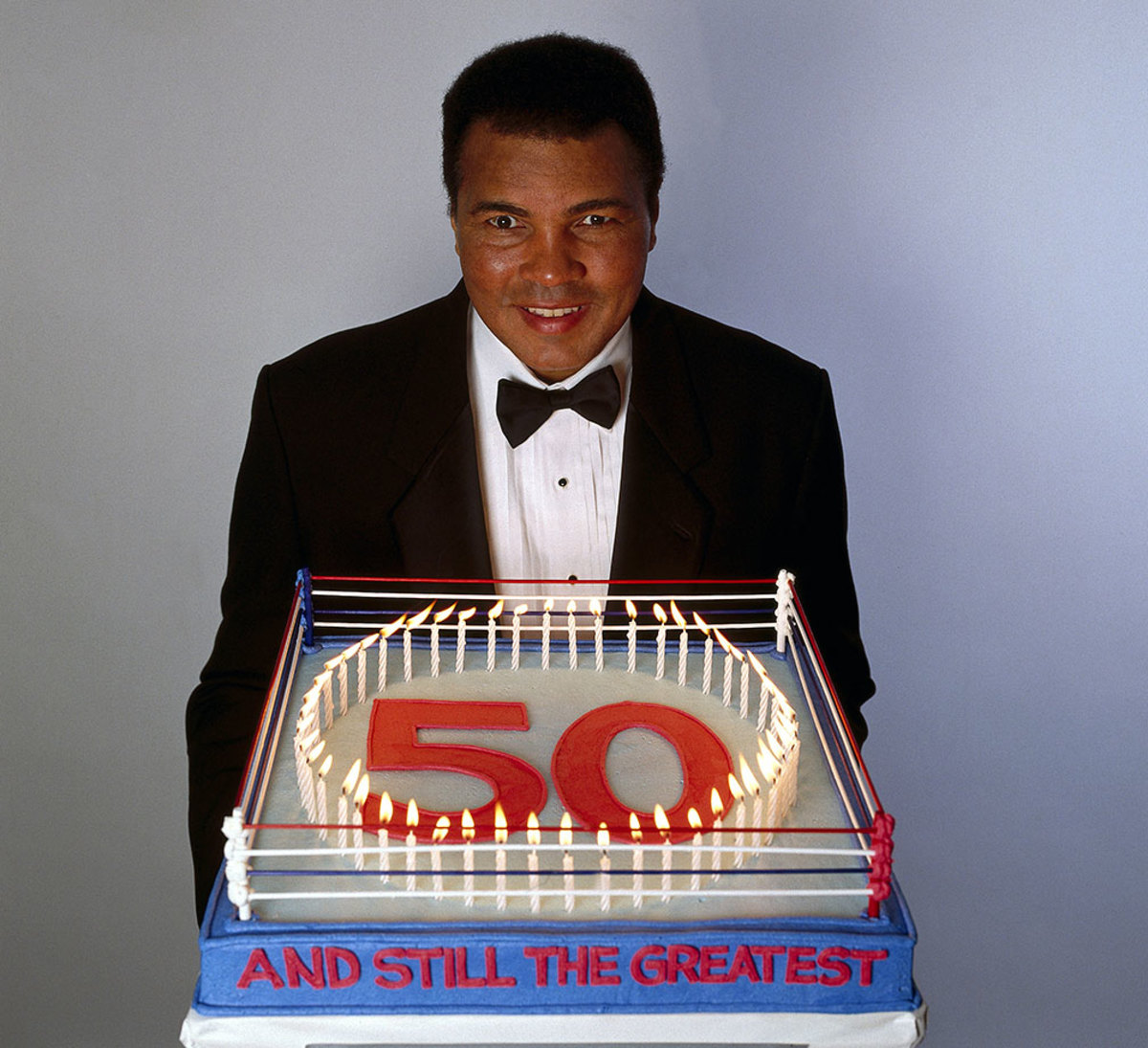
Cake in hand, Ali poses for a 50th birthday portrait in 1991. Although diagnosed with Parkinson's syndrome seven years earlier, Ali was still active, traveling to Iraq during the Gulf War to meet with Saddam Hussein in an attempt to negotiate the release of American hostages.
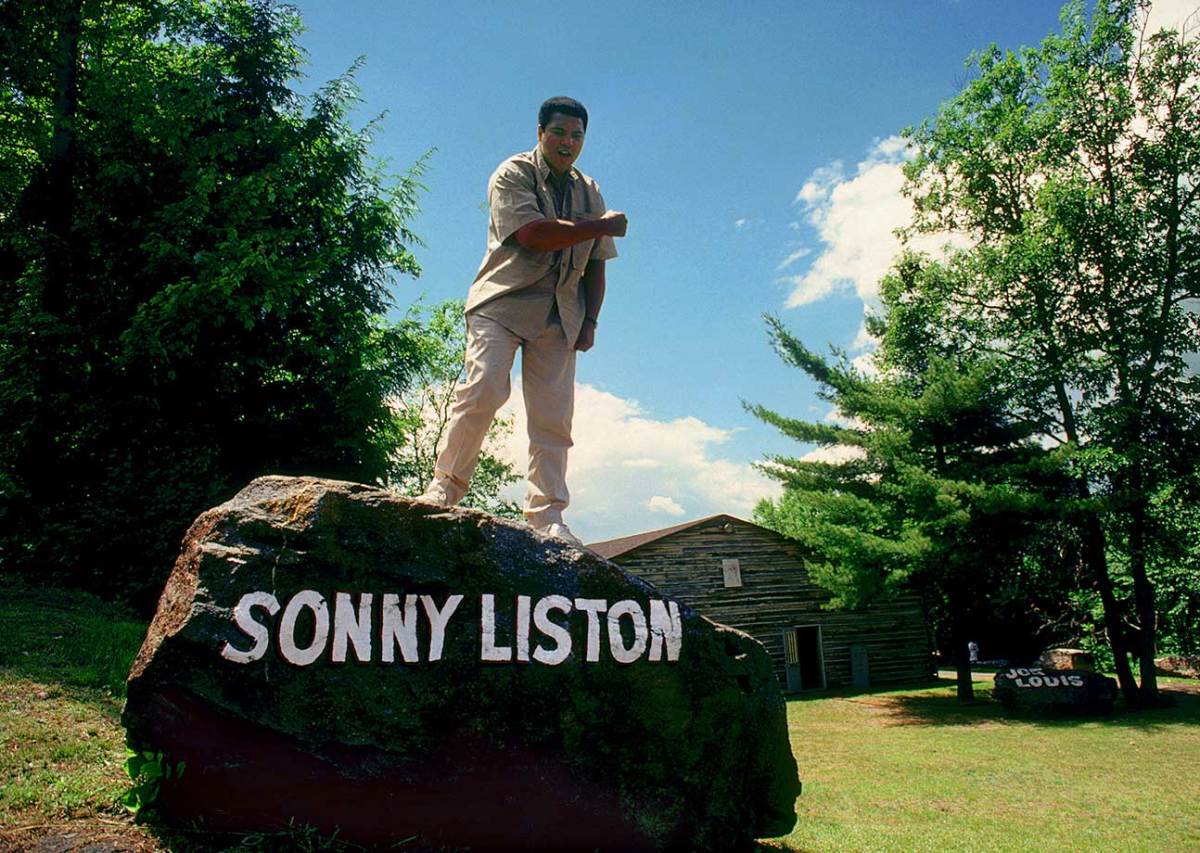
The same year, Ali stands atop of the Sonny Liston rock at his old training camp cabin. Ali and his father painted the names of famous boxers he admired on 18 boulders at the camp.
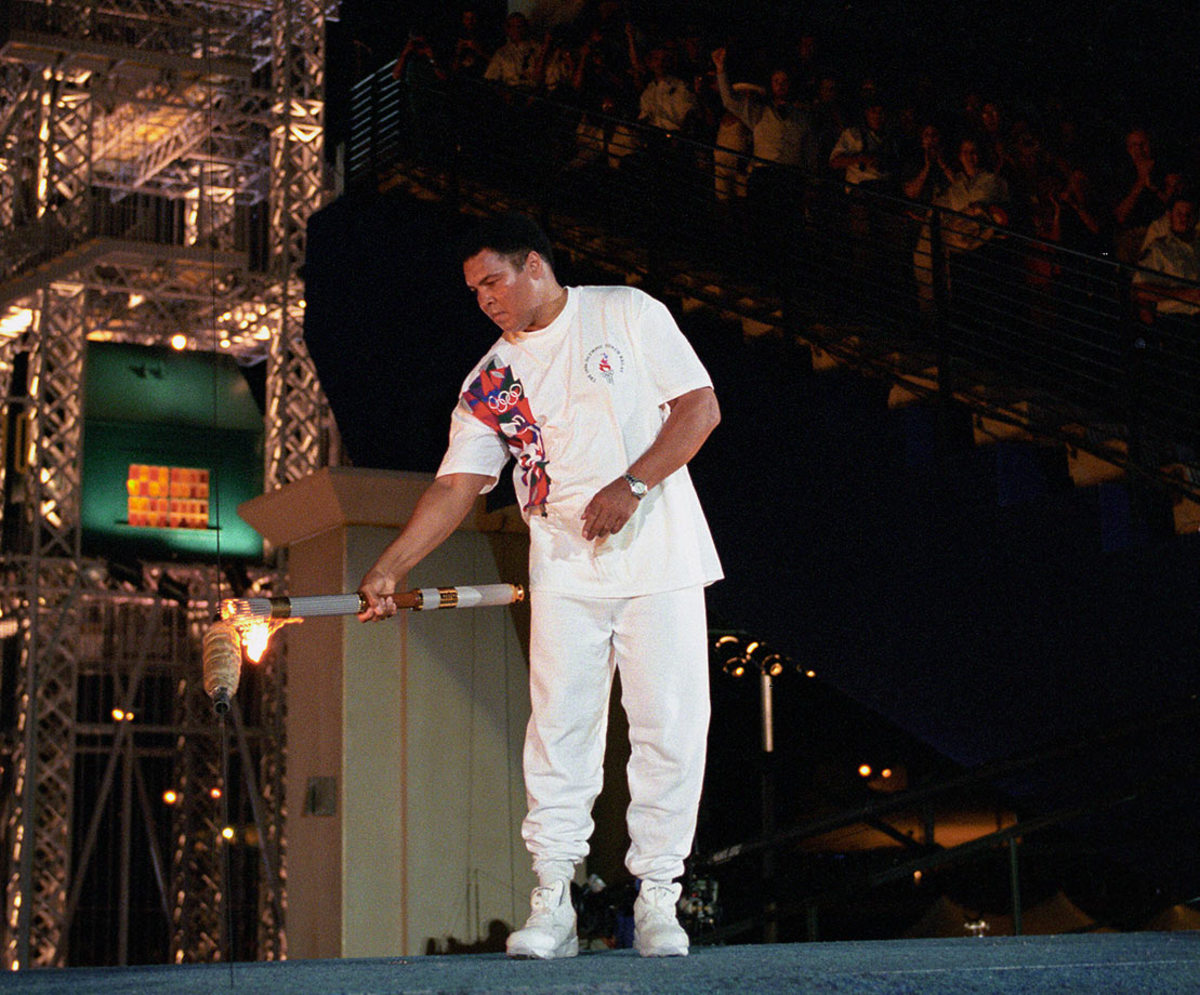
Ali carries the Olympic torch inside Centennial Olympic Stadium at the 1996 Atlanta Olympics. Despite trembling hands, Ali had the honor to light the Olympic flame in the stadium.
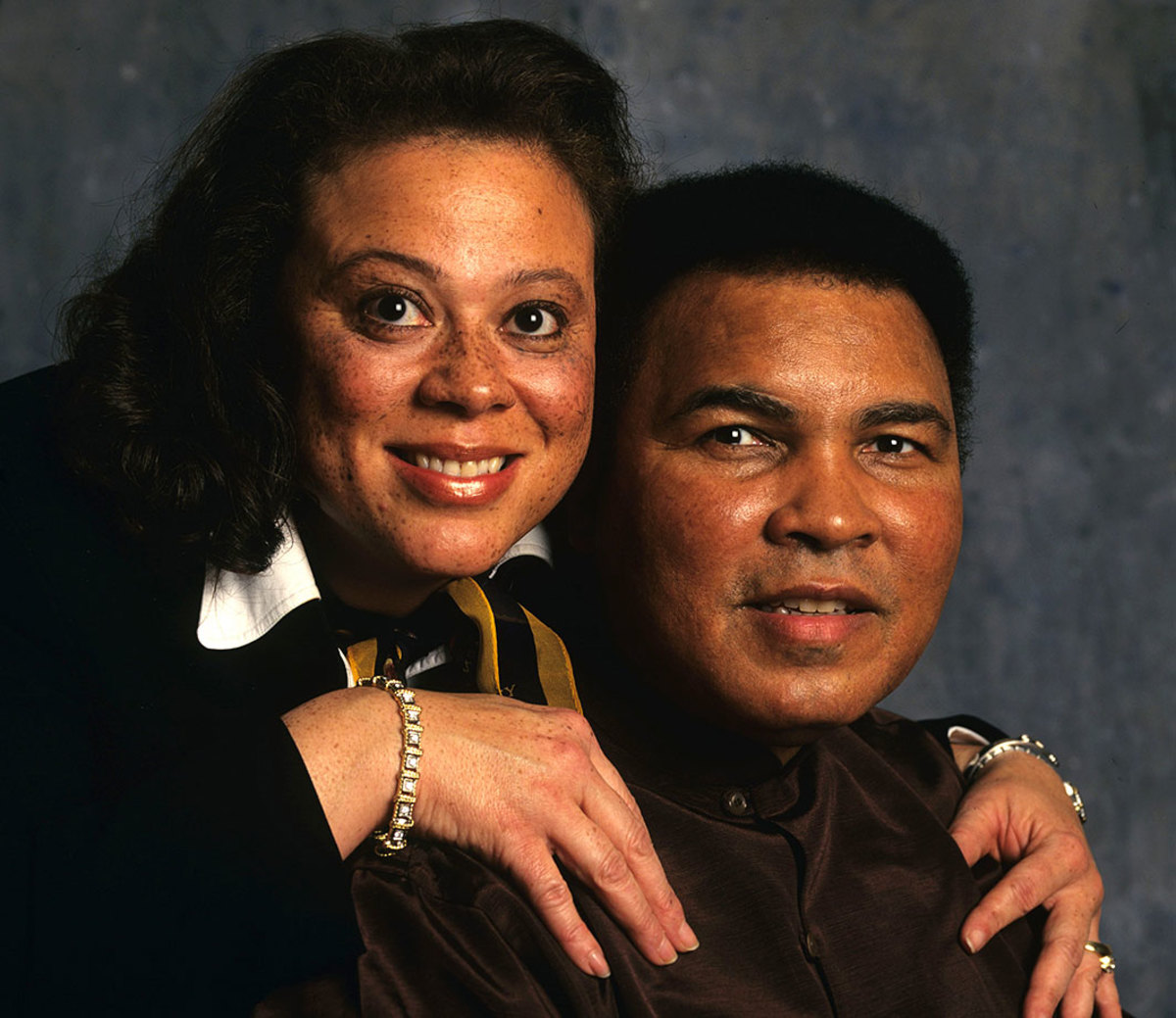
Husband and wife pose for a portrait during a photo shoot in 1997. Muhammad and Lonnie married in 1986 and have an adopted son together, Asaad Amin Ali.
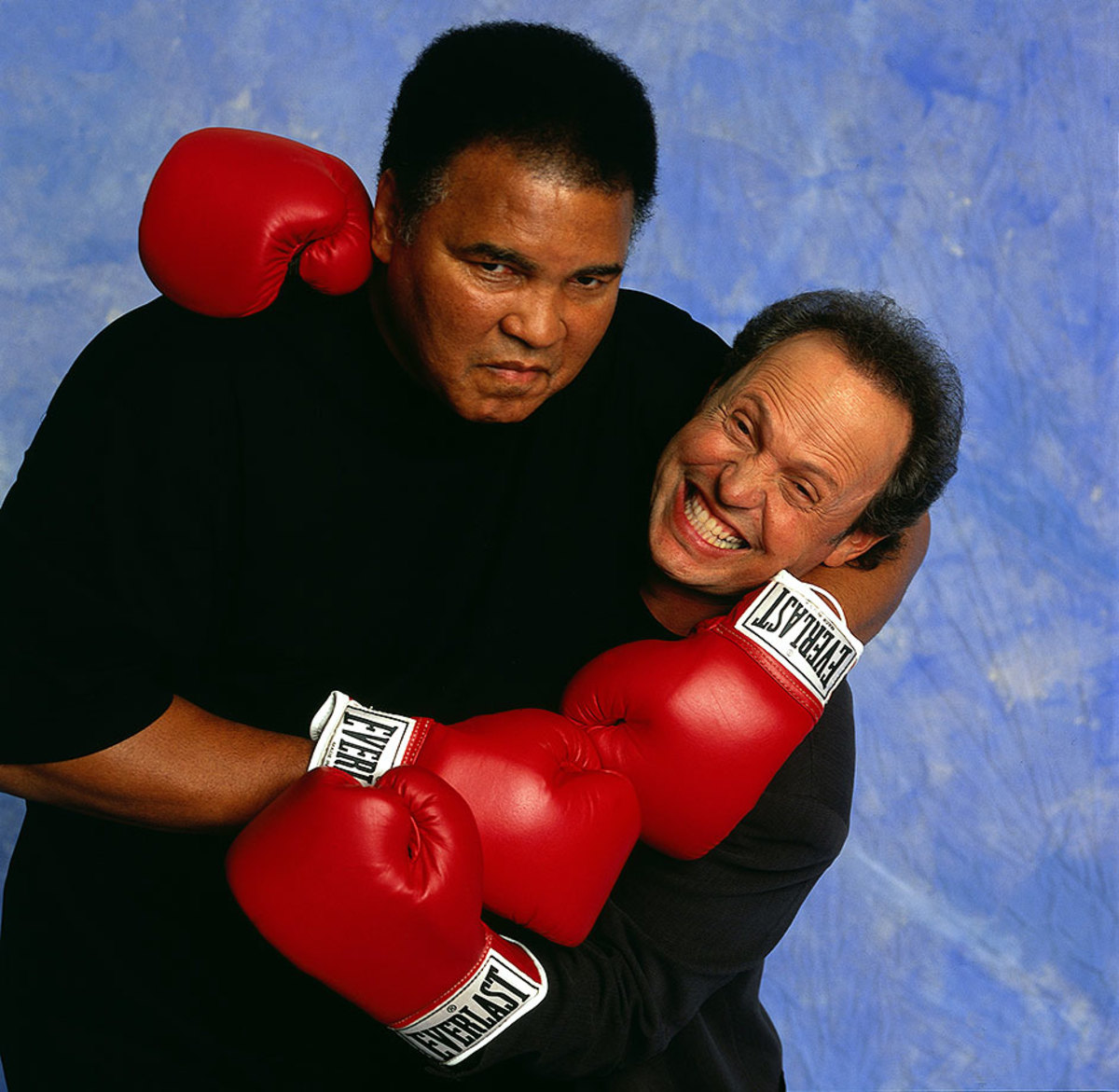
Ali messes around with actor Billy Crystal during a photo shoot in 2000. Crystal's impression of Ali was notorious, and he performed at a tribute to the boxer on his 50th birthday in December 1991.
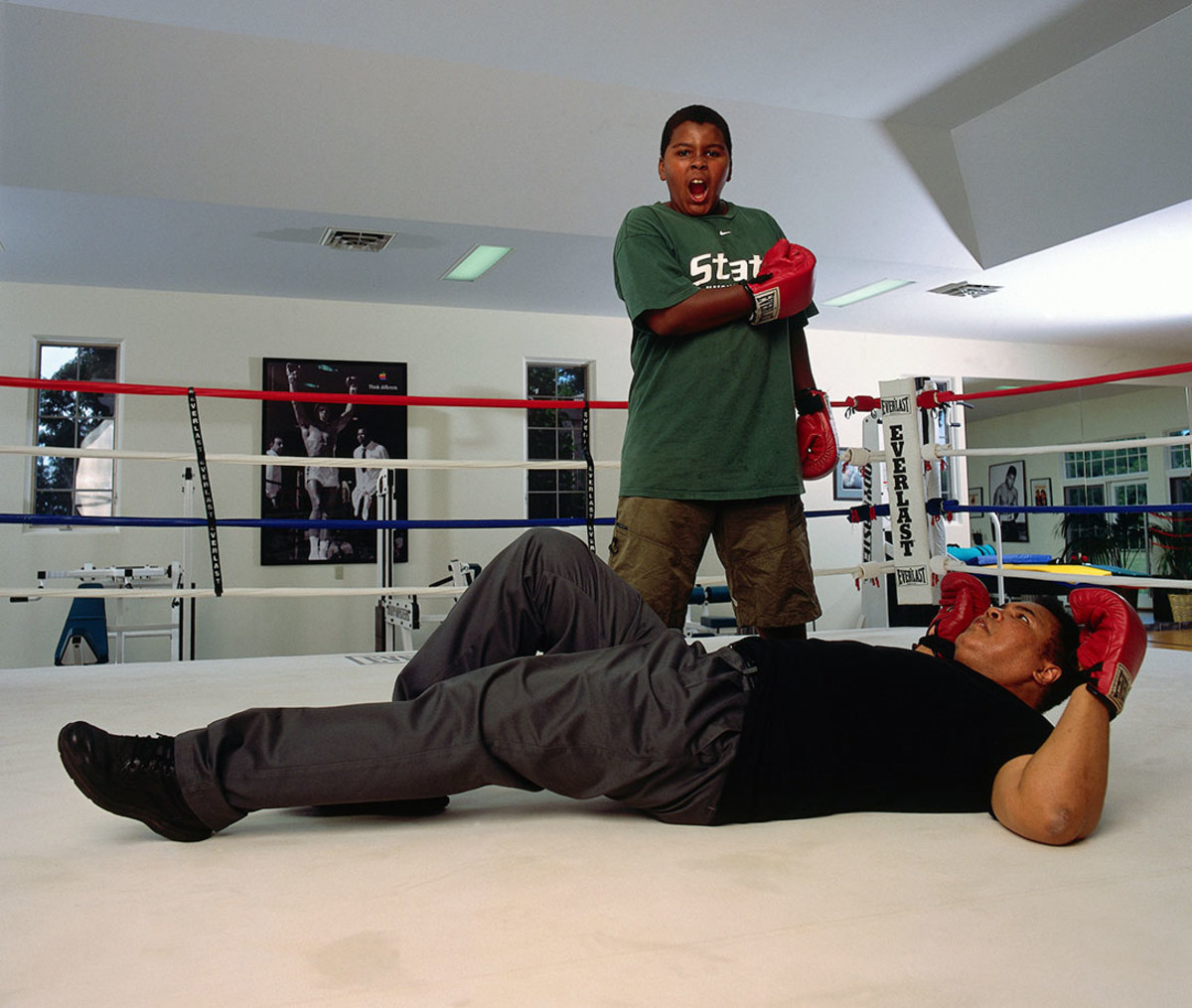
Ali lies on the canvas as his son, Assad Amin Ali, stands over him invoking memories of Ali's victory over Sonny Liston during a photo shoot in the gym at his farm on Kephart Road near Berrien Springs in 2001.
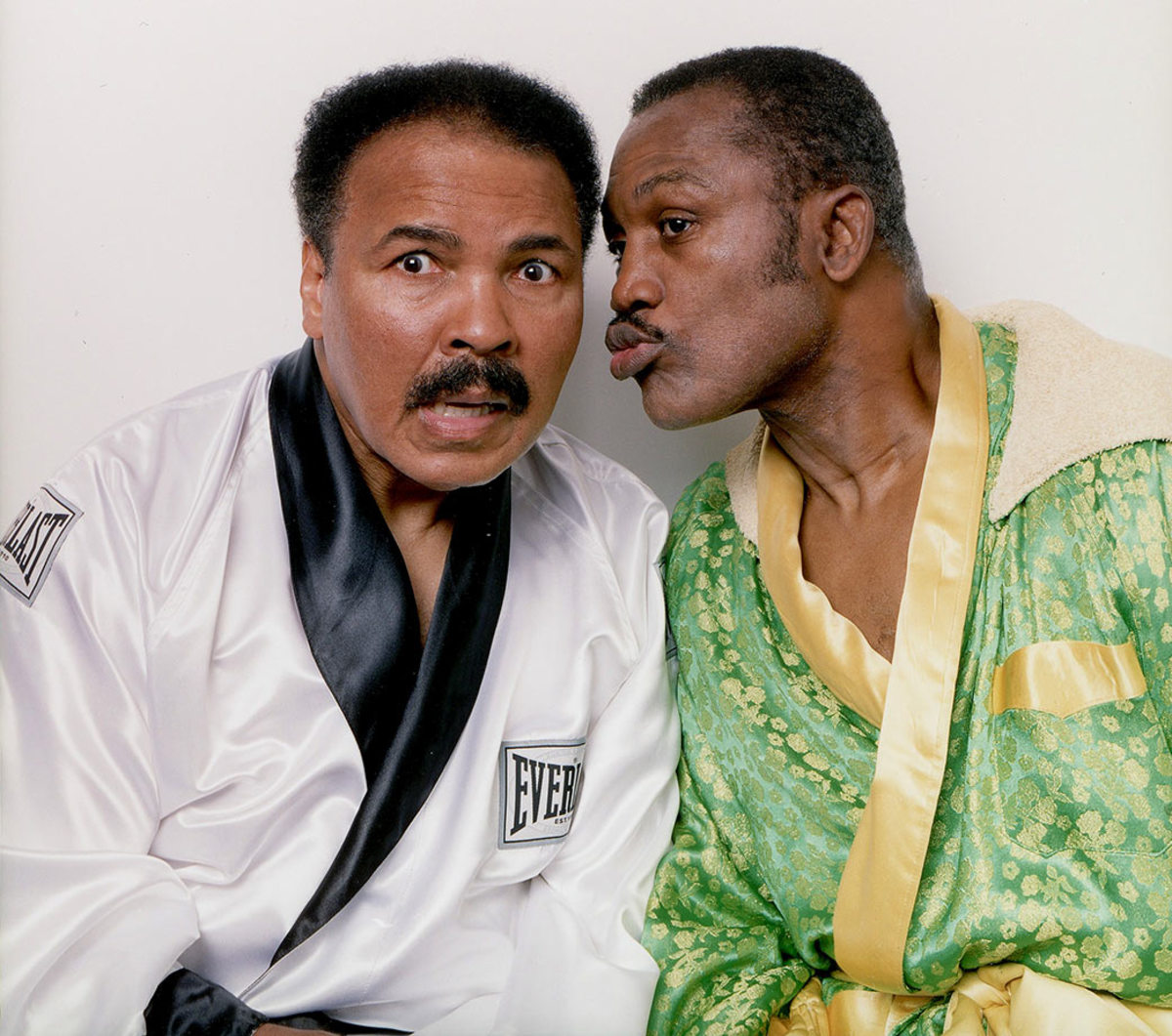
Fierce rivals in the ring, Ali and Joe Frazier pose for a portrait in the boxing robes they wore the night of their first bout at Frazier's Gym in 2003. Ali said after Frazier's death in 2011 that he was "a great champion."
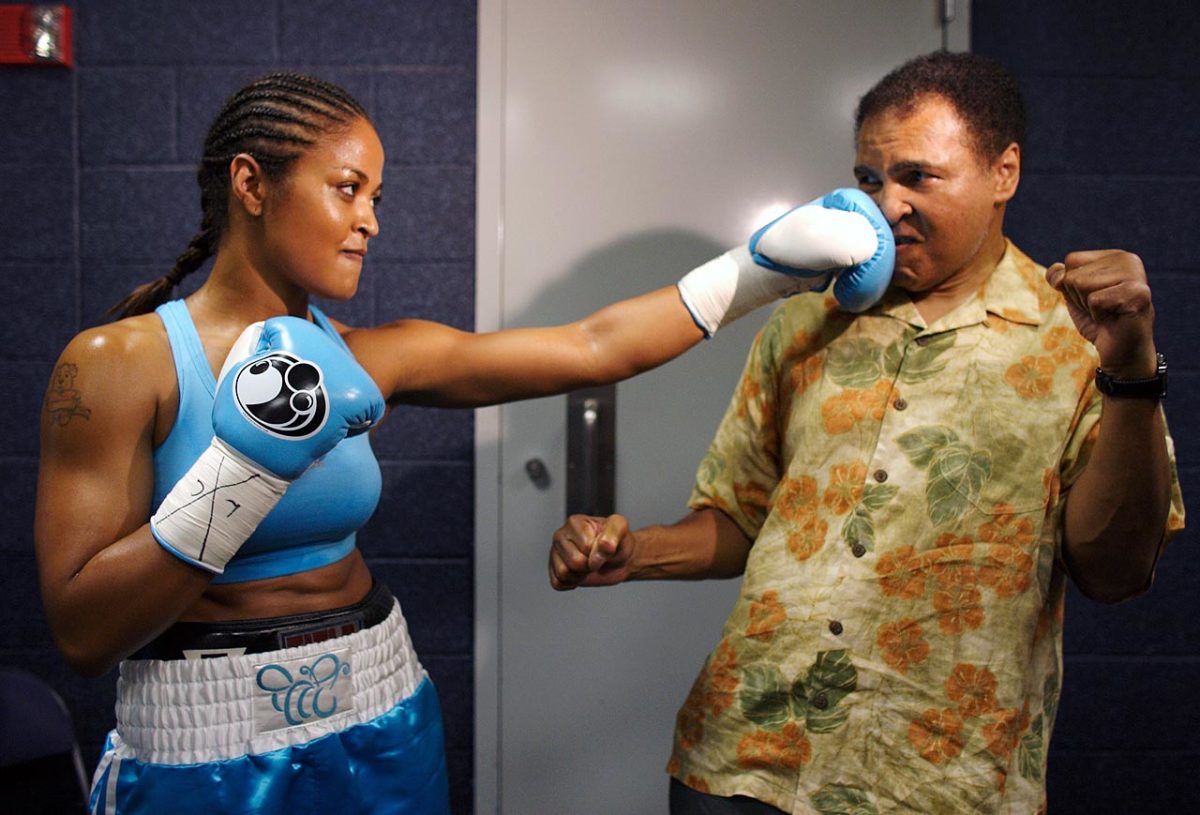
Ali takes a punch from his daughter Laila Ali while sparring before her fight against Erin Toughill in 2005. Laila retired from her own successful boxing career with a professional record of 24-0.
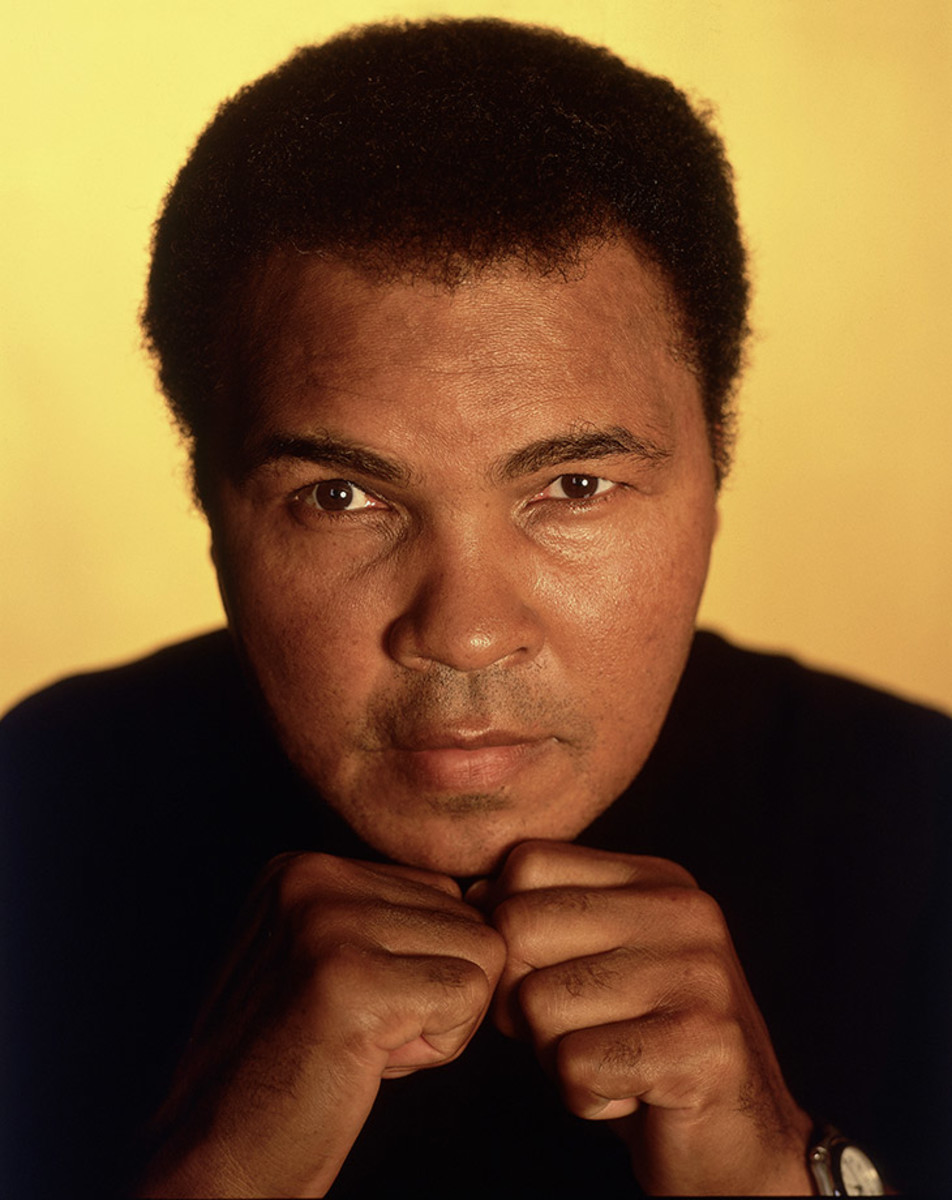
Ali poses with his fists up for a portrait in 2005.
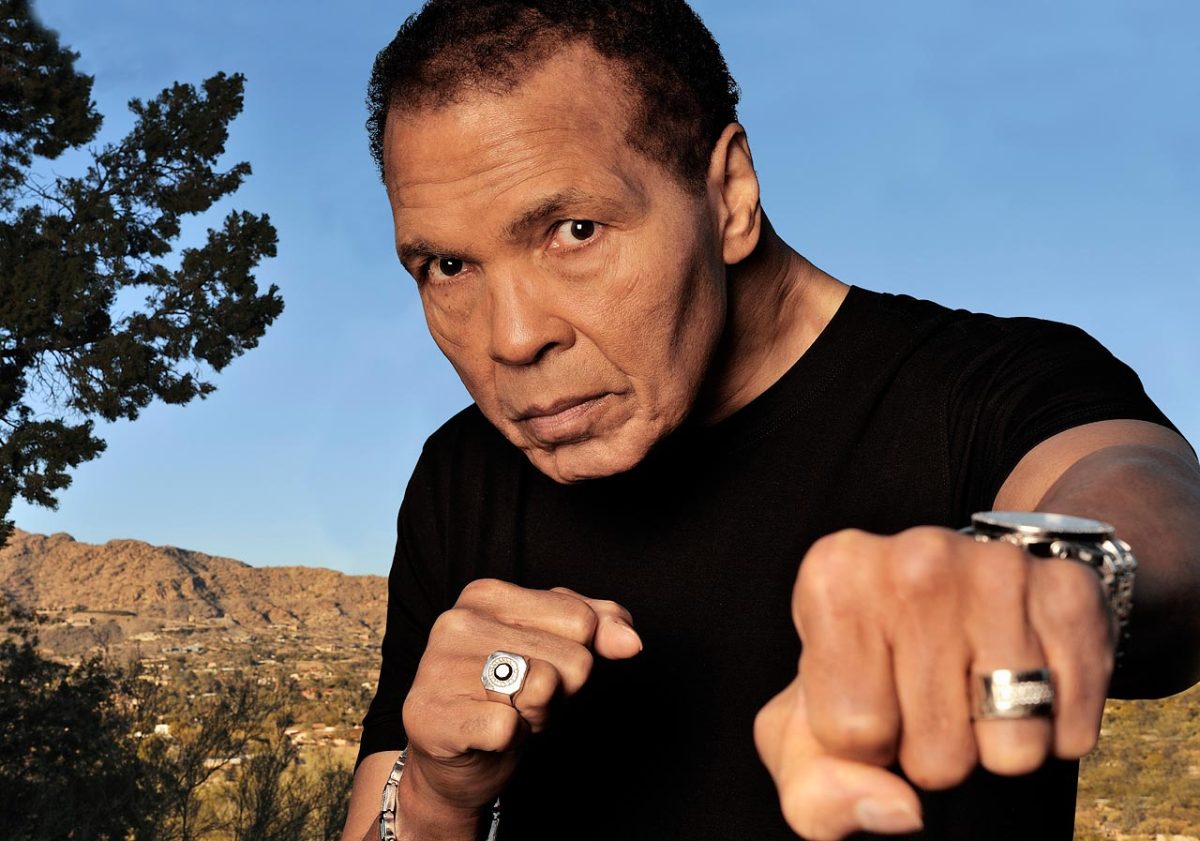
Ali poses with an extended punch in a 2012 photo shoot at his home in Paradise Valley, Ariz., to mark his 70th birthday.
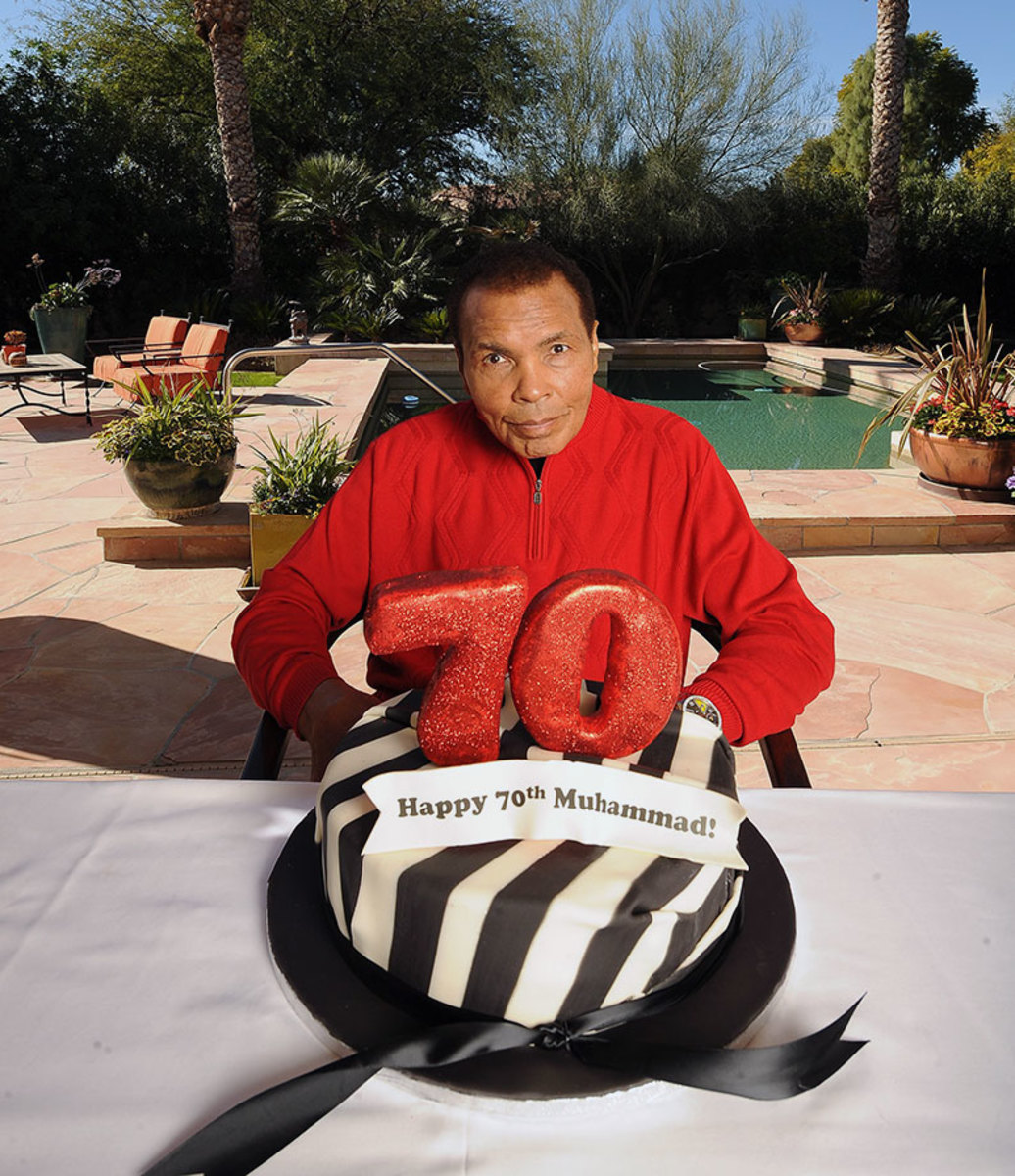
Ali sits in front of a 70th birthday cake in January 2012 at his Arizona home. Later that year he appeared at the opening ceremonies for the 2012 Olympics in London to escort the Olympic flag into the stadium, 52 years after he won gold in Rome.
His career stretched from the 1960 Rome Olympics, at which he won a gold medal, to a sad and unnecessary fight in 1981, an ugly loss to Trevor Berbick on an island outpost. It was a period of high achievement and sometimes sad surprise, played out across continents. Till then no athlete, certainly no black athlete, dared be so brazen, so bombastic, so certain in his appeal, so independent of tradition. Ali promoted himself unashamedly, scorning the pitiful opposition, predicting the exact round of their departure and generally elevating his own stature to that of god. And then he adorned his own grace in the ring—so big and so fast!—with unusual and maddening filigrees. Can you imagine, in such a deadly game, a fighter who pauses for a pugilistic break dance, a shuffle in which his white shoes skim the canvas? For that matter: white shoes?
It helped that Ali came of age in a time, and in a country, when such things as race, religion and politics were being explored more openly than ever. Although most of the tension he liked to create—whether through cruelty to opponents or just unspeakable flamboyance—could be cut with that puckishness, he did have a serious side. Switching religions at age 22, converting to the Nation of Islam just as he was coming to real prominence, was not the move to make if marketing was your game, not while the black man was still being advised to follow the get-along mode. And risking jail, suffering exile, for an antiwar stand in 1966 was not something done out of playfulness. He had his convictions and he stuck to them, even if it meant paying a tremendous price.
But it was just that strange mix of traits, courage and an equally adamant foolishness that turned him into an icon. Before a fight he might advise, “If Ali says a mosquito can pull a plow, don’t ask how. Hitch him up!” Then, as he dominated another opponent, he might lean over the ropes and affect an exaggerated yawn. Or, on very different nights, he might find himself teetering on the fighter’s abyss of surrender, what he once called “the near room,” where snakes screamed and alligators played trombones. He never once went in.
• VAULT: Life after the end of the greatest show on Earth (April 25, 1988)
Later in his life, when the man who could float like a butterfly was palsied, when that once indomitable mouth was mostly silenced, he became not just famous but beloved. It was a horrible irony to see such physical elegance stiffened by Parkinson’s, but like everything else that came along for Ali, his impairment was one more opportunity to prove his greatness, perhaps even enlarge his already considerable constituency. For his last 20 years, the Ali shuffle was indeed his only form of locomotion, and it was painful to see his jazz become fugue. But he was uncomplaining, dignified, unmindful even of any infirmity, and he kept about his proselytizing, which, more than anything, meant sharing his peculiar mysticism. He’d still stoop to produce a quarter from behind a child’s ear, but now he’d explain the trickery. No need to hoodwink anybody anymore. Life was too short.
*****
If Muhammad Ali wasn’t always Cassius Clay, he probably was always the Louisville Lip. Born in 1942 in a middle-class neighborhood in that Kentucky city—his father, Cassius Marcellus Clay Sr., was a painter, dabbling in murals but mostly laboring at billboards and signs; his mother, Odessa, a maid—Cassius Jr. was one of those children a parent might term a mixed blessing. High-spirited even then, he liked to tie a string to the bedroom curtain and move it back and forth until his parents sprang from their beds, fully spooked.
His boxing career was born in tears, not laughs, though, when his red-and-white Schwinn was stolen from outside the Columbia Auditorium. (The 12-year-old Cassius and a friend were at the Louisville Home Show, roaming the booths to score free popcorn.) He sought out the nearest policeman, who happened to be coaching young boxers in the auditorium’s basement. A crying Cassius told Joe Martin he intended to whip whoever took his bike, and Martin said if this was so, maybe he ought to begin his study in the whipping arts right there.
Cassius turned out to be a hardworking pupil, though hardly a prodigy. His talent emerged in time, and he found the sport to be just the thing for a kid of growing vanity, never mind ambition. Those first amateur fights were often televised locally, and Cassius discovered he liked the attention. As a 12-year-old he was stirring the pot, trash-talking behind his jabs. The crowds went wild. And newspapers! They’d write anything he said, as it turned out. “This guy must be done,” he told the Courier-Journal, in what might have been his very first rhyme. “I’ll stop him in one.”
• VAULT: 'Lawdy, Lawdy He's Great': The Thrilla in Manila (Oct. 13, 1975)
The spotlight, in whatever form, was not something Cassius ever chose to avoid. His was just one of those childlike appetites. A former amateur boxing official, Bob Surkein, told Ali biographer Thomas Hauser of an out-of-town tournament in which the teenaged Cassius won by a first-round knockout. The next day, trying to buy a newspaper in the hotel lobby, Surkein realized that all the sports sections were missing. Suspecting Clay, he barged into his room and, sure enough, he was carefully clipping his picture from each of the pilfered sports sections. Still, Surkein remembered, the arrogance was never off-putting because it was always suffused with such youthful innocence. Walking with Surkein on the Atlantic City boardwalk, Clay offered in awe: “Man, that’s the biggest damn lake I’ve ever seen.”
Clay won the National Golden Gloves (during which he showcased his shuffle) and made the Olympic team (having advised journalist Dick Schaap earlier that summer that he’d “be the greatest of all time”), winning his gold as a light heavyweight. But all the while he remained insulated from any issue larger than his boxing career. In Rome a reporter from a Soviet news agency asked him about the sad state of race relations in the U.S. Clay was not unaware, but not particularly alarmed either. “Tell your readers we got qualified people working on that problem,” he said. According to his Muslim-directed autobiography, The Greatest, Clay in 1960 hurled his medal into the Ohio River in bitterness after being denied service in a Louisville restaurant. But except for having been refused a glass of juice in a Louisville diner, that never happened. (He lost his medal.) Any further activism would come later.
*****
His early professional career was fortuitous, in that he was backed by a group of 11 Louisville businessmen, who were out more for a lark than a buck. Additionally, Clay was exposed to instructive influences, including the equally loquacious former light heavyweight champ Archie Moore, who in late 1960 briefly hosted the young fighter in his training camp, and the Miami trainer Angelo Dundee, who tolerated his buffoonery and even encouraged his unorthodoxy in the ring, dangling arms and all. Perhaps nothing had a bigger impact, though, than a chance meeting with professional wrestler Gorgeous George. Clay was awestruck by the man’s rant. Later Gorgeous took Clay (himself known as Gaseous Cassius at the time) aside and instructed him thus: “Keep on bragging, keep on sassing and always be outrageous.”
Until 1964, Clay’s reputation was based more on poetry and predictions than performance. But it was the calculating application of this outrageousness that finally got him his first championship. Would the fearsome Sonny Liston, the Bear, ever have bothered with such a pest if Clay hadn’t rolled up on his Denver house at 3 a.m. in a 30-passenger bus painted with the inscriptions, world’s most colorful fighter and liston must go in eight? Liston just stood there in his pajamas, flabbergasted. Later he agreed to fight the upstart.
That event was essentially a case study in hysteria, all of it Clay’s, so much so that rumors were still flying at ringside at Miami Beach’s Convention Hall before the fight that Clay was on his way to the airport, perhaps headed to South America. Fear certainly would have been appropriate: Liston was a known destroyer, and Clay, clever as he might have been, was no better than a 7-to-1 underdog. His poetic prediction—Who would have thought, when they came to the fight/They’d see the launching of a human satellite—seemed the worst kind of whistling past the graveyard. And for anyone looking for proof of his fragile self-confidence, there was the unsettling psychodrama at the weigh-in, where, eyes popping and arms waving, Clay produced such an alarmingly high blood-pressure reading that the commission doctor nearly disqualified him.
• VAULT: Cassius Clay's formative years as youth in Louisville (Jan. 13, 1992)
Clay had no such uncertainty, of course. Except for a moment before the fifth round when he nearly refused to go on—his eyes were burning from some substance, possibly on Liston’s gloves and skin—he calmly dismantled the bigger man, leaning backward out of harm’s way, bloodying Liston until he finally quit on his stool before the start of the seventh round. But again, the fight was only a preamble to the real performance, which featured Clay proclaiming his greatness, as well as his prettiness. “I shook up the world,” he hollered. “I’m a bad man.”
In films of the fight you can see him looking toward press row, pointing his gloved hand at the disbelievers, one by one. He was saying, “I fooled you, I fooled you, I fooled you. ...”
Clay may have made believers in that fight, but he had yet to make followers. He could never understand why everybody didn’t board his personal fun bus. “Why ain’t you taking notice?” he’d ask when things got too serious. “Why ain’t you laughing?” But it wasn’t always laughs. Almost immediately after the Liston fight, the Baptist-born Clay announced he had yielded to his growing fascination with the Nation of Islam’s teachings and become a Muslim, taking the name of Muhammad Ali. As the sect’s leader, Elijah Muhammad, had already confirmed that the white man was Satan, this move could only have a polarizing effect.
For a while Muhammad Ali was every bit as much fun as Cassius Clay had been. To watch him glide and slide around the ring so effortlessly—a new kind of boxing, really—was enough to forgive his unorthodoxies. There were flashes of cruelty, as when he condemned Floyd Patterson to 12 rounds of punishment because Patterson refused to call him by his new name; and when, for the same reason, he tortured Ernie Terrell. The Patterson fight, The New York Times complained, was like watching someone “pulling the wings off a butterfly.” Mostly, though, the Ali show was wild oratory and inspired lunacy.
Muhammad Ali's SI Covers
June 10, 1963
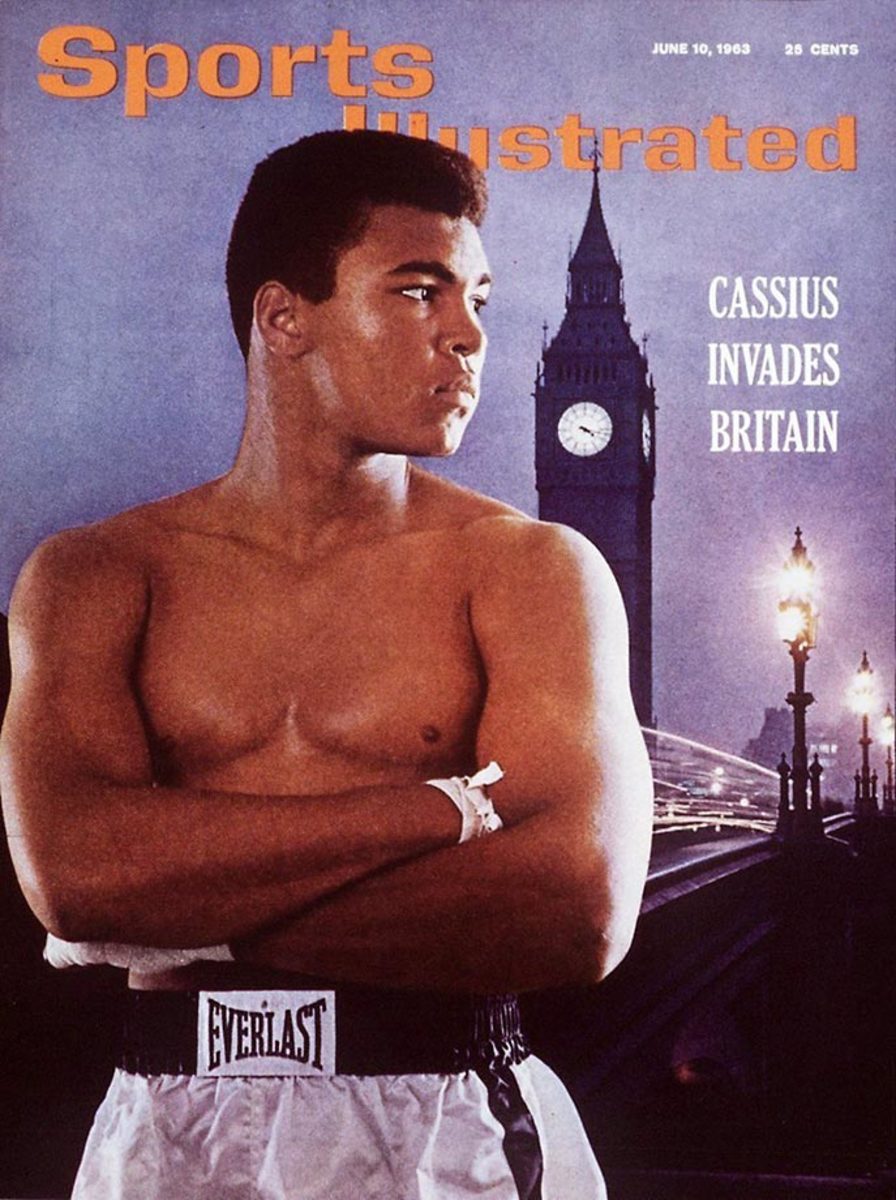
February 24, 1964
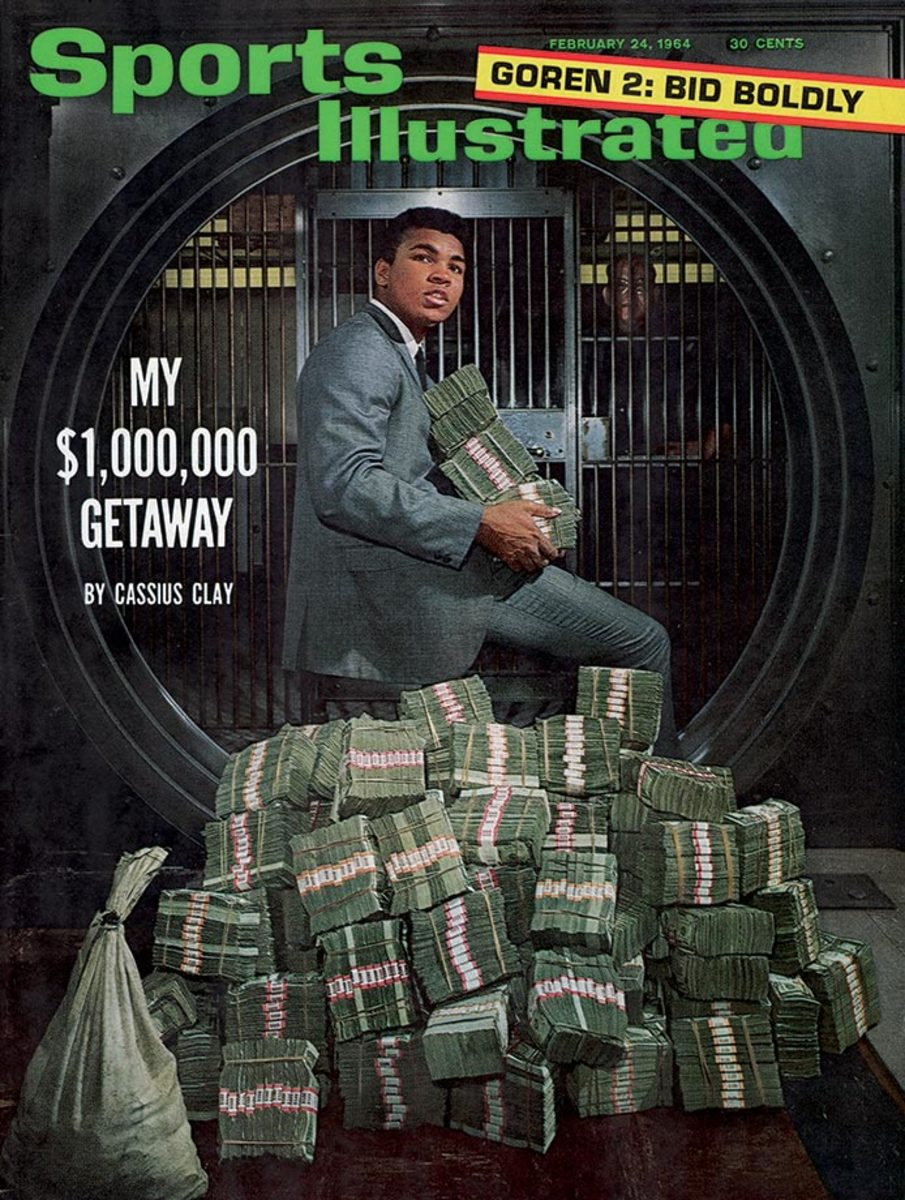
March 9, 1964
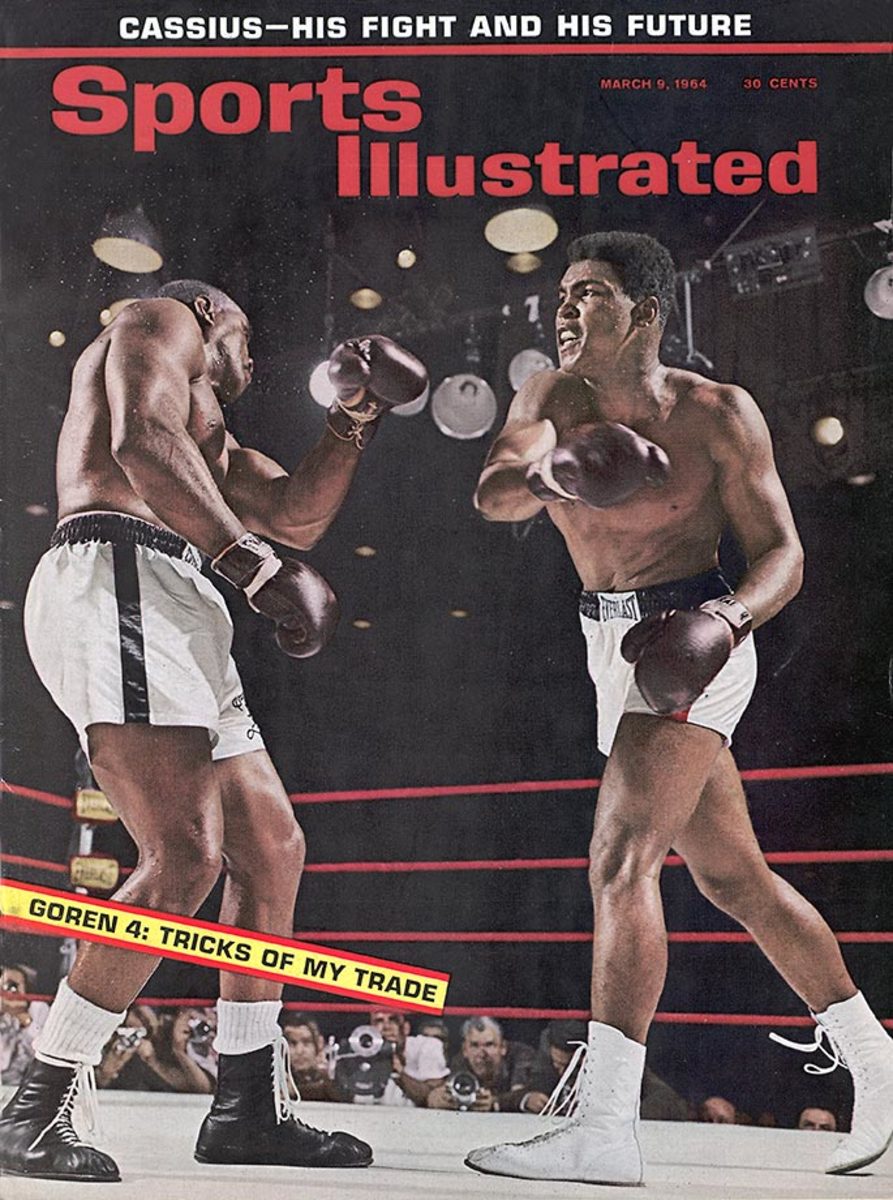
November 16, 1964
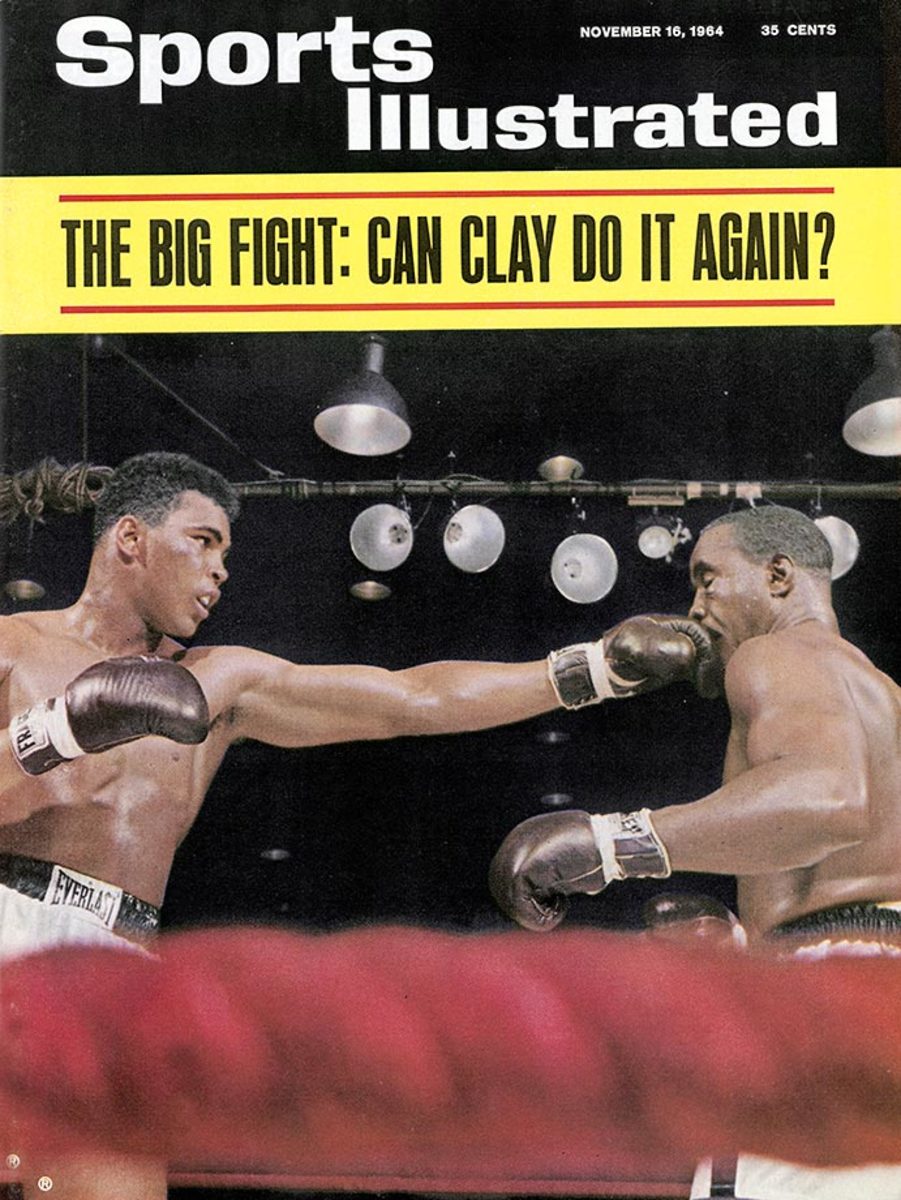
May 24, 1965
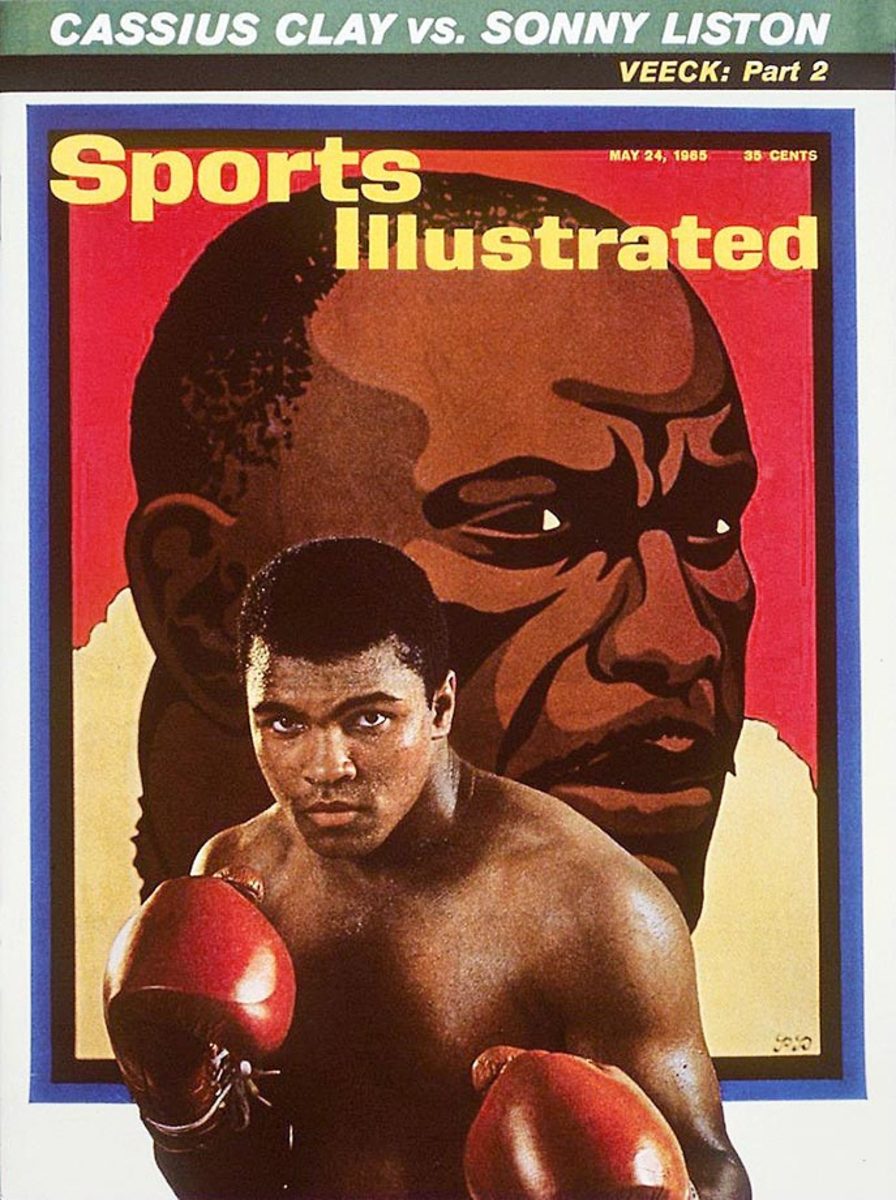
June 7, 1965
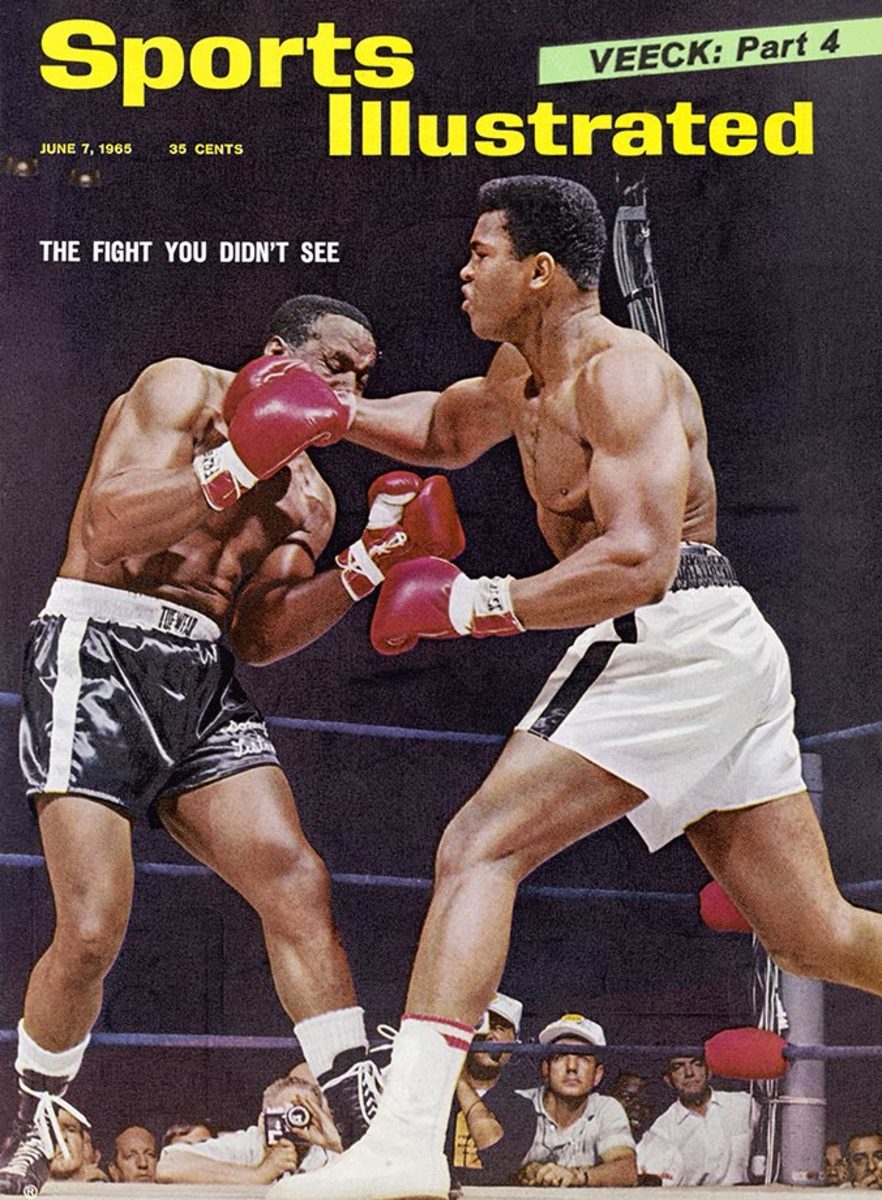
November 22, 1965
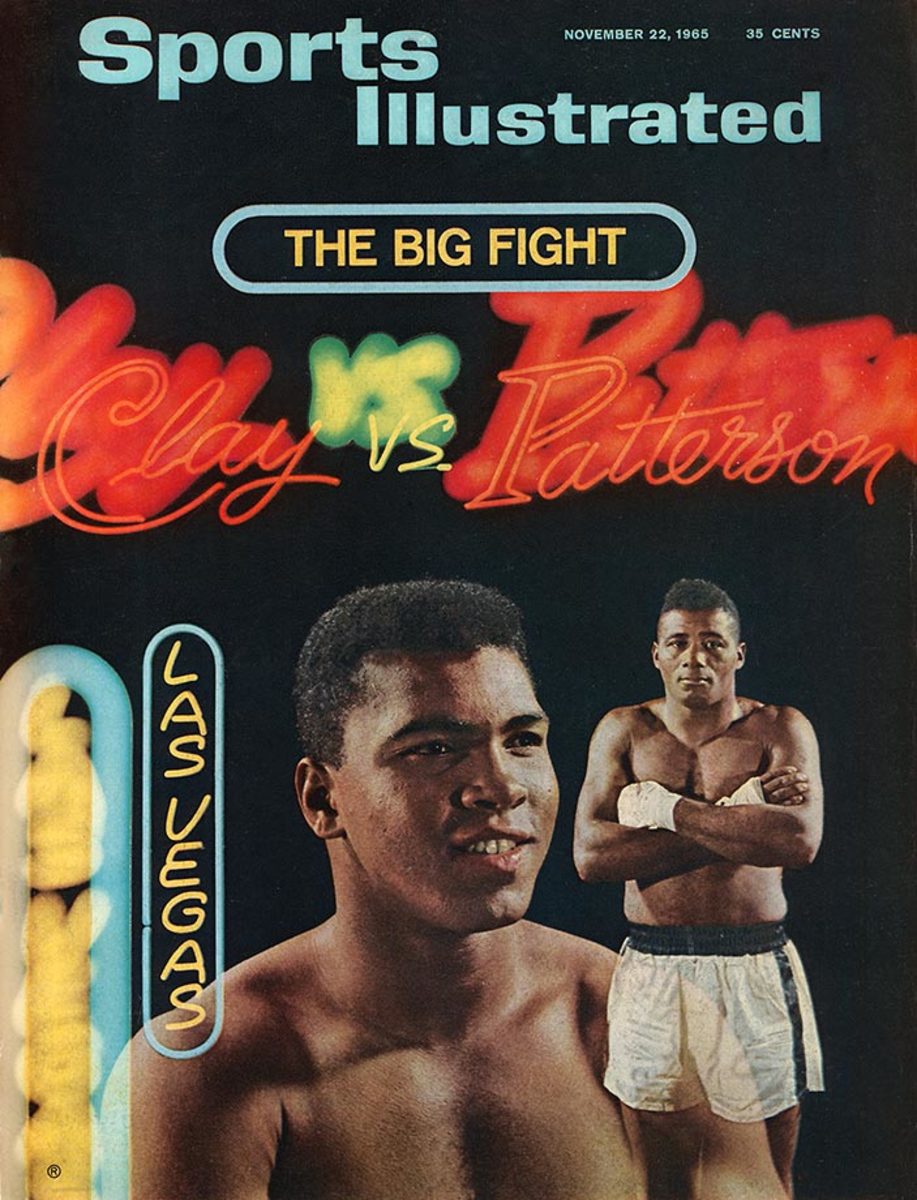
April 11, 1966
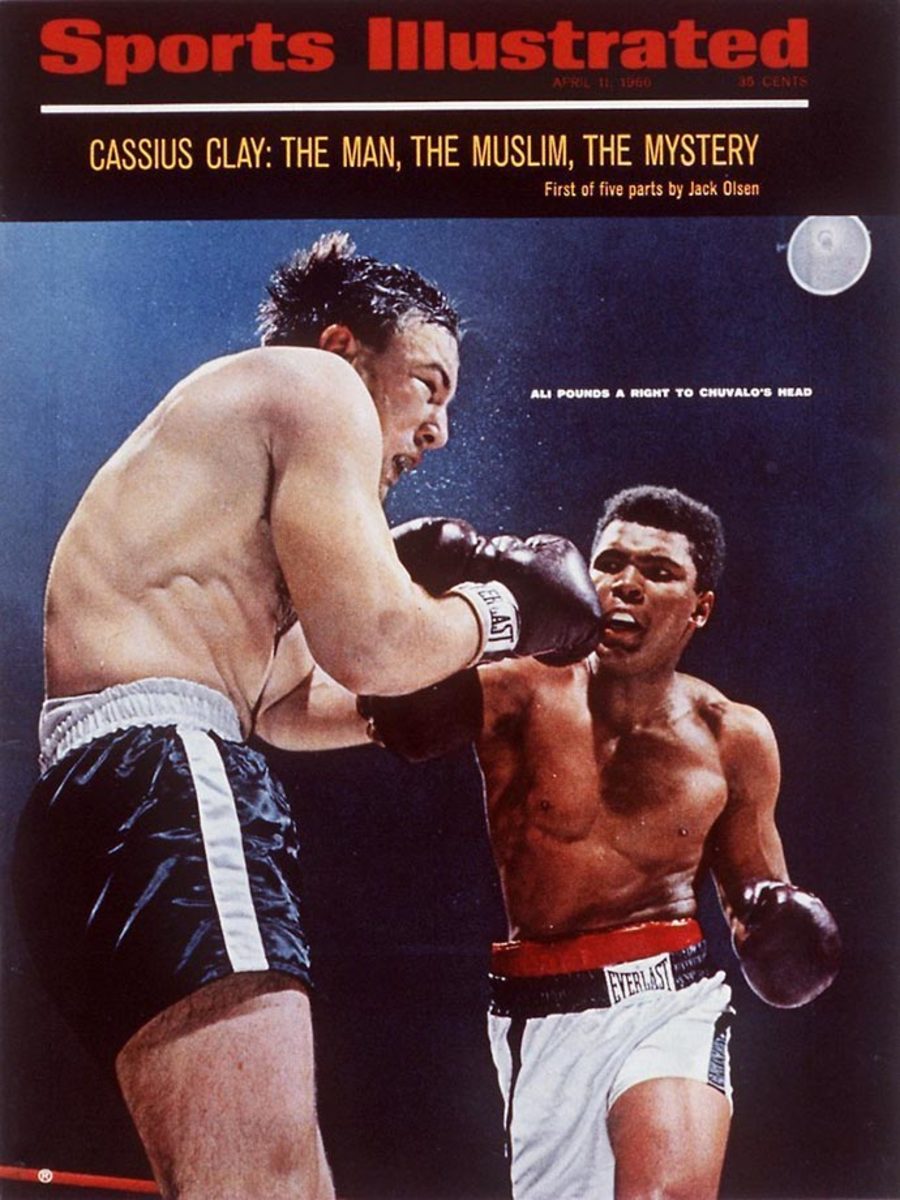
February 6, 1967
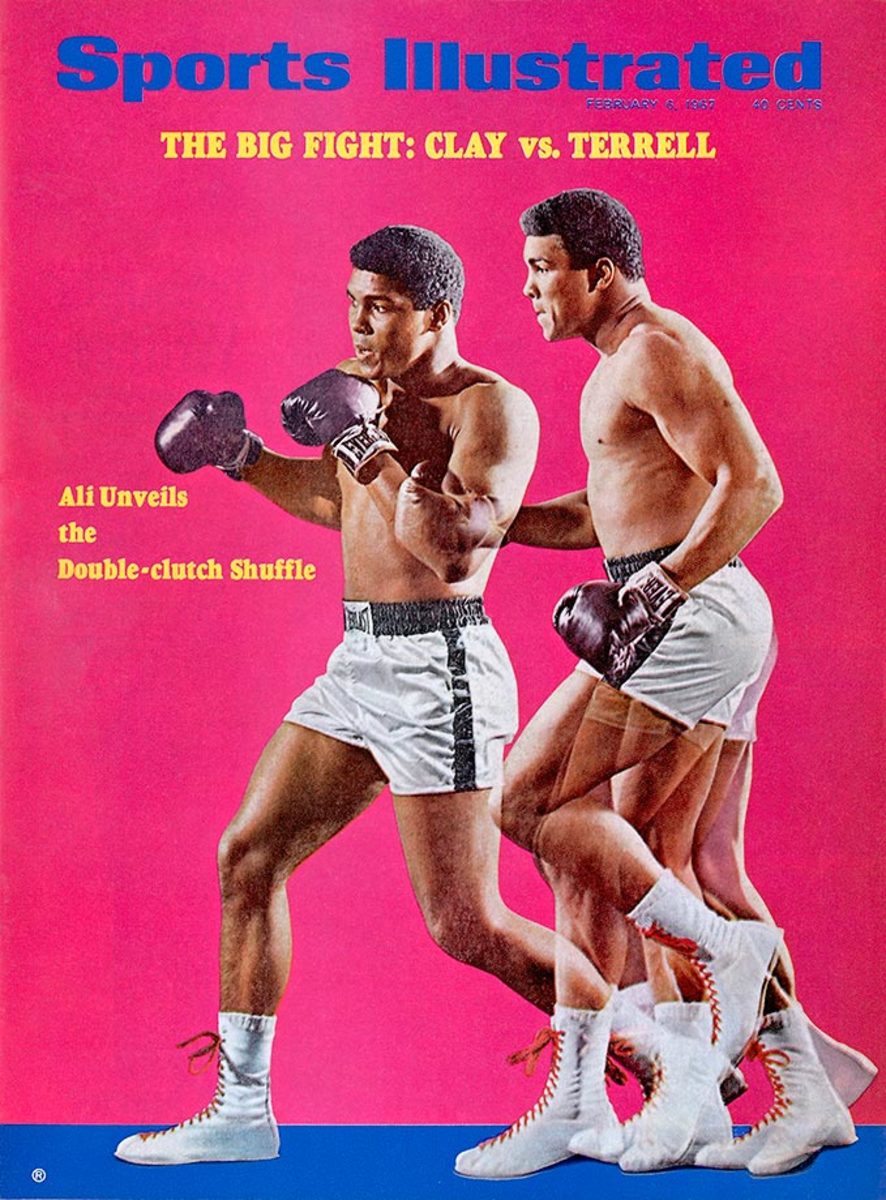
July 10, 1967
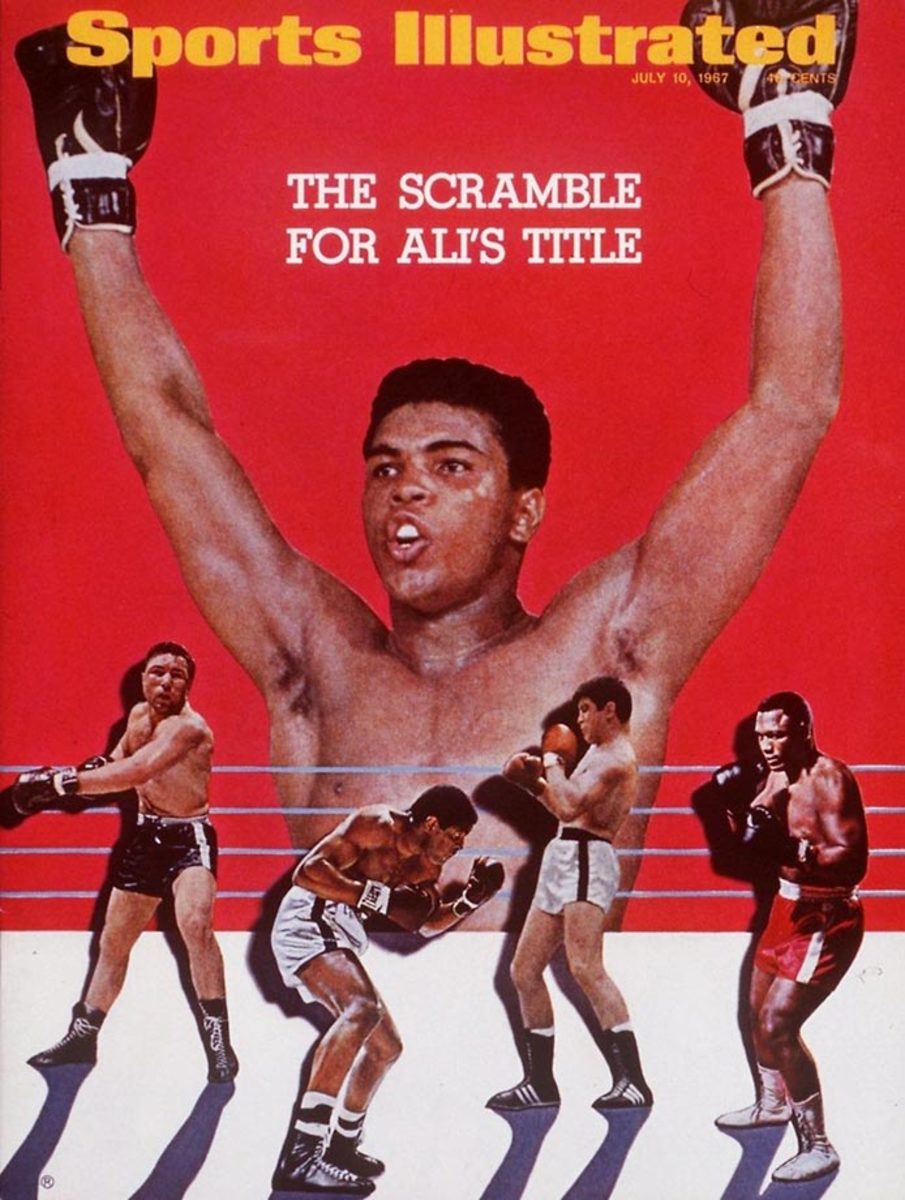
May 5, 1969
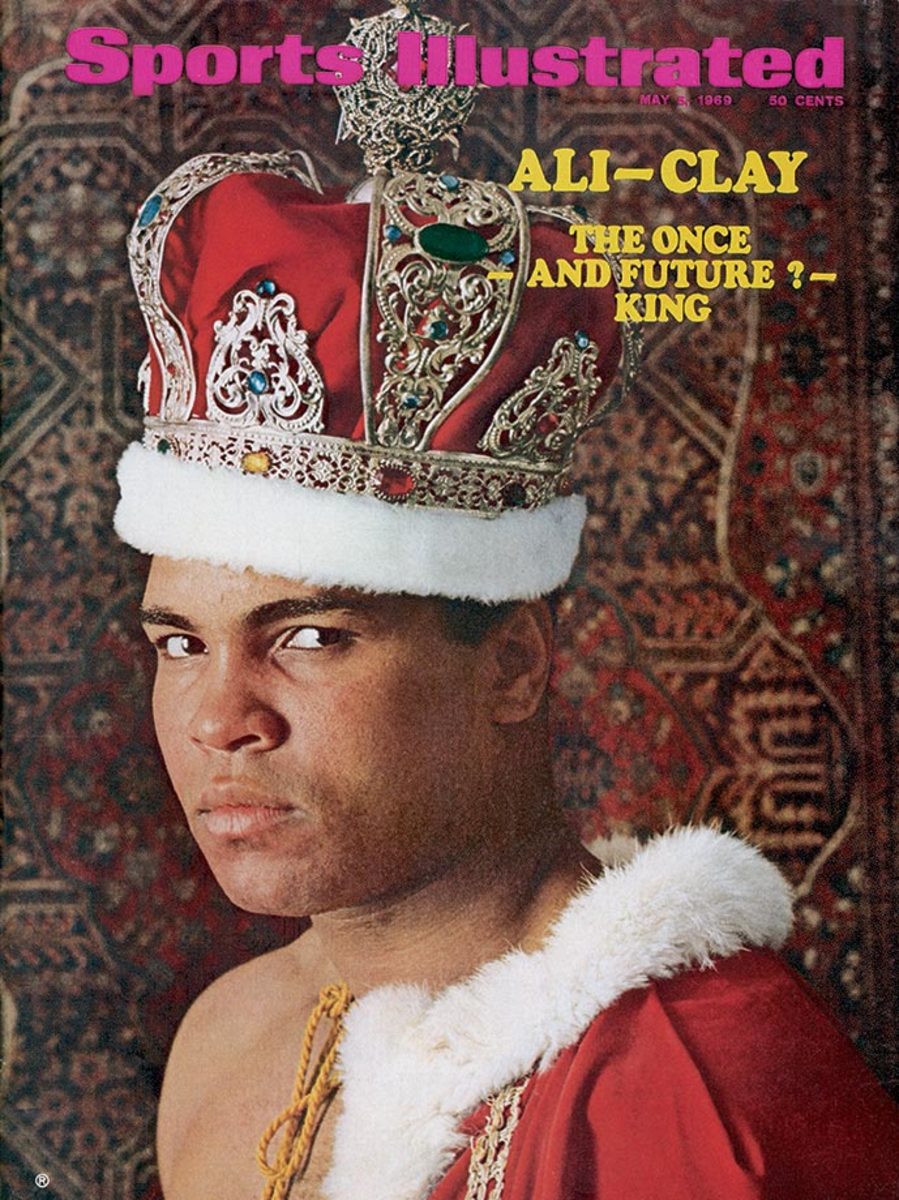
March 1, 1971
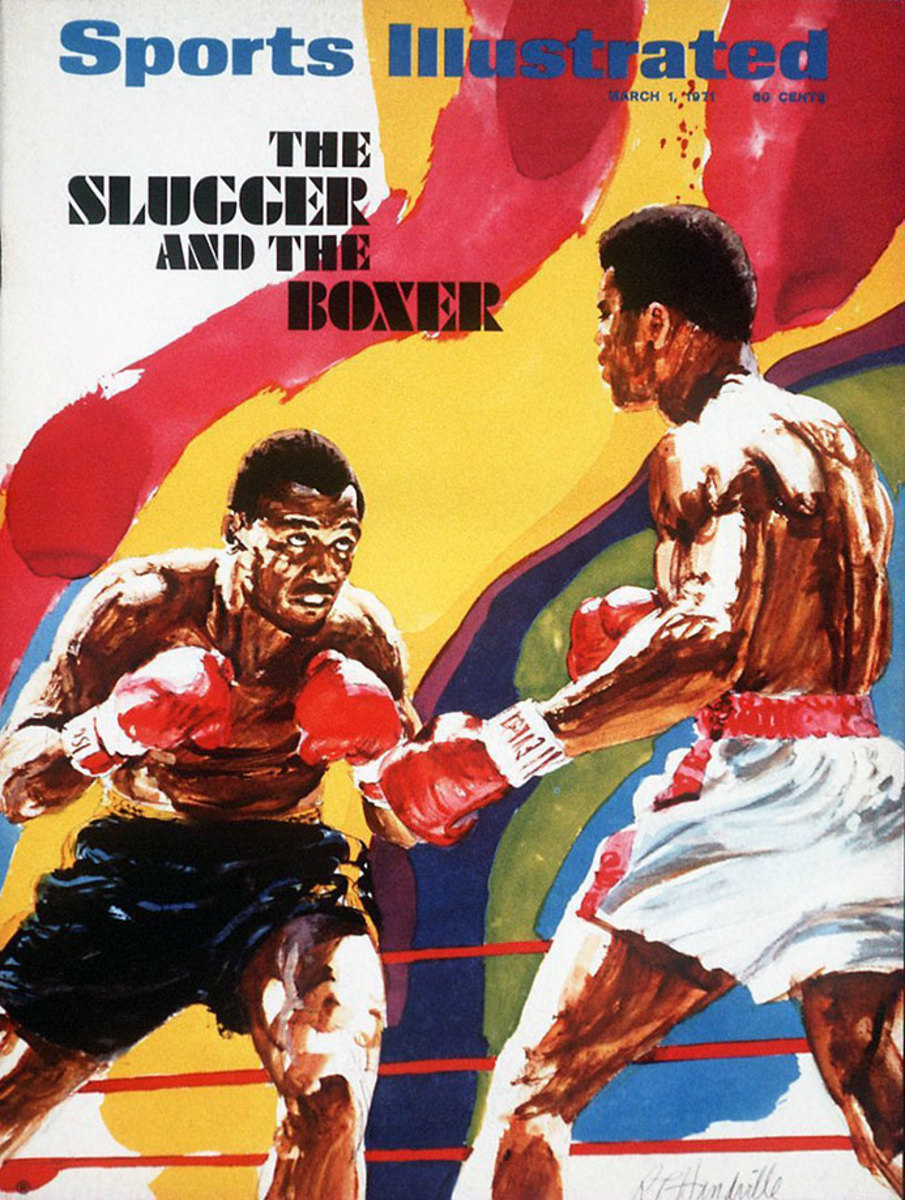
March 15, 1971
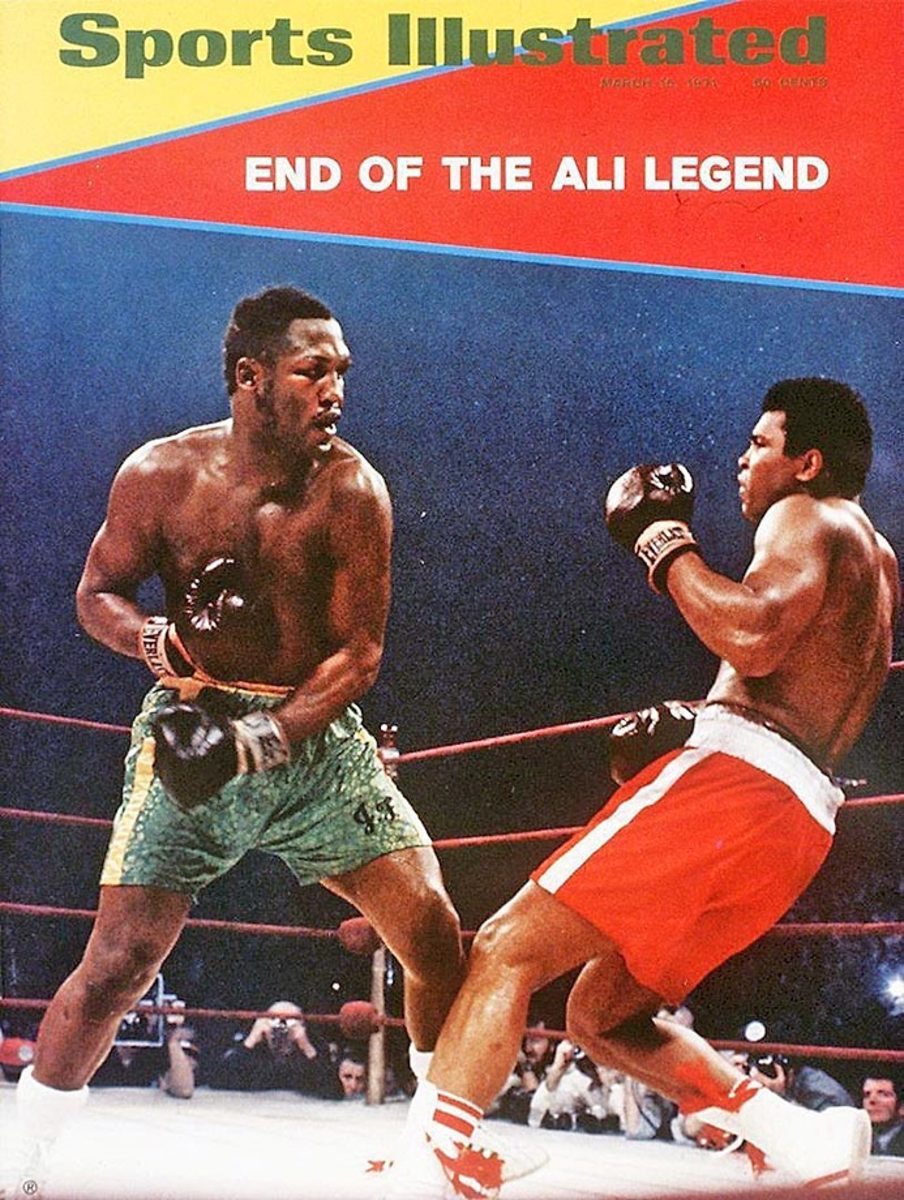
July 26, 1971
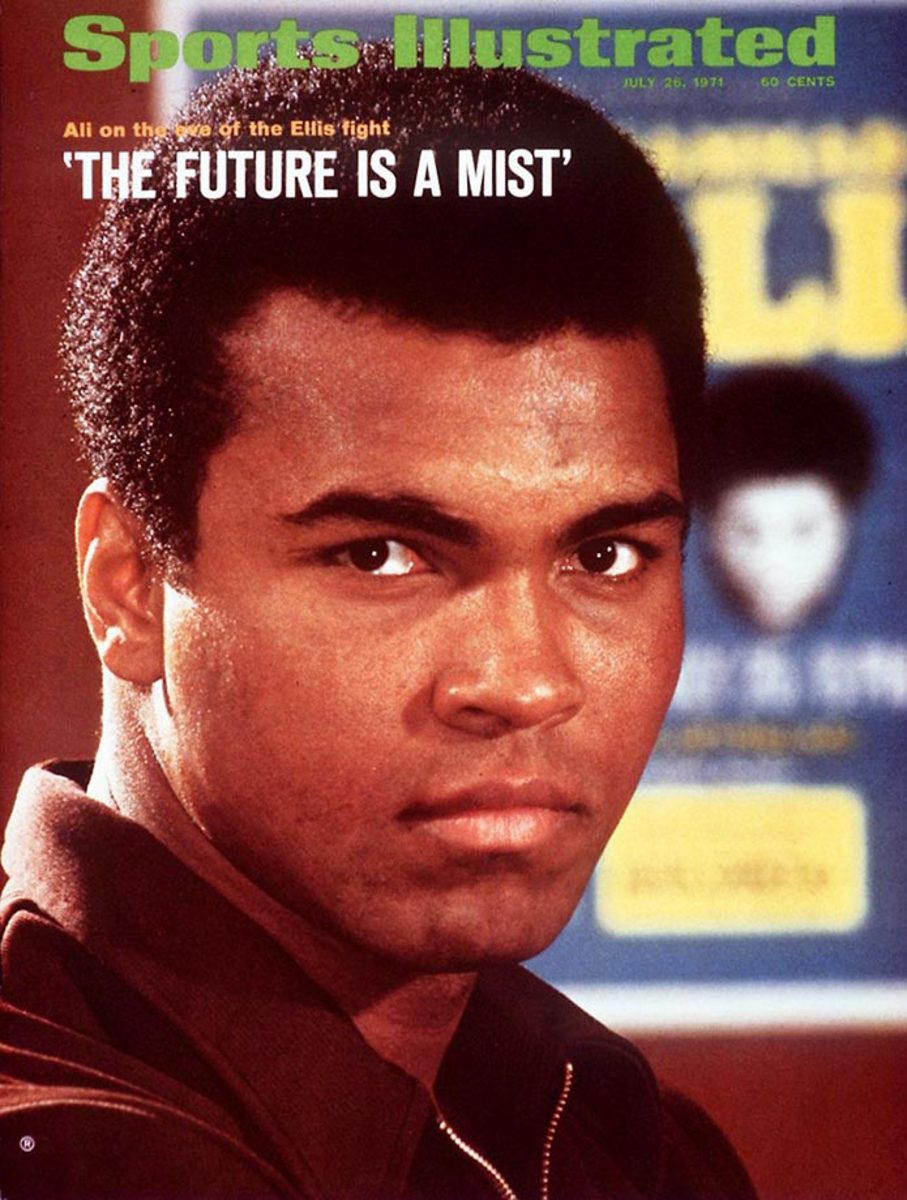
April 23, 1973
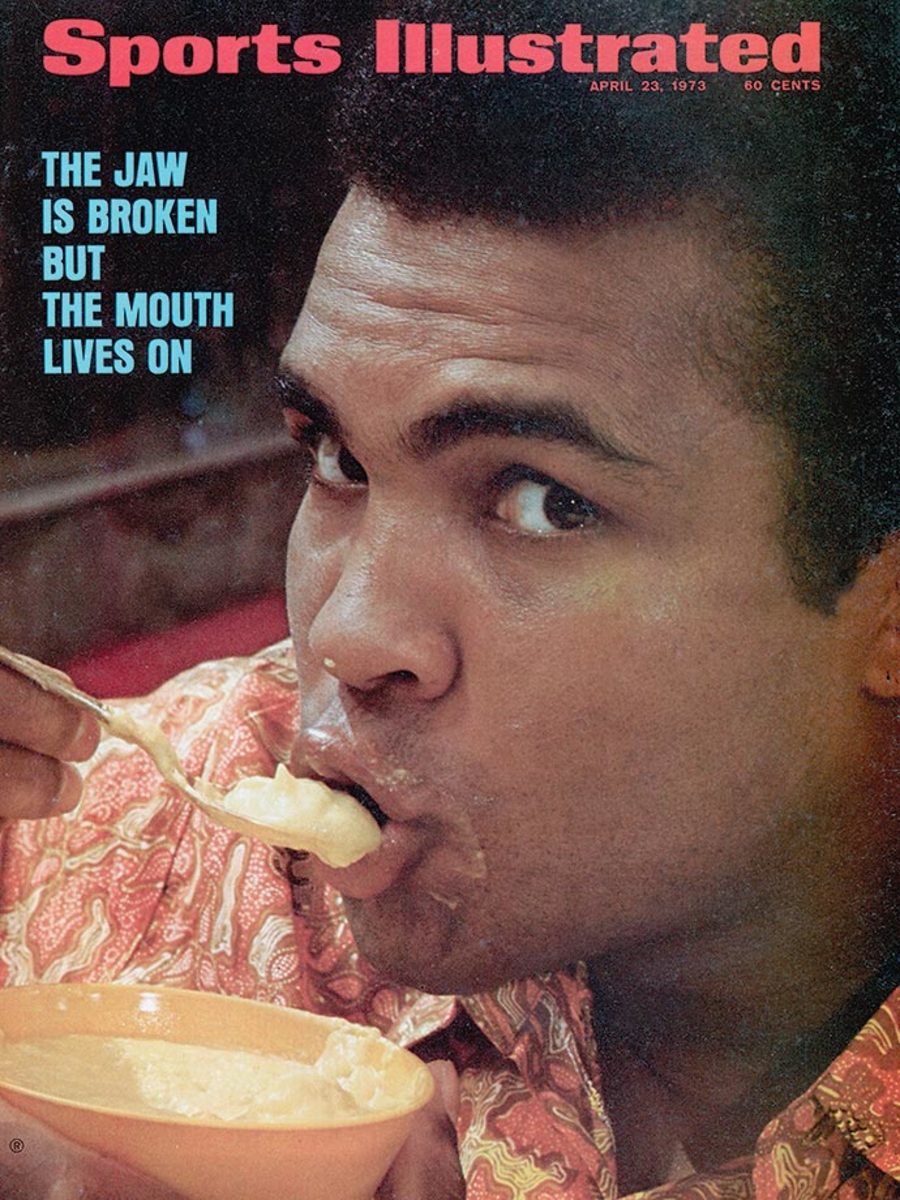
February 4, 1974
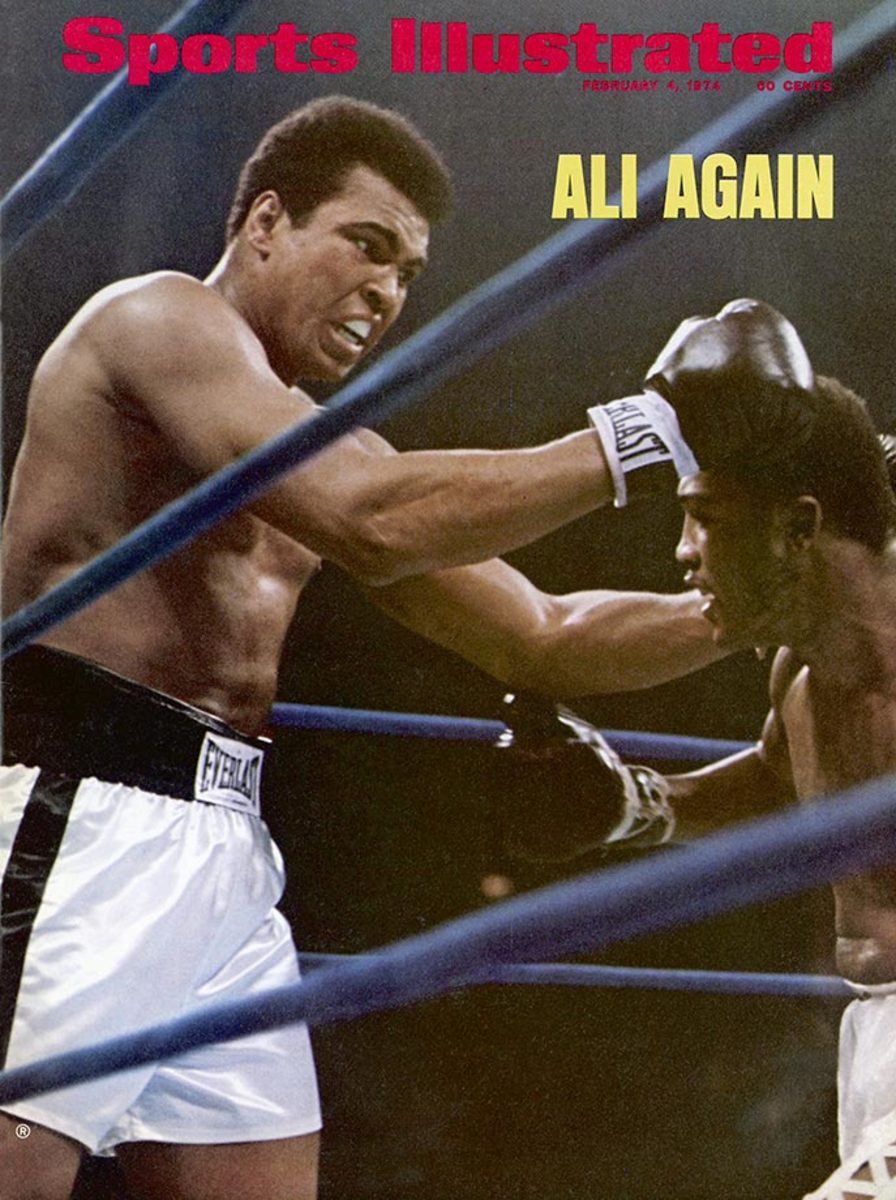
October 28, 1974
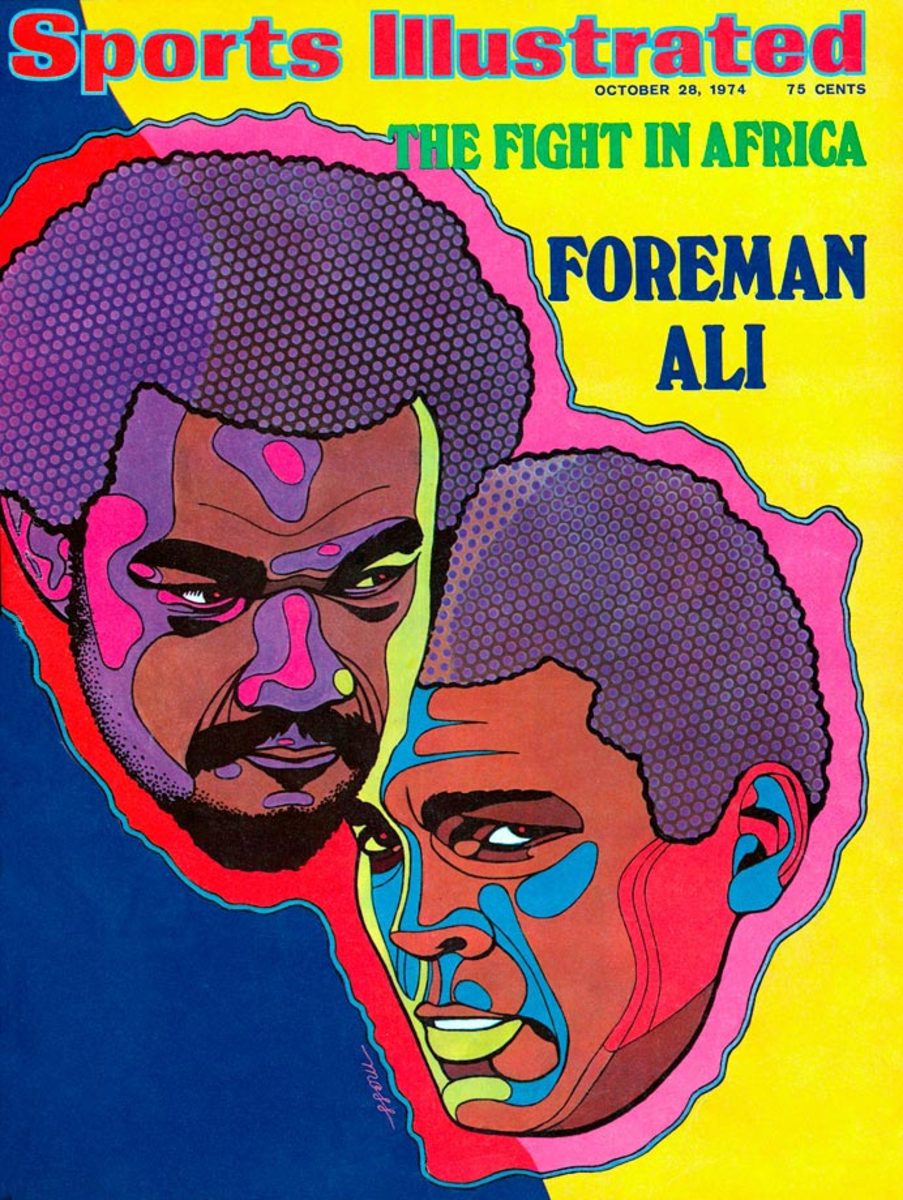
November 11, 1974
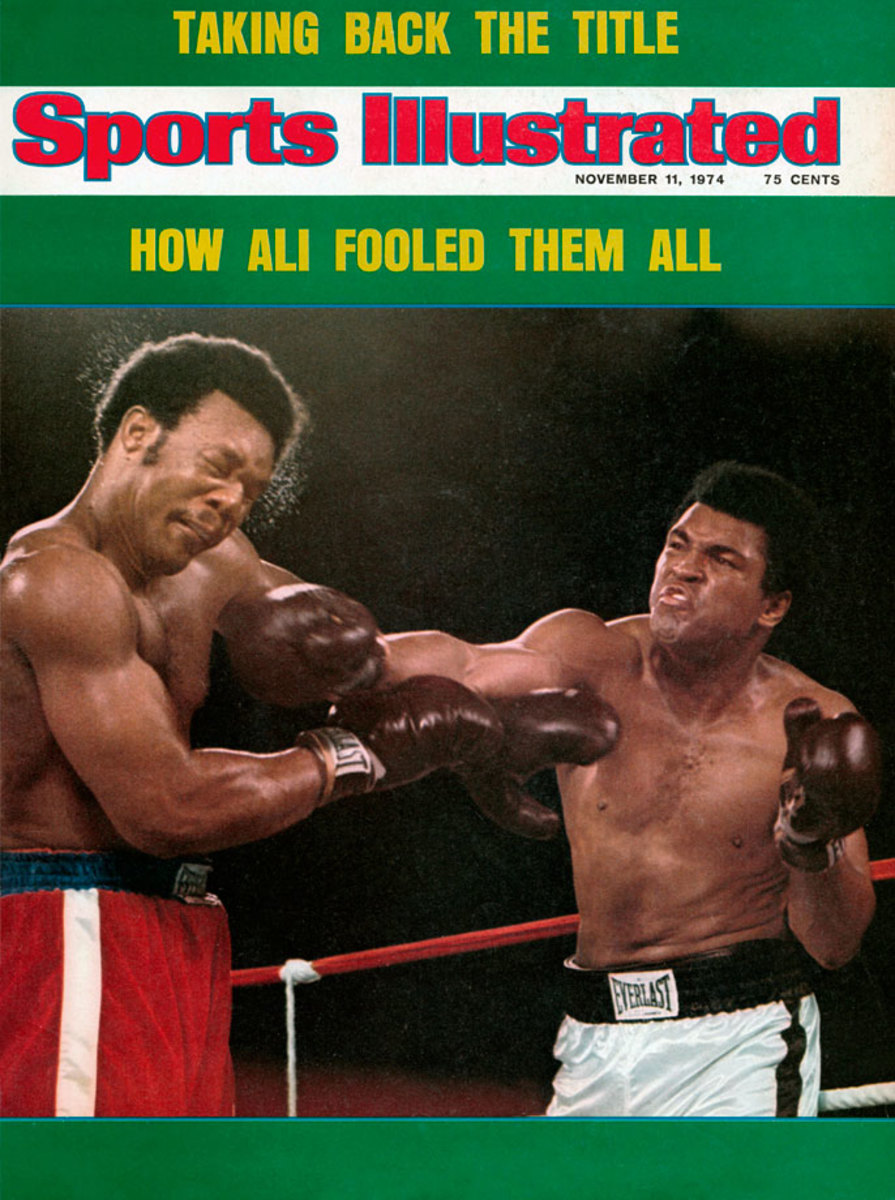
December 23, 1974
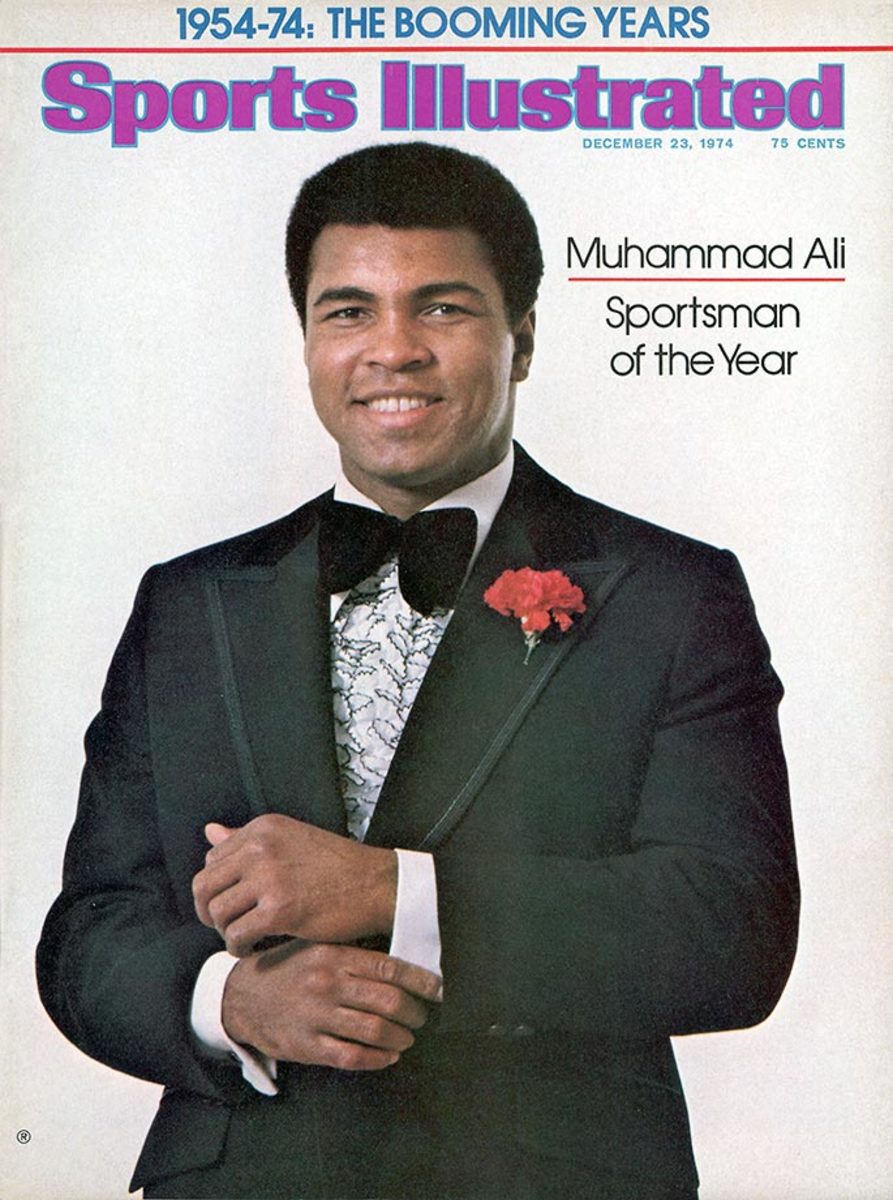
September 15, 1975
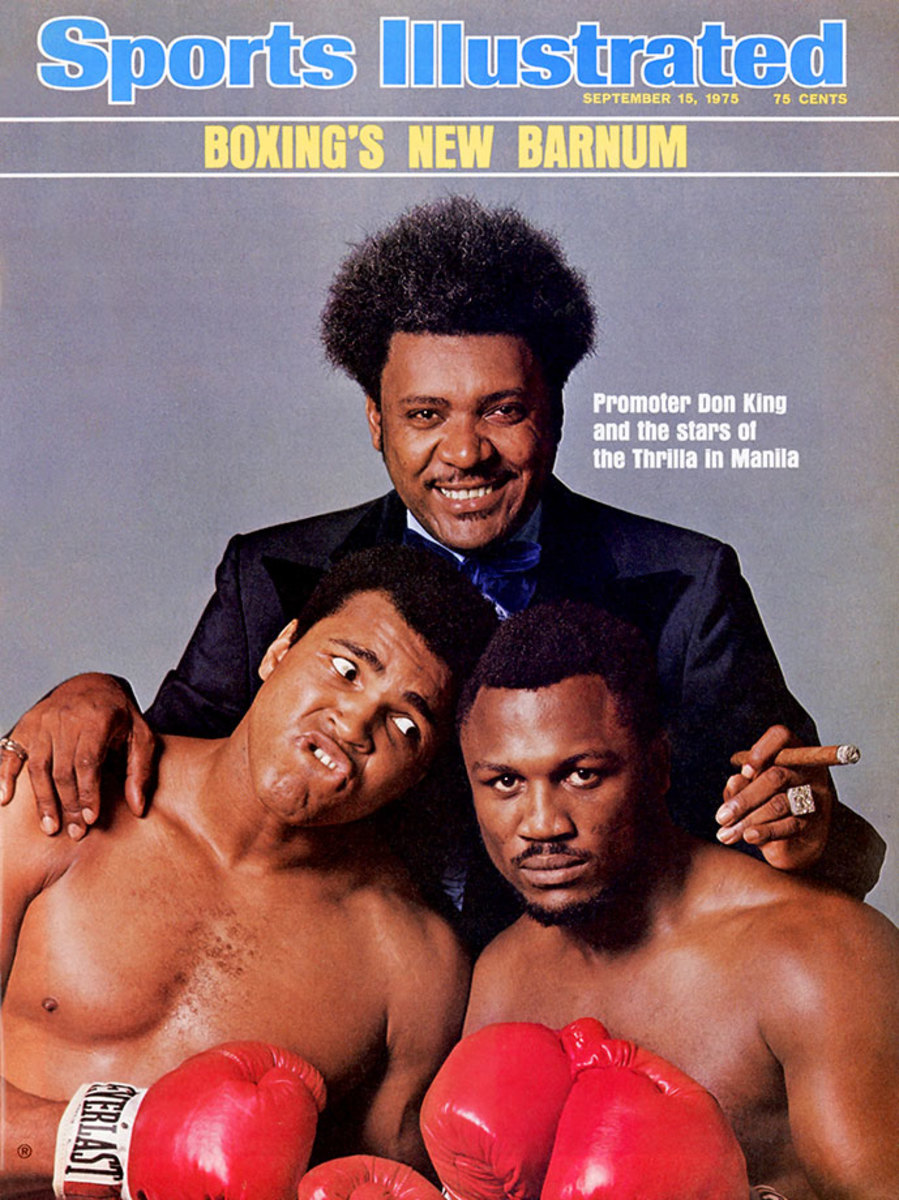
October 13, 1975
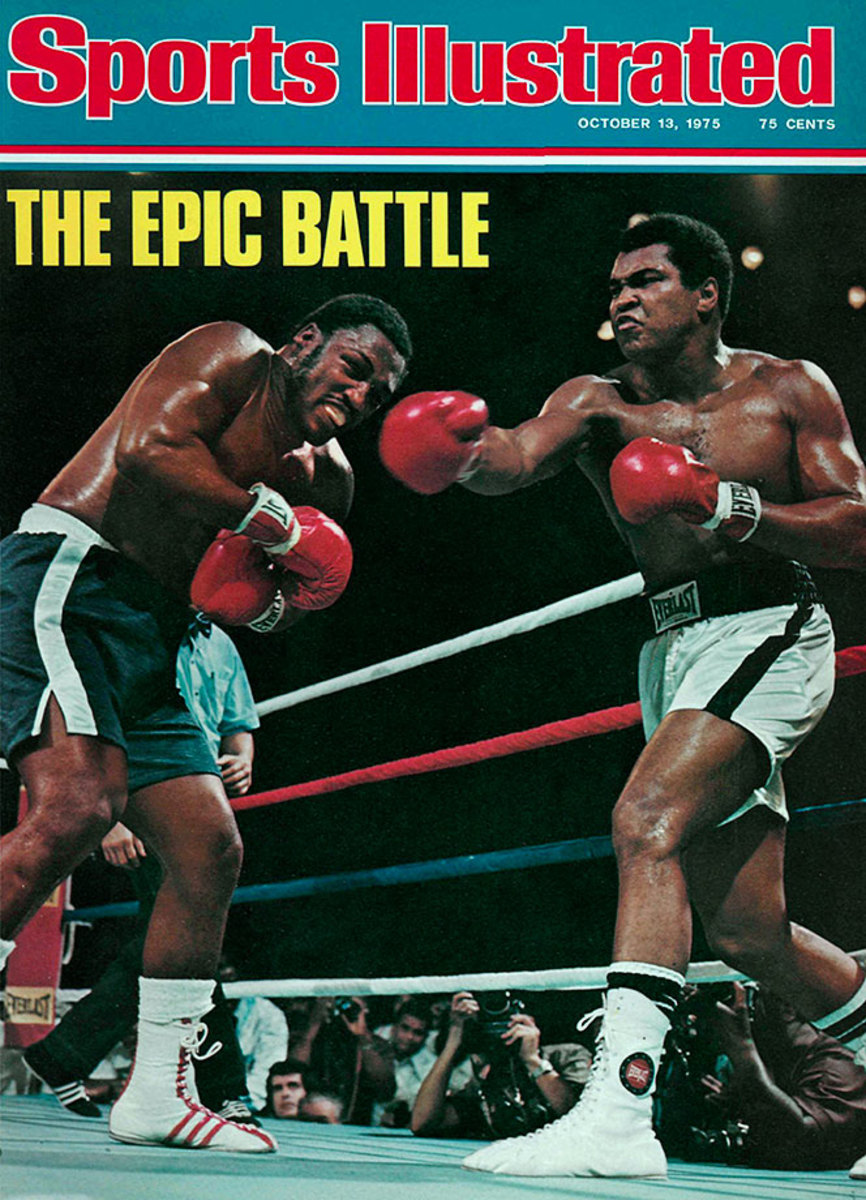
March 1, 1976
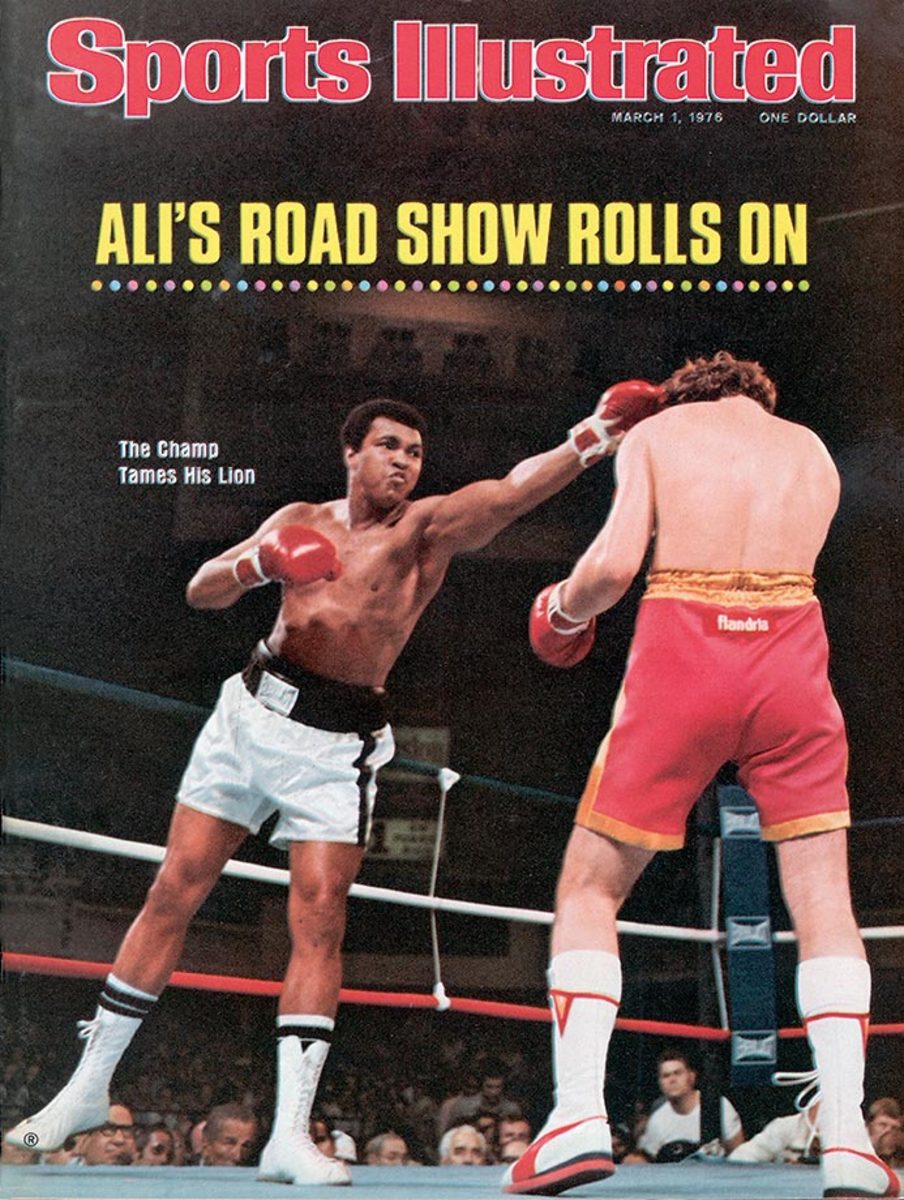
October 10, 1977
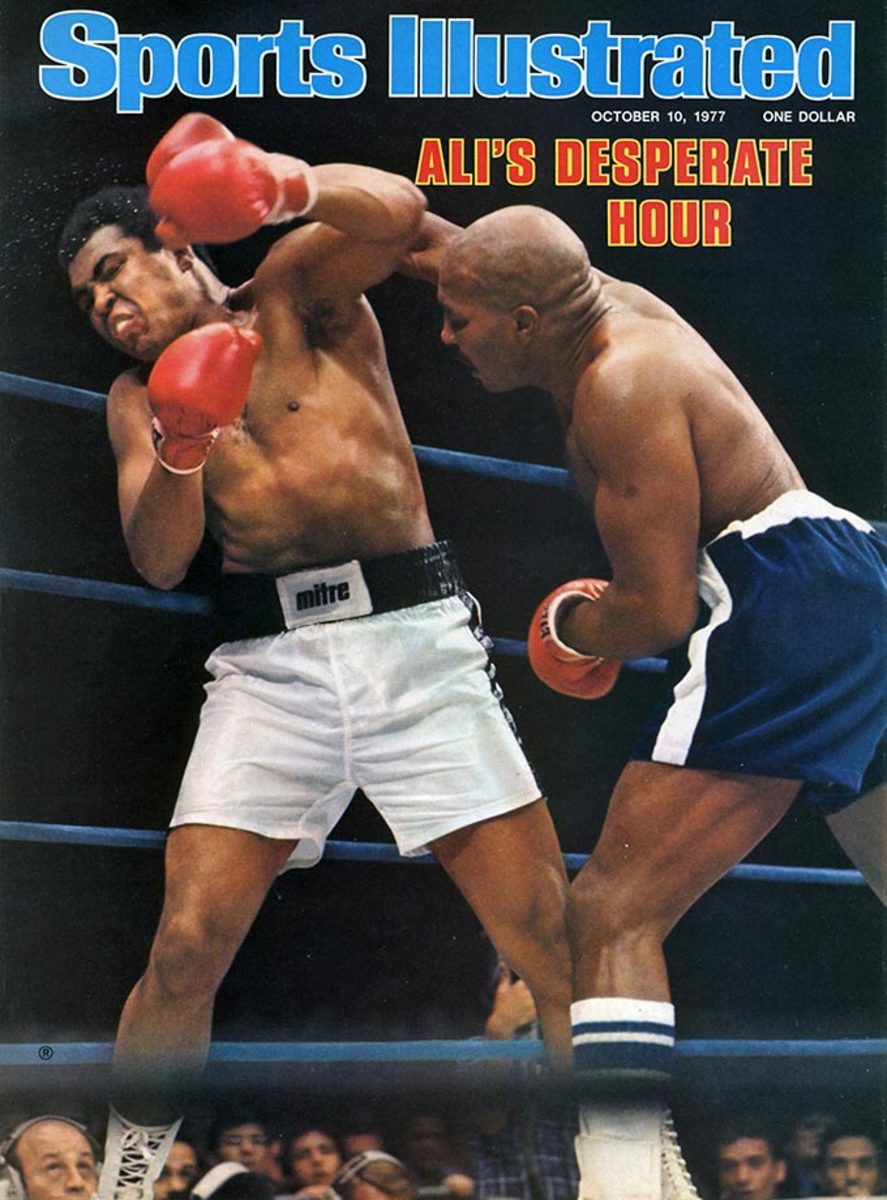
September 25, 1978
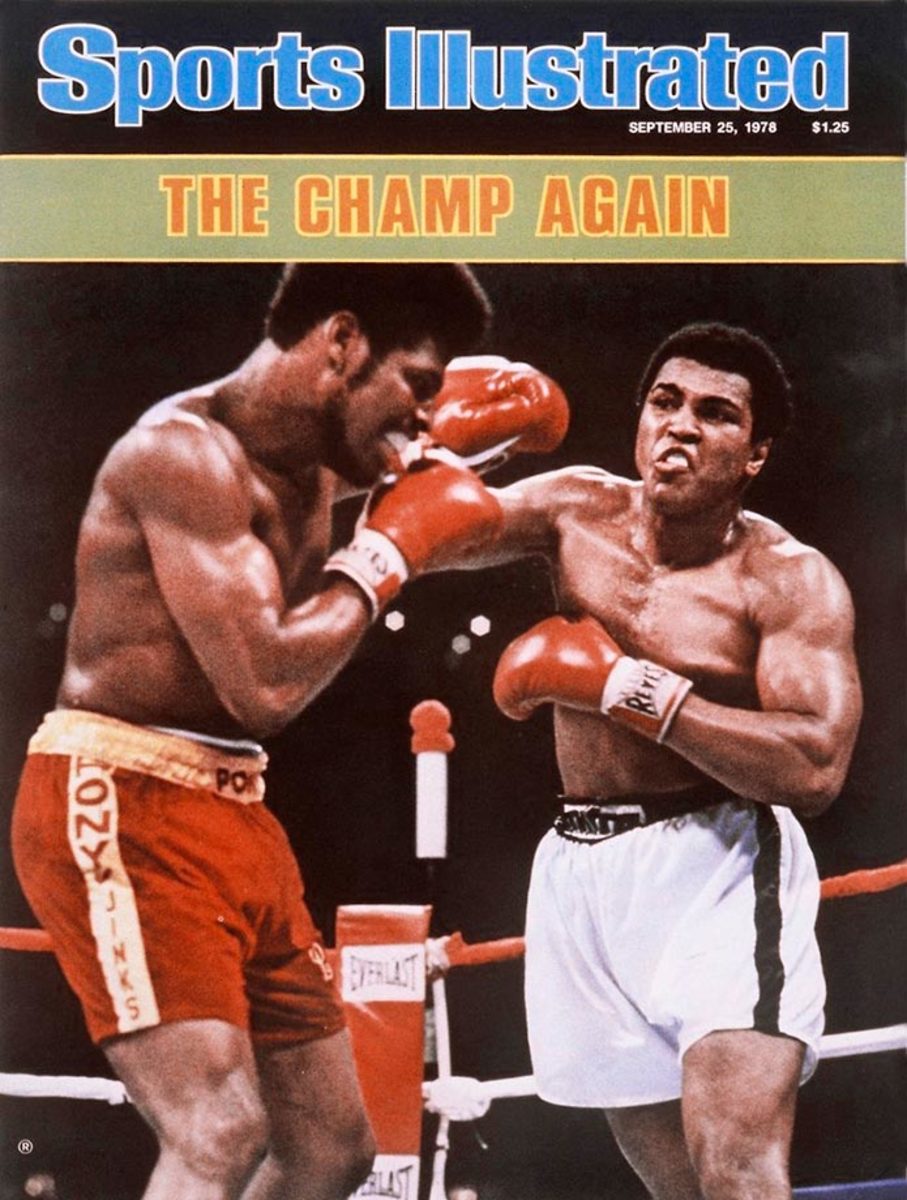
April 14, 1980
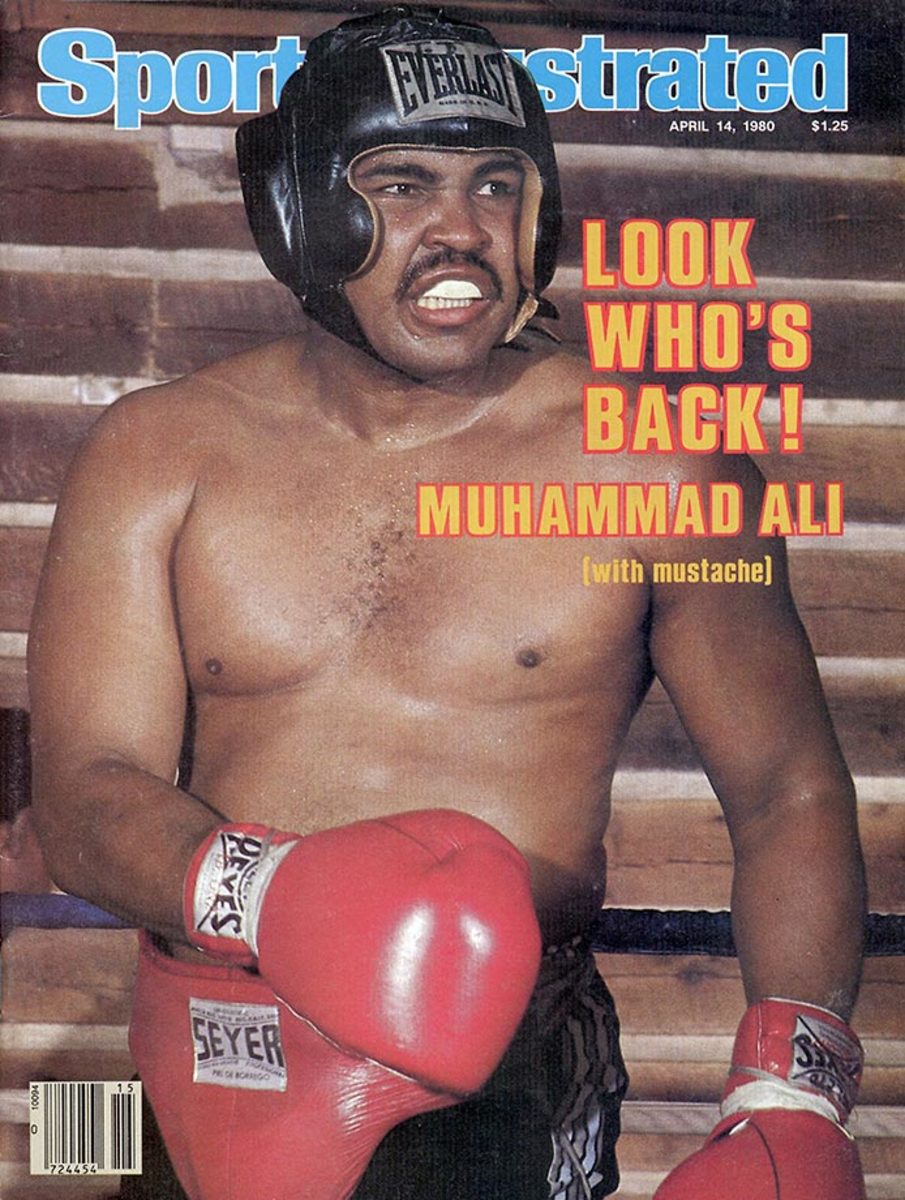
September 29, 1980
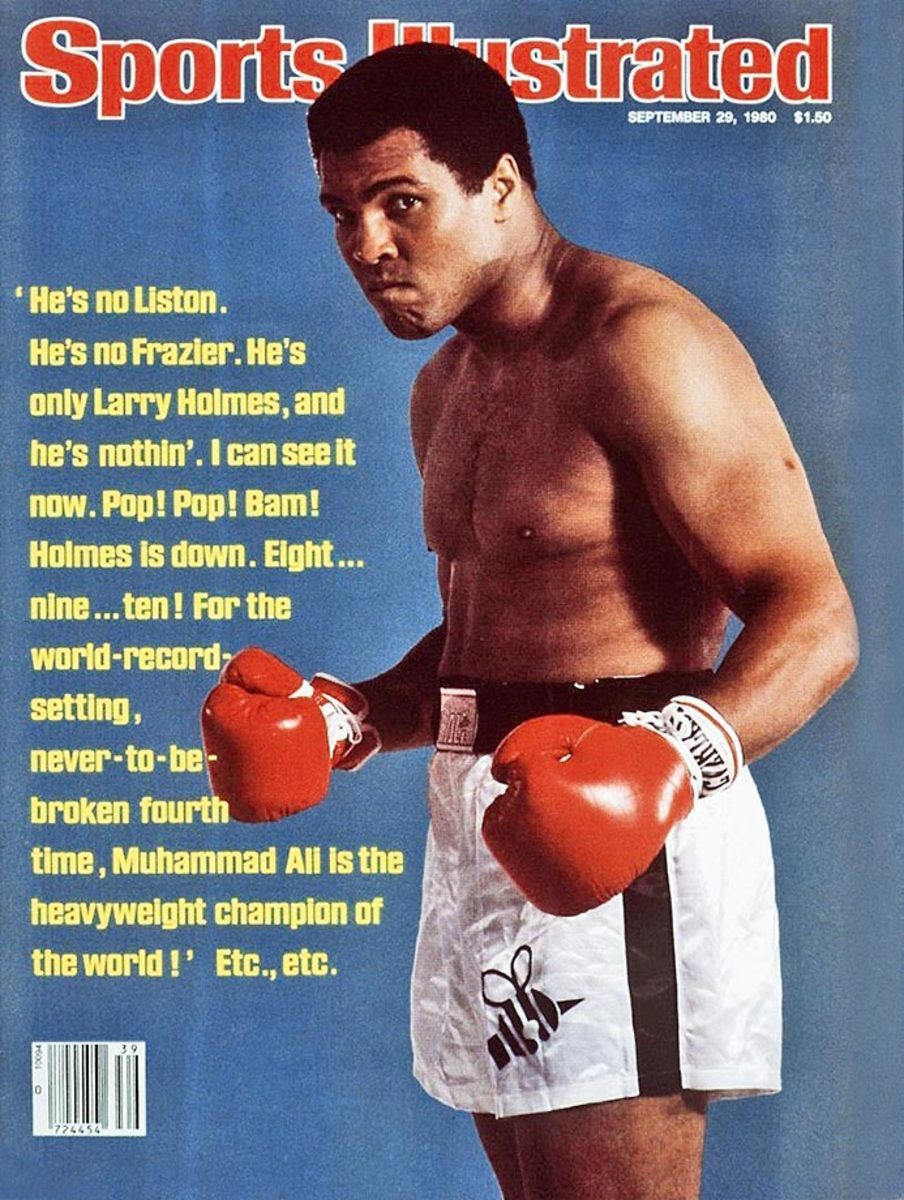
October 13, 1980
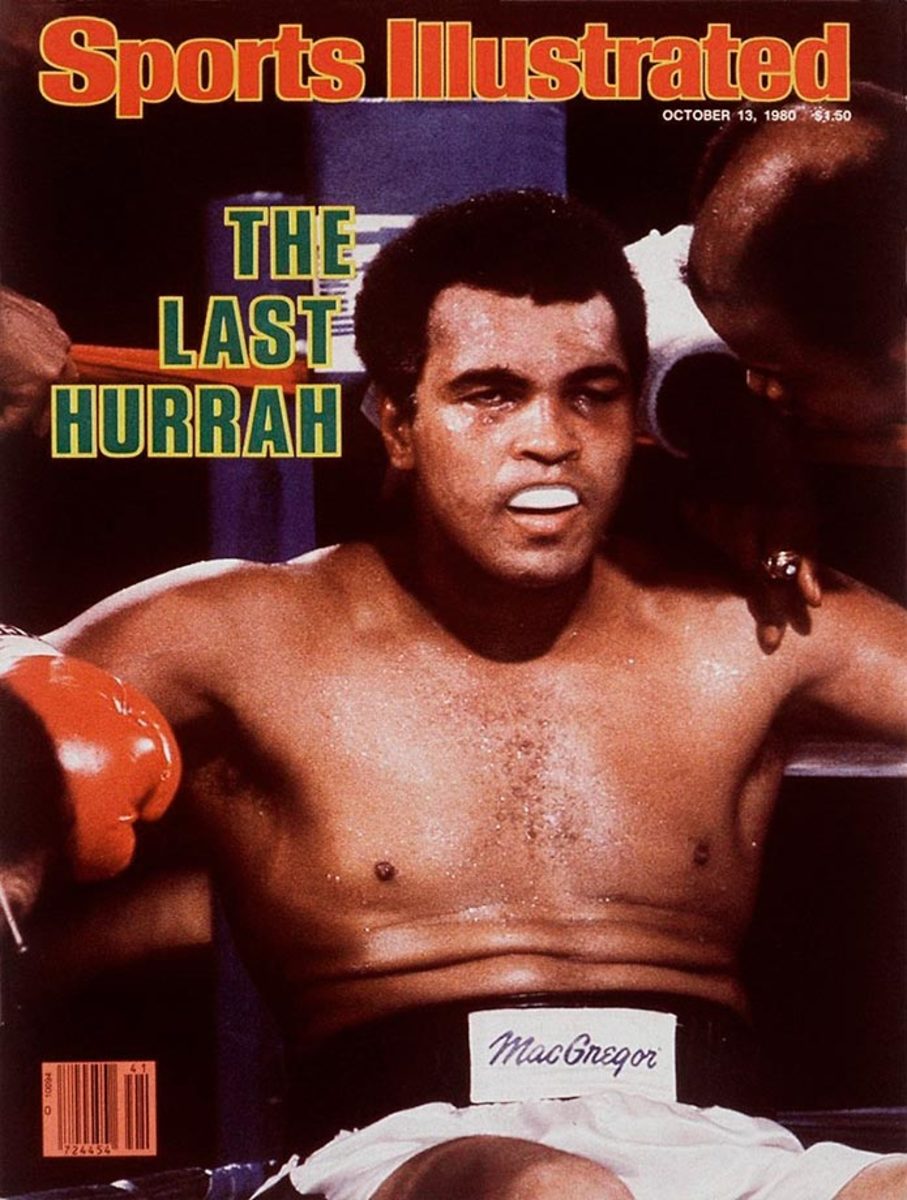
April 25, 1988
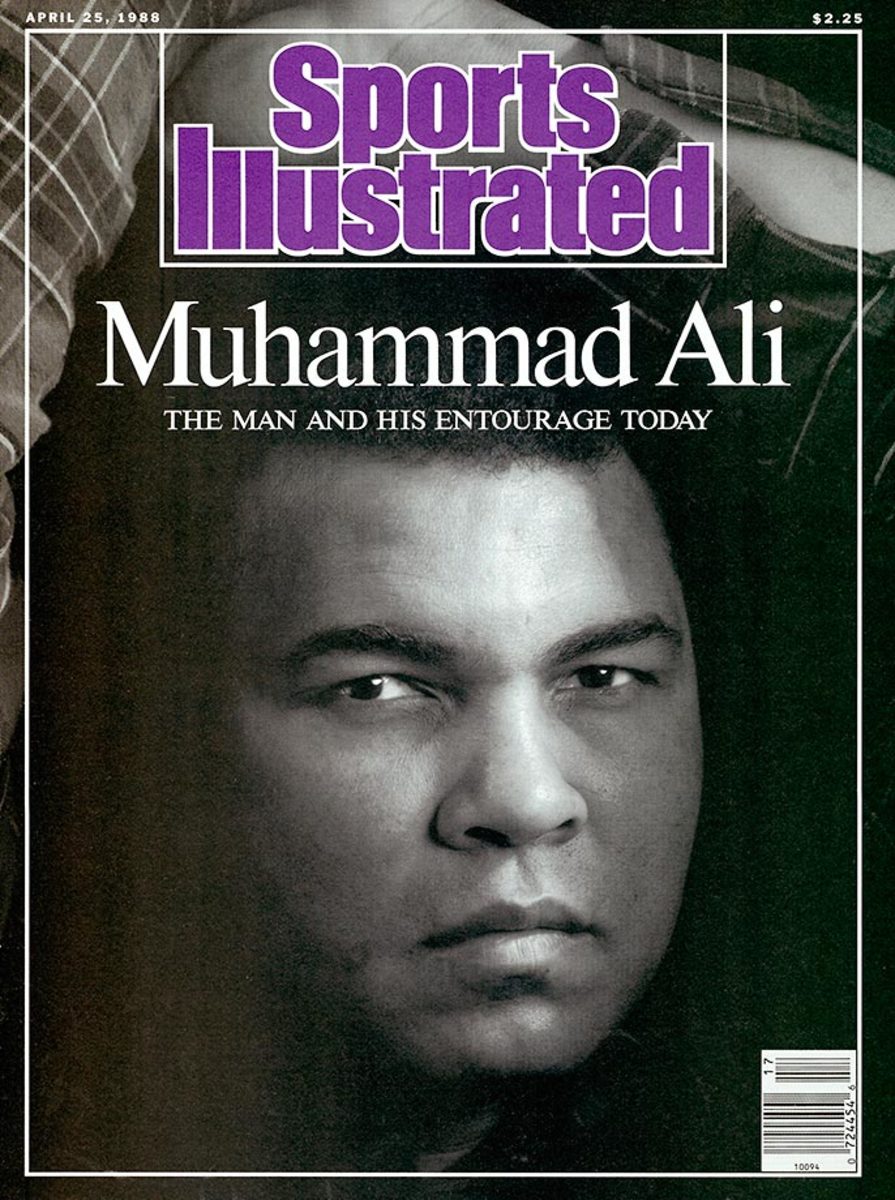
November 15, 1989
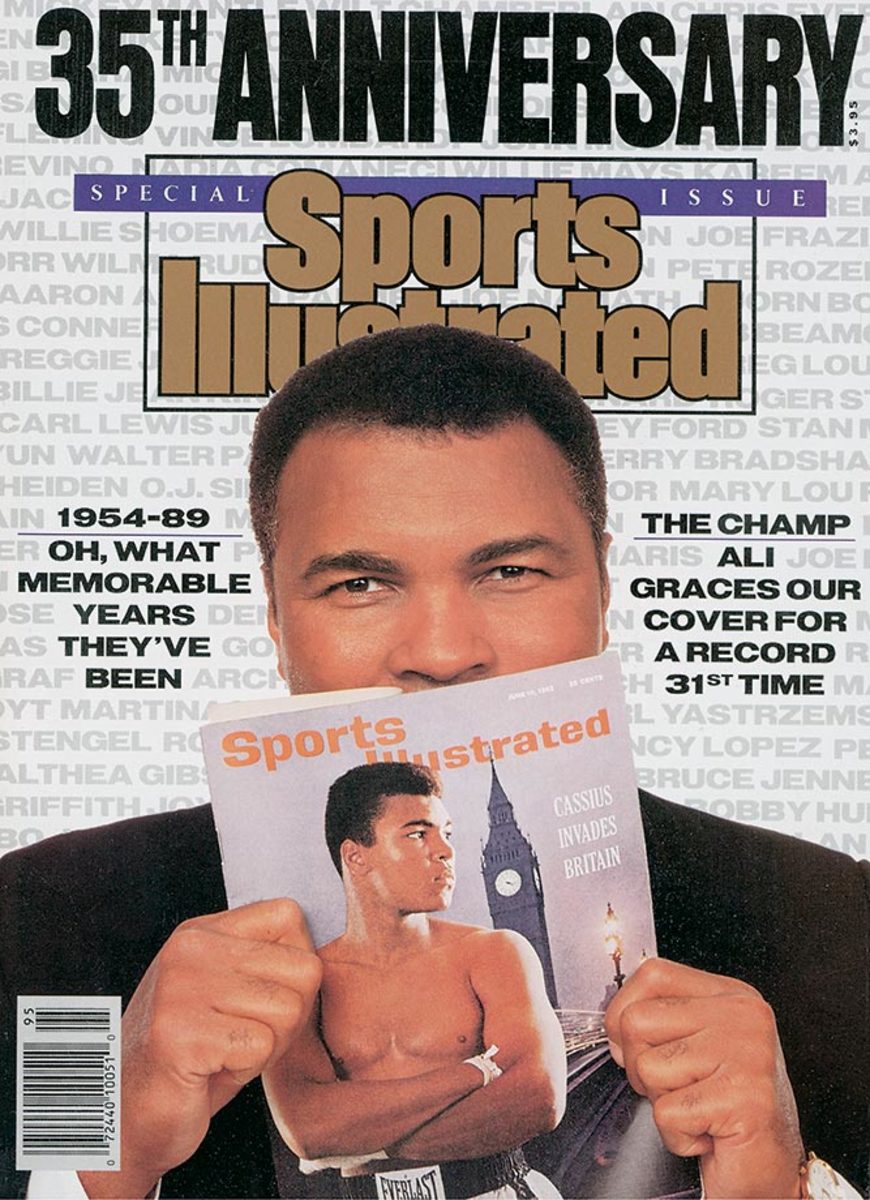
January 13, 1992
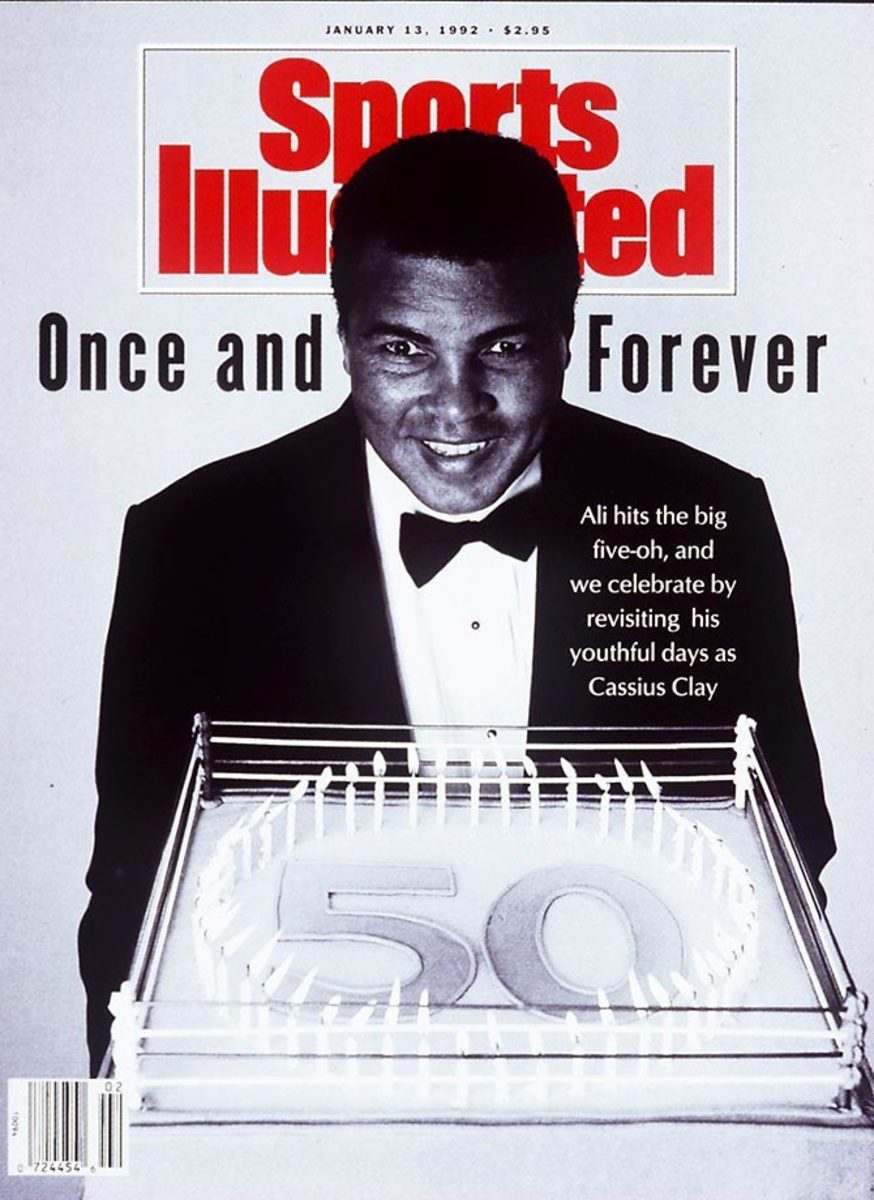
September 19, 1994
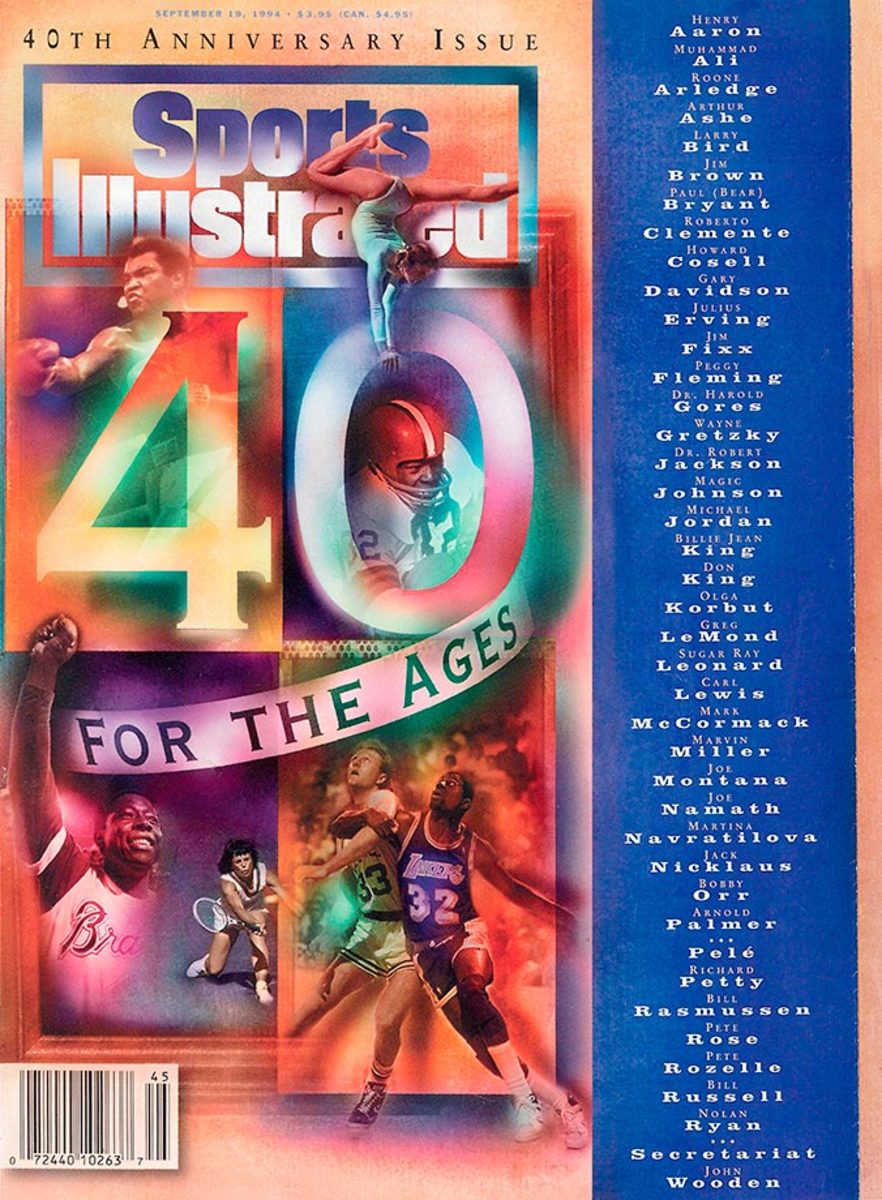
September 30, 1996
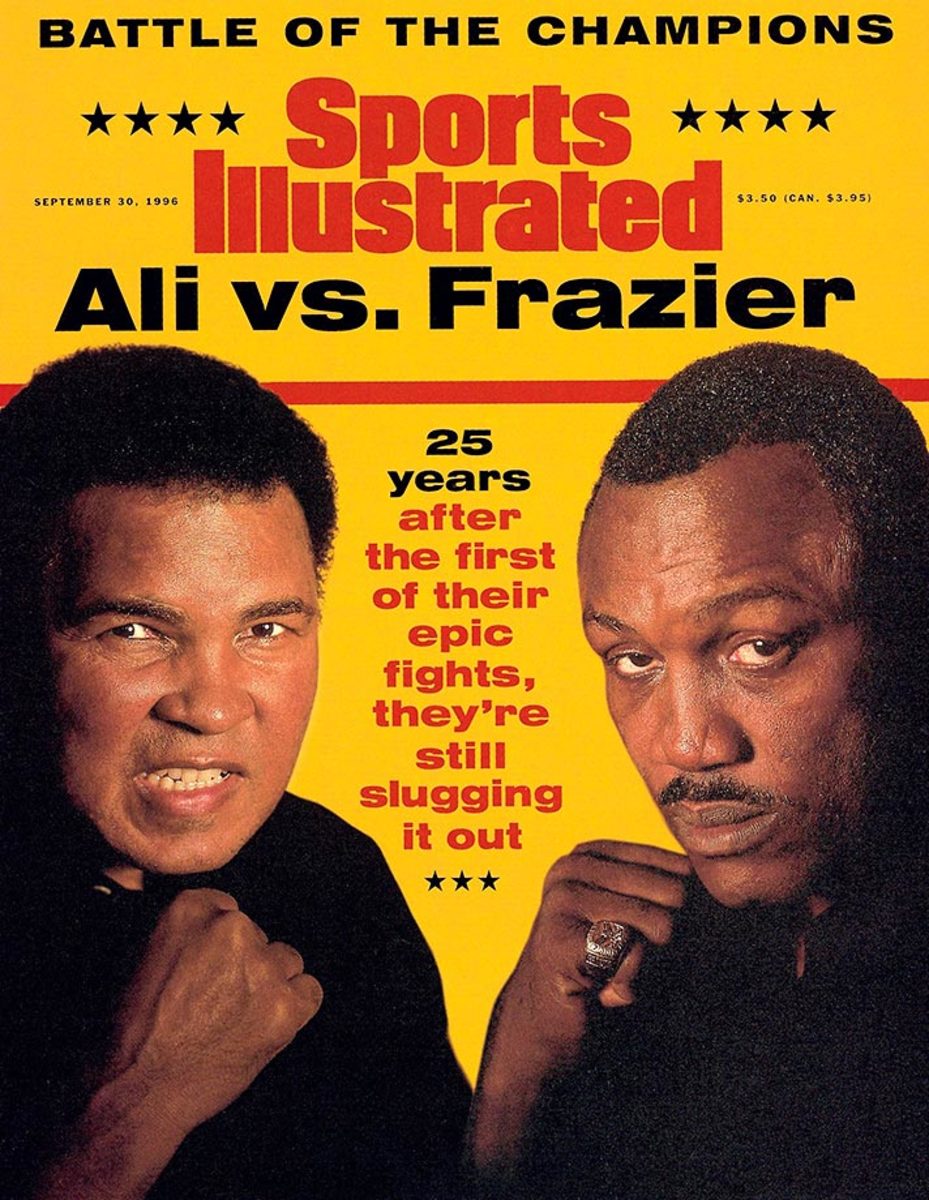
July 13, 1998
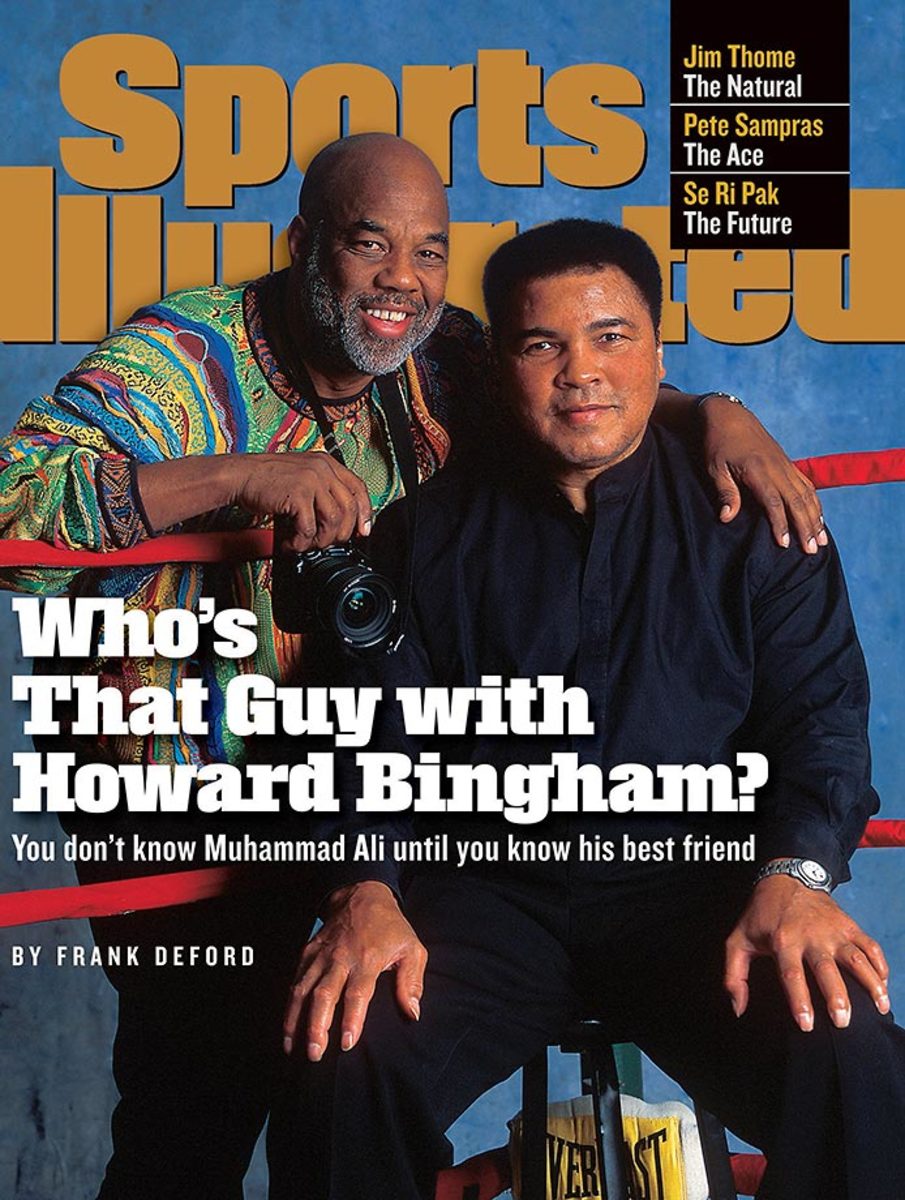
December 28, 1998
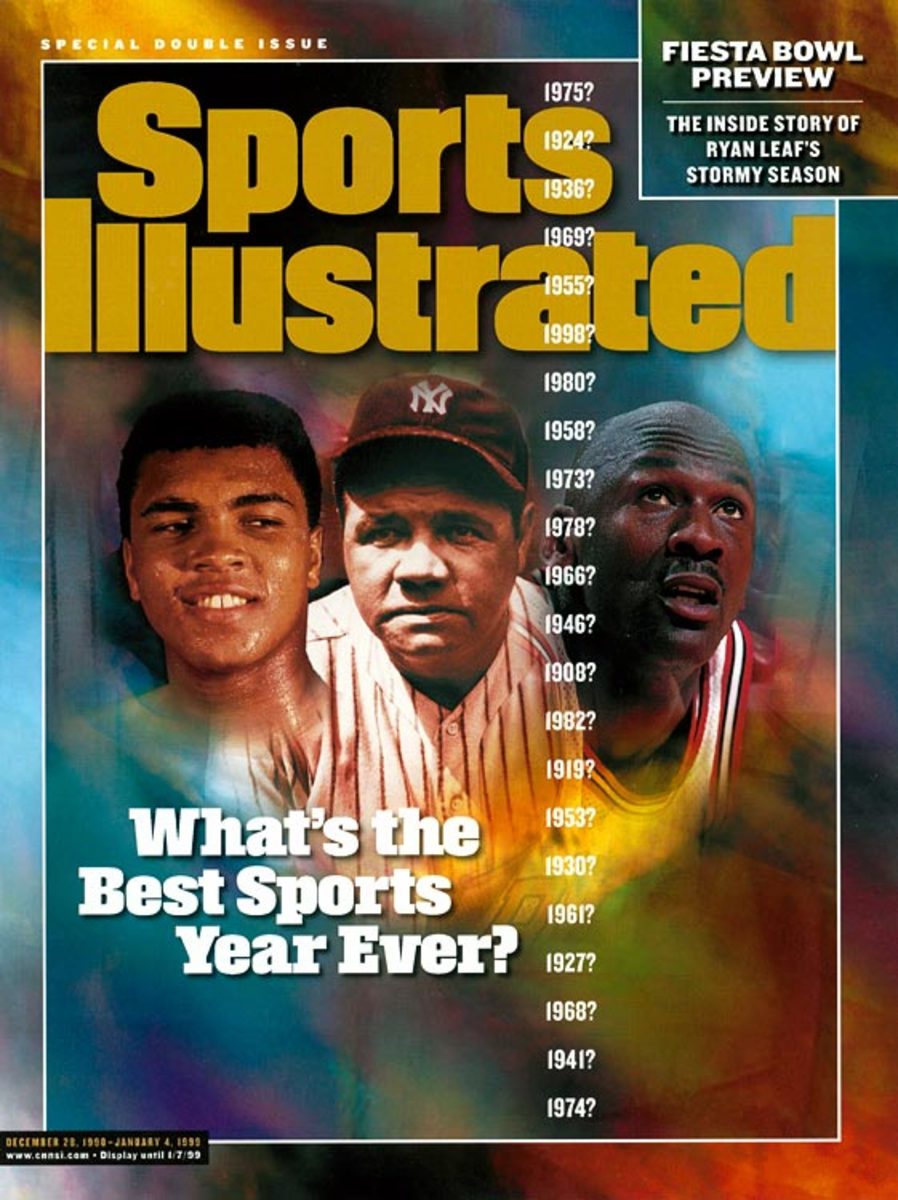
July 26, 1999
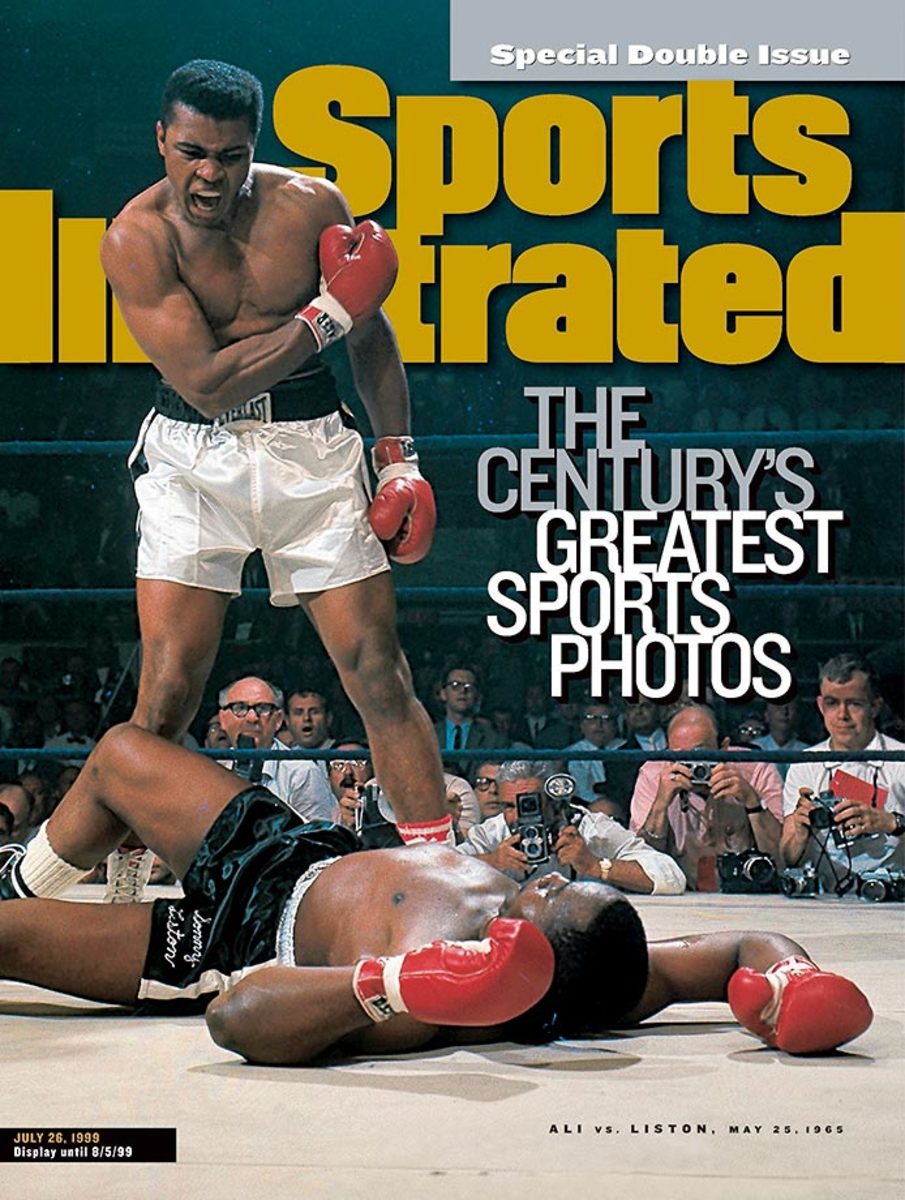
November 29, 1999
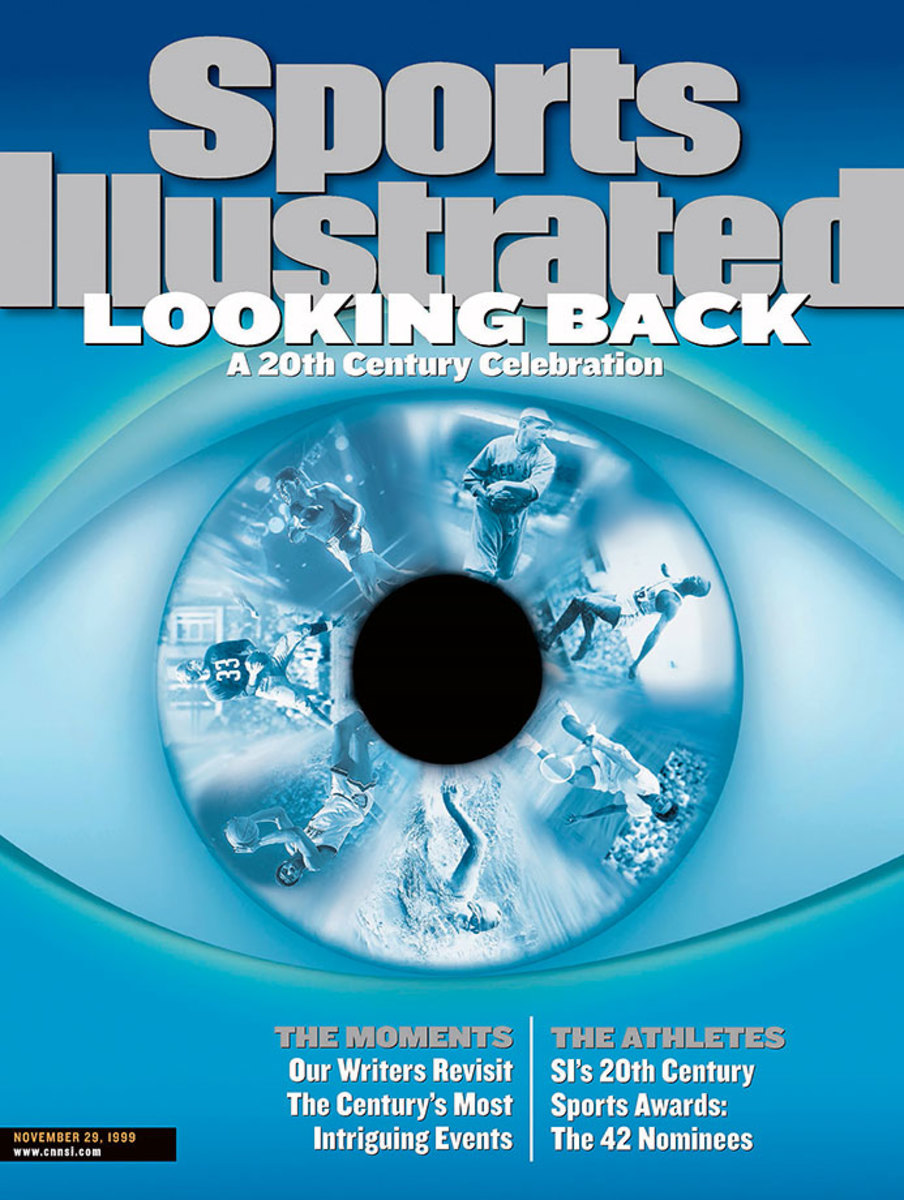
April 26, 2004
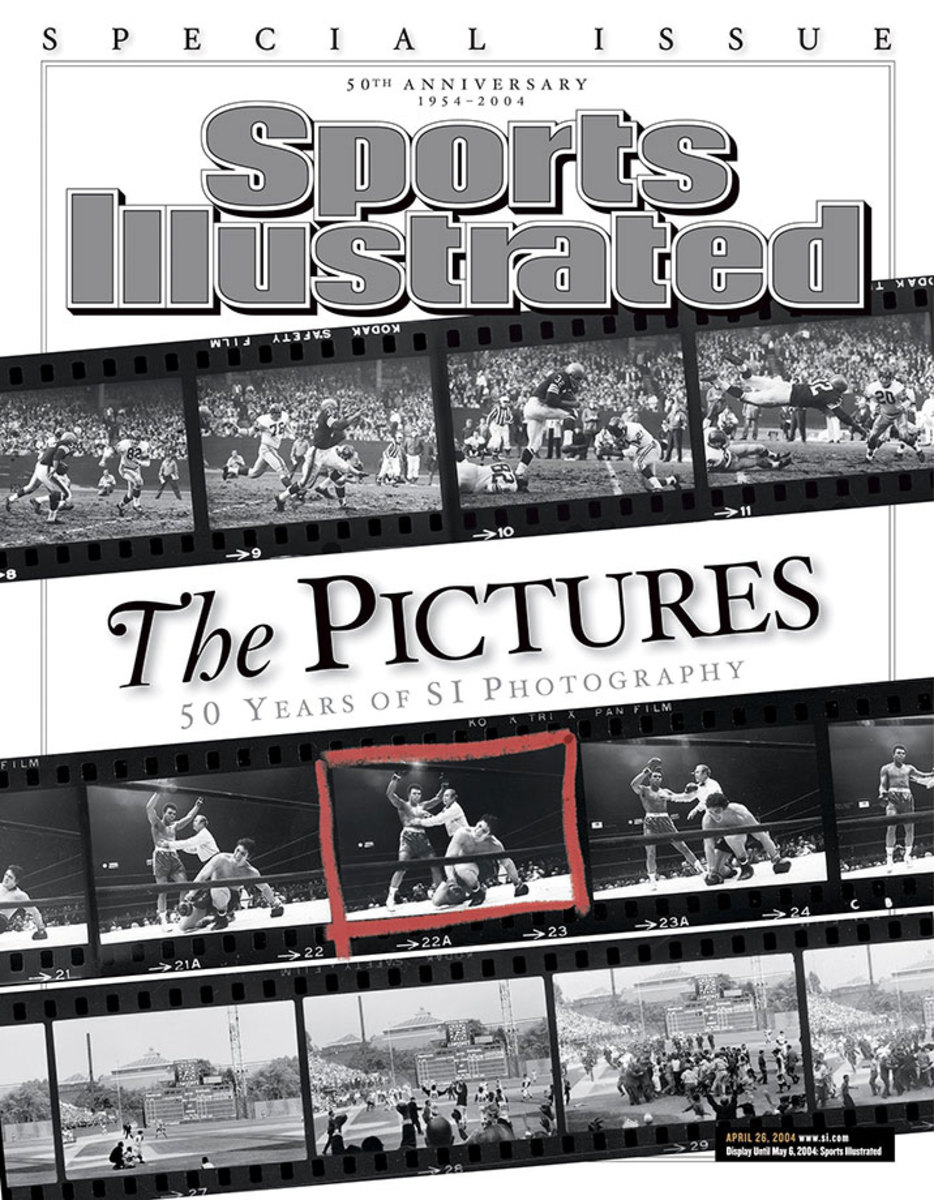
October 5, 2015
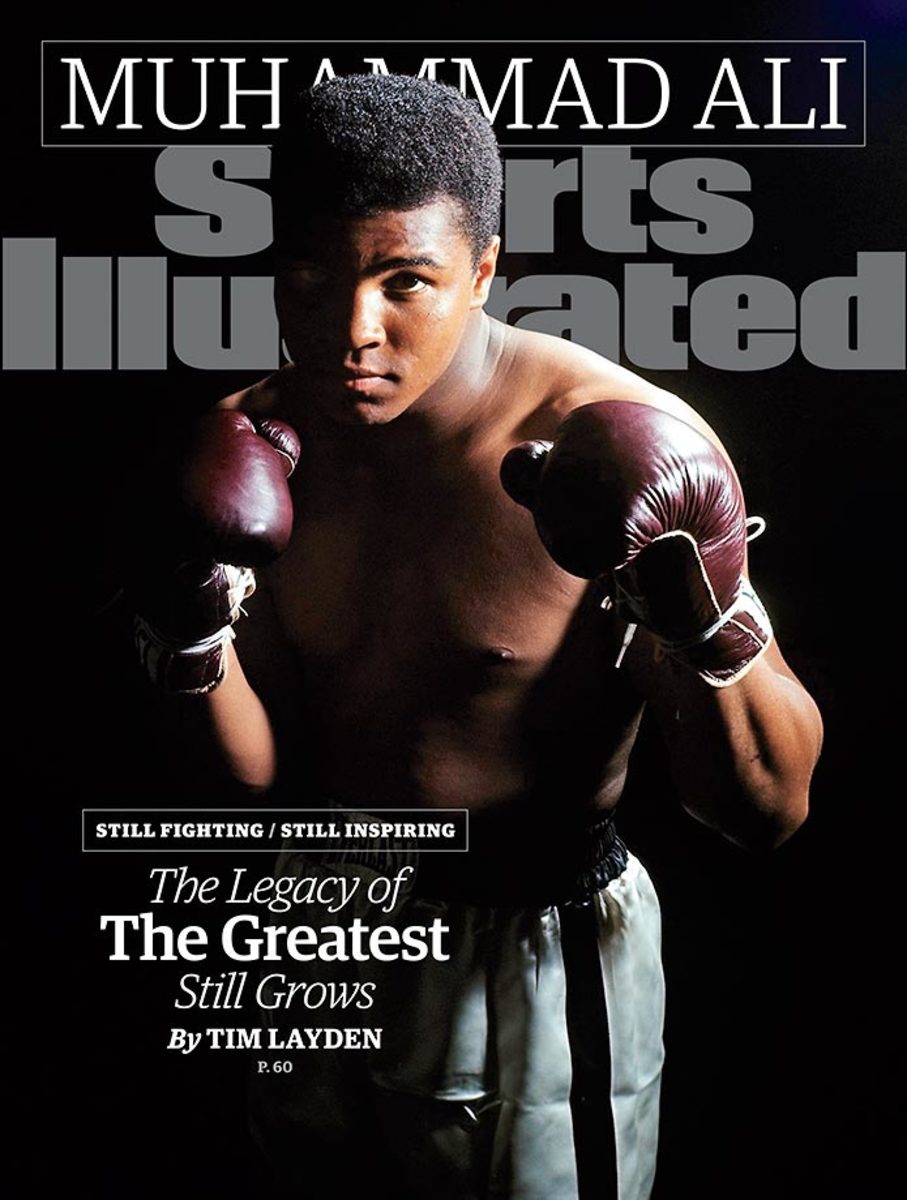
June 13, 2016
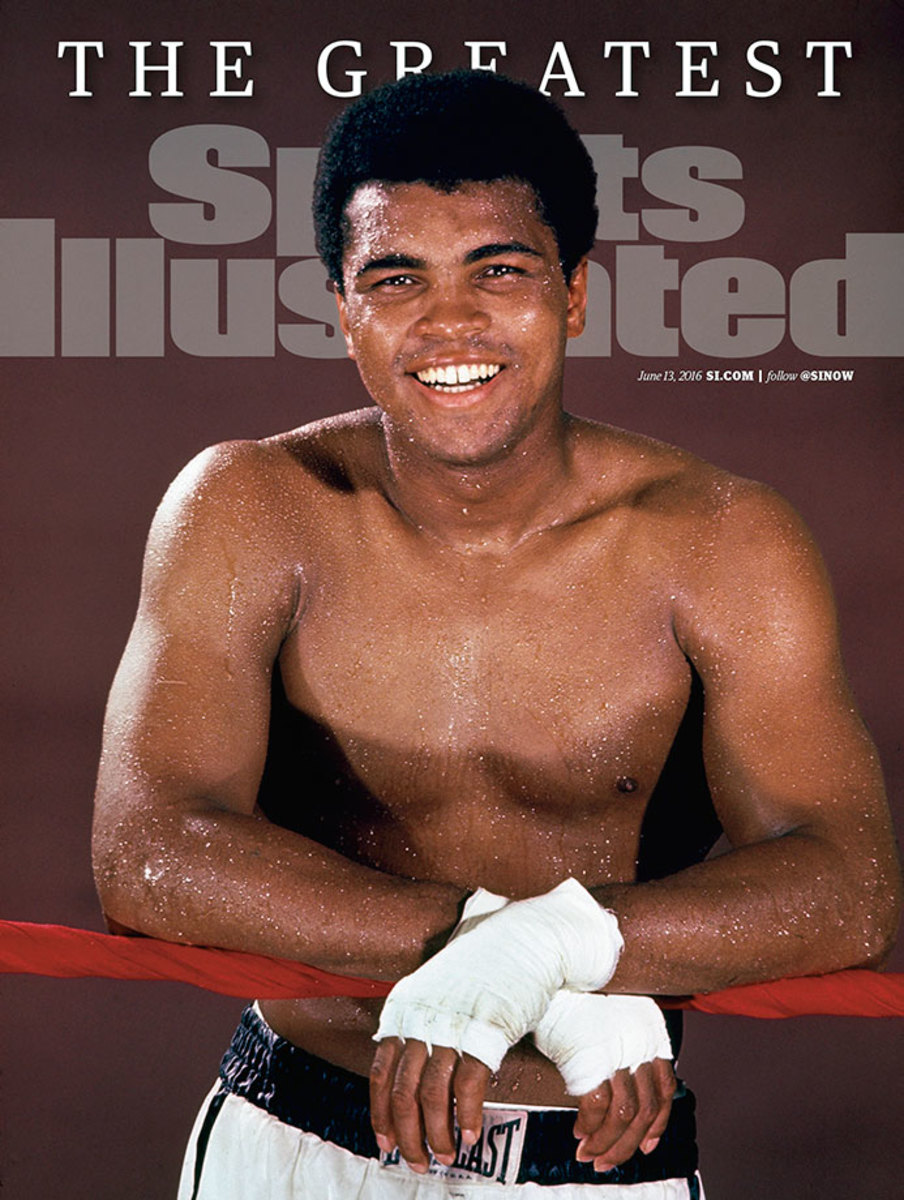
*****
The Vietnam War changed all that. Ali, who was dyslexic and a poor reader, had tested well below the mental competency requirements for the military draft and been classified 1-Y. But when he was reclassified and slated for induction, Ali explained his objections, not just on religious grounds but also racial. “No Vietcong ever called me nigger,” he explained. And, perhaps more famously: “I ain’t got no quarrel with them Vietcong.”
Bob Arum, who got his start as a promoter with Ali in 1965, was horrified. “Mortified, actually,” he said. “You have to understand, this was light-years before any protest. This wasn’t Jane Fonda spouting off or kids burning draft cards. This, at the time, was a simply inconceivable position.”
Ali had already stirred up closet resentments, on account of his race and his religion. But here was an objection—the man was unpatriotic!—that could be freely expressed by all his detractors. “We were pariahs,” said Arum.
At first Ali was forced to defend his title outside the country, returning from bouts in Toronto and London and Frankfurt to make tentative stands in Houston. But even by 1967 the logic or nobility of his objection to the war remained unpopular. Not to mention illegal. He was sentenced to five years in prison for refusing the draft (a decision overturned by the Supreme Court four years later) and, though appeals kept him free, was essentially drummed from boxing for the next 3 1/2 years when the New York commission stripped his title. The exile robbed him of his prime but deepened his significance as a political icon. The war would not long remain popular, or even viable; Ali, as the times caught up to his convictions, was restored as a man of substance, possibly even history.
• VAULT: The Legacy: At 73, Muhammad Ali remains an inspirational force (Oct. 5, 2015)
The exile also sharpened his showmanship, offering him the opportunity (the need actually; he was soon out of money) to appear on Broadway and on game shows and to speak on college campuses. But by the time he was able to edge back into boxing (Atlanta, which had no commission, offered him his first bout back, in October 1970 against Jerry Quarry; New York and the rest of the world followed suit), he was hardly the prancing pugilist he had been at the age of 25.
If he had been interesting in exile, he now had the chance to be truly mythic in his return to the sport. He was now doubly saddled, with the baggage of his unpopular politics and the frightening reality of a comeback at age 28, when the heavyweight division had become populated by the likes of Joe Frazier, George Foreman and Ken Norton. Foregoing a tune-up, Ali fought contenders Quarry and Oscar Bonavena within six weeks, stopping both and demanding a shot at his old title by 1971.
That bout with Frazier, whose brutish left hook had left a trail of victims on his way to Ali’s stripped title, was immediately billed as the Fight of the Century, two undefeated heavyweights with equally valid claims to the championship. But it was even more than that. They offered contrast at every level: It was Ali’s boxing versus Frazier’s punching power; Ali’s showmanship versus Frazier’s stoicism; Ali’s social activism versus Frazier’s political conservatism. “The whole country was choosing up sides,” said Larry Merchant, then a columnist at the Philadelphia Daily News. “It was the red states versus the blue states.”
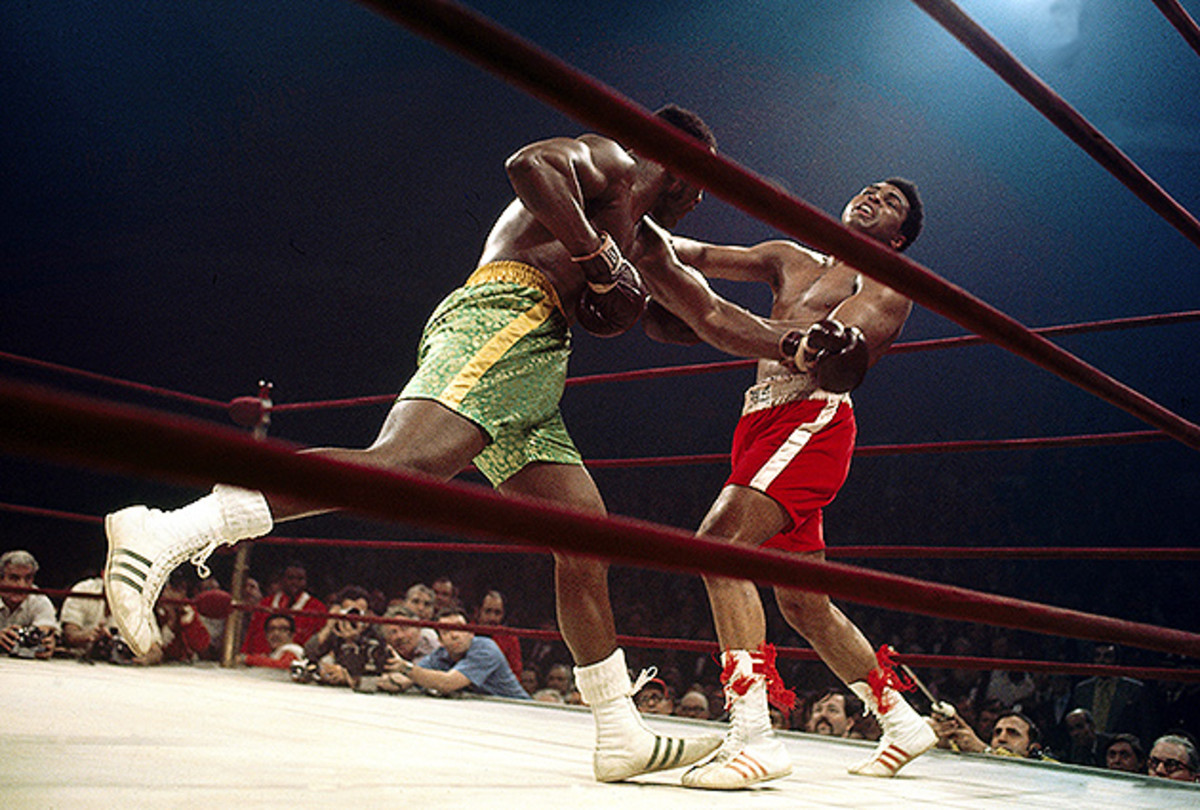
Merchant, for more than 30 years an HBO boxing analyst, has not seen such anticipation at ringside since. It was probably enough that two big men of equal skill and determination were fighting for a championship. But Ali, “a litmus test for where you stood on about 100 issues,” says Merchant, added an element of social tension to the proceedings, just by his presence. Throw in his worldwide celebrity, and the Fight of the Century became a cultural event as well. Burt Lancaster was doing the color commentary for the closed-circuit broadcast. Frank Sinatra was snapping pictures for Life magazine. Movie stars attended. Politicians. “Ursula Andress was there,” remembers Merchant. “In a silver lamé dress.”
Everybody who was in Madison Square Garden on the night of March 8, 1971, still talks about the turbo whine of excitement that preceded the bell, a visceral roar. Ali fought comparatively flat-footed, his featherweight footwork replaced with resolve, and with an iron jaw. Though Frazier’s face would soon take on the aspects of a patchwork quilt, it was Ali’s swollen jaw that was the most telling evidence in Frazier’s win by decision. A left hook in the 11th nearly sent Ali into the celebrities’ laps. Another in the 15th dropped him.
The fact that Frazier, the winner, spent three weeks in the hospital and that Ali, the loser, was soon making the talk show rounds did not really alter the new heavyweight landscape. What did were losses by the principals before a rematch could be arranged. Frazier was nearly decapitated by the sullen and forbidding George Foreman in January 1973, and Ali decisioned by Ken Norton two months later.
These circumstances did not afford the same drama to Ali-Frazier II, again in the Garden (which Ali won, fighting more cleverly than bravely this time), but did create immense anticipation for Ali’s next title charge, against Foreman in Zaire on Oct. 30, 1974. By now Ali, though still mightily poetic outside the ring, was no longer an artist within. At 32, fully a decade after he first won the title from Liston, he had to rely on his resolve and resiliency—sadly, his jaw—to get through fights now. This would hardly do against a 25-year-old knockout machine like Foreman. Survival was about all that could be hoped for.
Beyond the bout, the whole occasion became terribly important to Ali; seeing Africa for the first time was truly an eye-opener for him. The trip was the basis for his development as a world citizen, when he first recognized his ability to gather different cultures about him. But he was a natural that way. It wasn’t long before he landed that the crowds were chanting, “Ali, bomaye!” (Ali, kill him!)
Ali seemed incapable of killing Foreman, though, and indeed appeared in mortal peril himself. Yet he invented a stunning strategy, which demanded he accept Foreman’s heavy hands as he sagged back into the ropes. Later christened rope-a-dope, the game-plan at first appeared suicidal but then, as Foreman grew arm weary, brilliant. Although Ali suffered the kind of punishment that can take years to fully manifest itself, the tactic did result in an amazing victory when he took Foreman out in the eighth round.
This set up the Thrilla in Manila on Oct. 1, 1975, the last fight in the Ali-Frazier trilogy, the one that damaged both men beyond repair. It was another brutal meeting, in which each fighter’s skills were revealed as thin veneers for a horrifying toughness beneath; each was willing to accept near-fatal blows in the hope of winning a terrifying war of attrition. Ali, who later recalled the bout as “the closest thing to death I know,” prevailed when Frazier’s trainer Eddie Futch refused to let him come out for the 15th round.
*****
Ali should have retired; the third Frazier fight really was the capstone of his career. But he fought on, nearly losing again to Norton, splitting matches with Leon Spinks, losing to former sparring partner Larry Holmes and, finally, a month before his 40th birthday, to Trevor Berbick in the Bahamas. Each of these largely unnecessary fights, while leaving his legacy intact (so forgiving is memory), deepened the devastation of pugilistic parkinsonism, an artifact of his competitive drive.
The disease, even if it was a predictable result of so much punishment in the ring, was a cruel coda to a career built on the beautification of an ugly sport. Ali, properly medicated, could still occasionally muster that old playfulness, produce an on-cue shuffle, recall a rhyme. But his public persona became, mostly, a steady and horrible deterioration. The disease robbed him of his trademark mugging; his face was rigid and expressionless. And his physical magnificence—indeed, the ability to float like a butterfly and sting like a bee—was now betrayed in the worst possible way. He was unsteady, he trembled violently, he moved slowly. In 1996, when Ali was the surprise choice to light the Olympic flame, the full extent of his disability became apparent to a world audience. Making no concession to the disease, Ali painstakingly climbed the stadium steps and with terribly shaking hands held the torch aloft and waved it to the crowd.
Gallery: Ali's Sports Illustrated Covers
Muhammad Ali's SI Covers
June 10, 1963

February 24, 1964

March 9, 1964

November 16, 1964

May 24, 1965

June 7, 1965

November 22, 1965

April 11, 1966

February 6, 1967

July 10, 1967

May 5, 1969

March 1, 1971

March 15, 1971

July 26, 1971

April 23, 1973

February 4, 1974

October 28, 1974

November 11, 1974

December 23, 1974

September 15, 1975

October 13, 1975

March 1, 1976

October 10, 1977

September 25, 1978

April 14, 1980

September 29, 1980

October 13, 1980

April 25, 1988

November 15, 1989

January 13, 1992

September 19, 1994

September 30, 1996

July 13, 1998

December 28, 1998

July 26, 1999

November 29, 1999

April 26, 2004

October 5, 2015

June 13, 2016

Yet Ali was never bitter, nor did he recognize irony, or even tragedy, in the loss of gifts that had been so central to his being. Instead, he bent himself to a new purpose, which was simply humanizing the rest of the world. A born ambassador, he now shrewdly used his infirmity in delivering his message; formerly fierce and admired, he was now destroyed and beloved. “They thought I was Superman,” he said in 1988. “Now they can say, ‘He’s human, like us.’ ”
His retirement was devoted to a variety of enterprises, most of them noble but some less so, the odd celebrity-for-hire gigs that could be uncomfortable to watch. At one point he was traveling as many as 275 days a year, making as much as $200,000 for a public appearance. His itineraries were ferocious as he accepted honorary degrees, delivered letters on world peace, testified before Congress on Parkinson’s research and appeared (in successive years) at both the Indy 500 and in Kabul. He became central to legislation in his sport when Senator John McCain introduced the Muhammad Ali Boxing Reform Act. Passed in 2000, it protects fighters from predatory managers and one-sided contracts.
At the same time he was able to relax in his celebrity, to enjoy a life of missionary work and statesmanship—even to accept the love of enemies, converted by that persistent pursuit of fun. Foreman, who had been emotionally eviscerated by the loss to Ali, and who said he spent much of the following decade “hating that guy,” later found himself paired with him on a small-scale old-timers’ tour. In a reflex that only Ali could inspire, Foreman discovered himself adjusting the man’s coat before the appearance. Ali glanced back, surprised. “You really are pretty,” Foreman said, at long last laughing.
In later years, for all the appearances he made, Ali was mostly mute, perhaps simply resigned to accepting the machinations of others. Behind this stony and implacable exterior, his glee or his ambition or even his easy grace was not immediately apparent. Though, really, for anyone who was alive during Ali’s extravagantly orchestrated life of hurly-burly—we really did have to laugh, didn’t we?—the spirit beneath was never in doubt. You could always see that twinkle in his eye.
